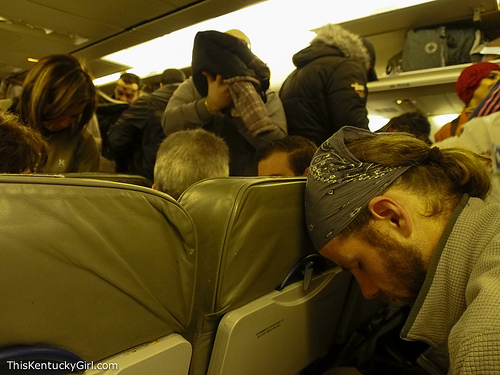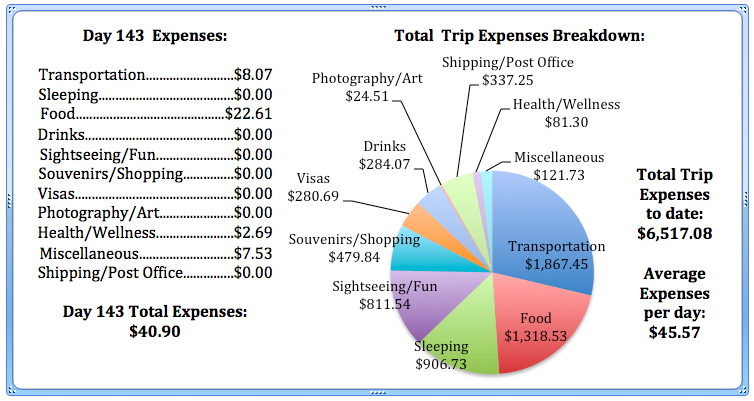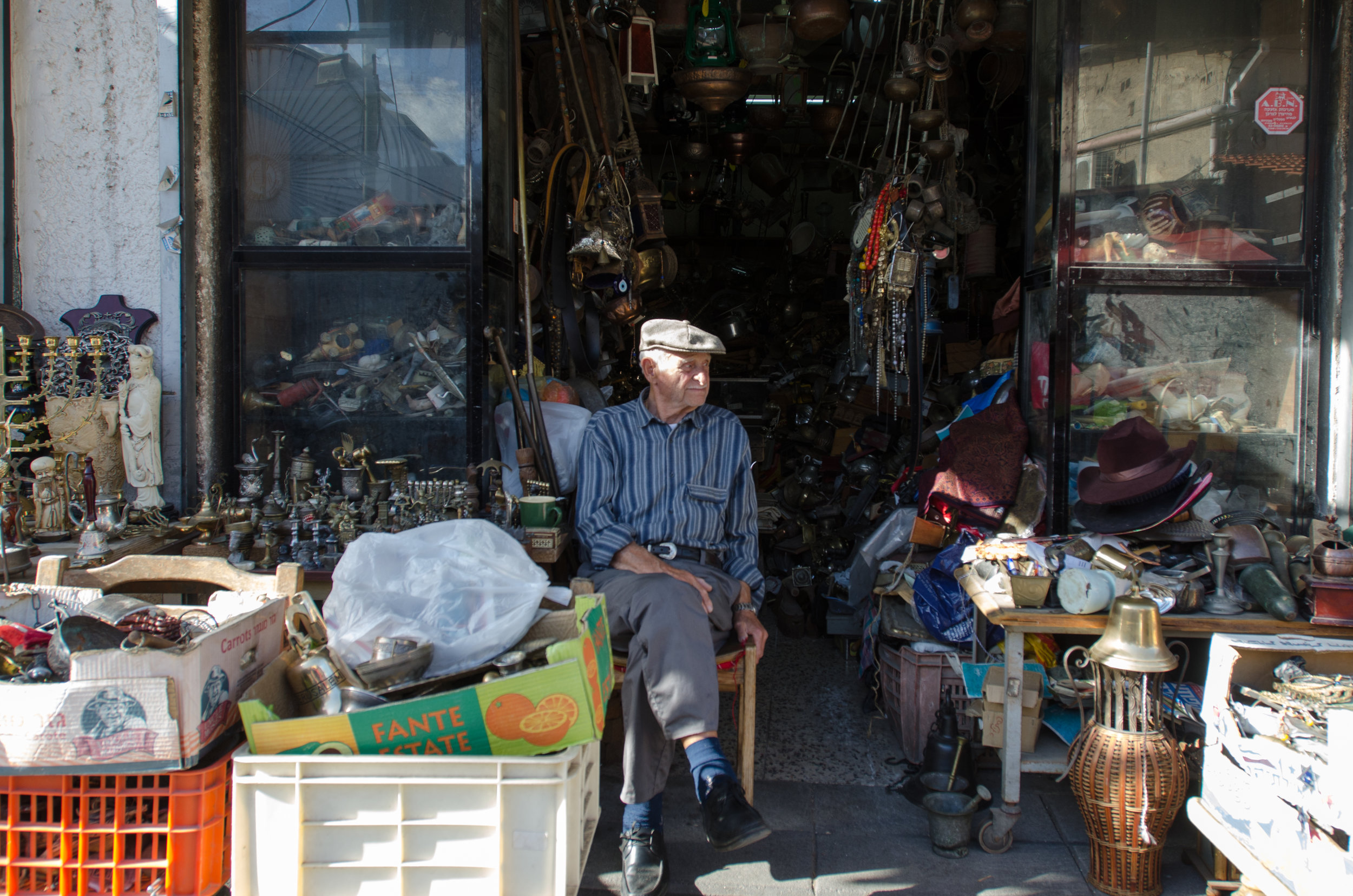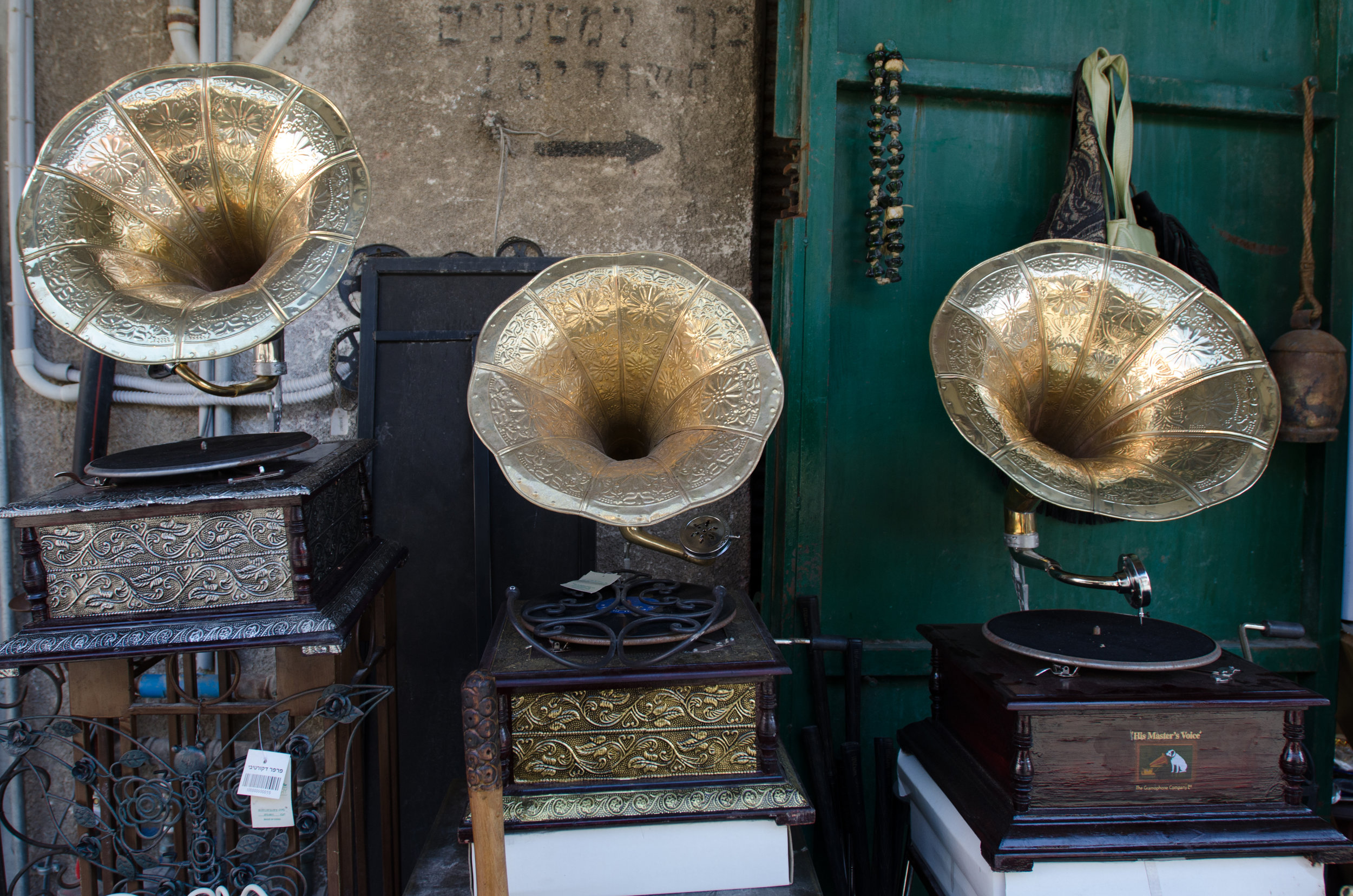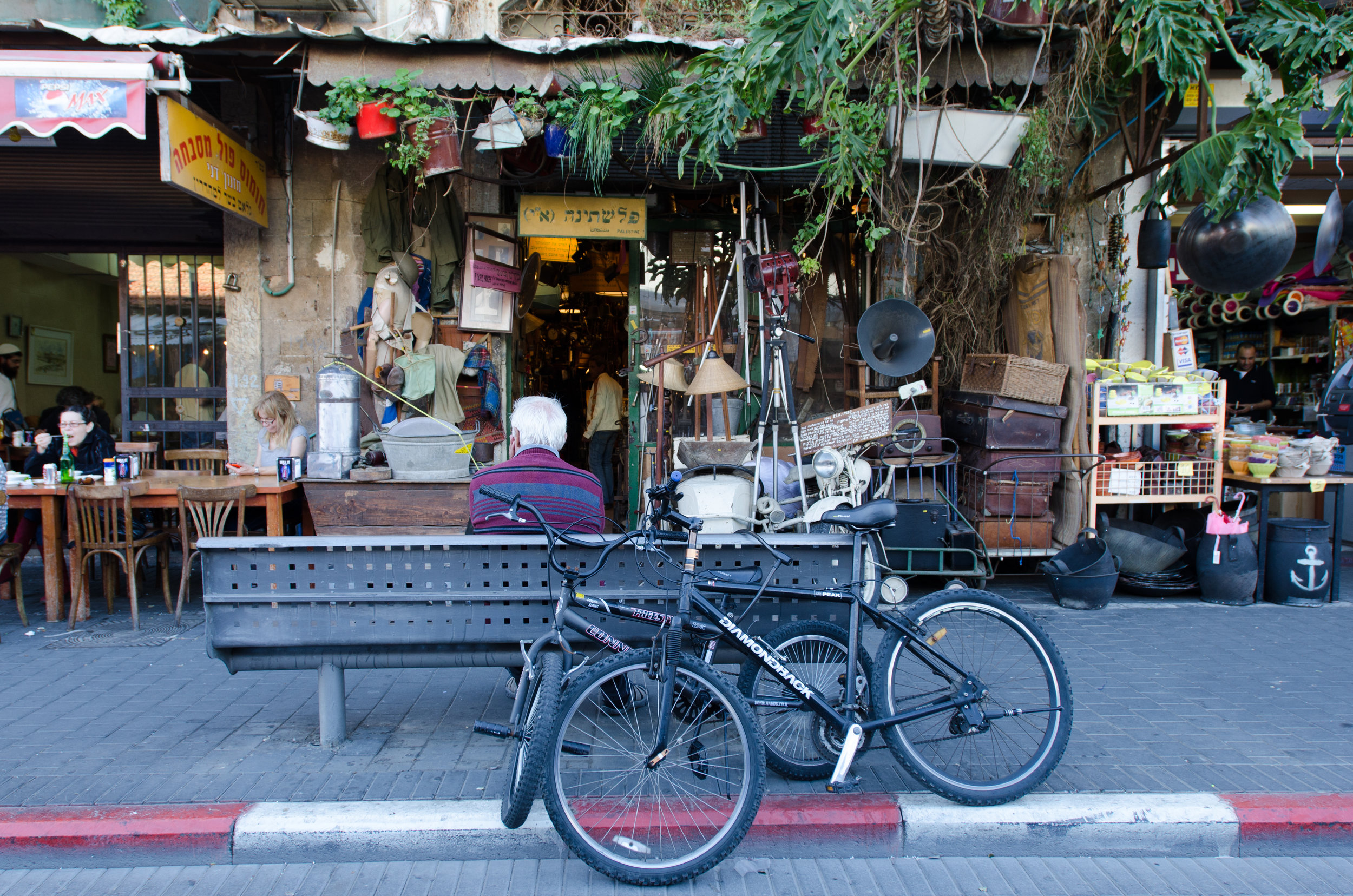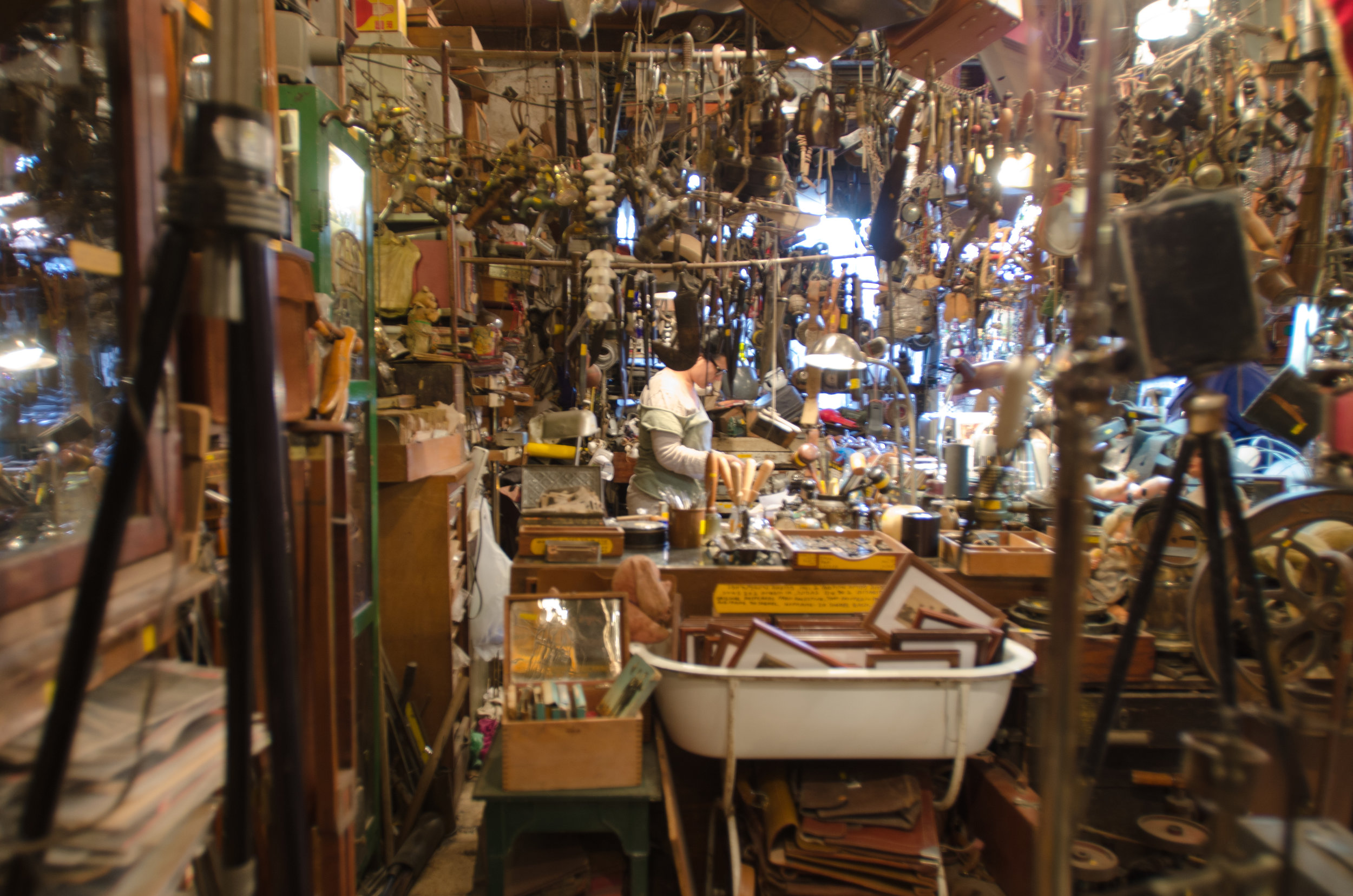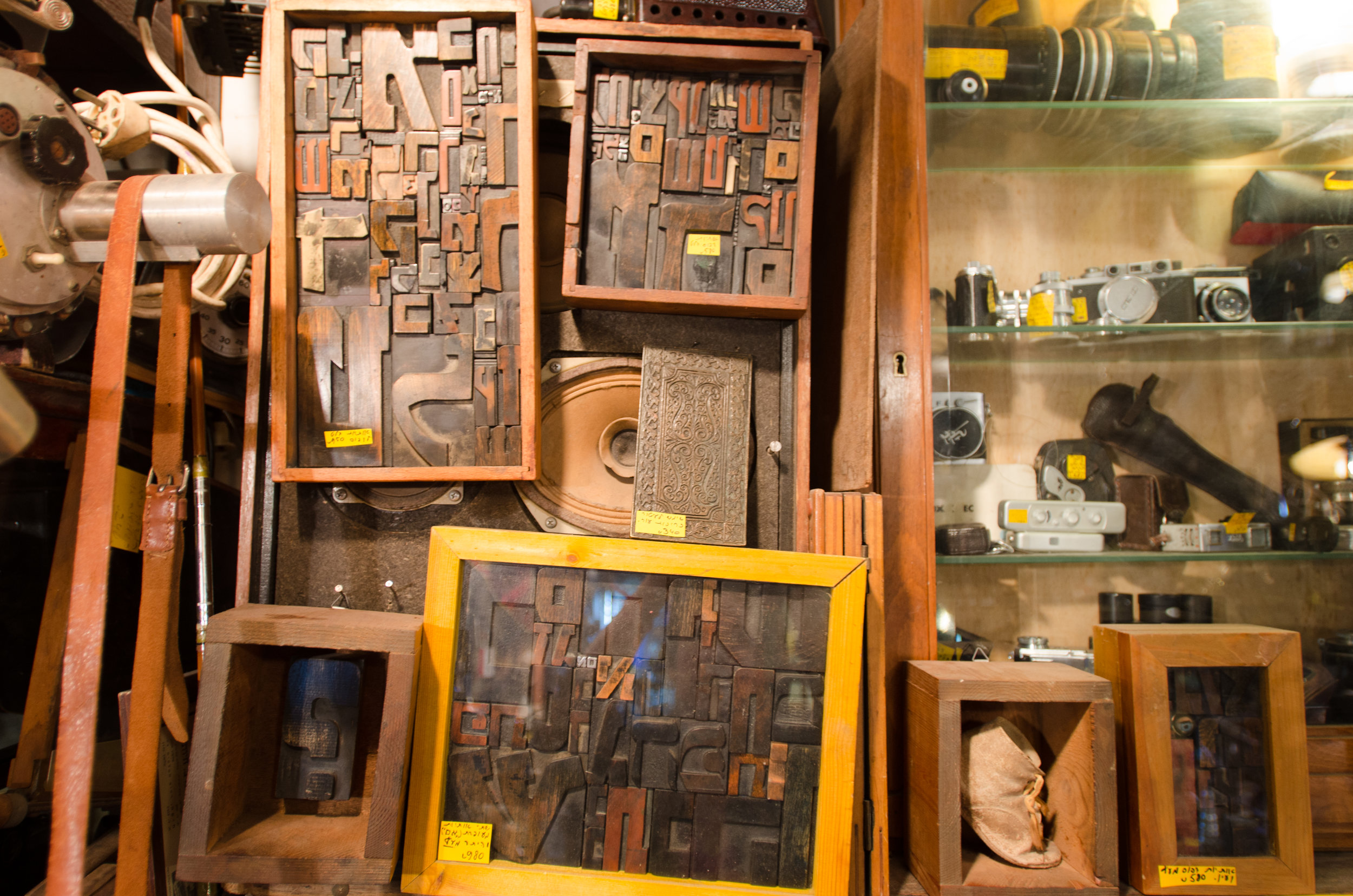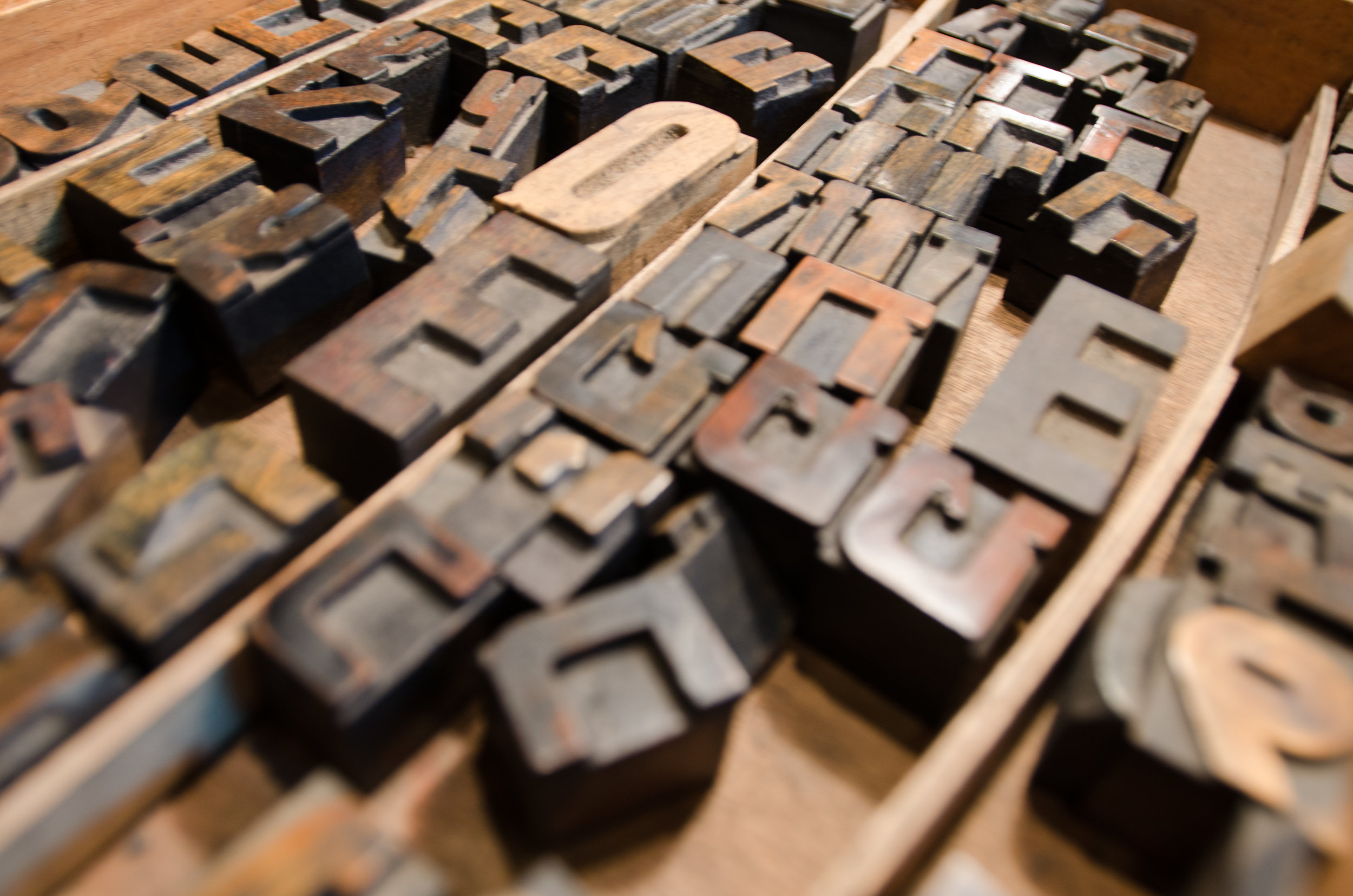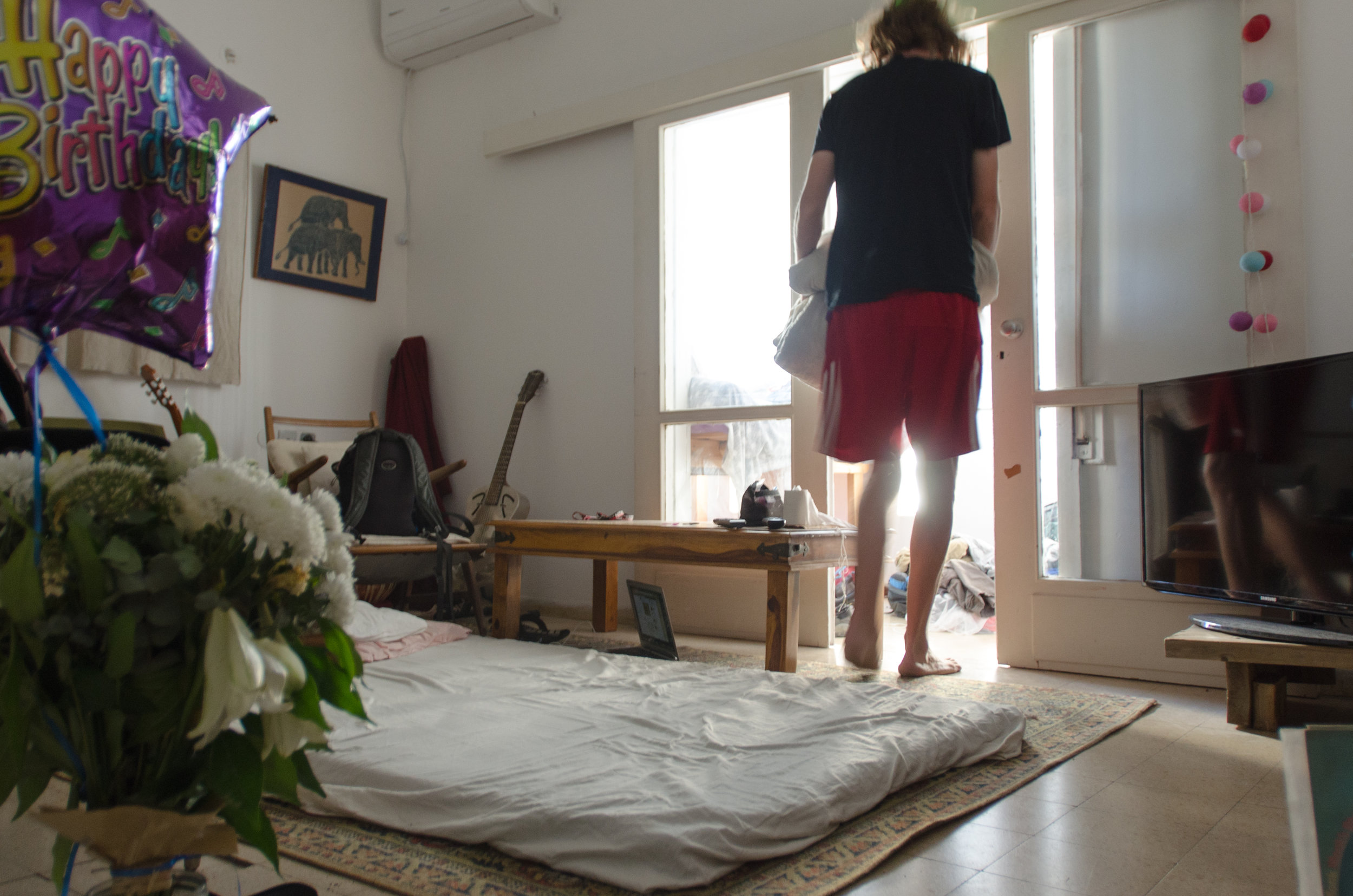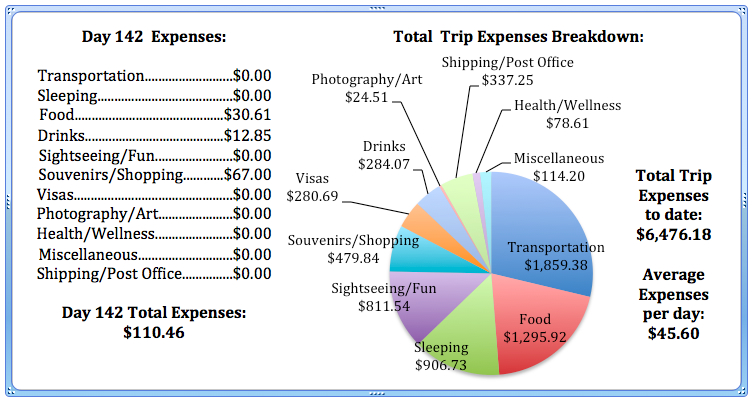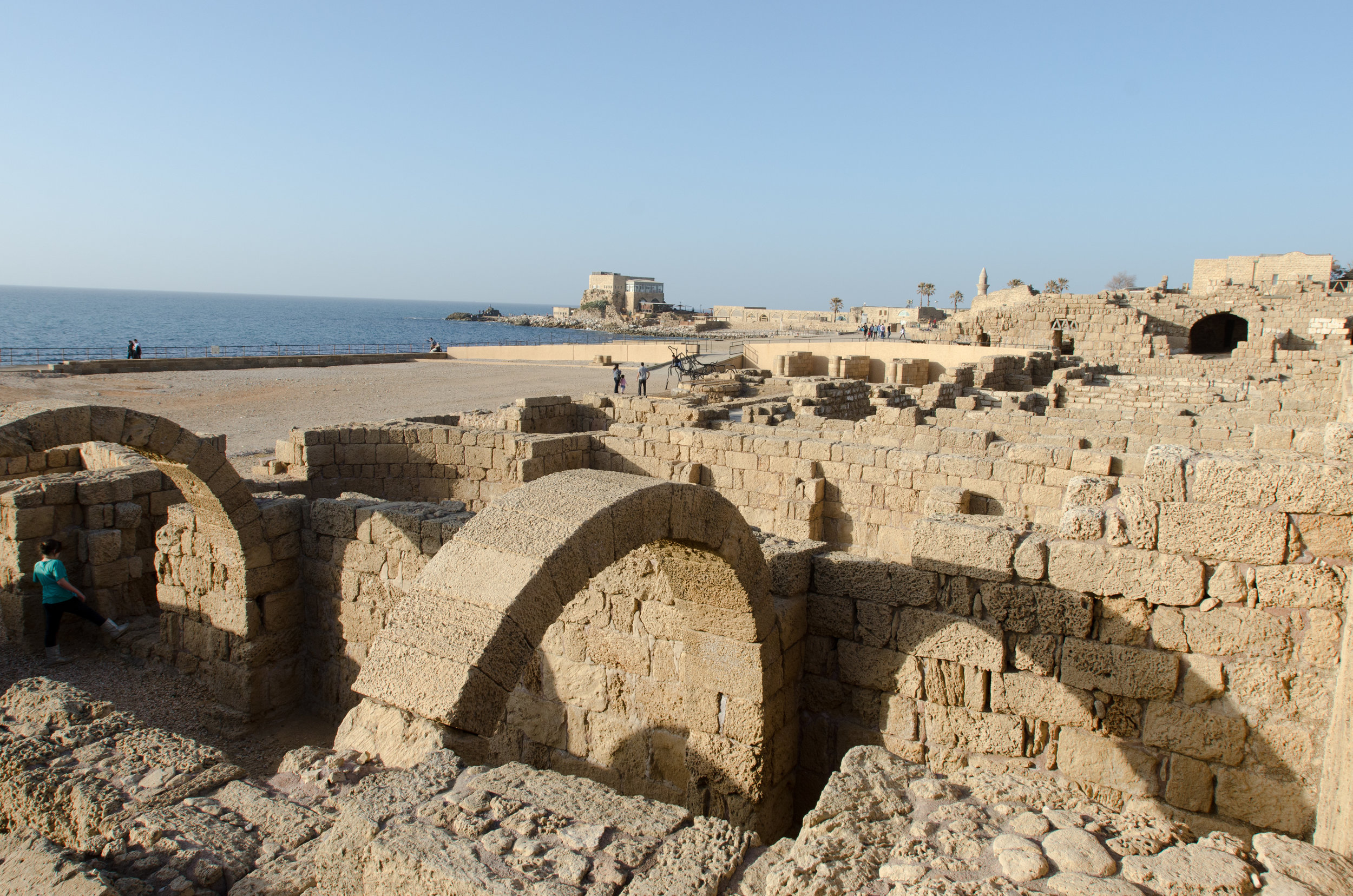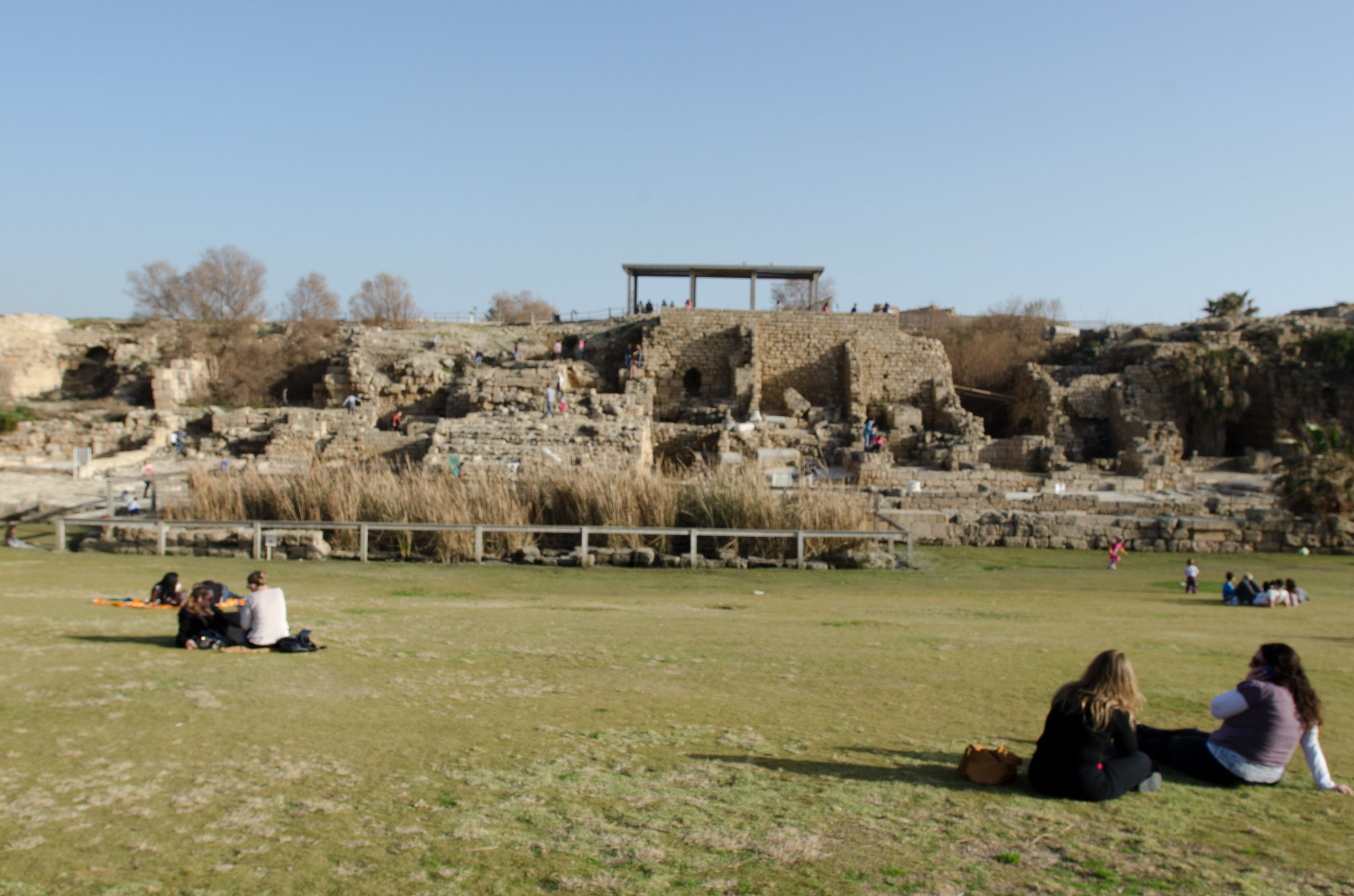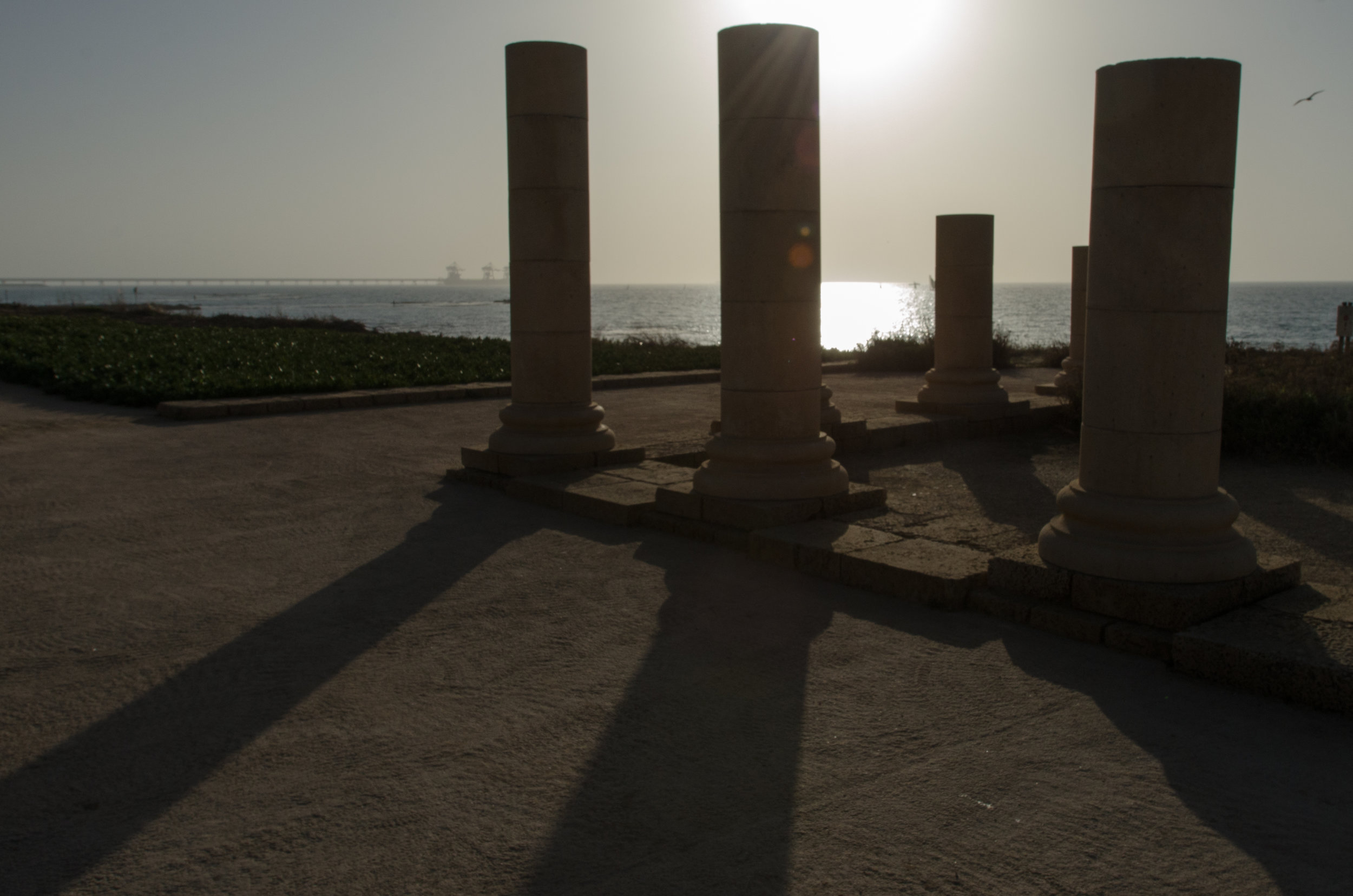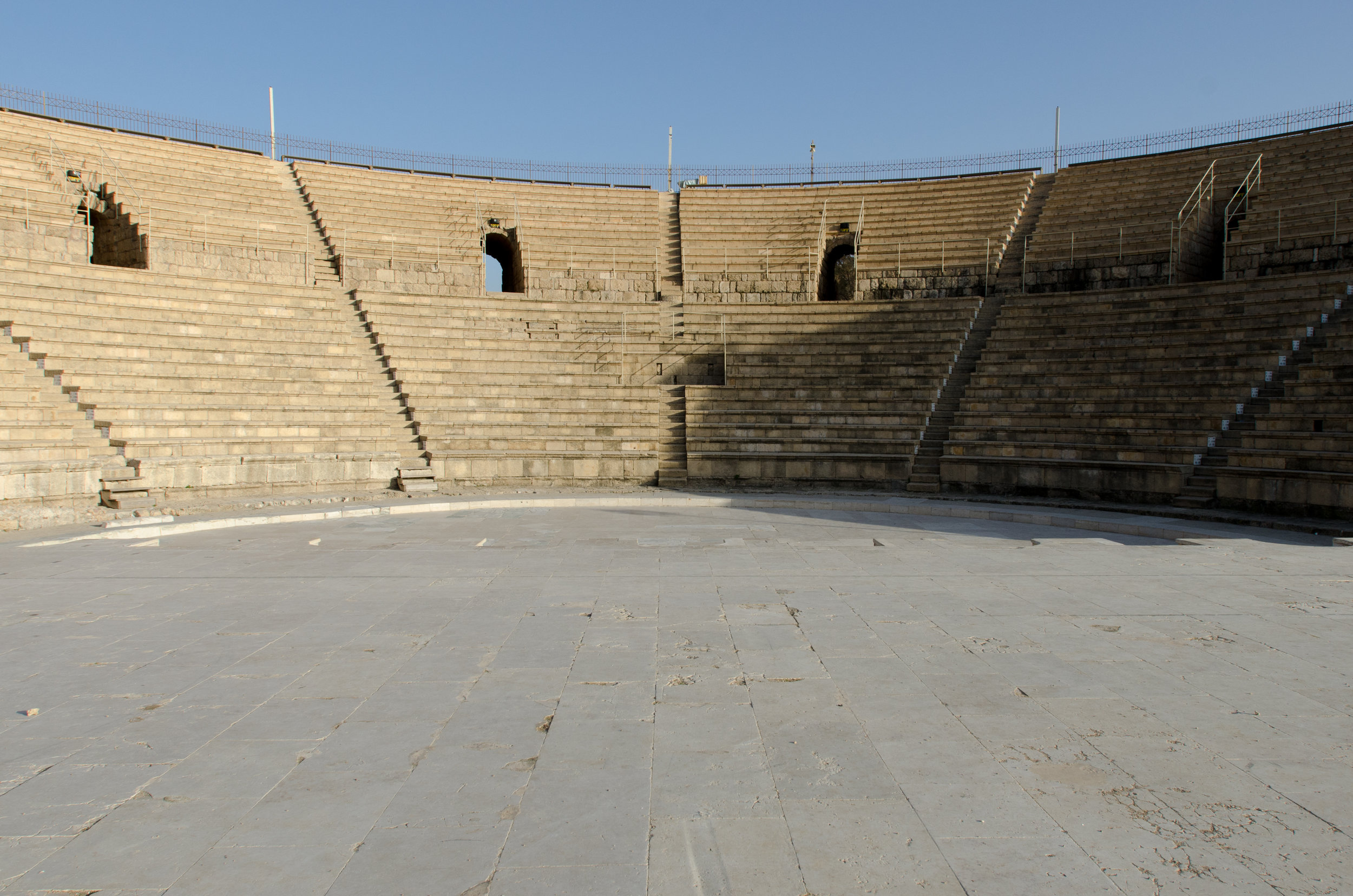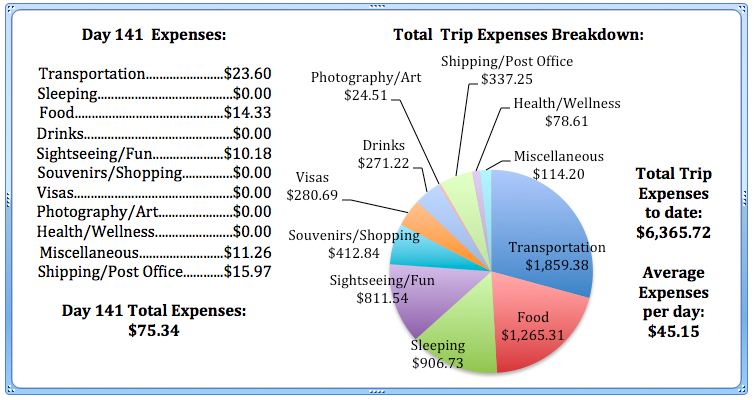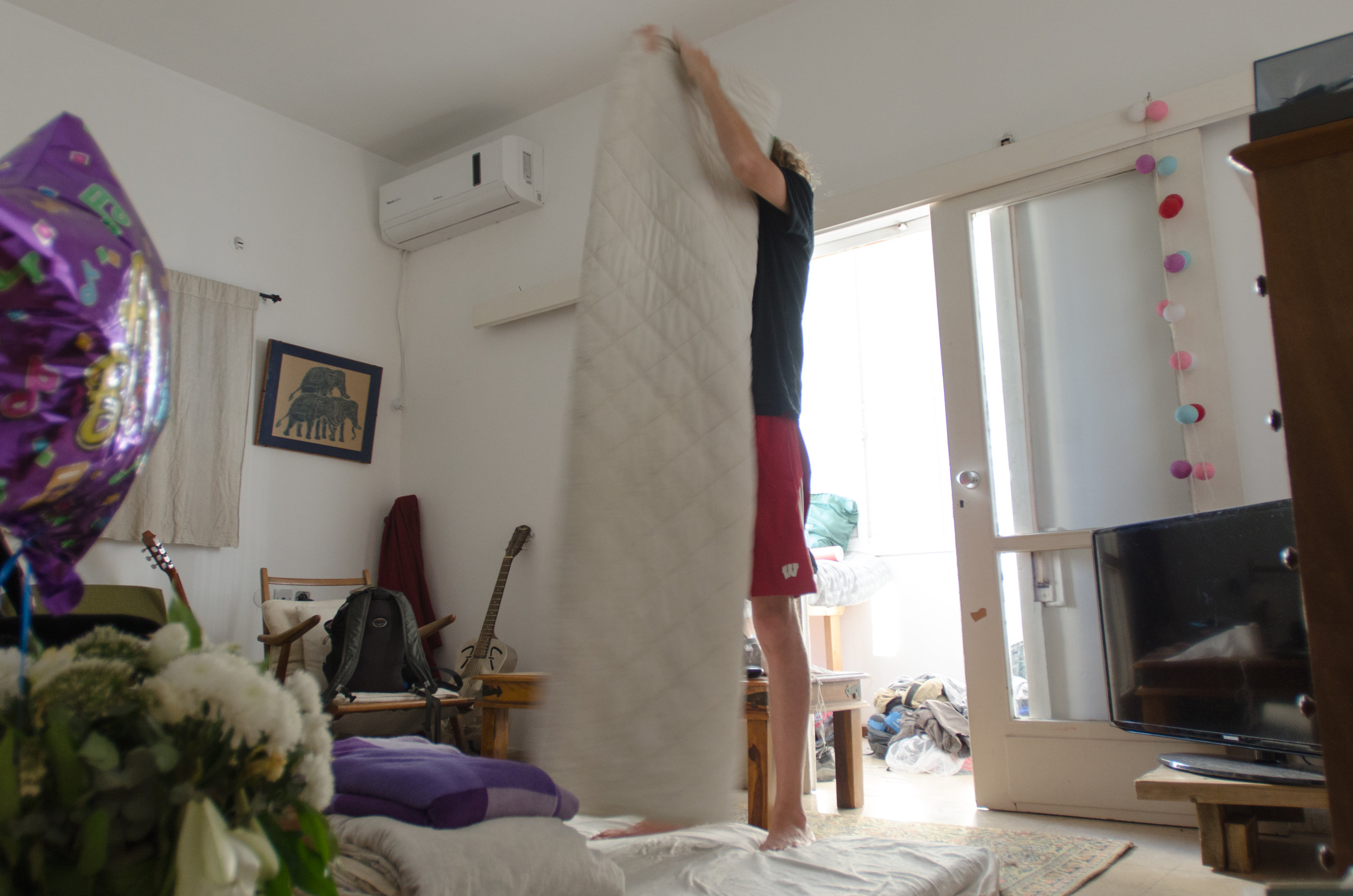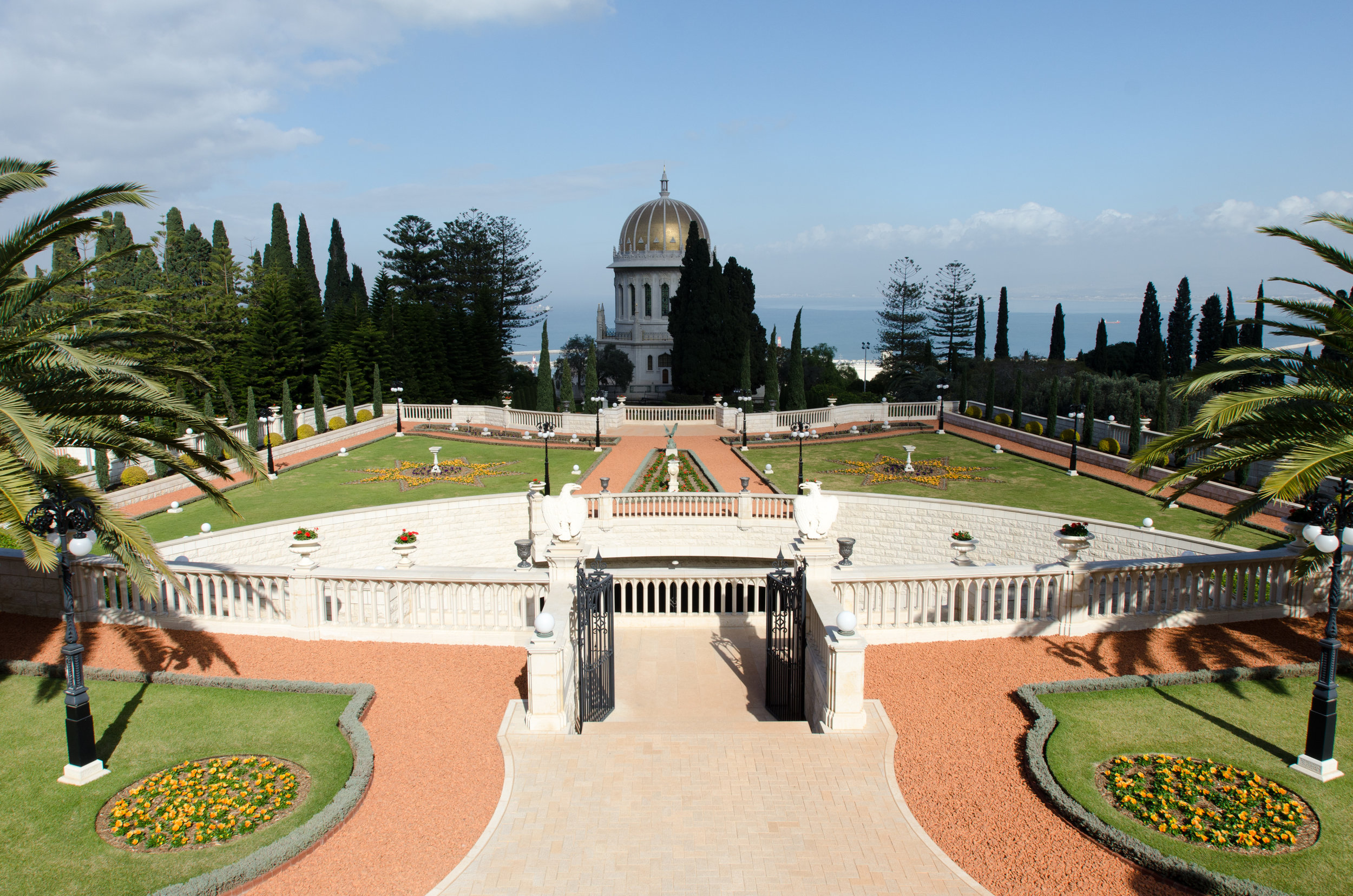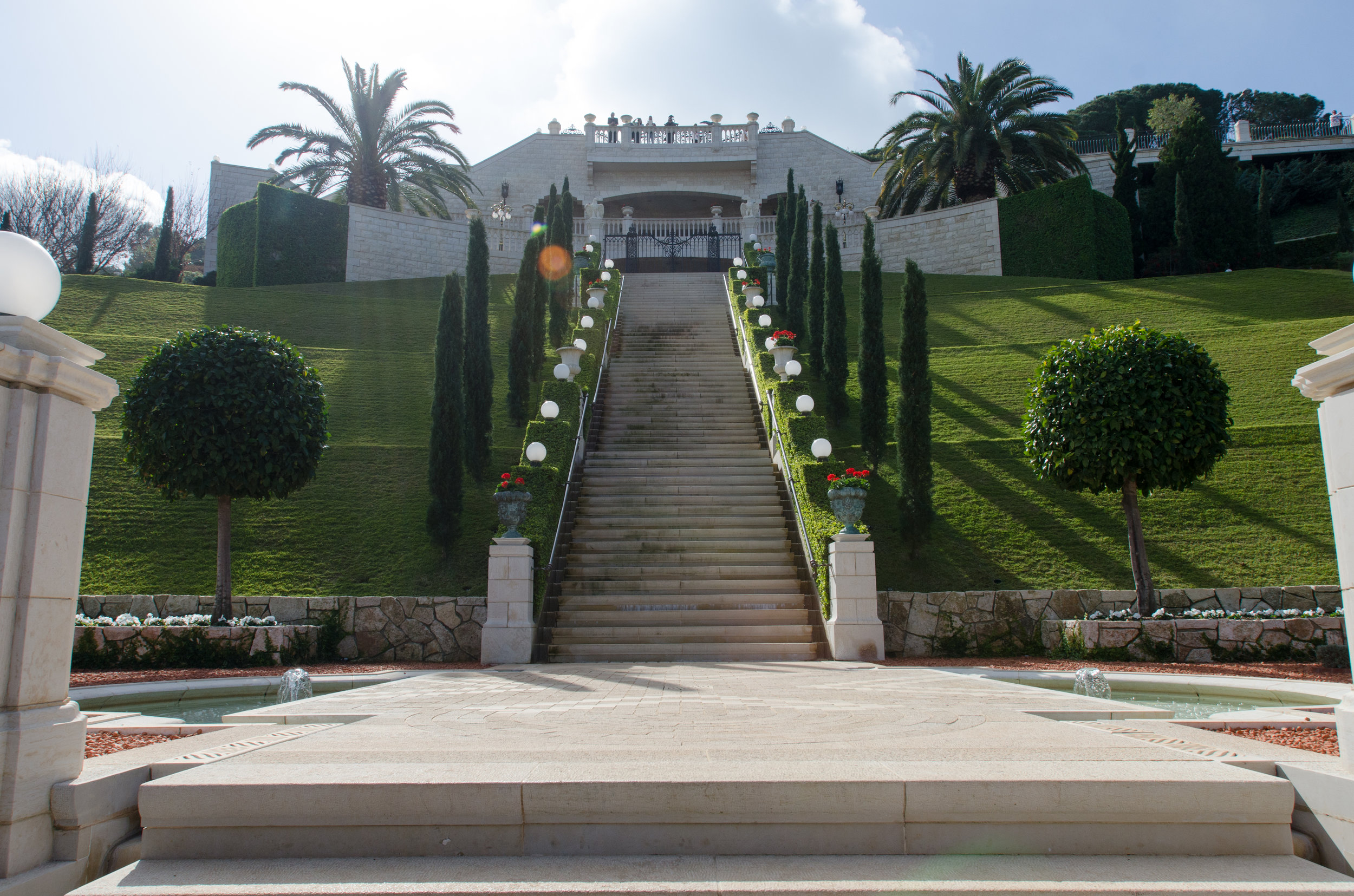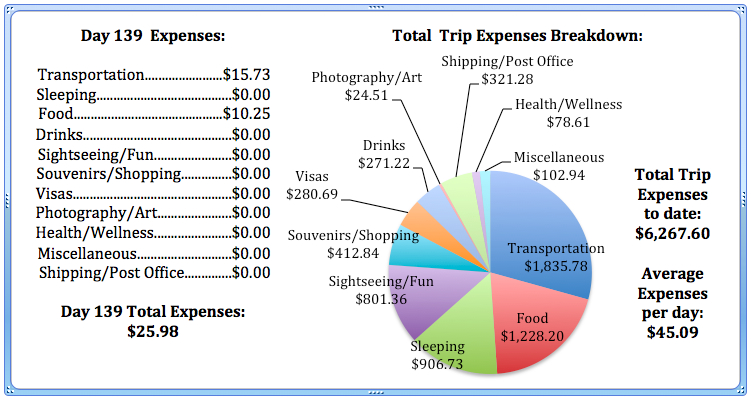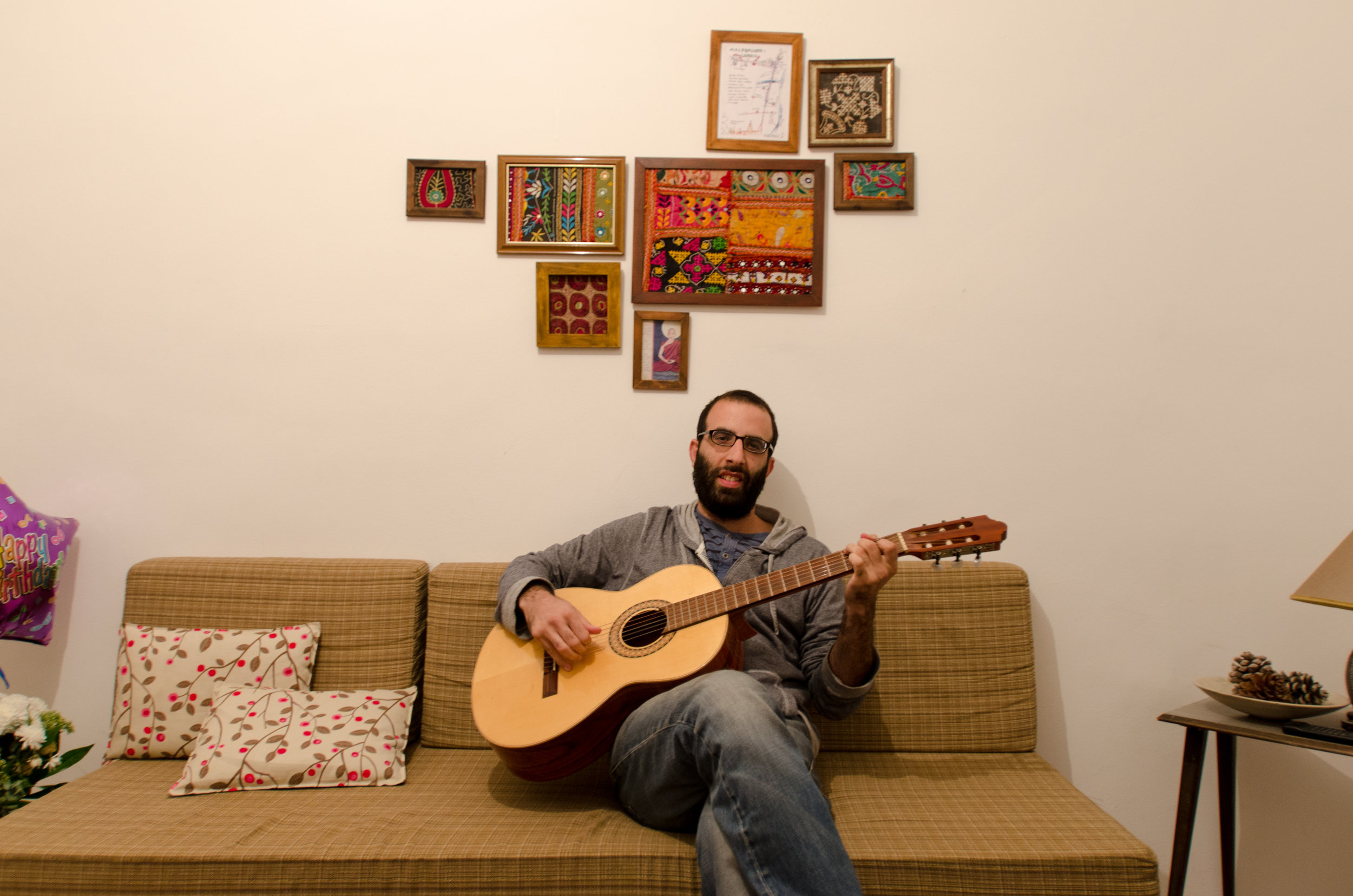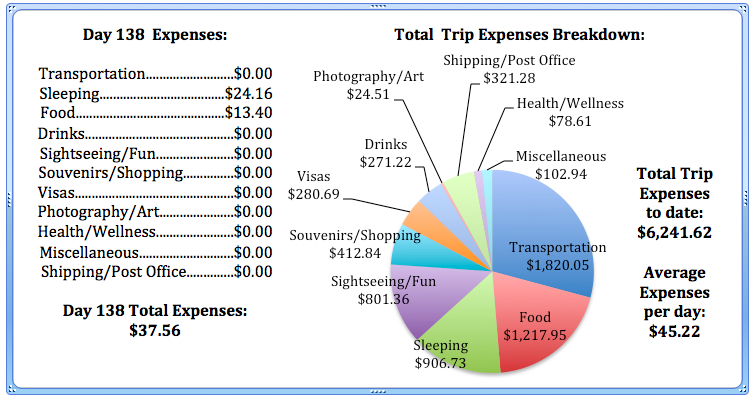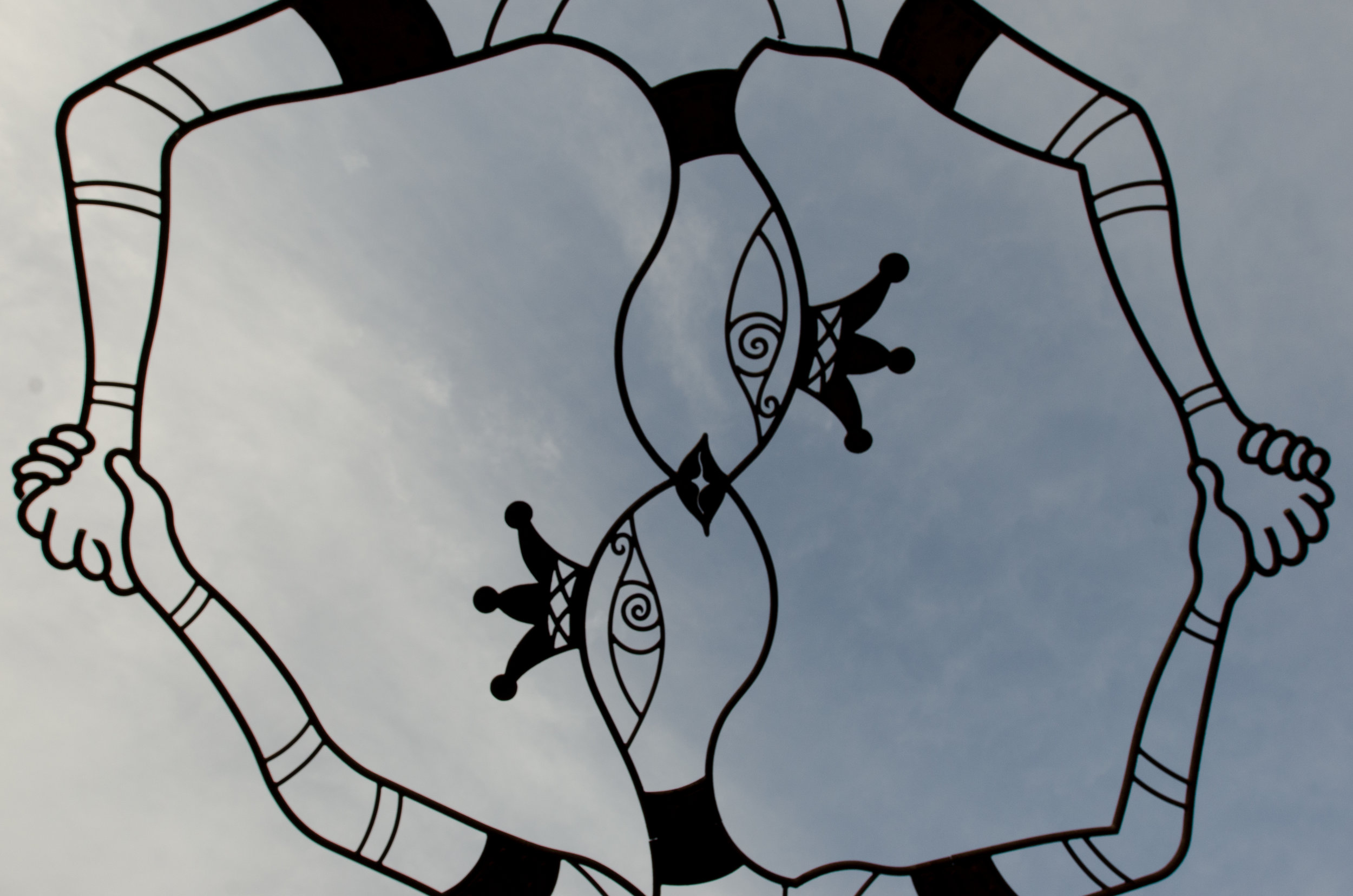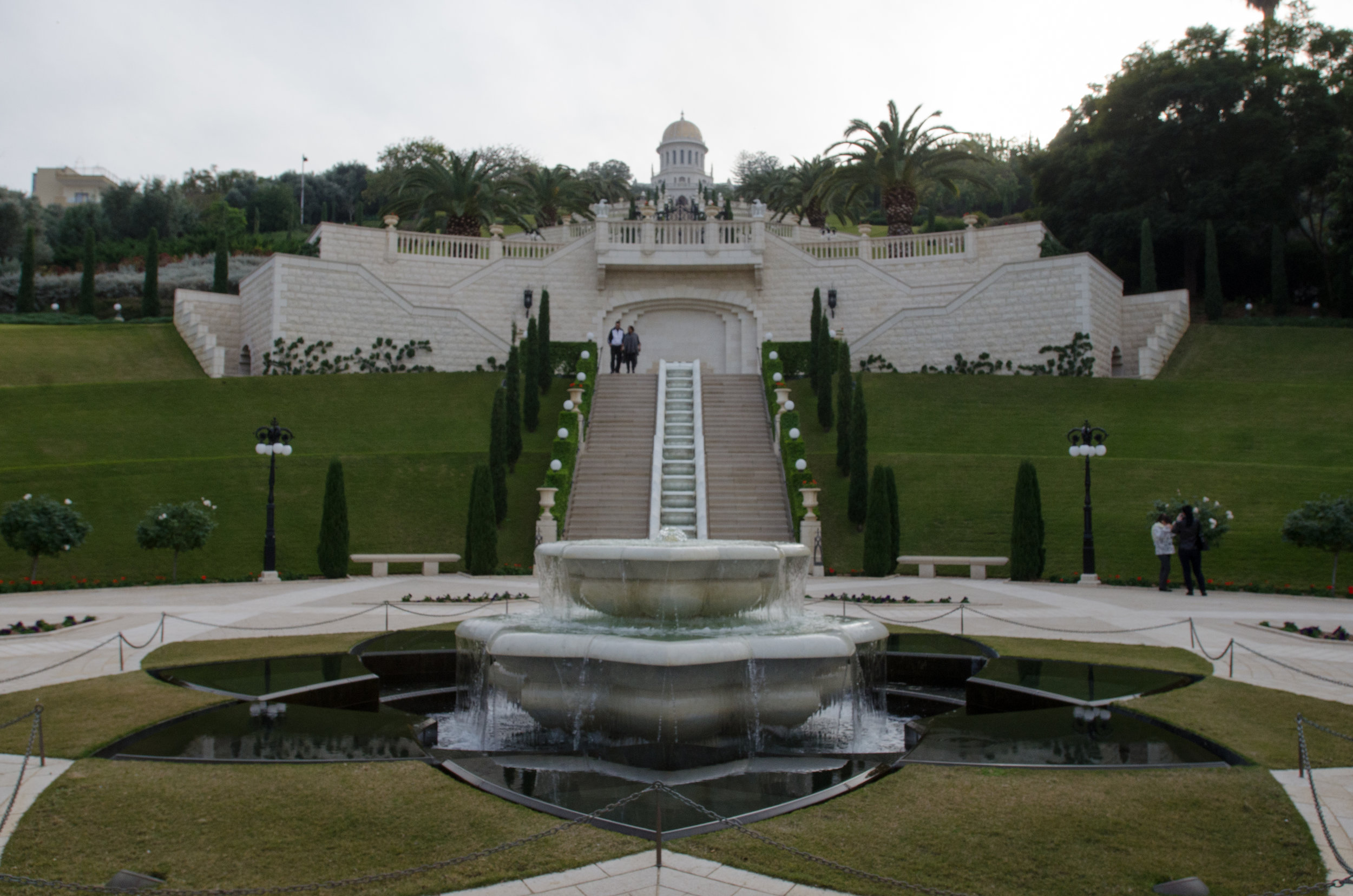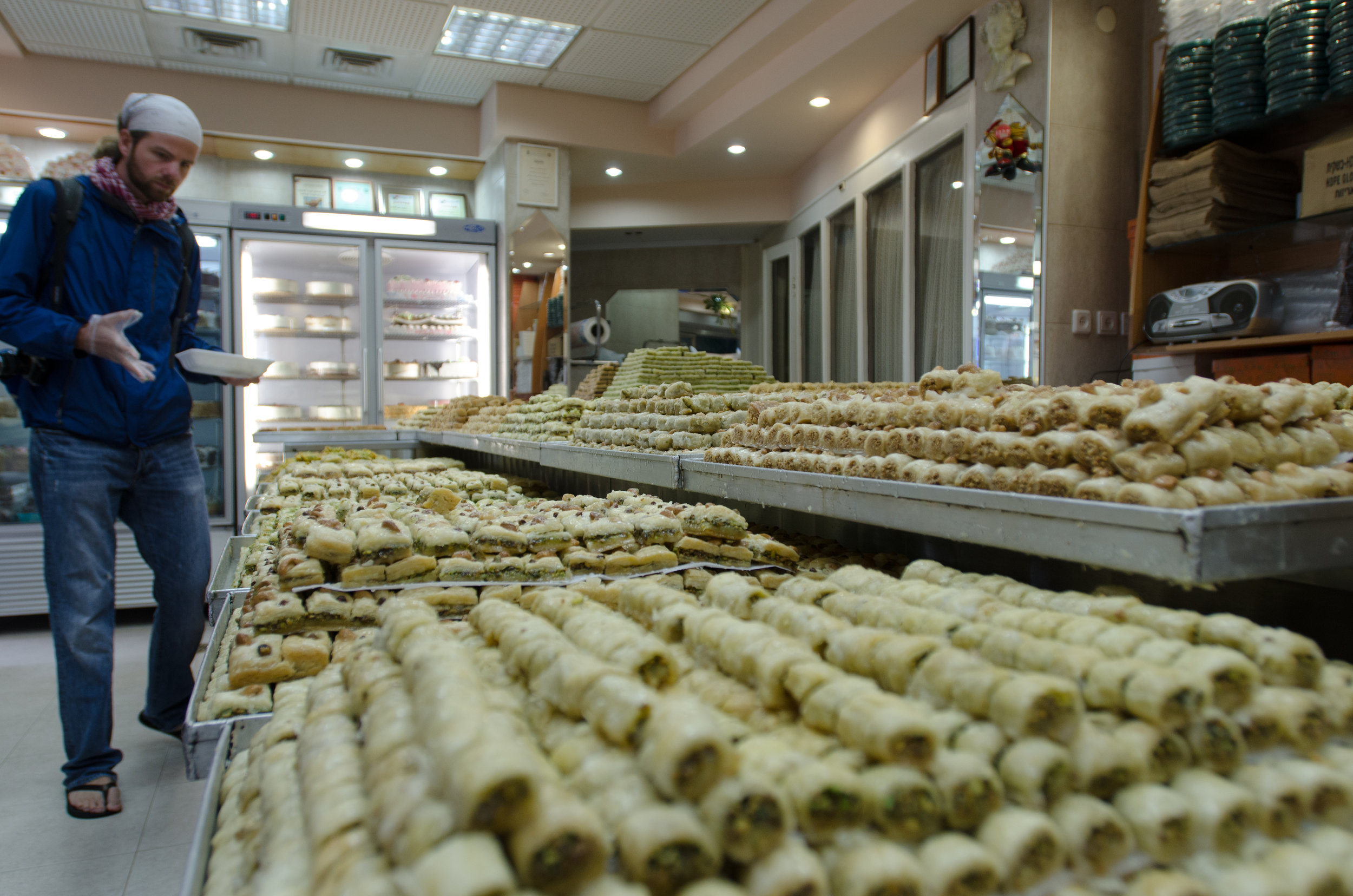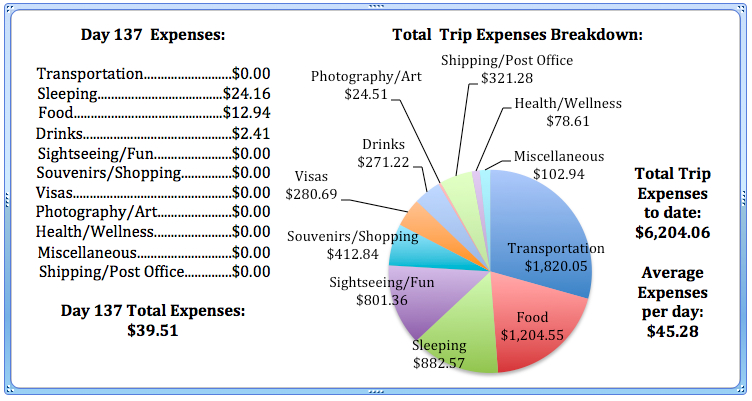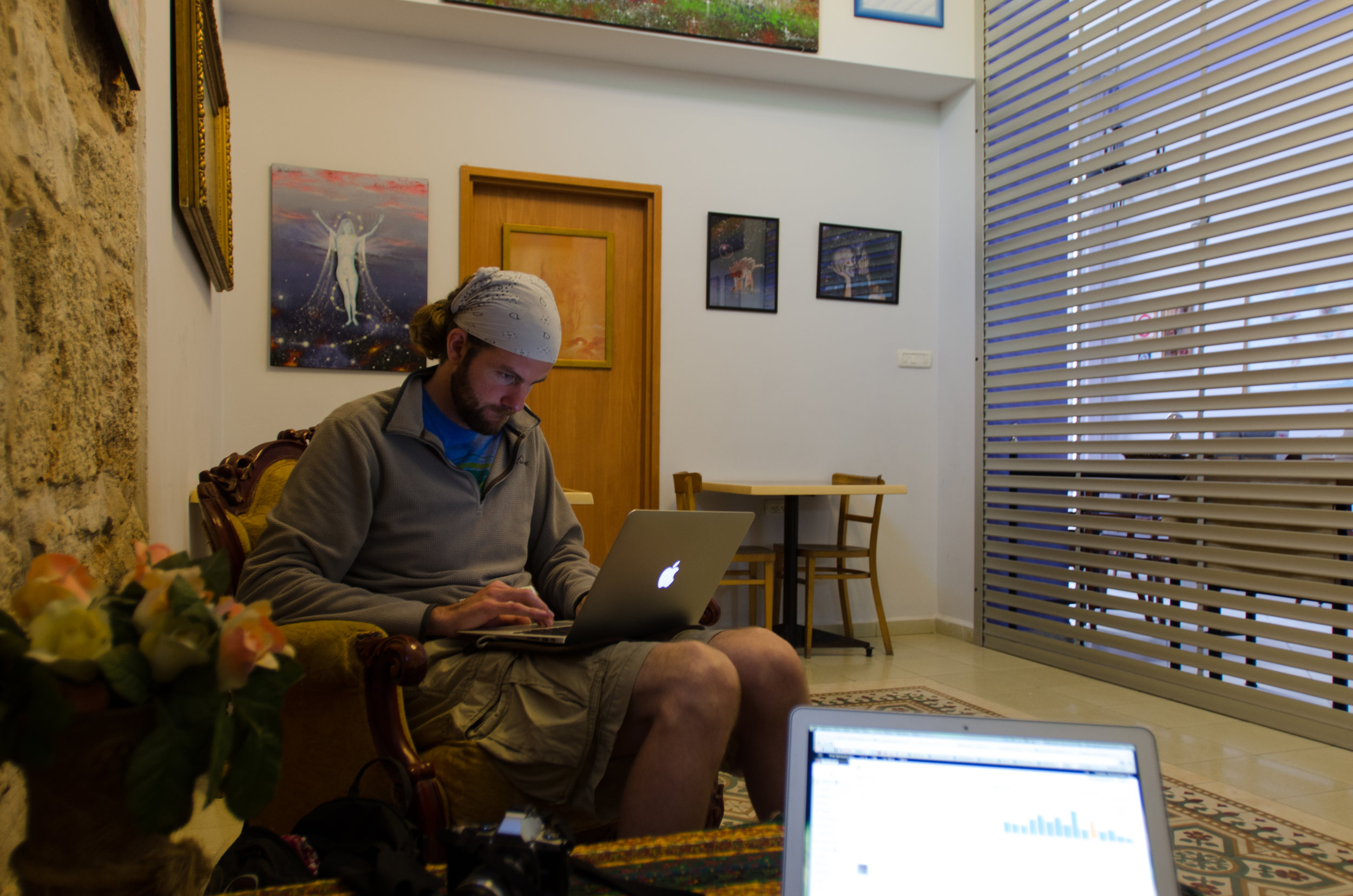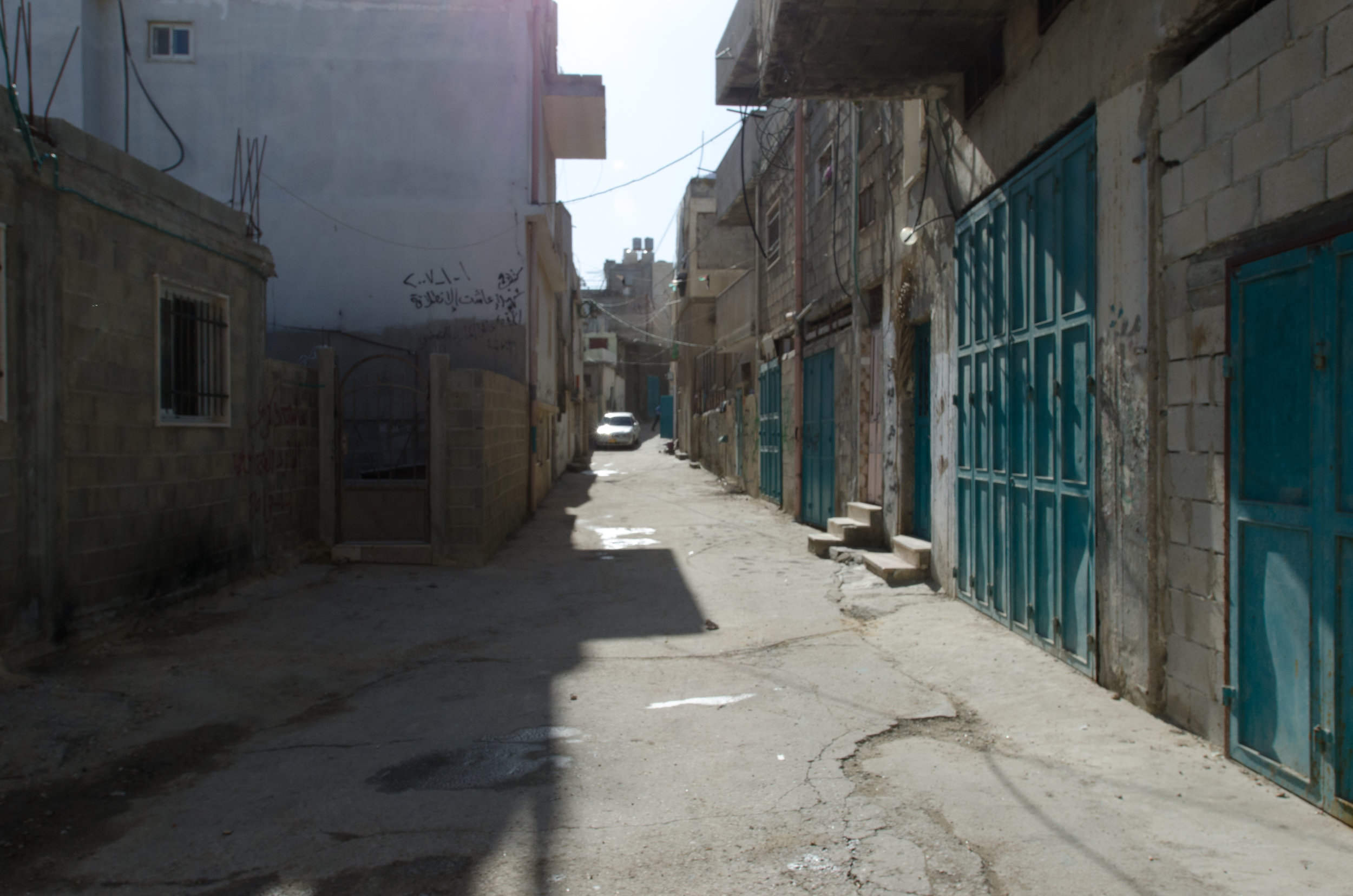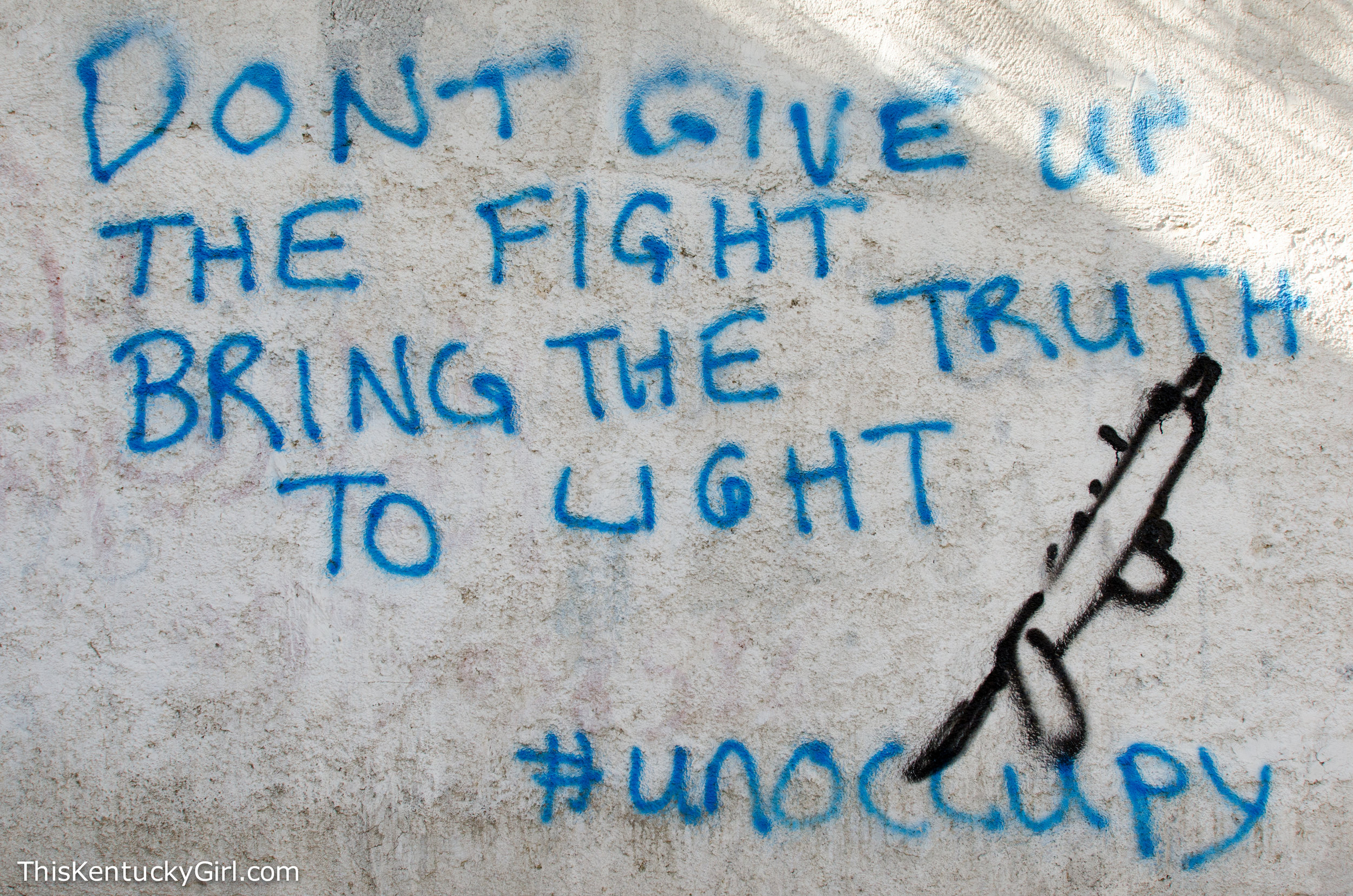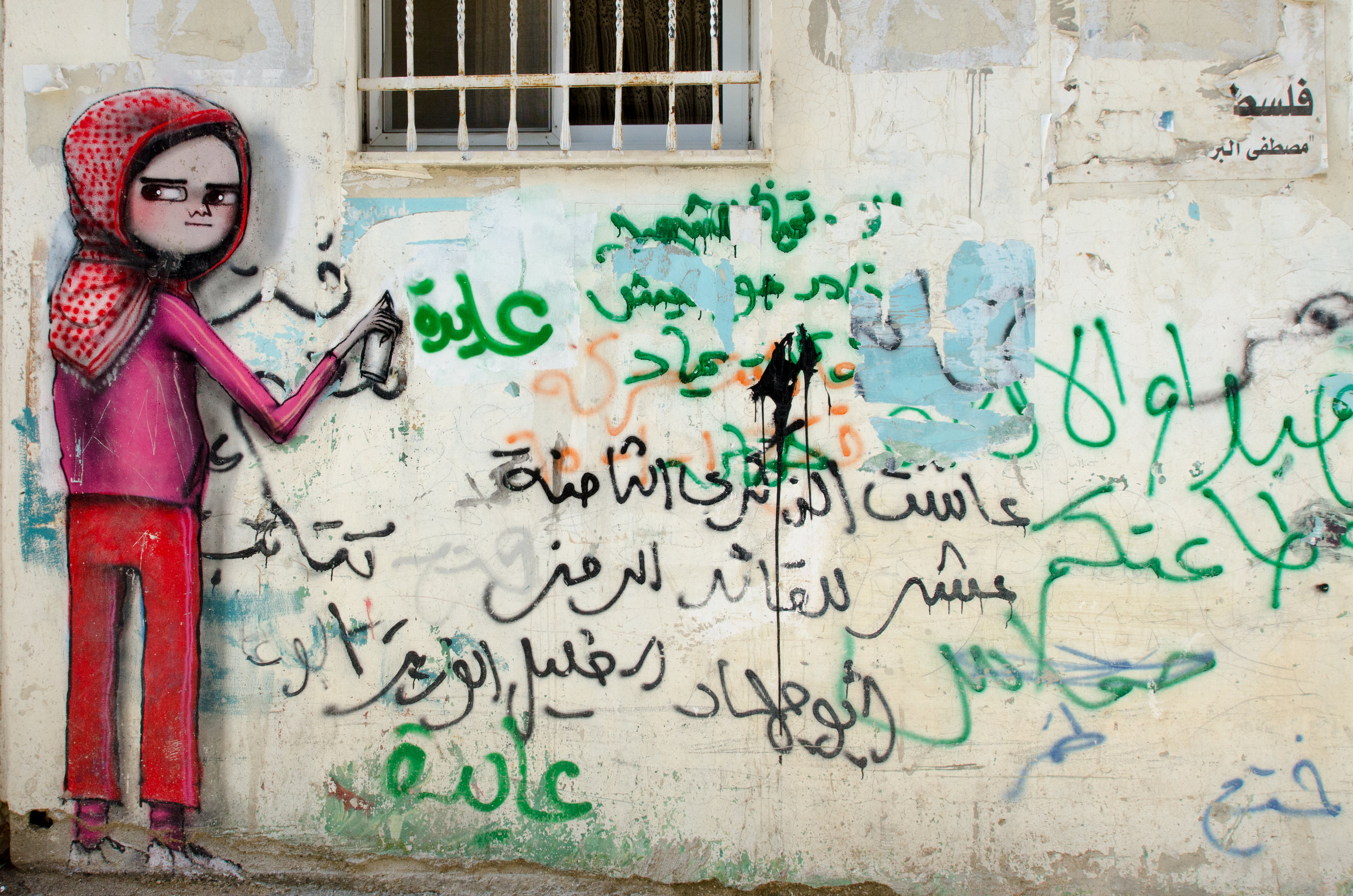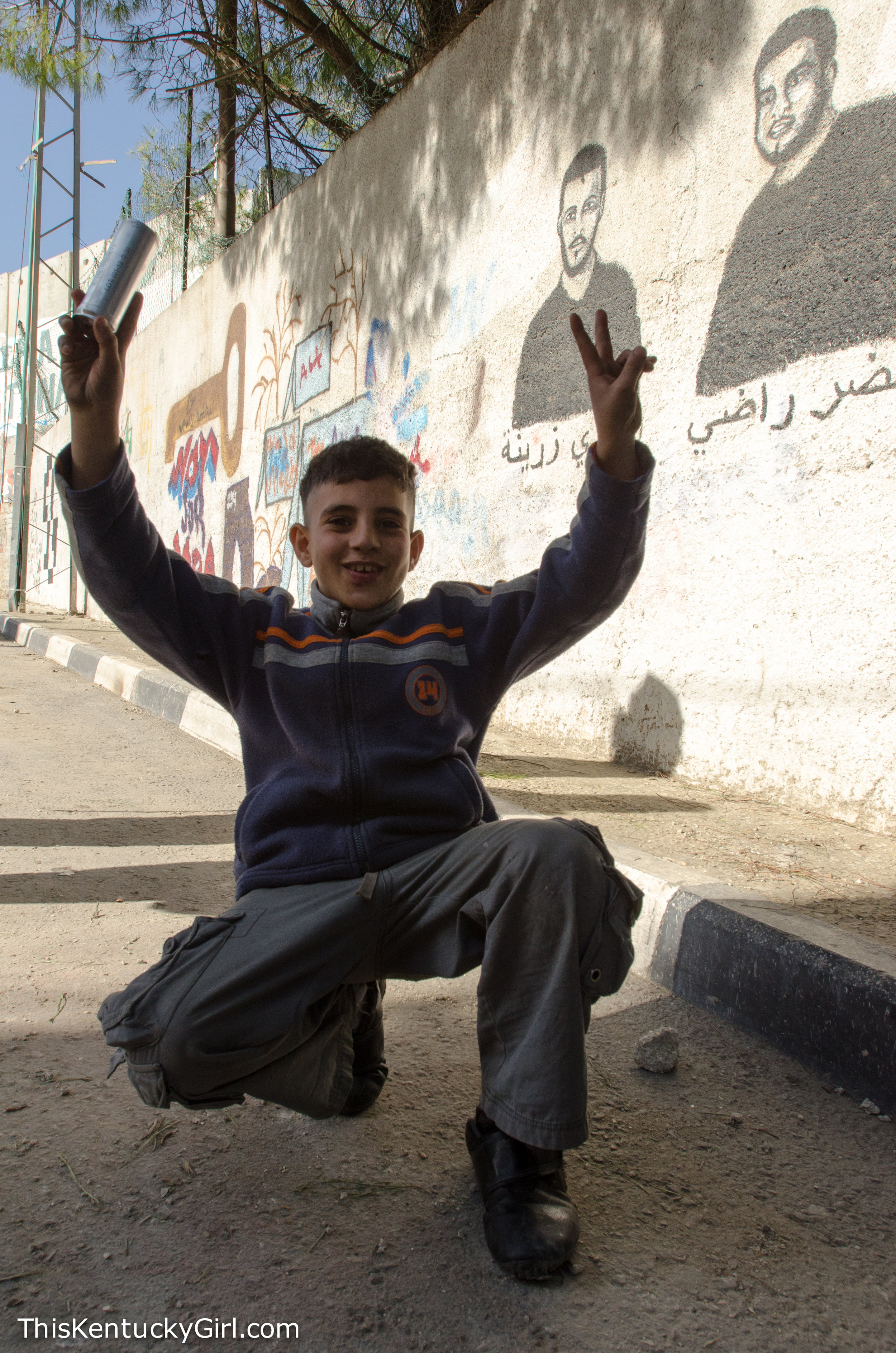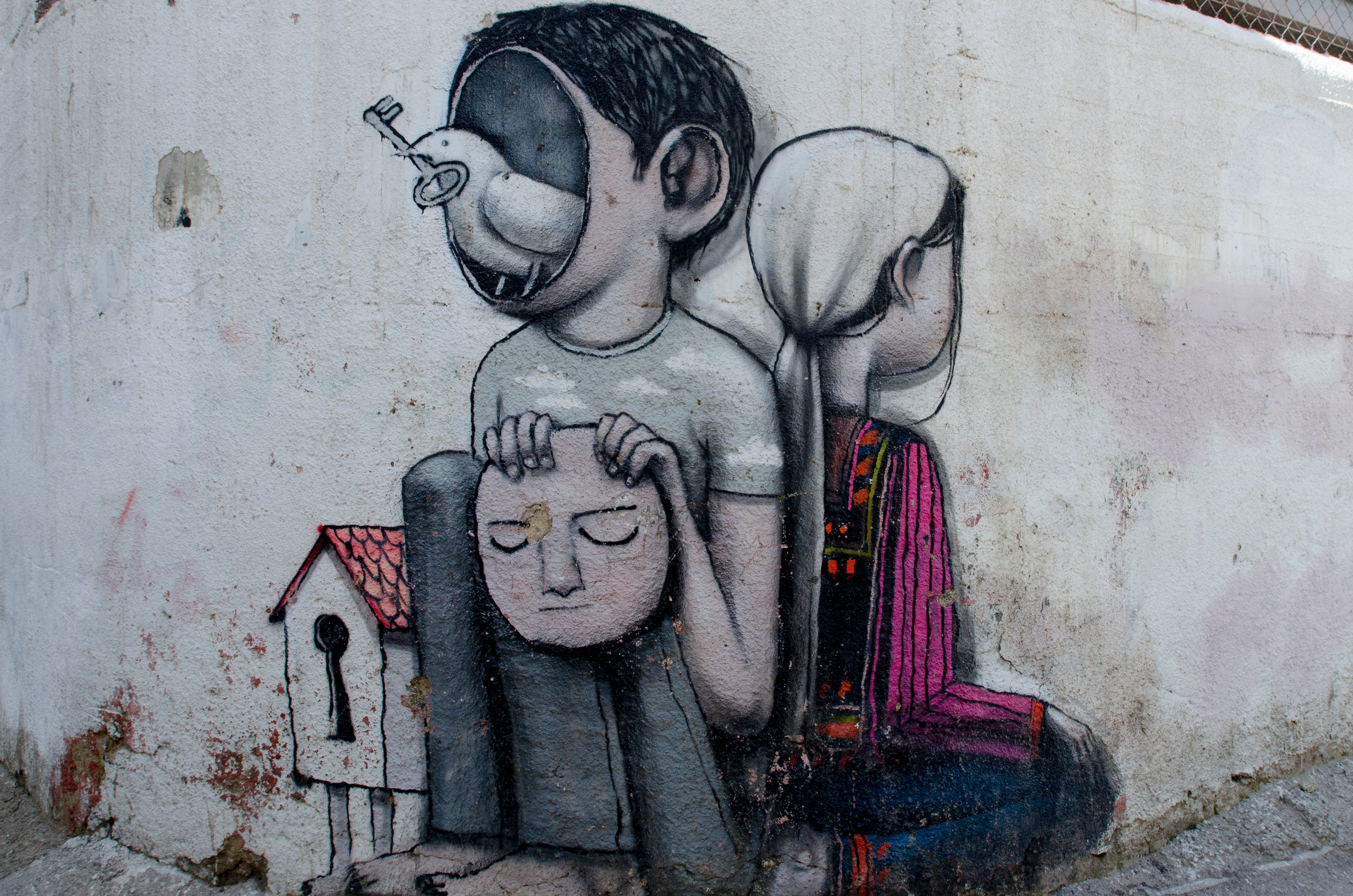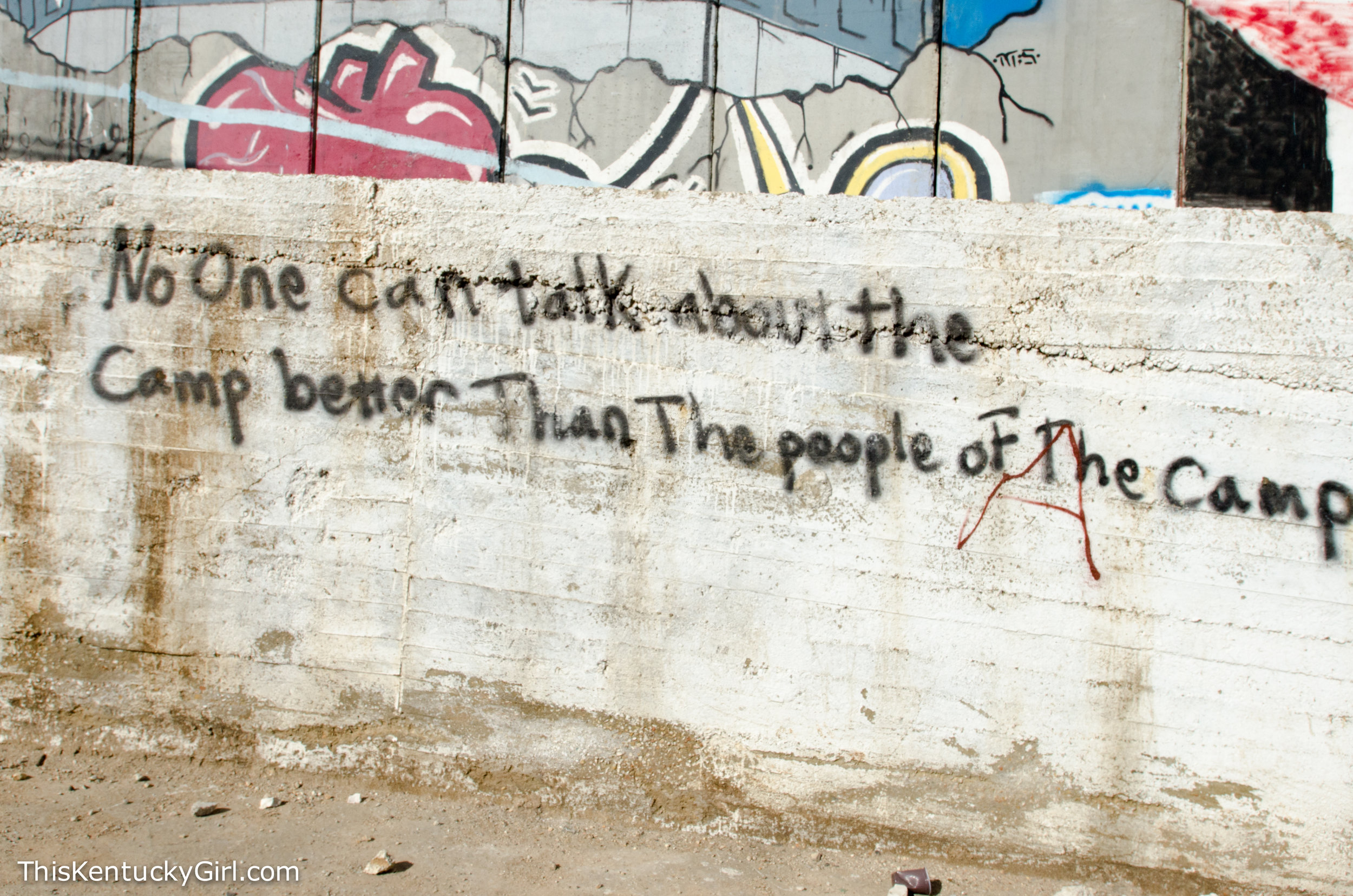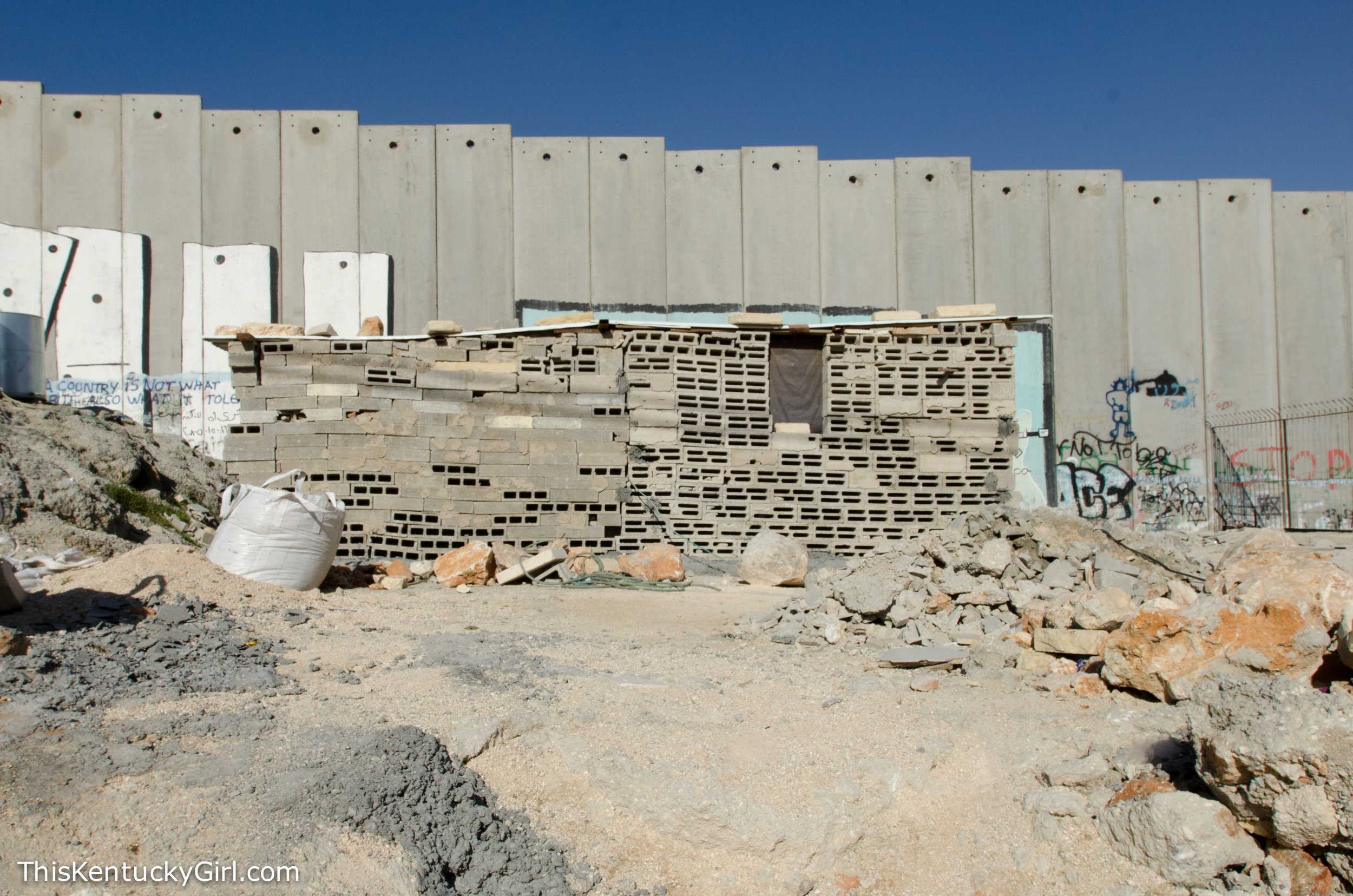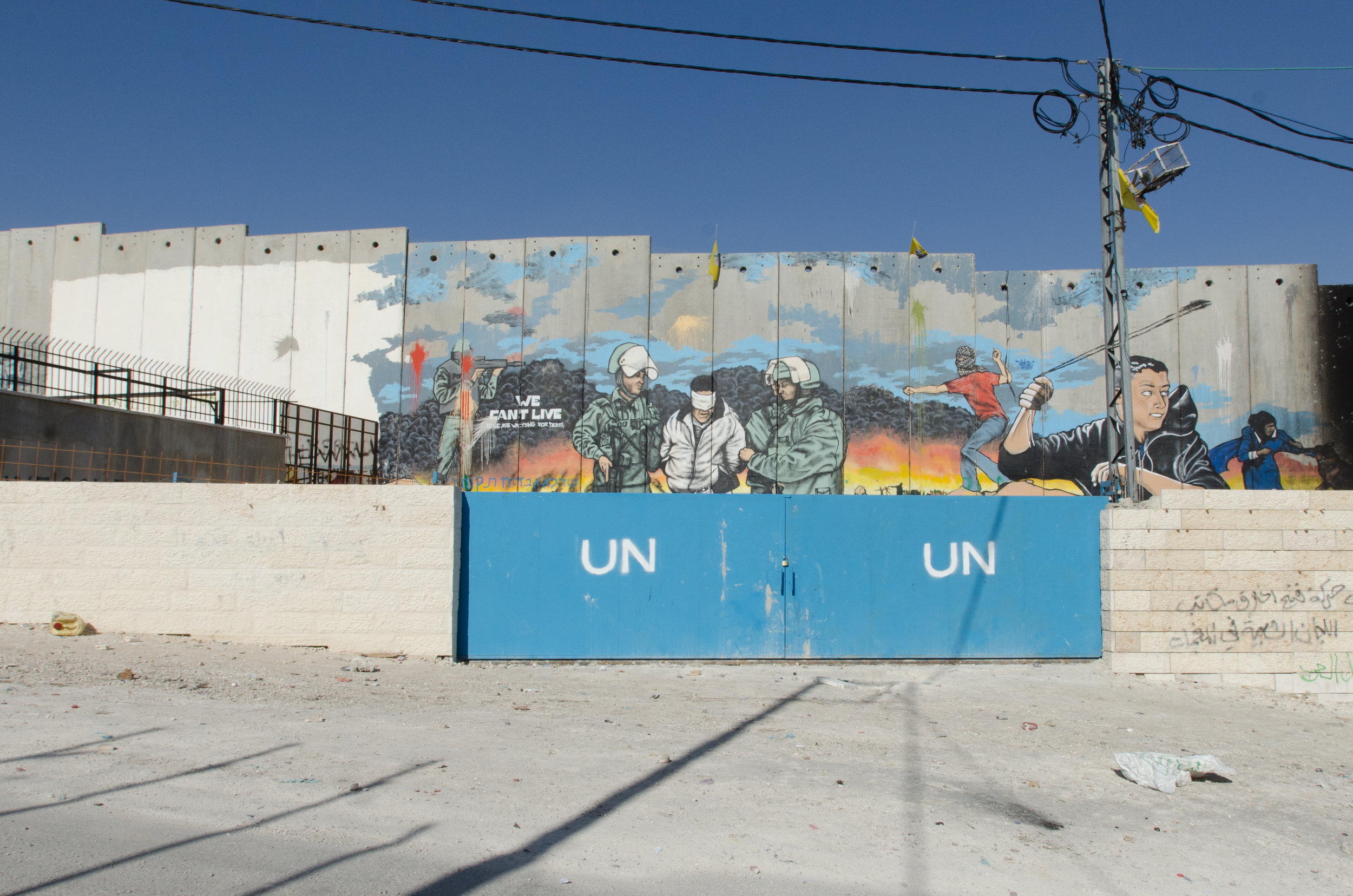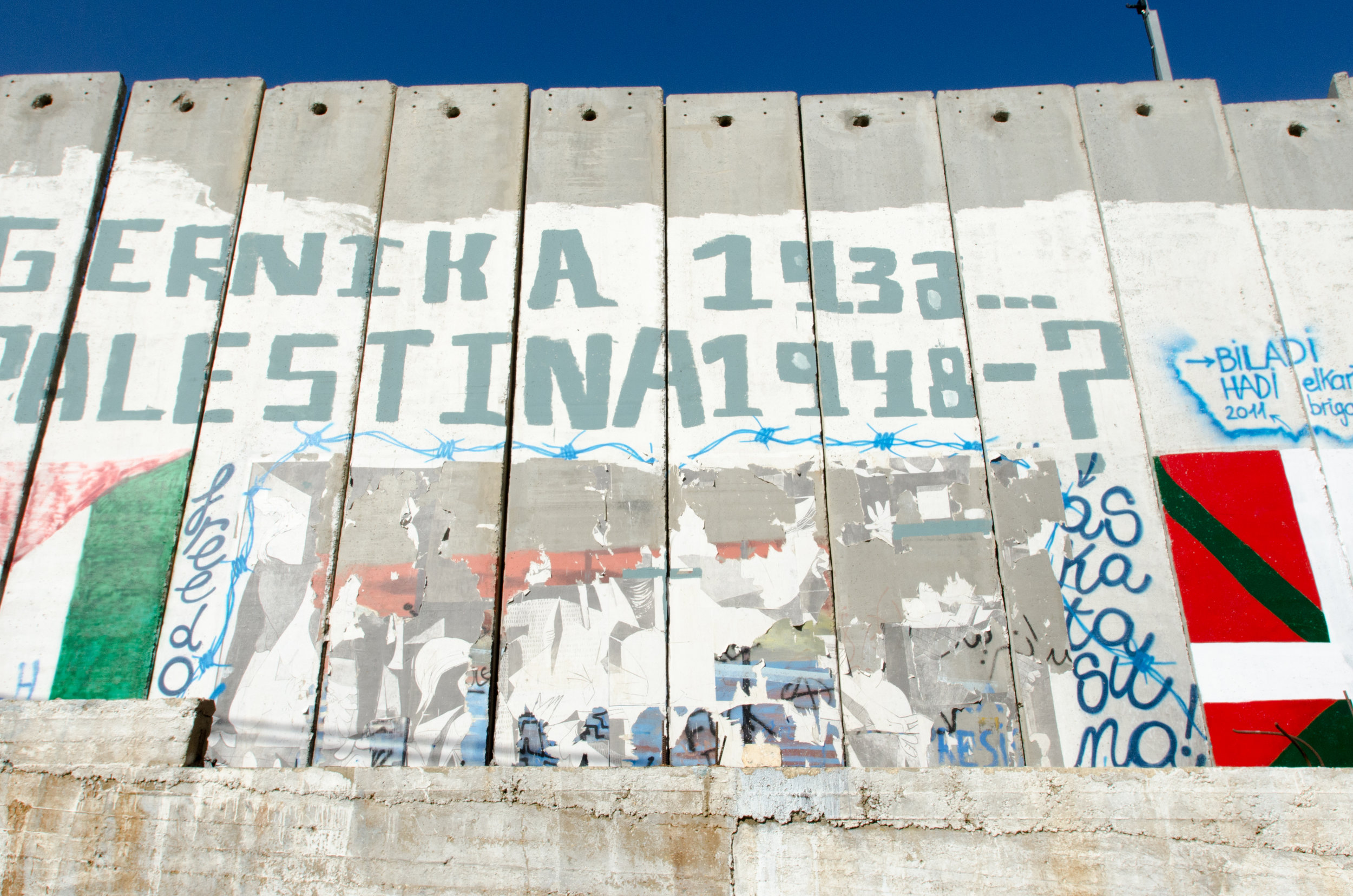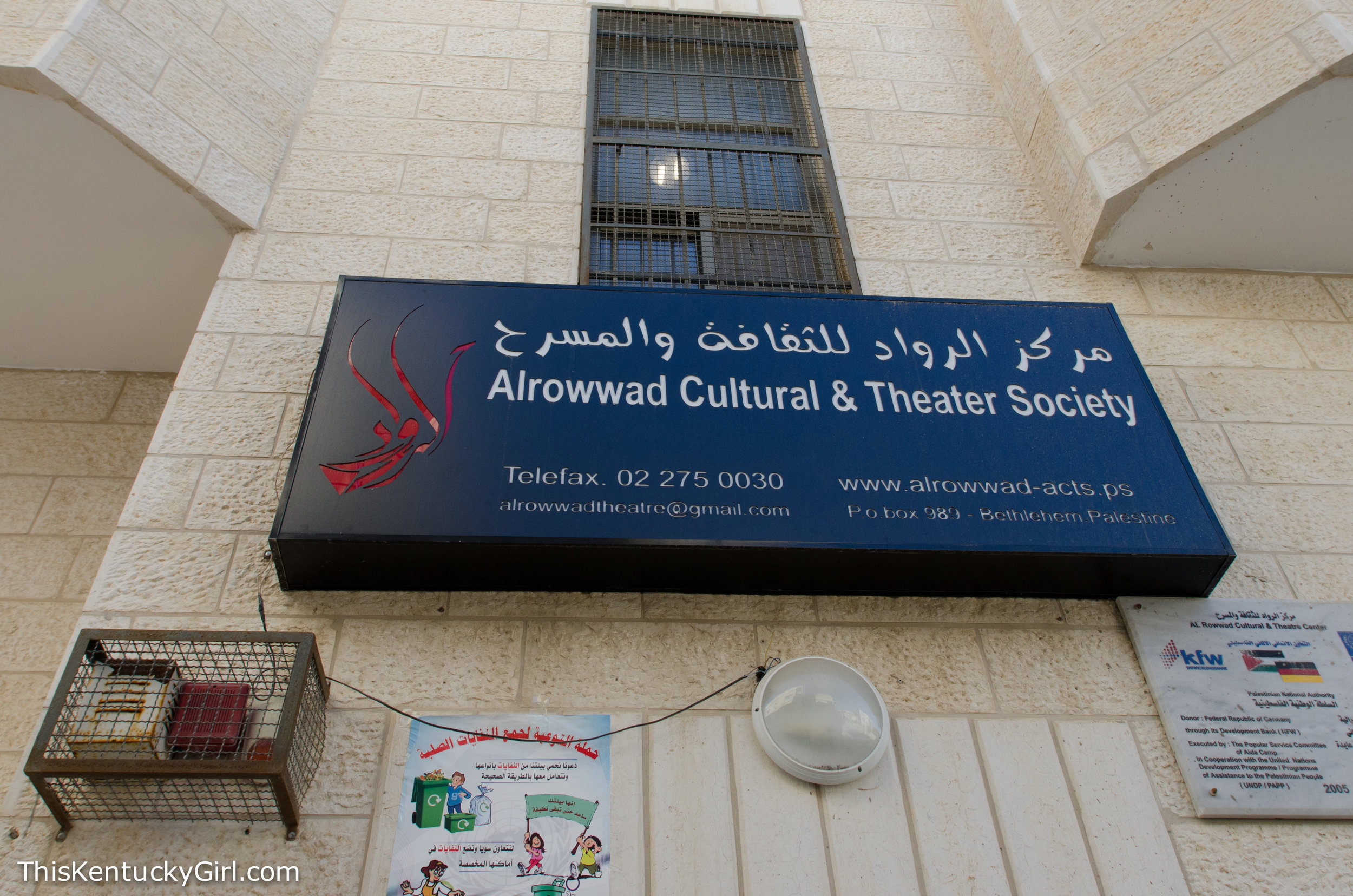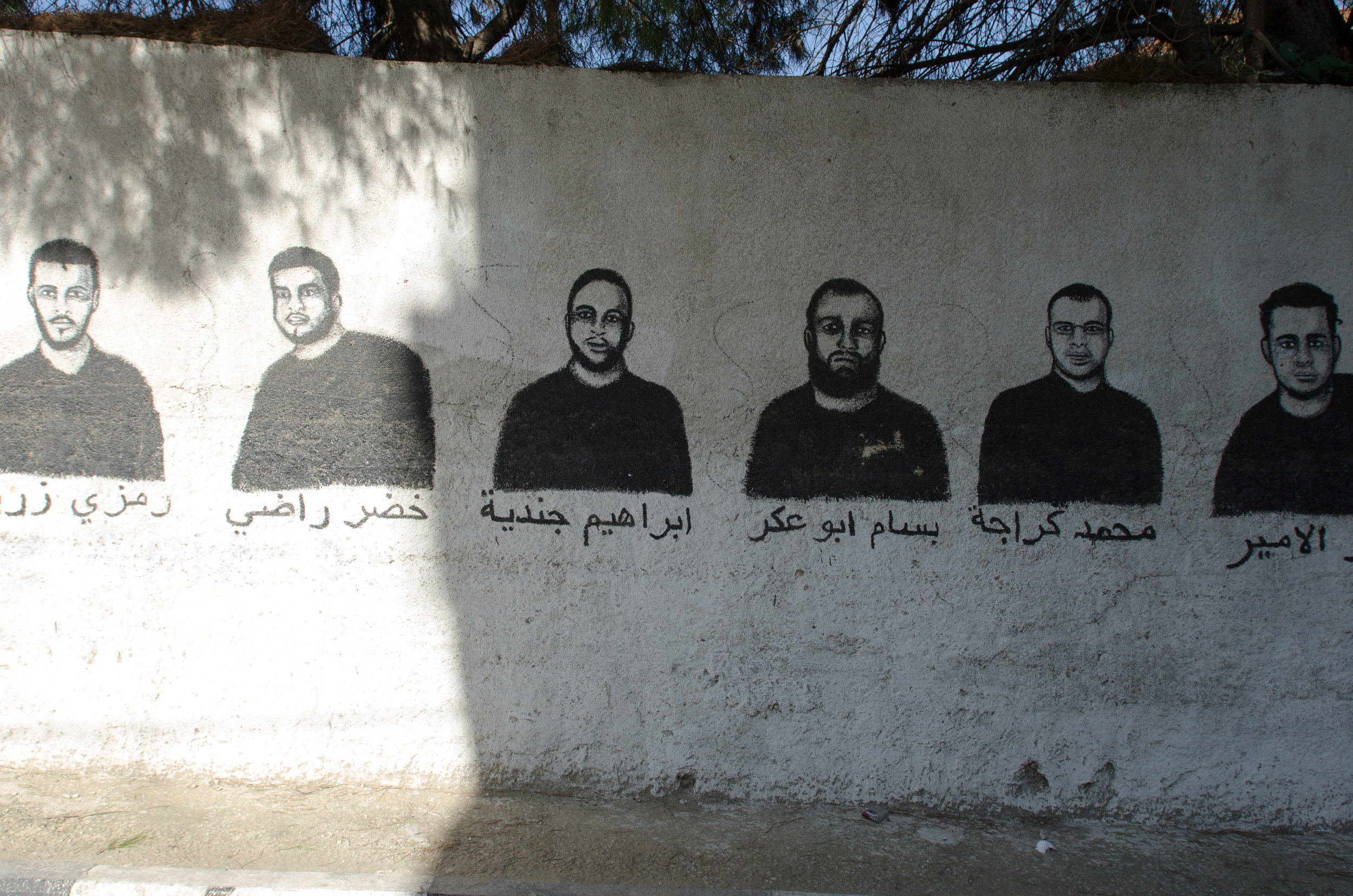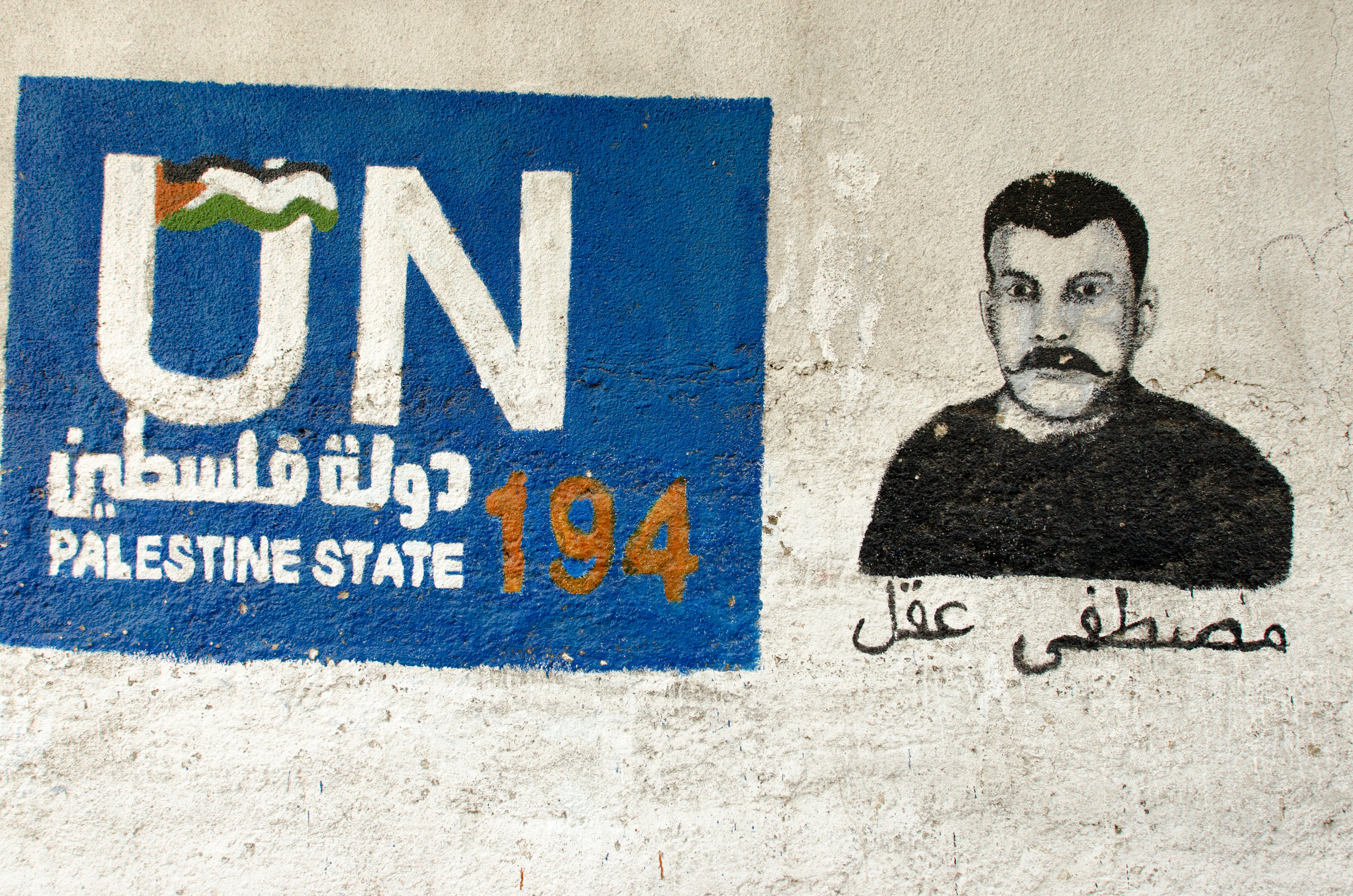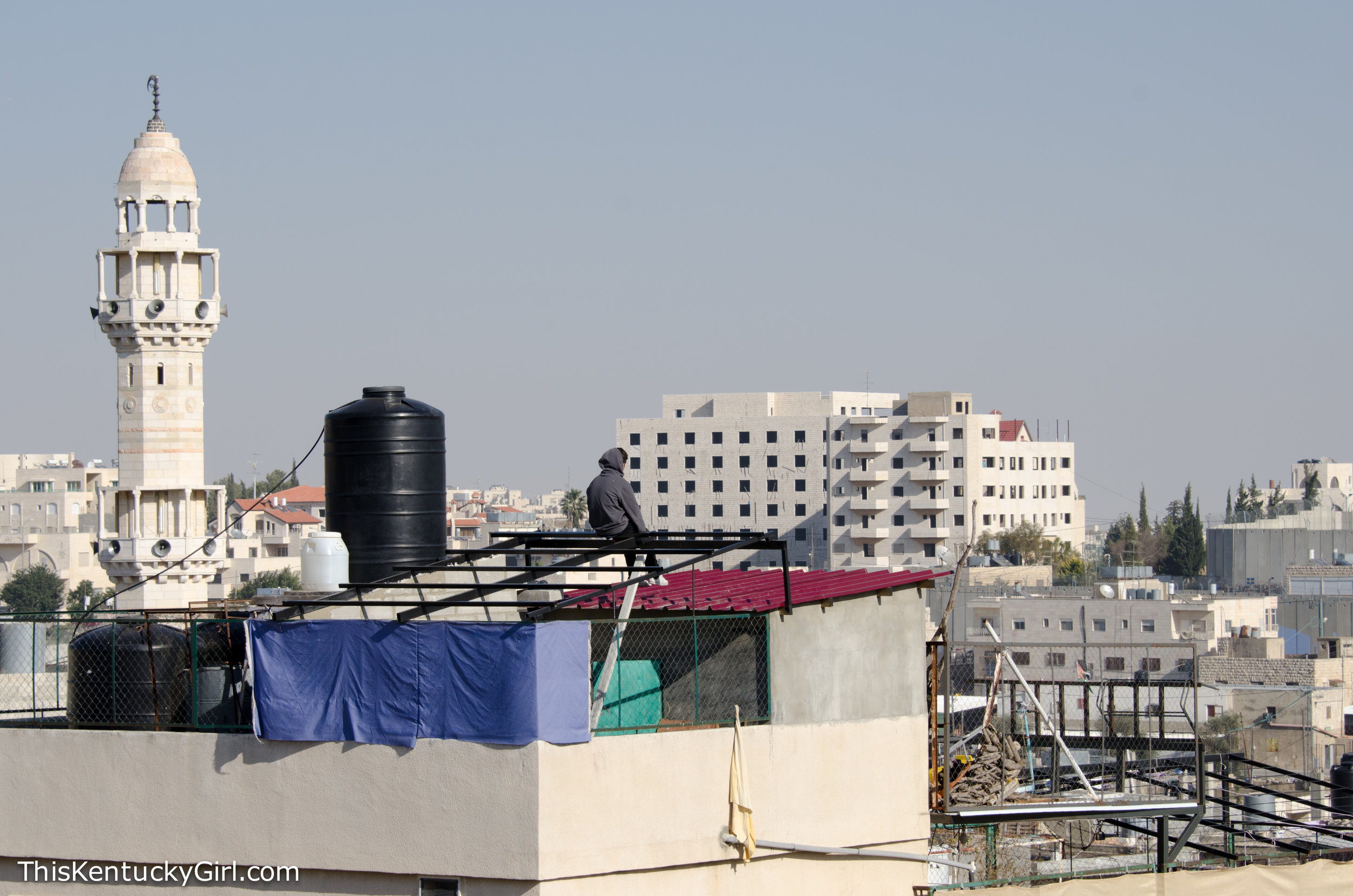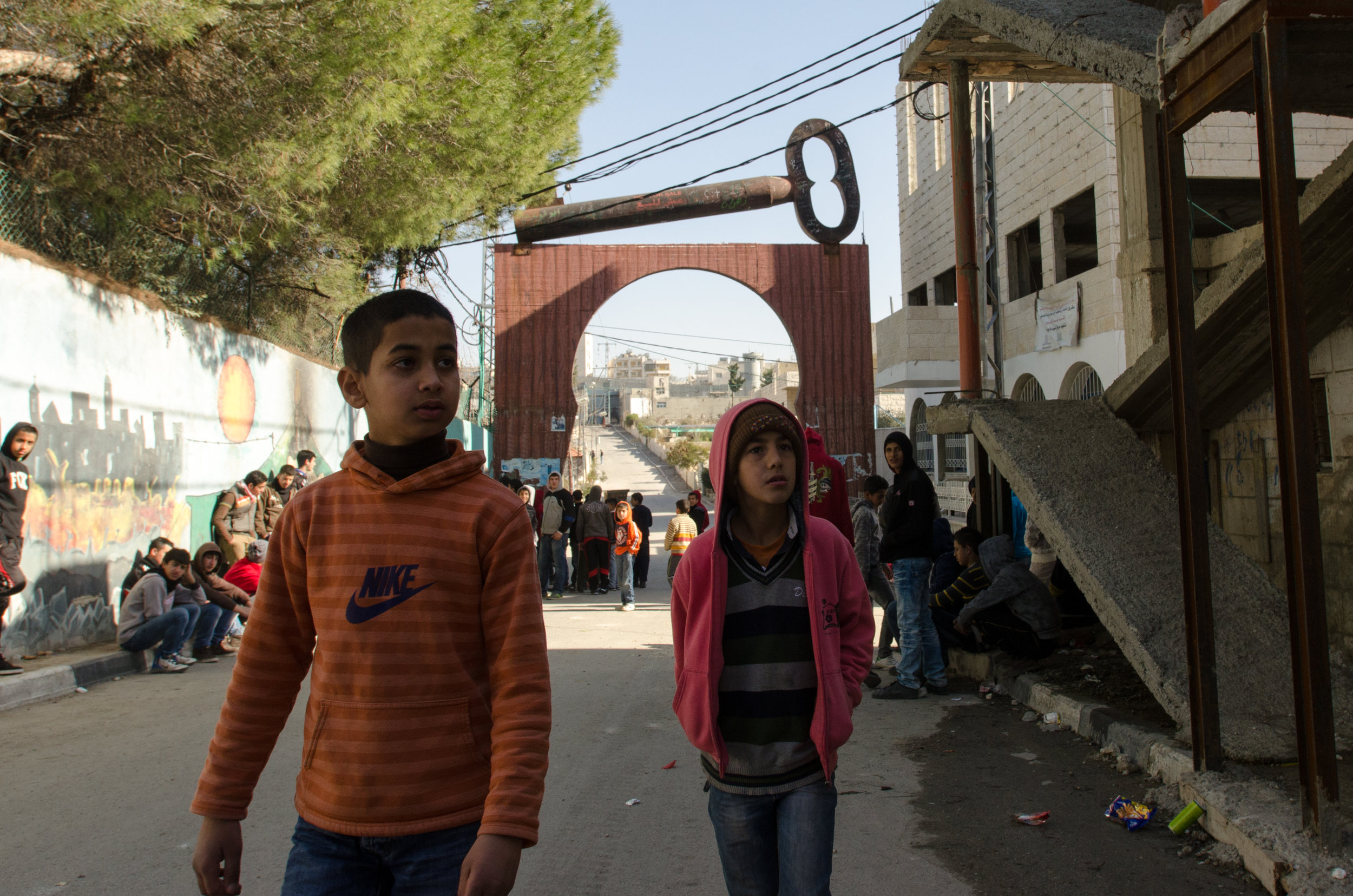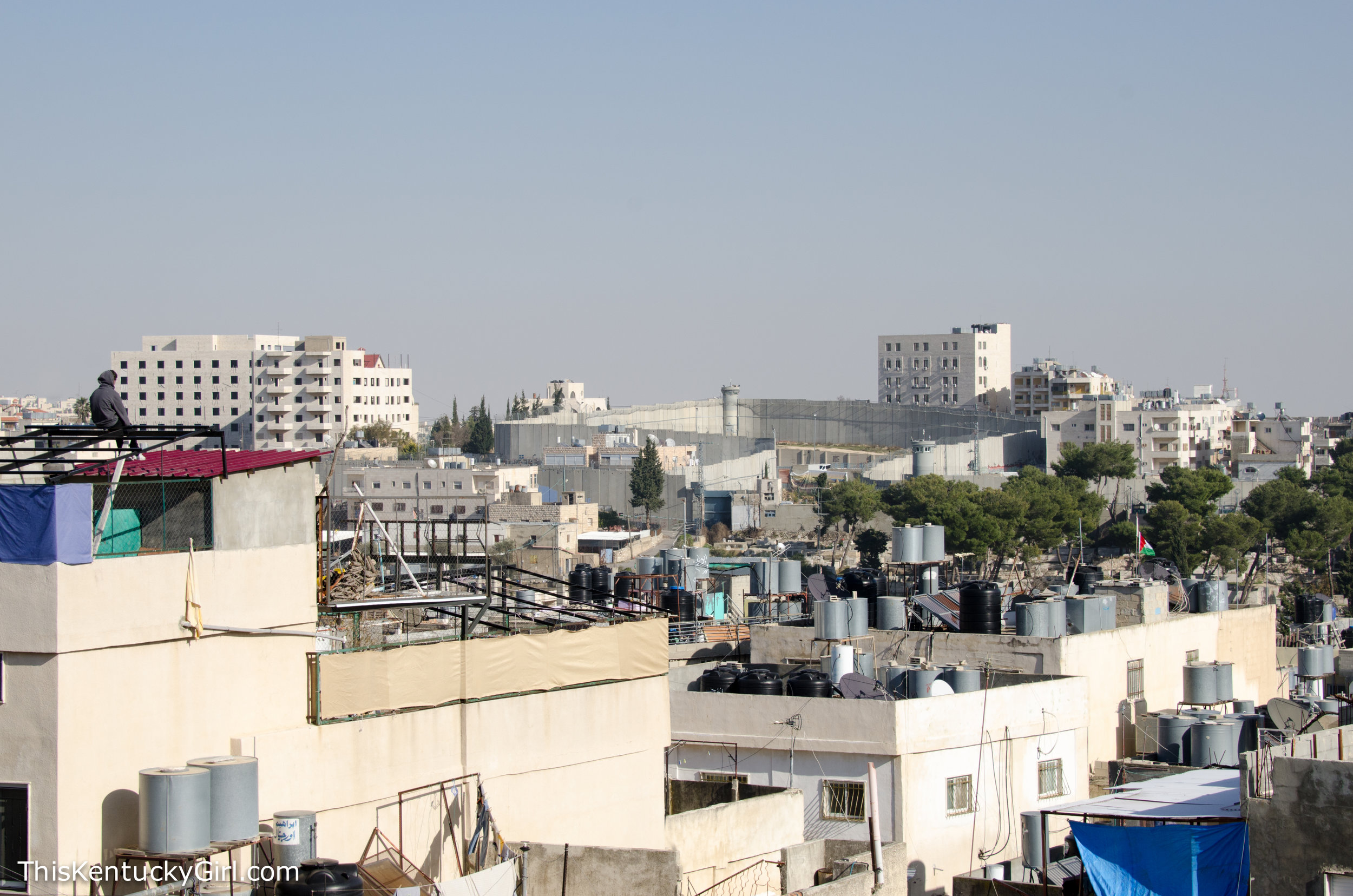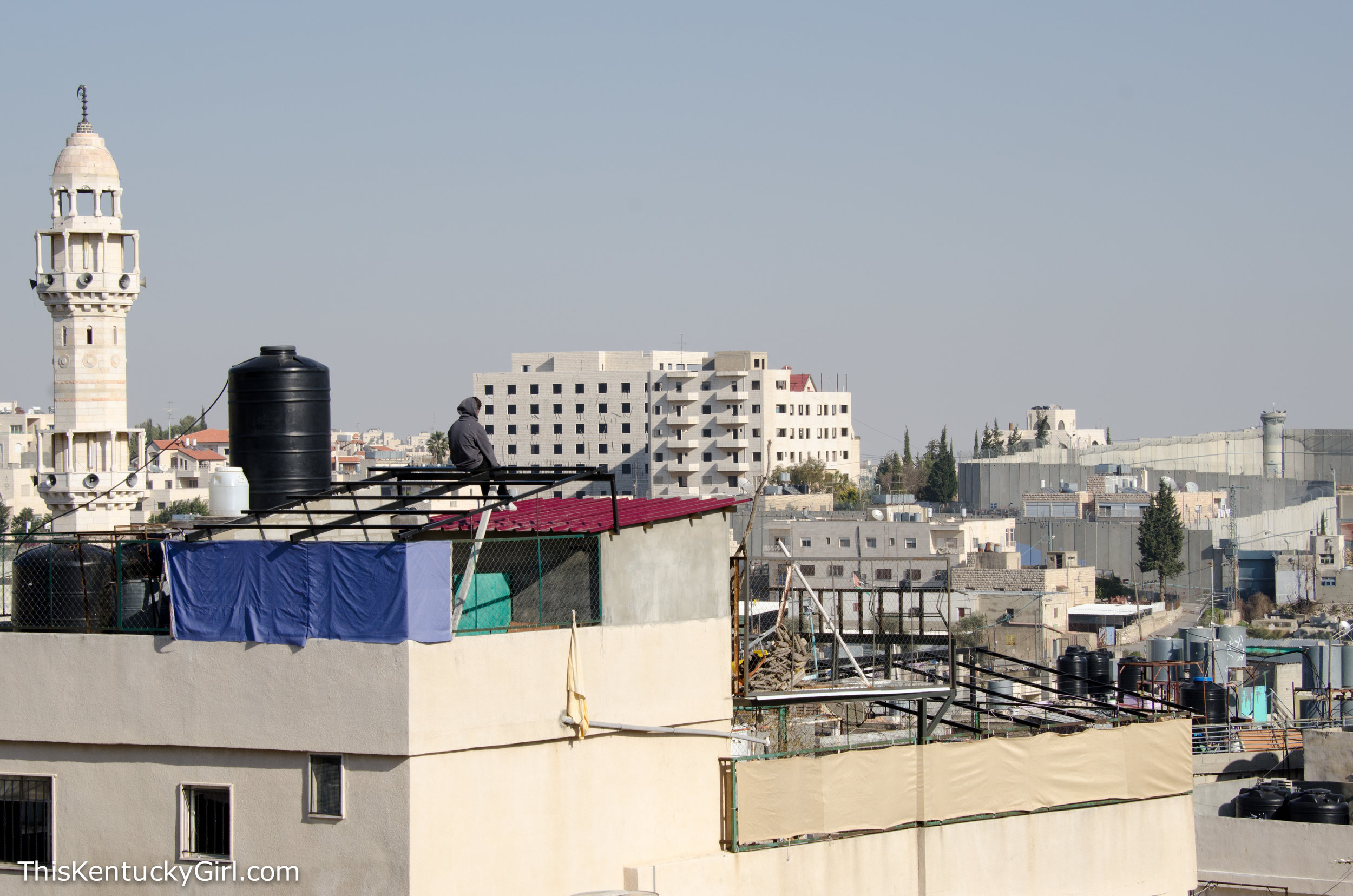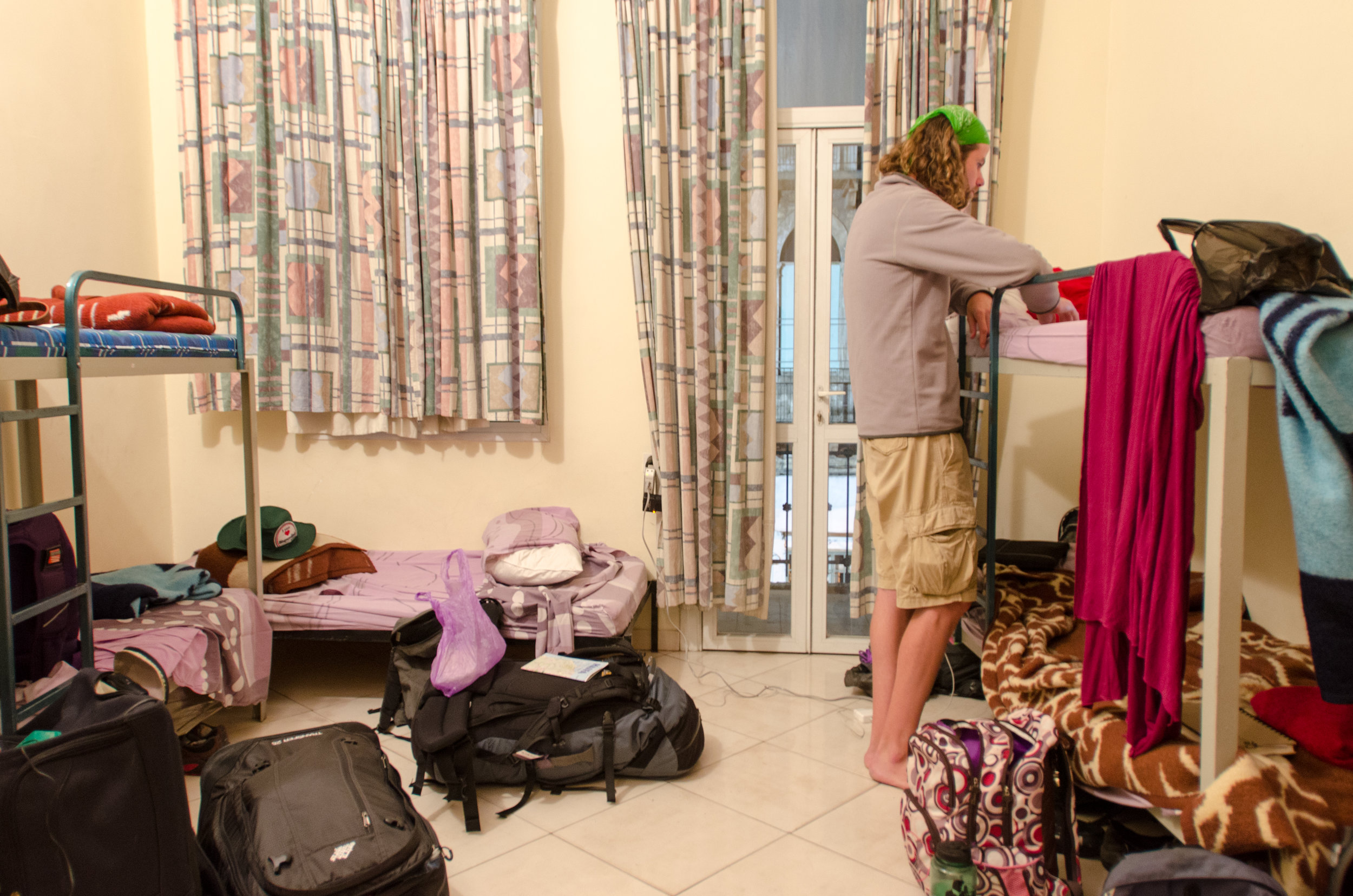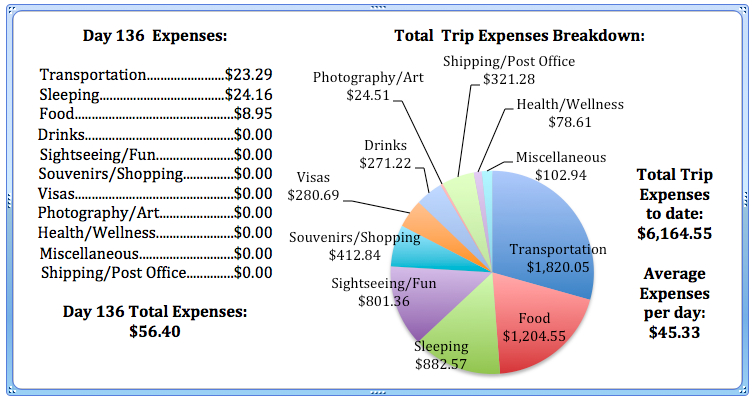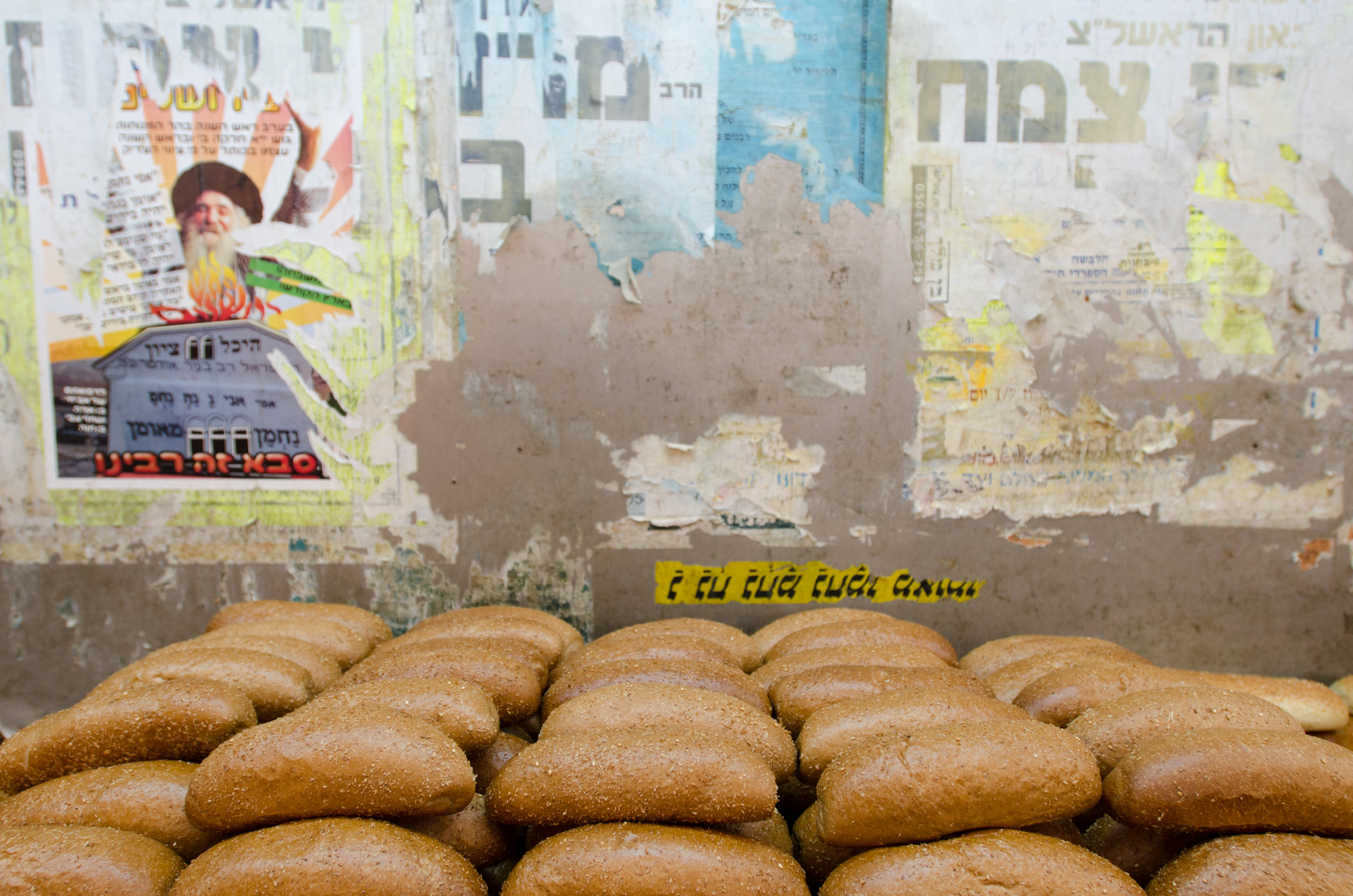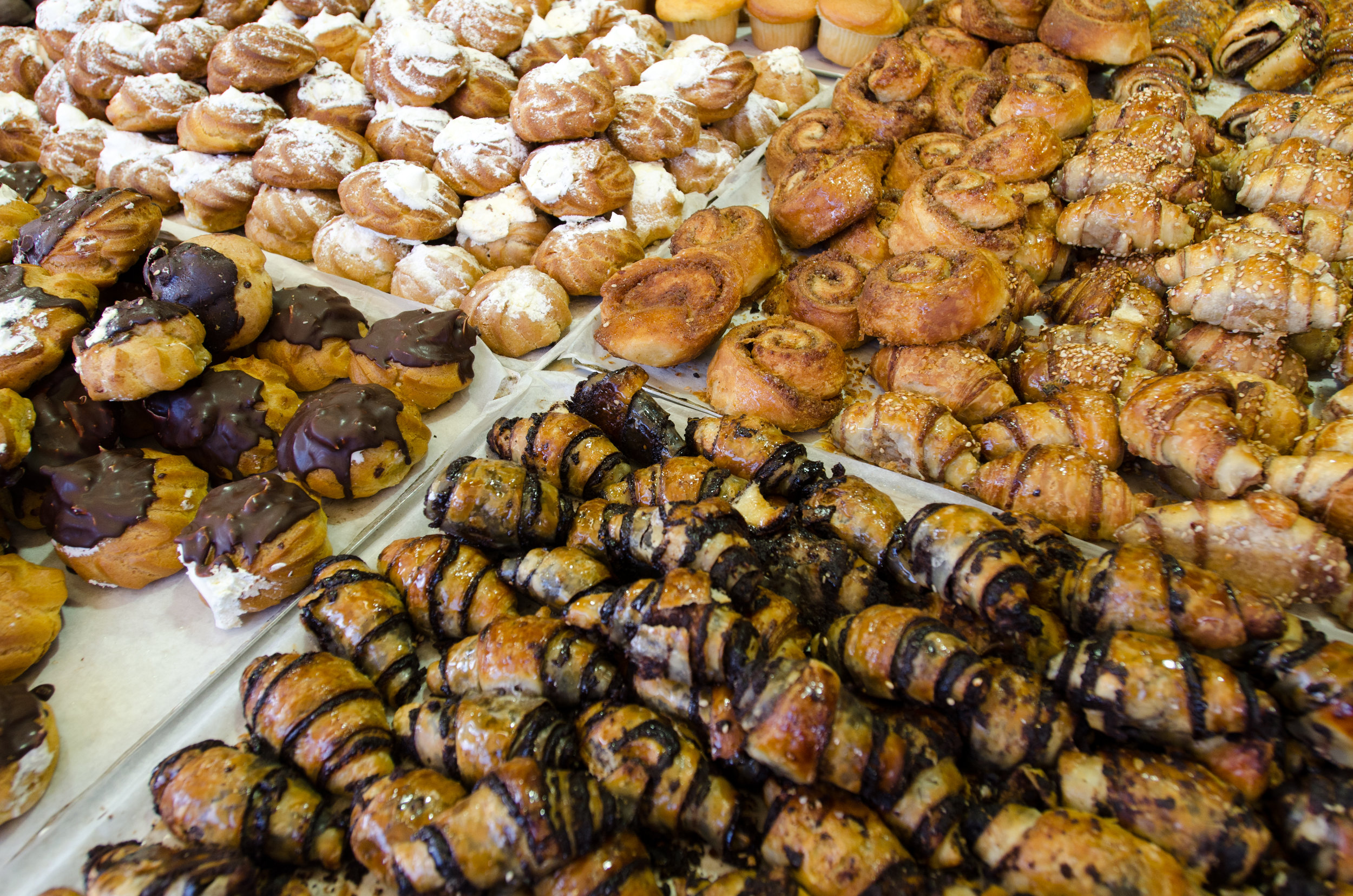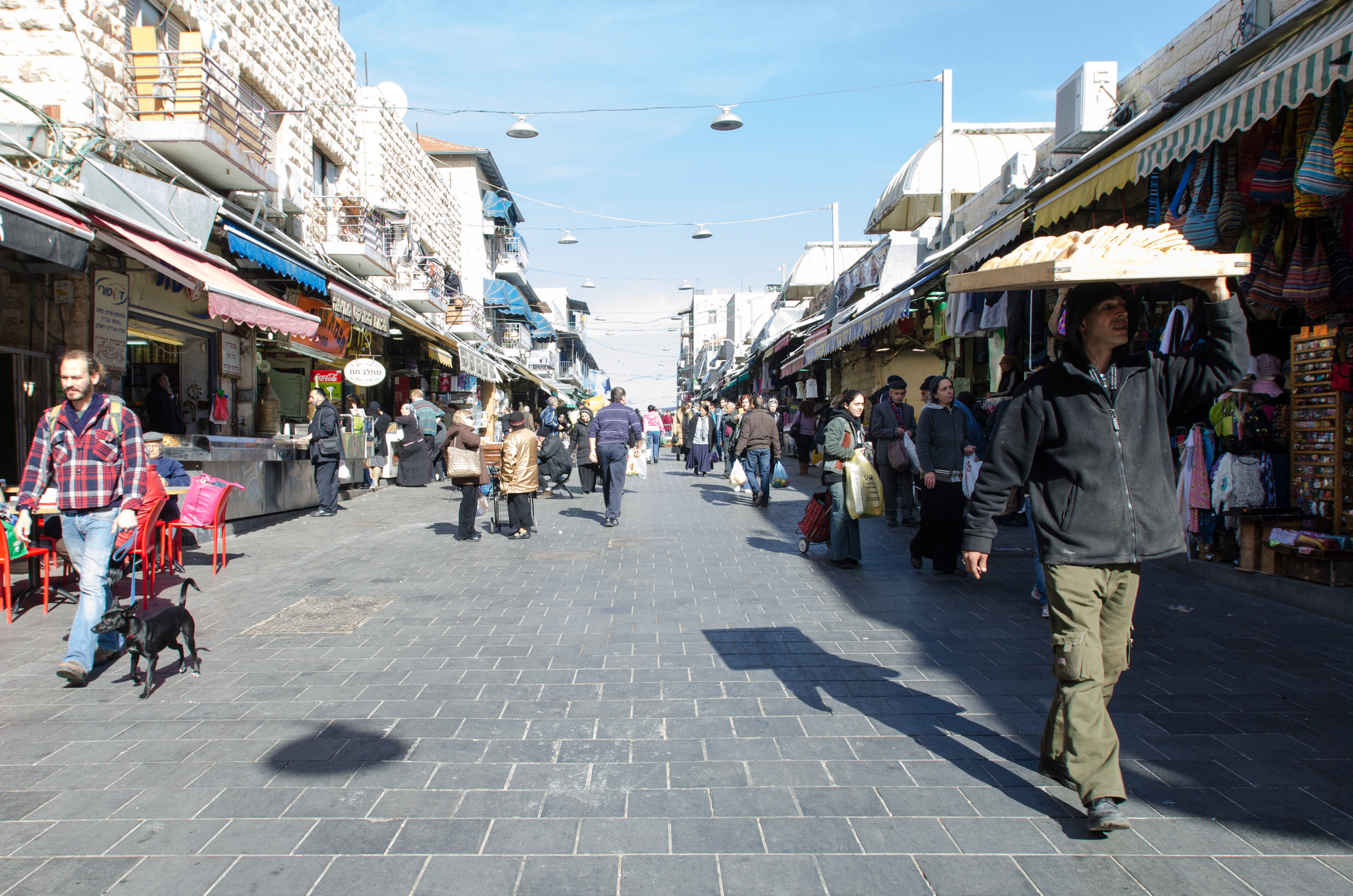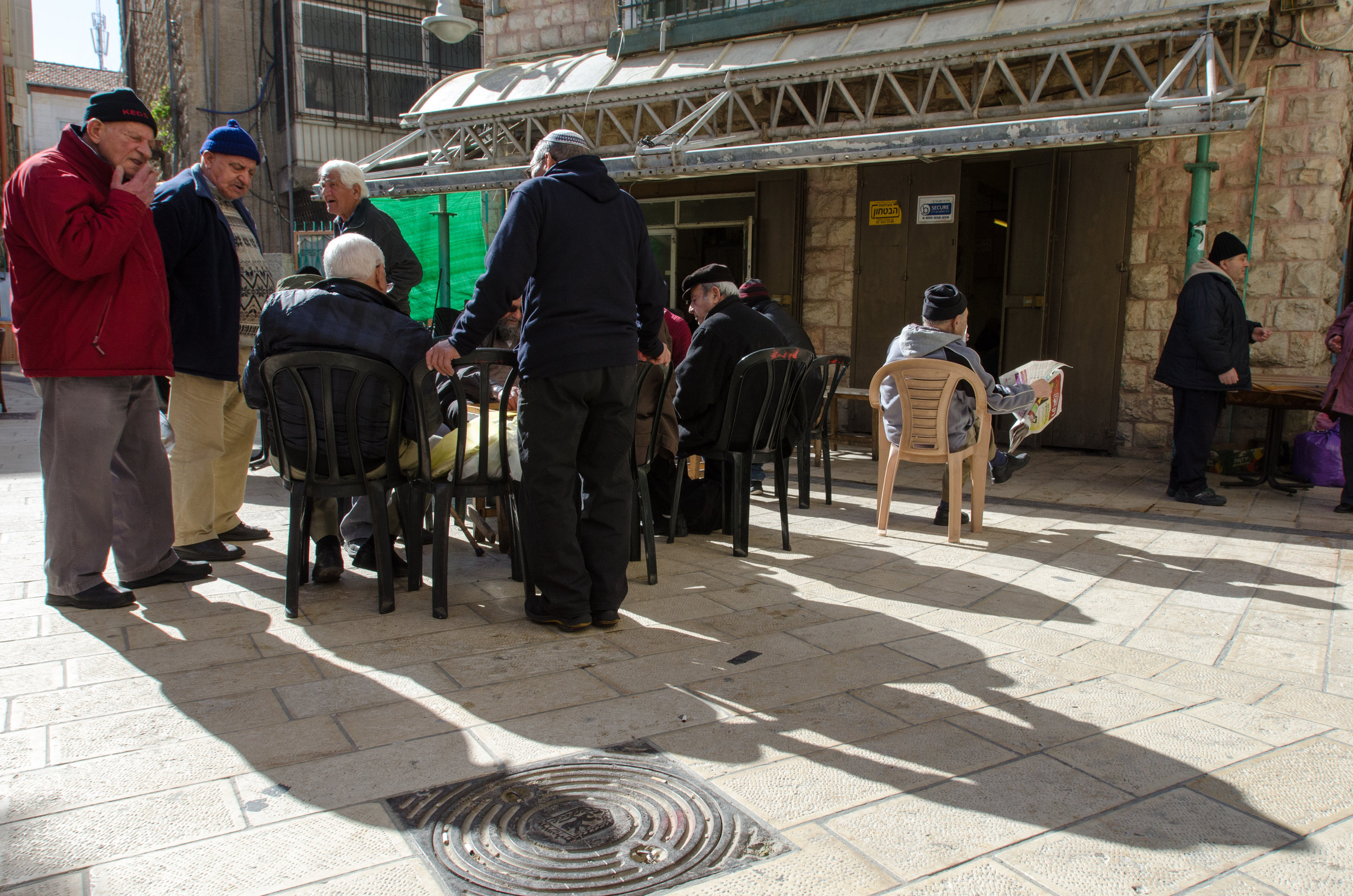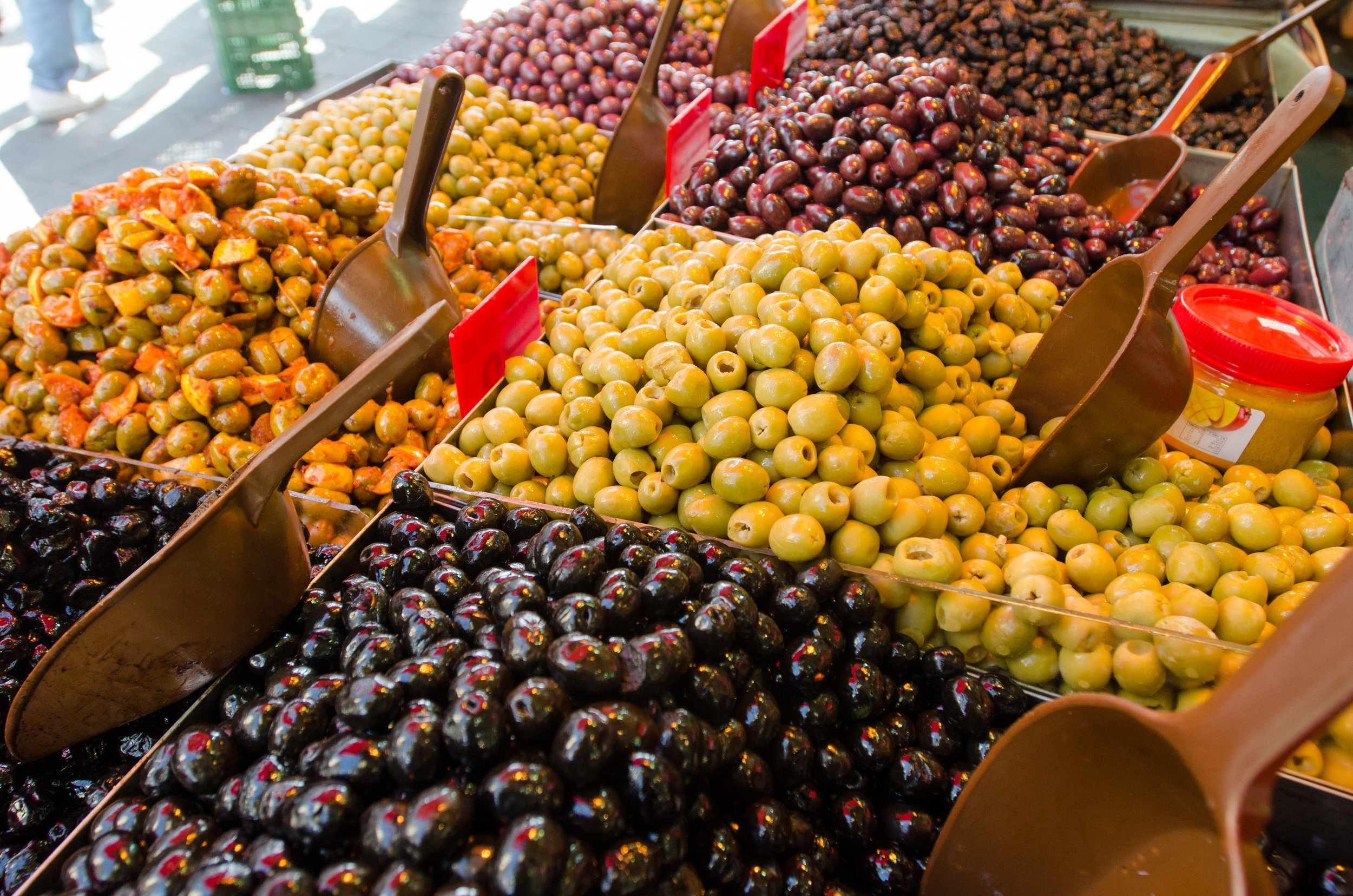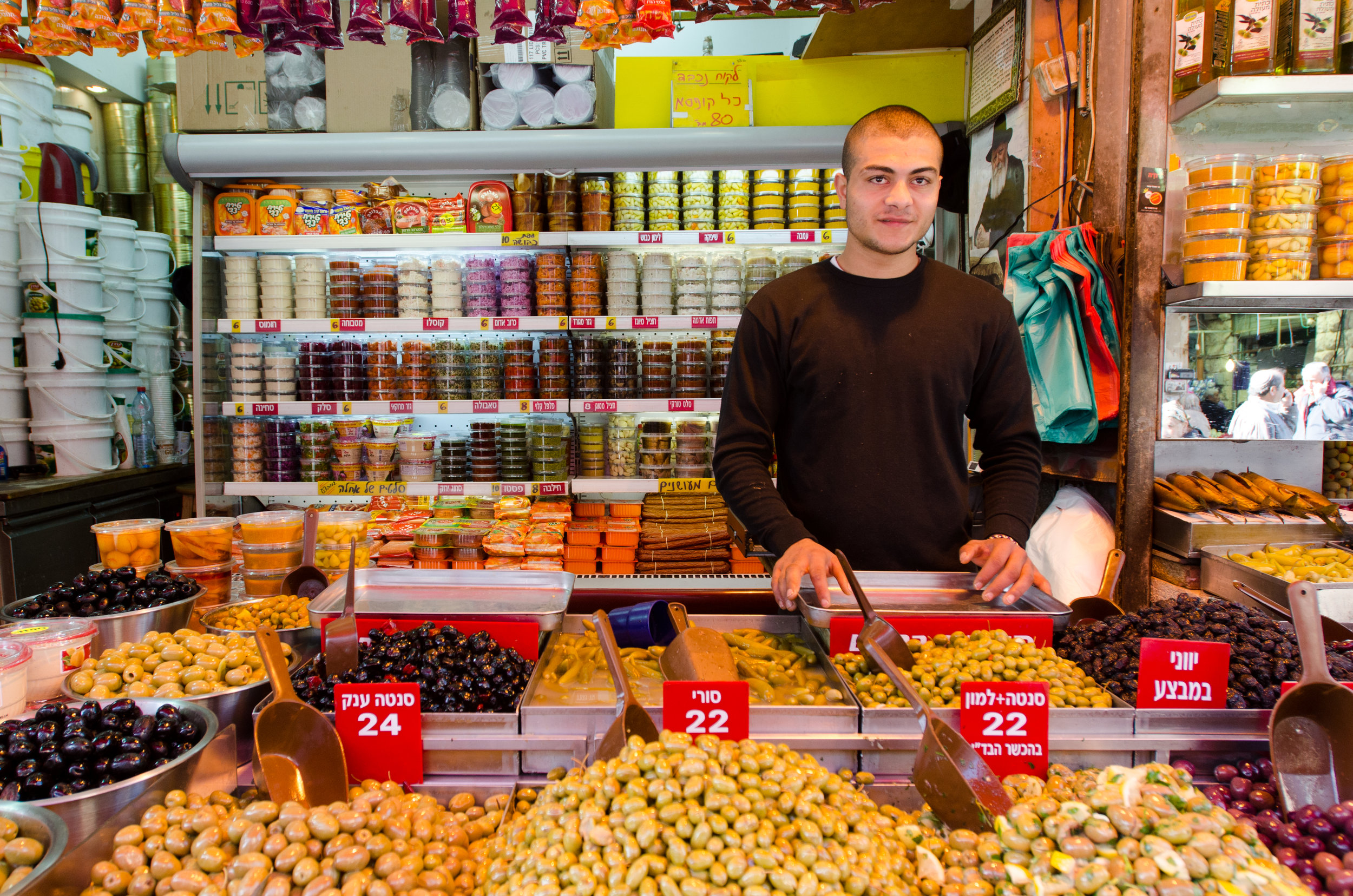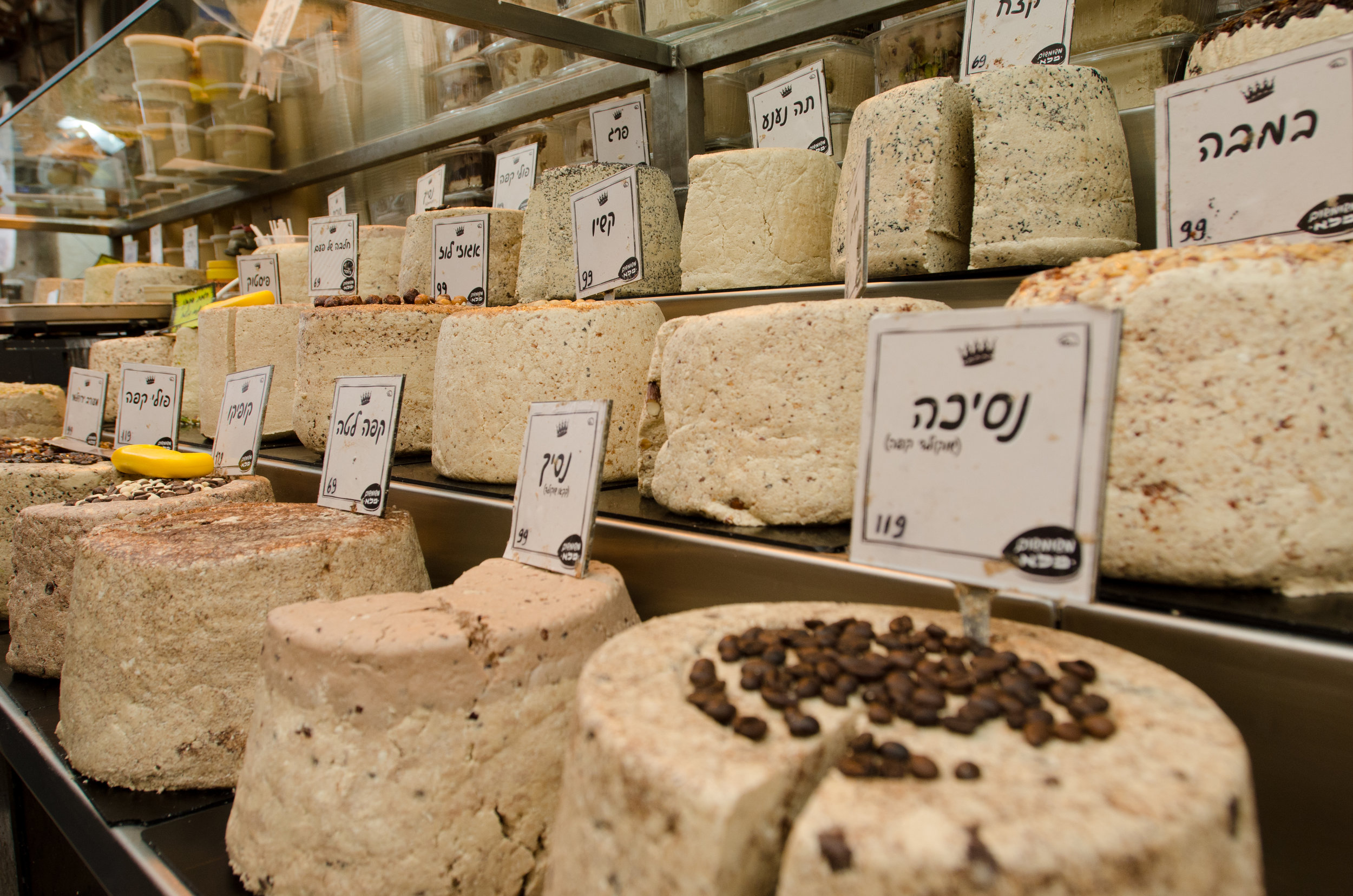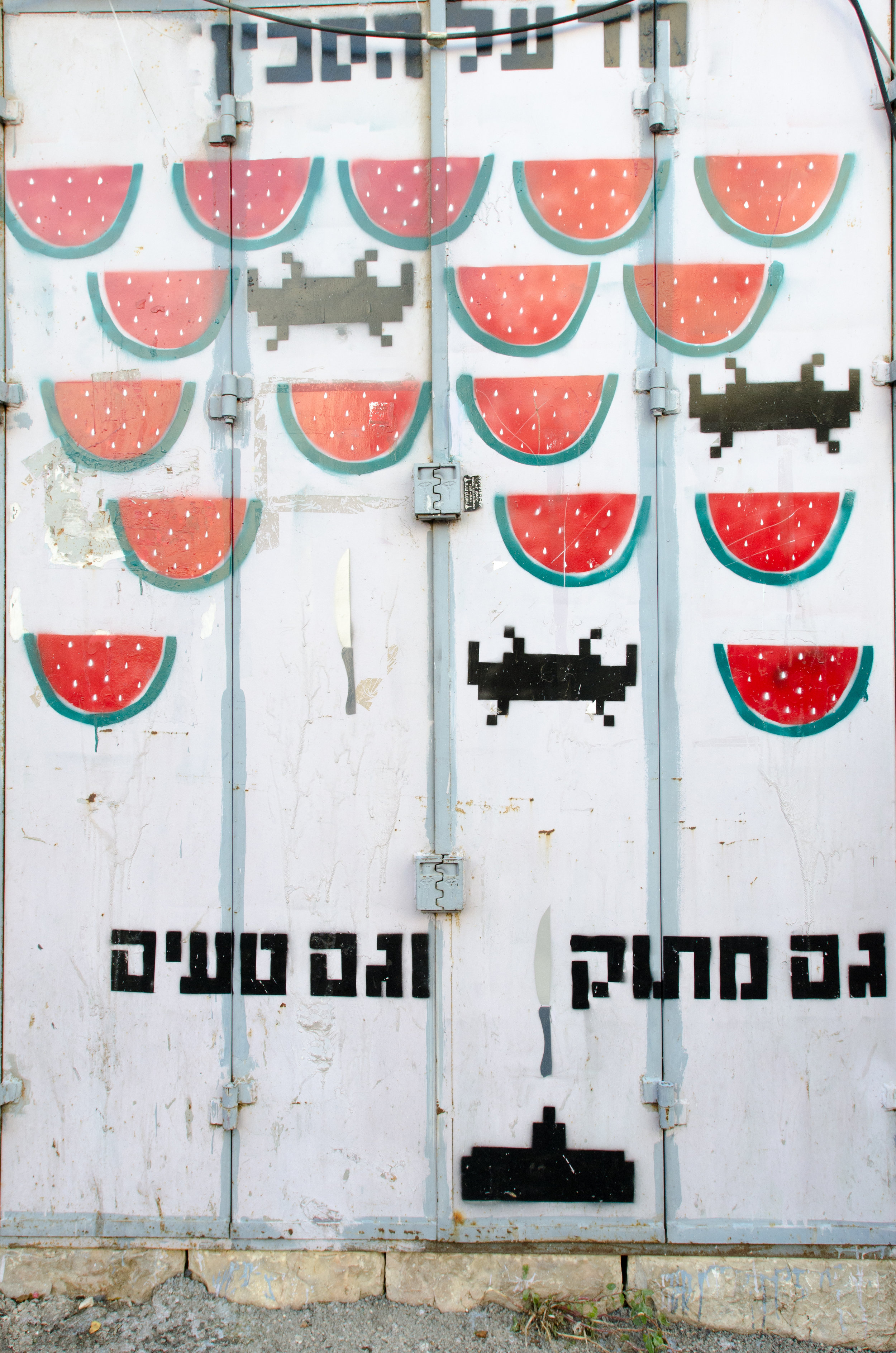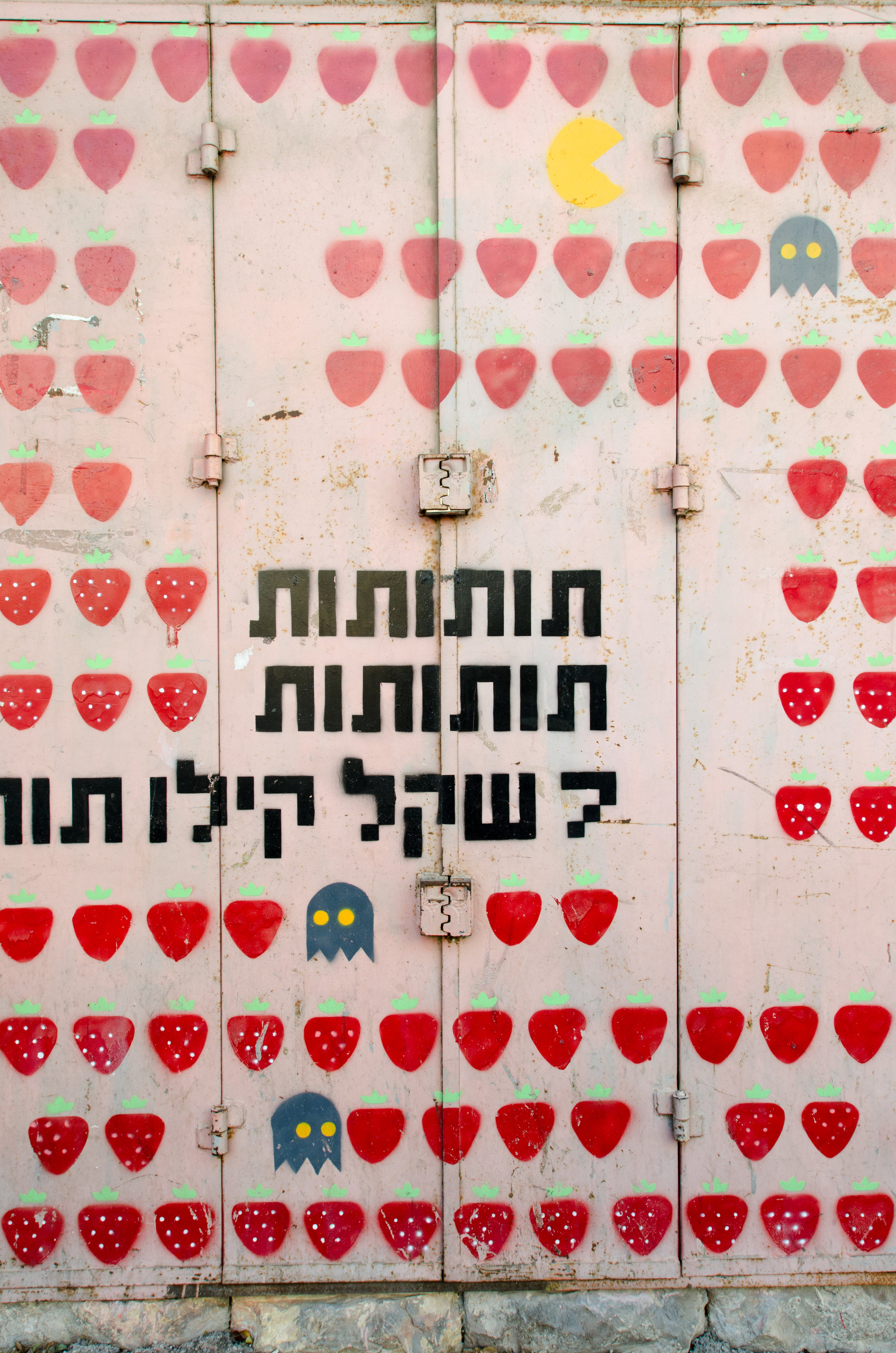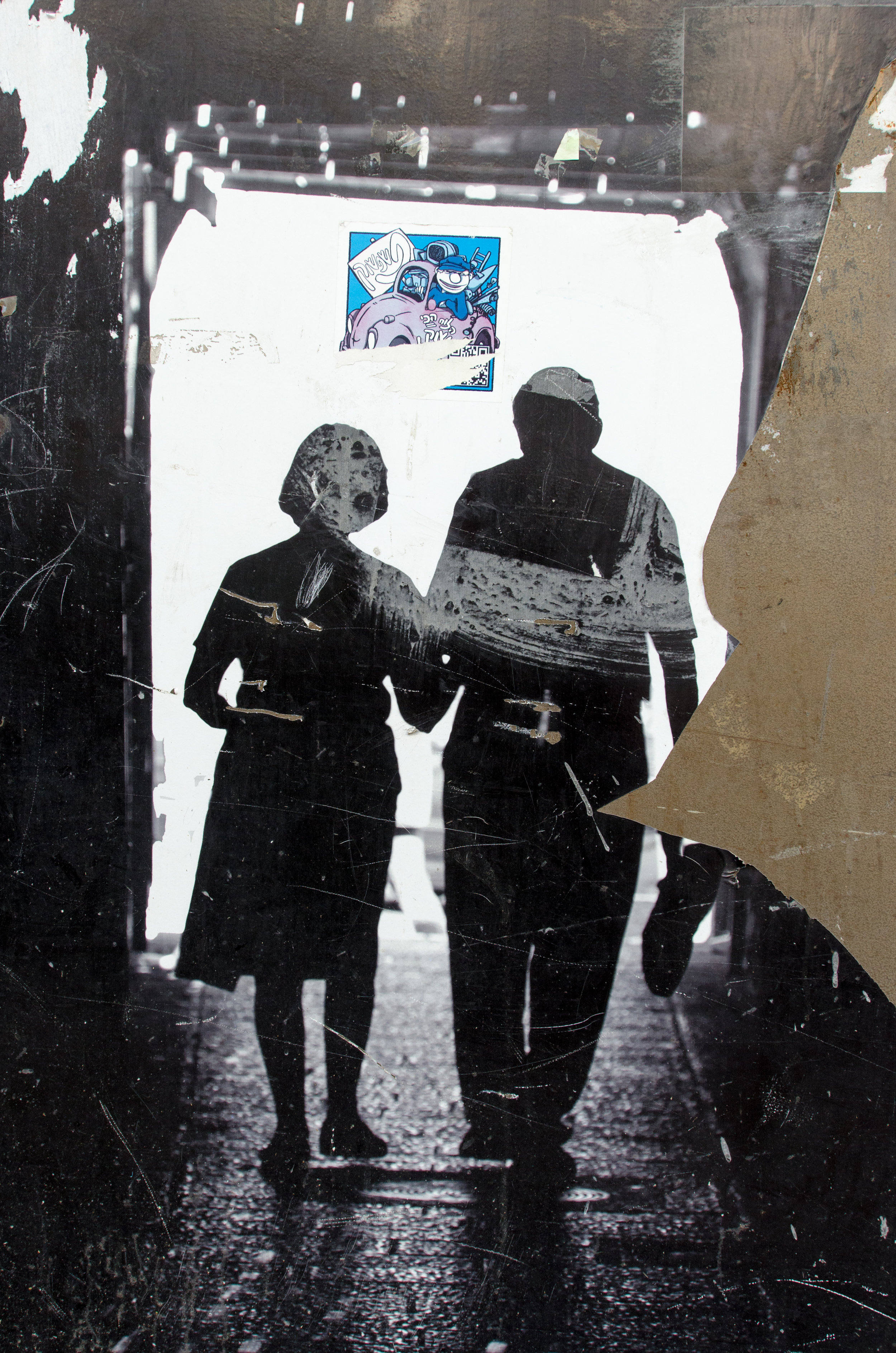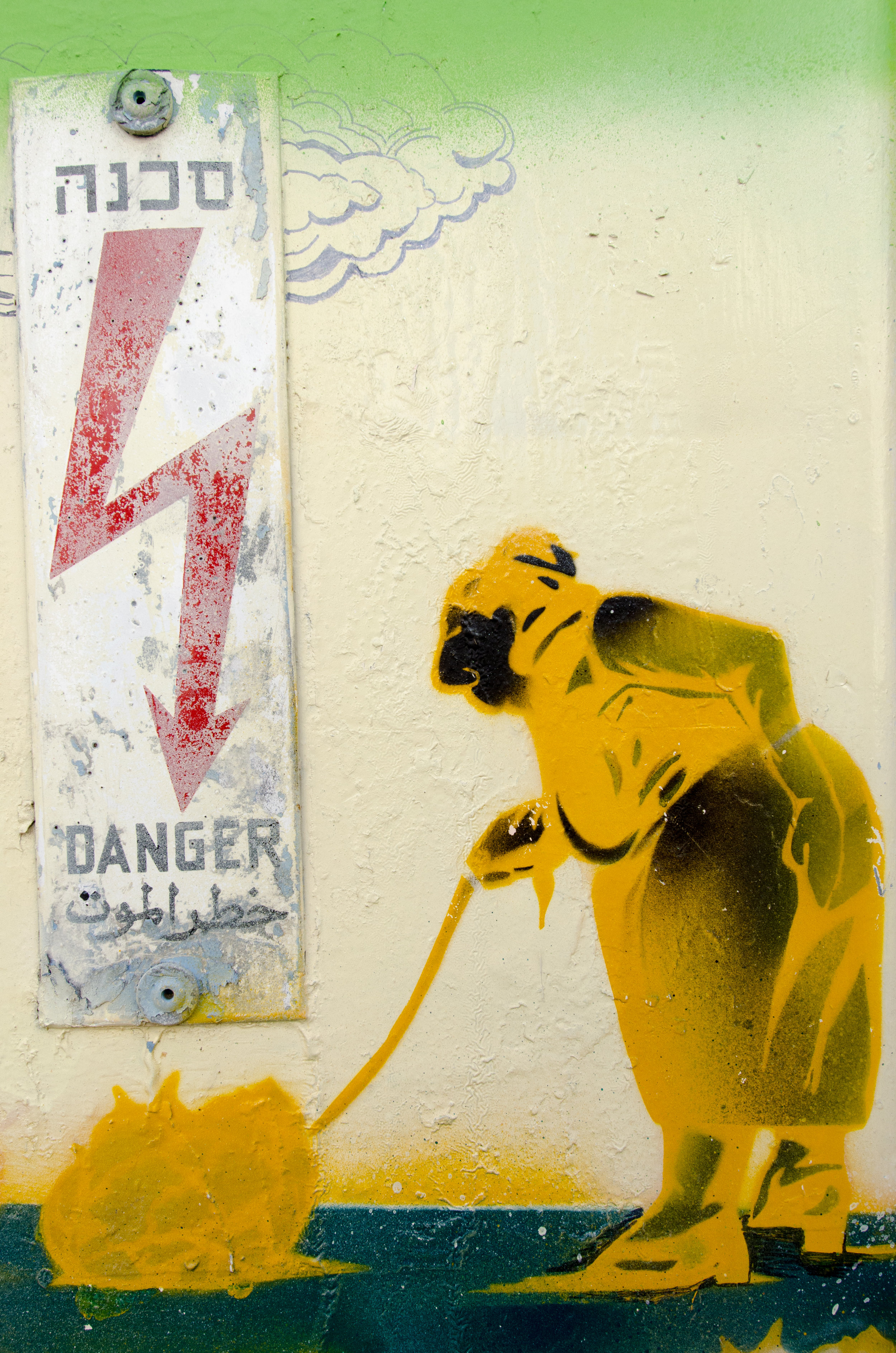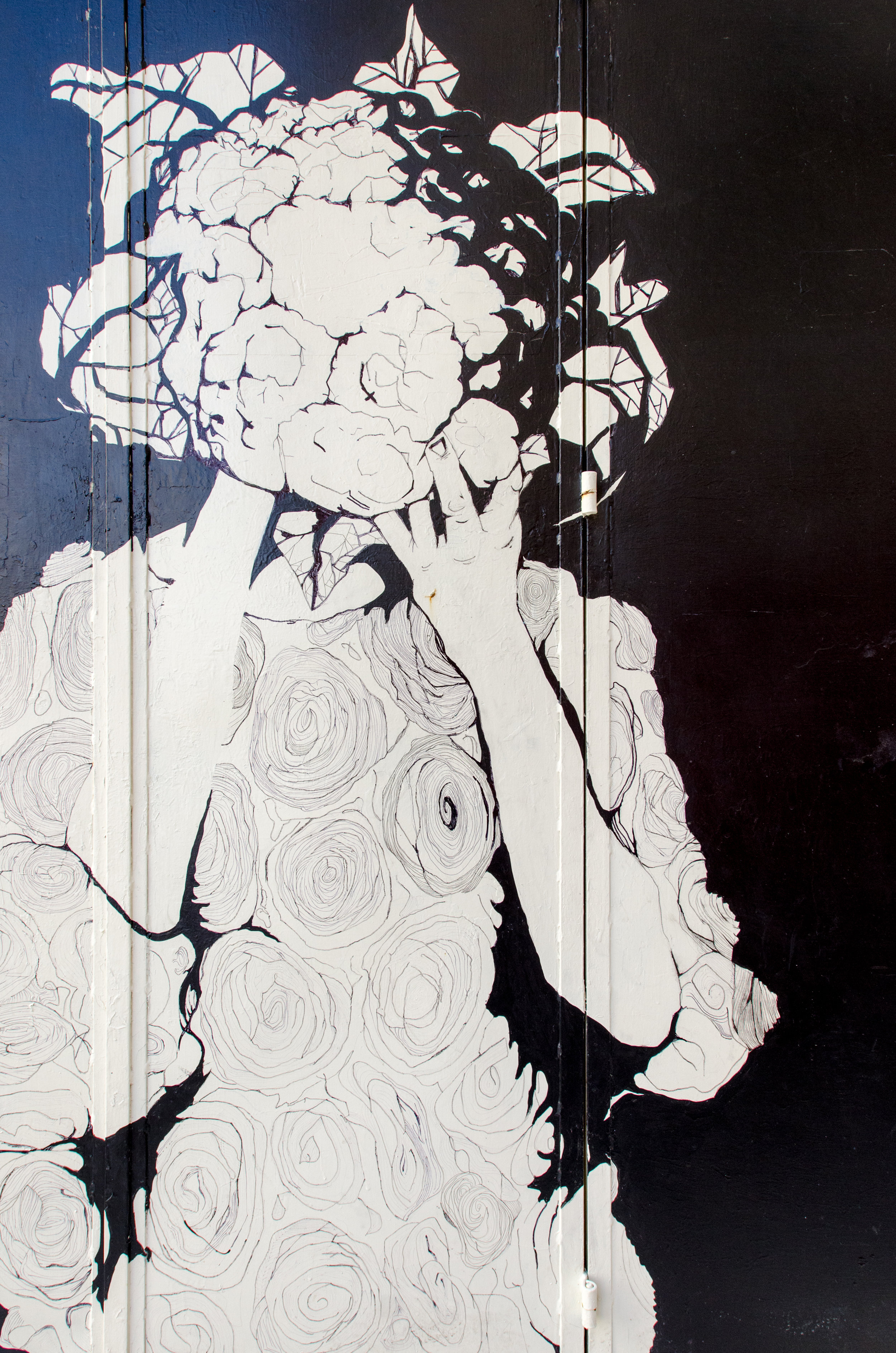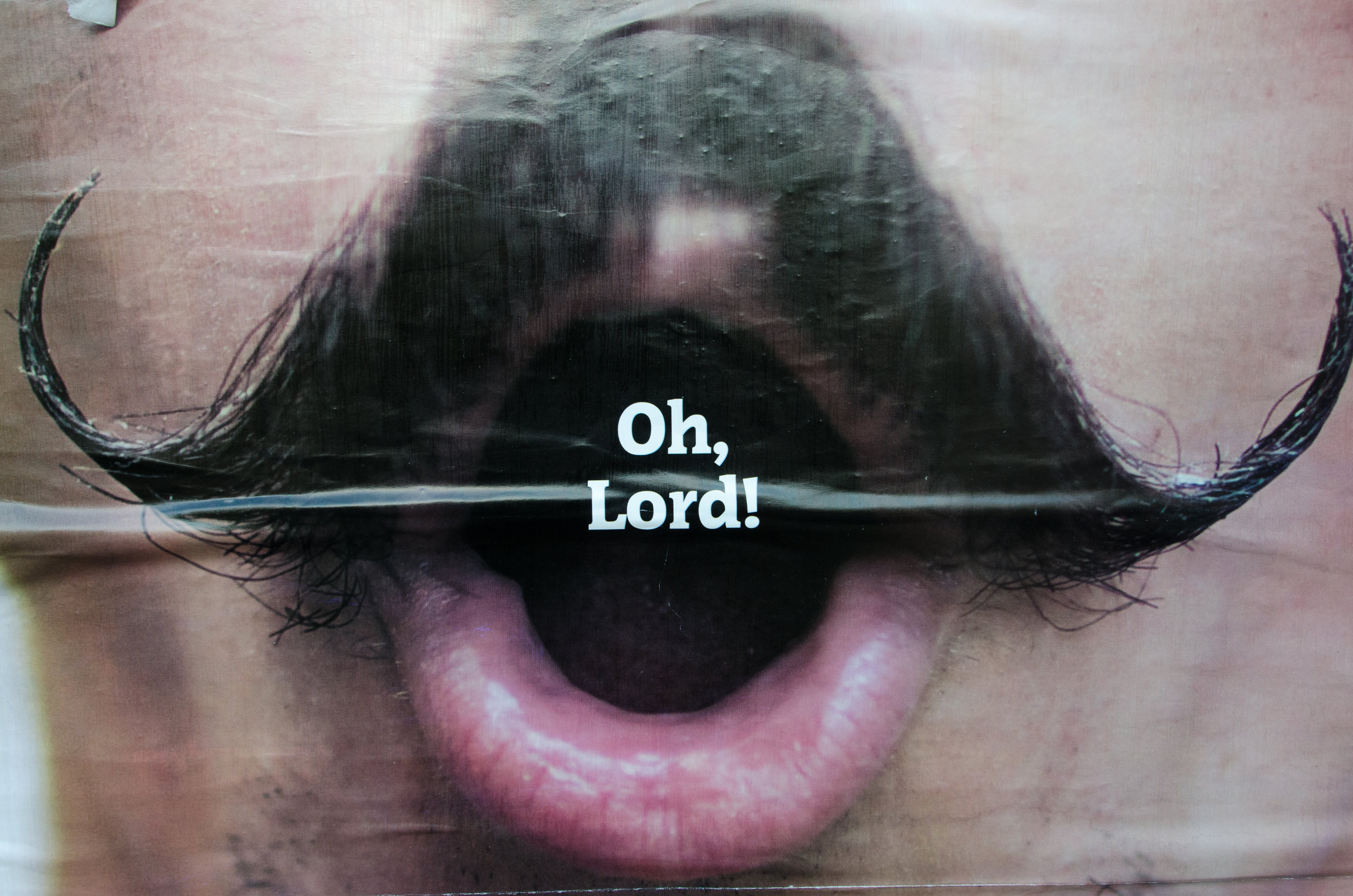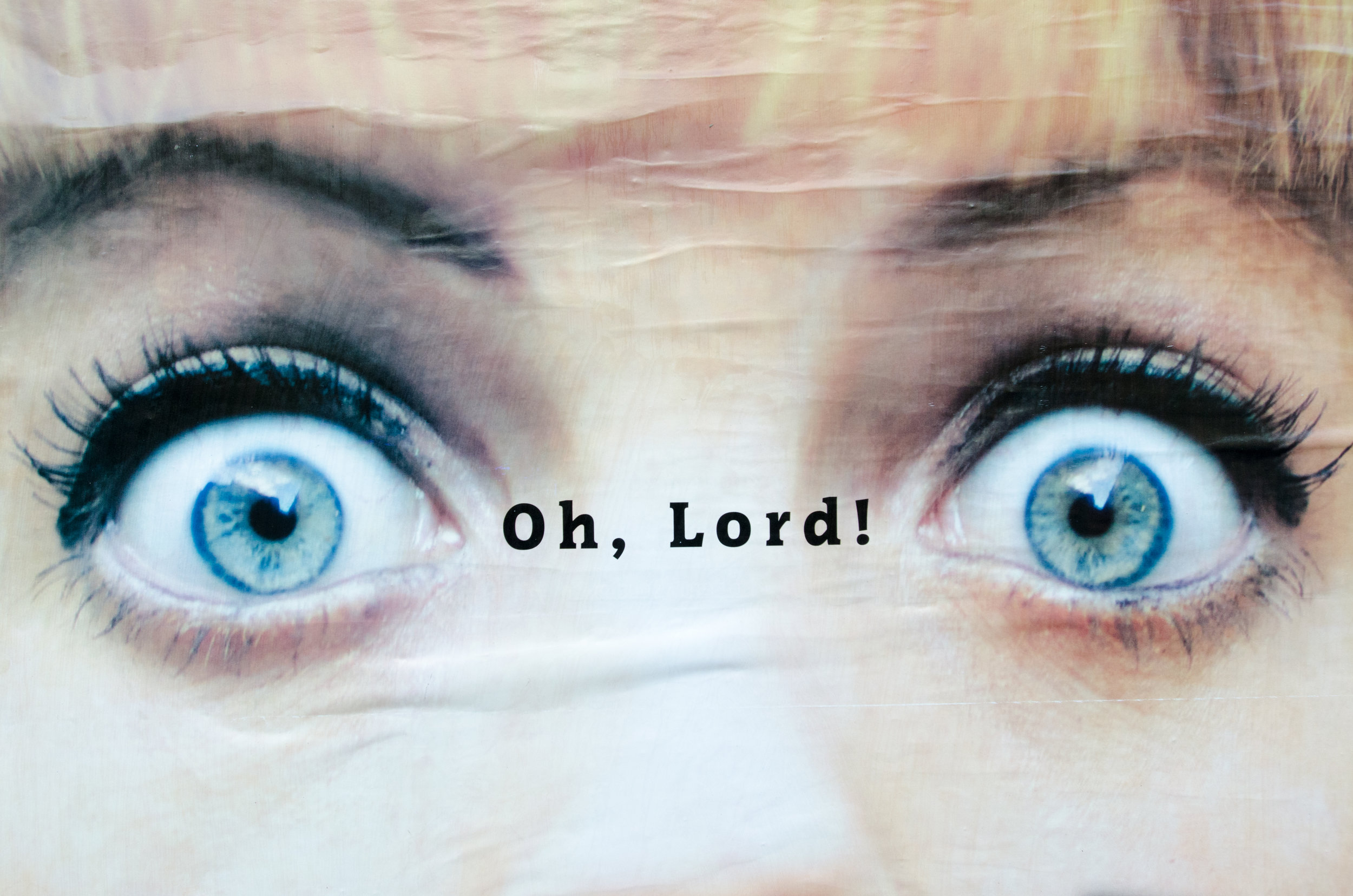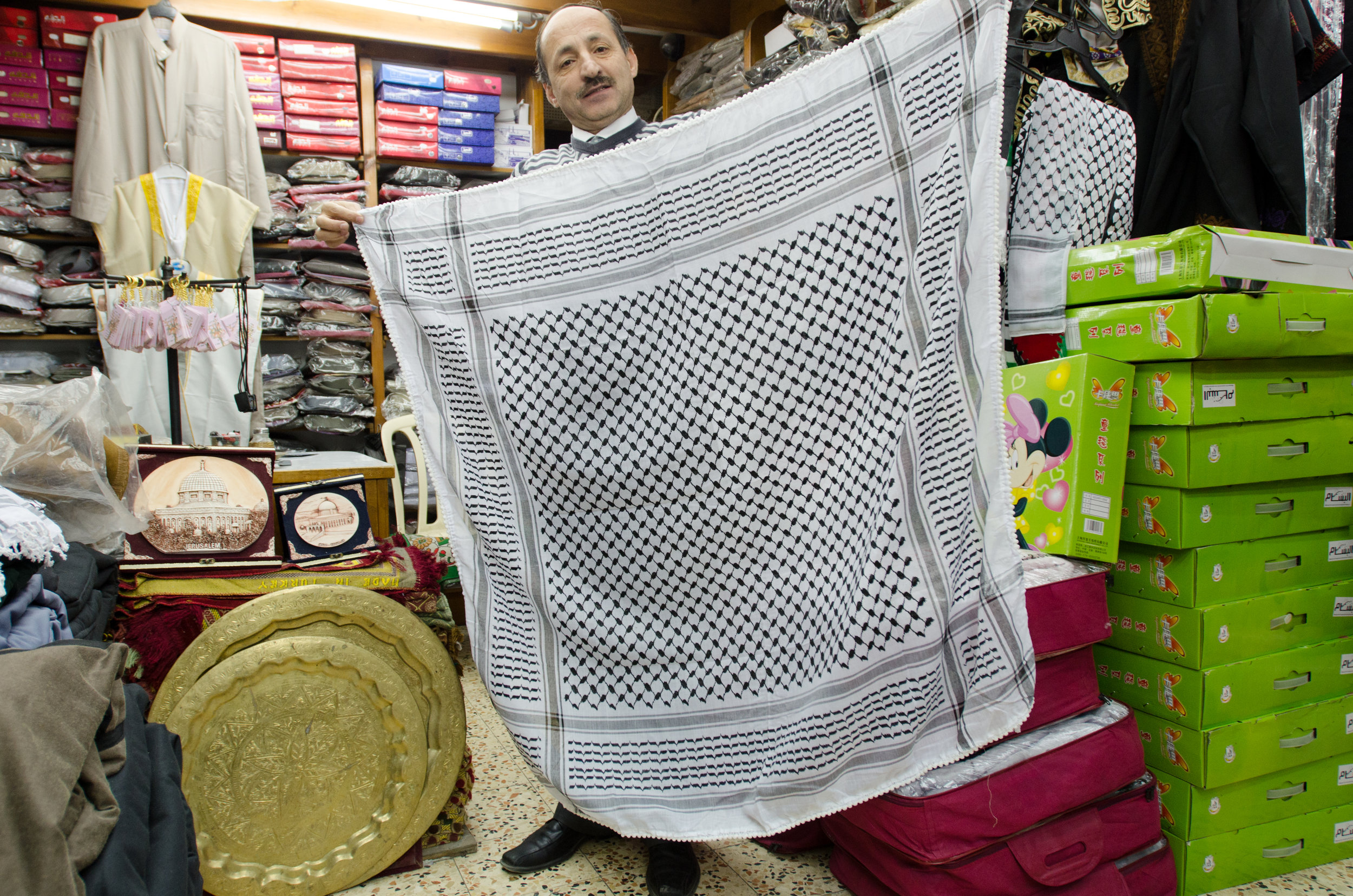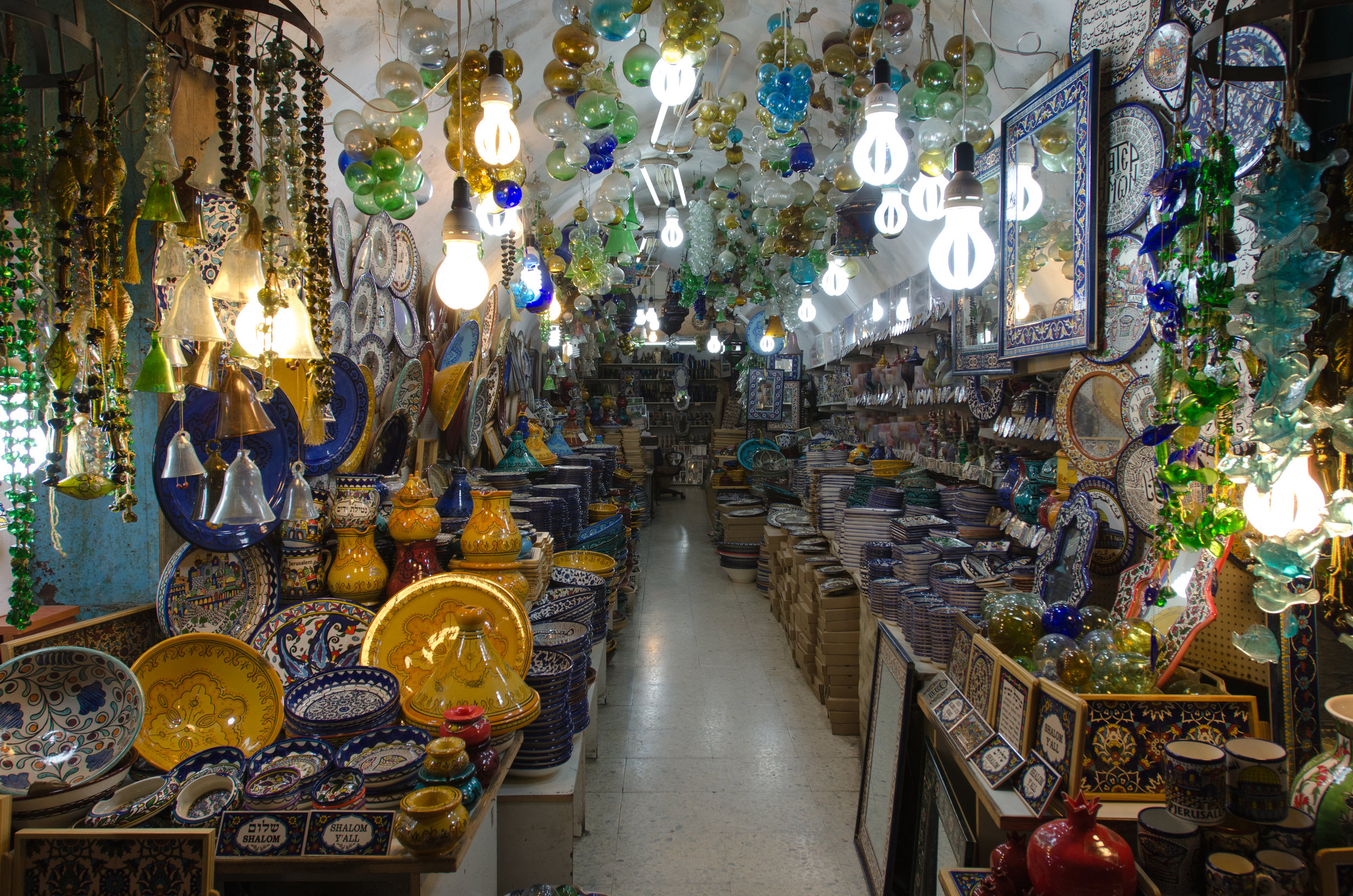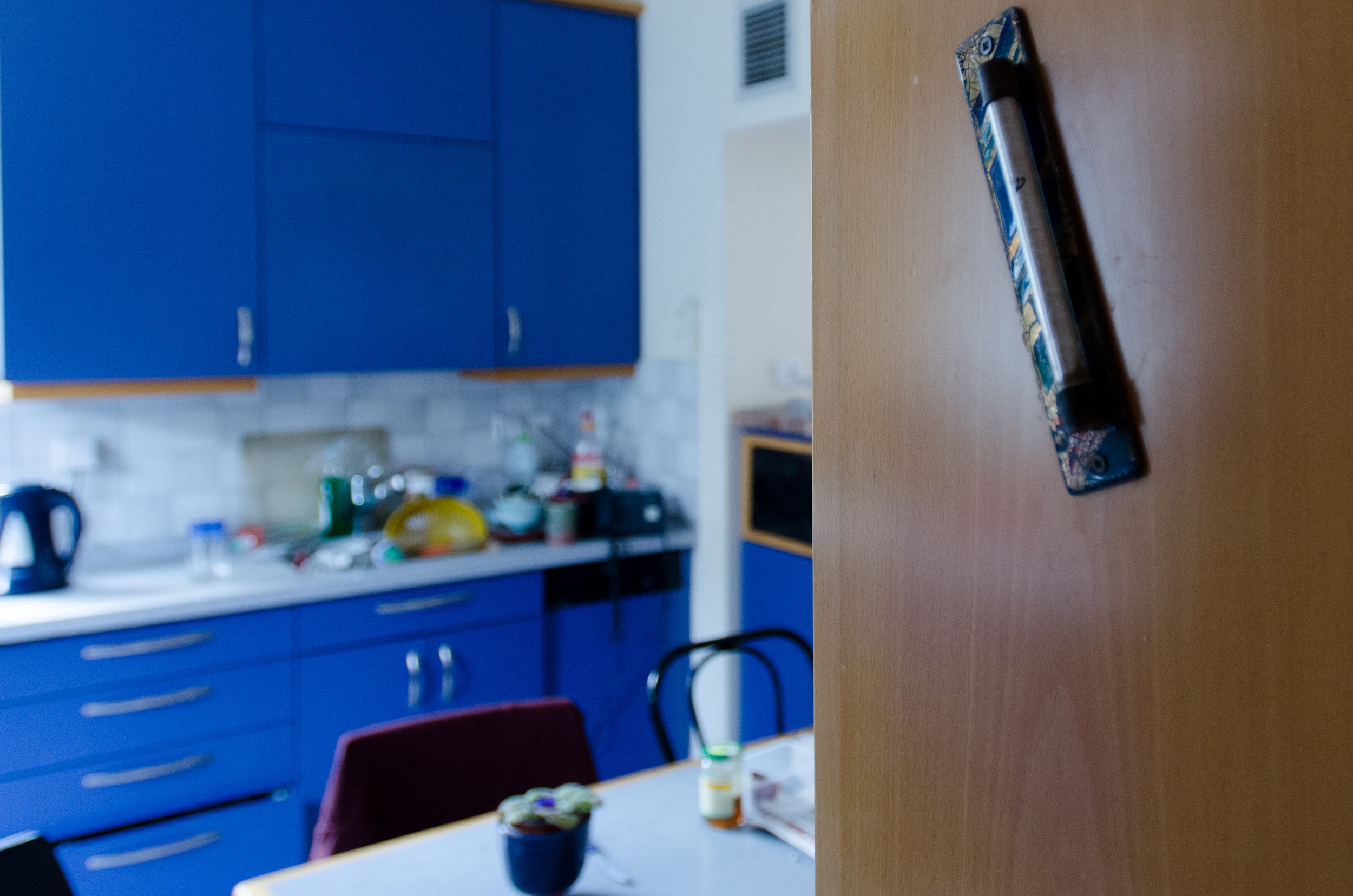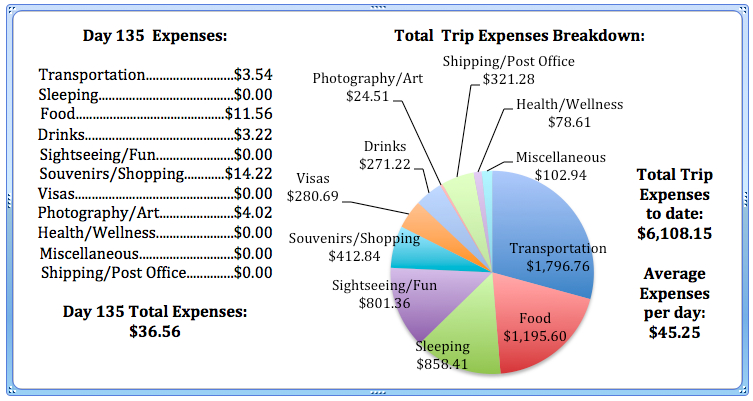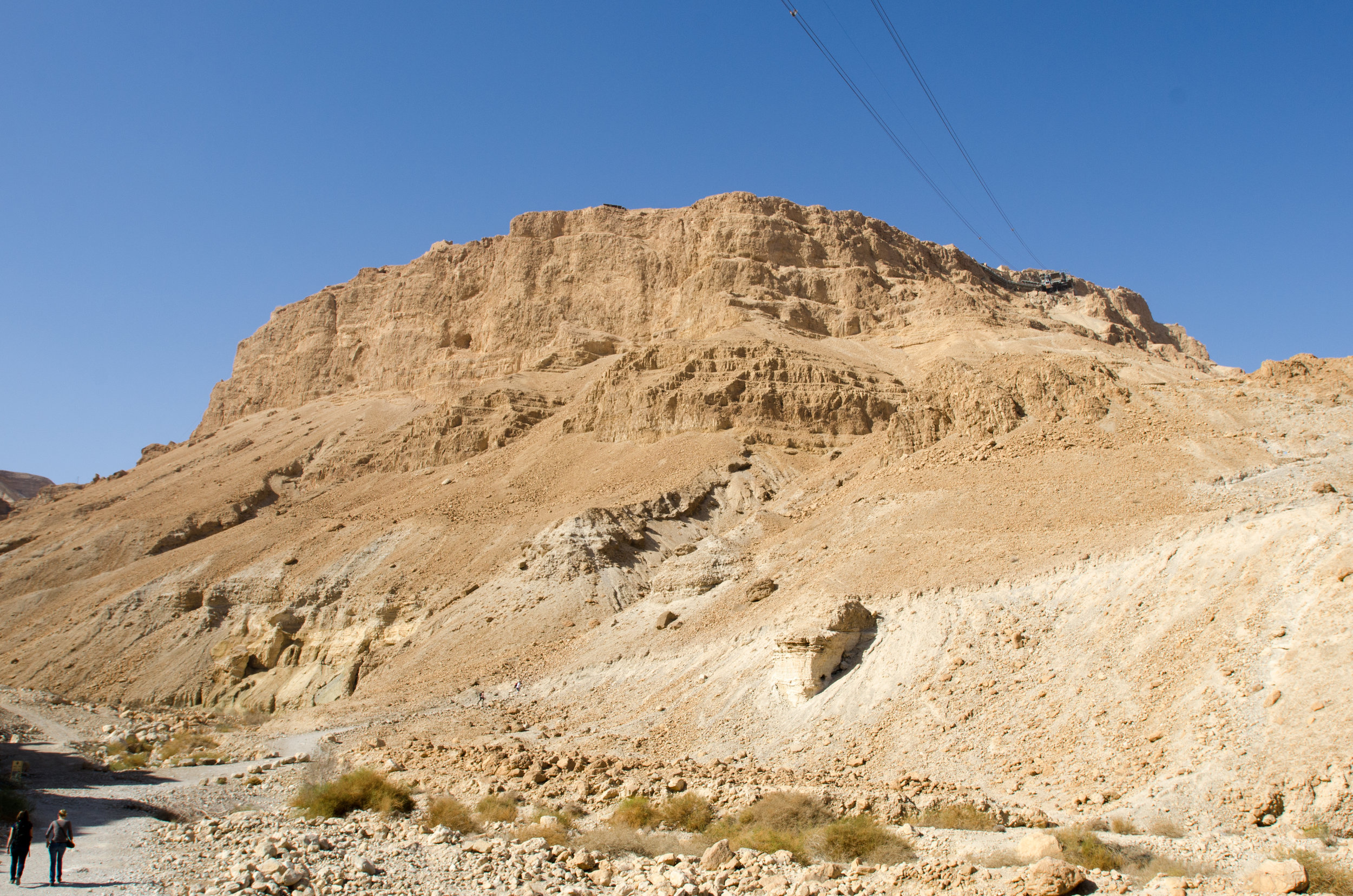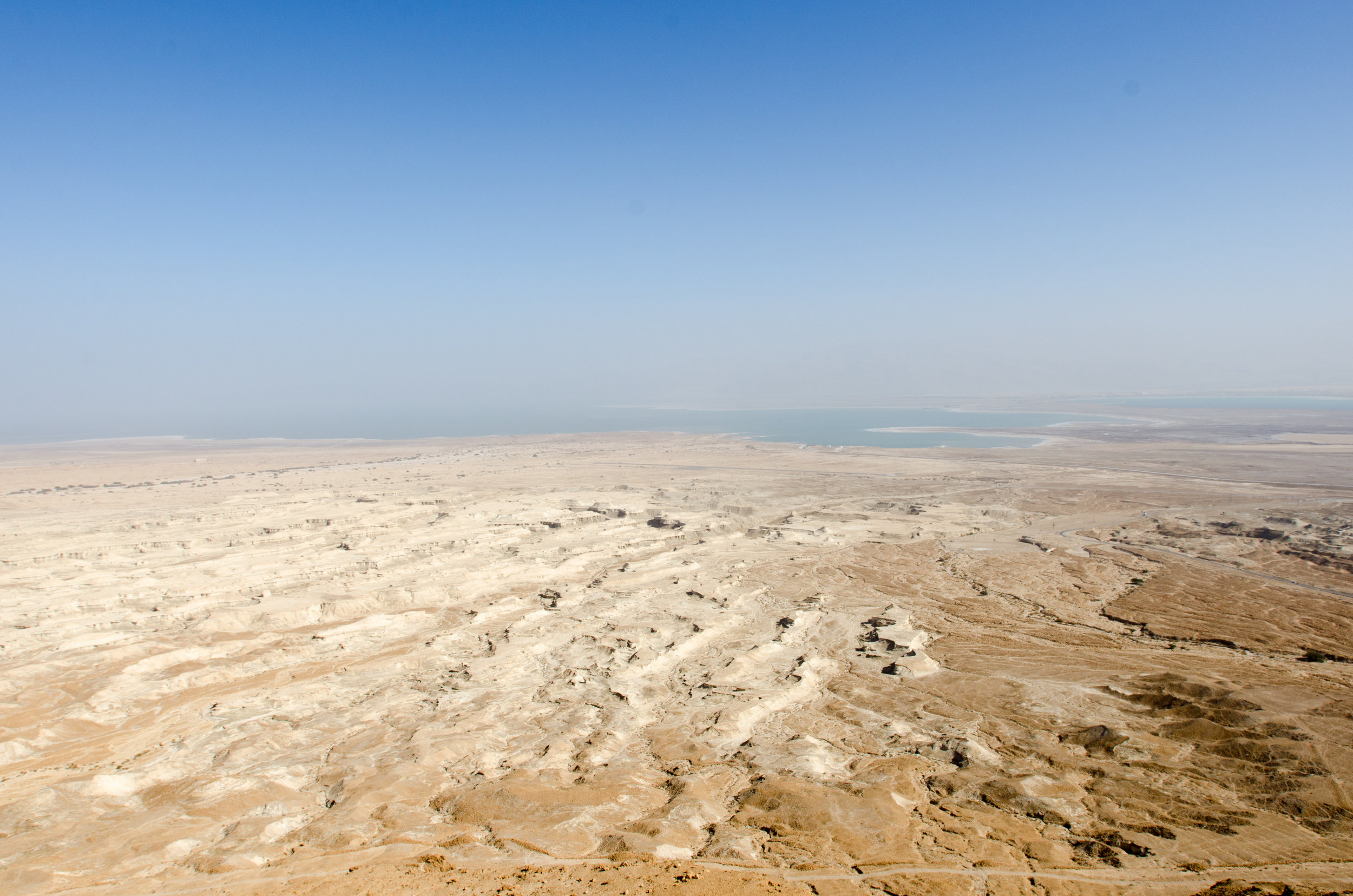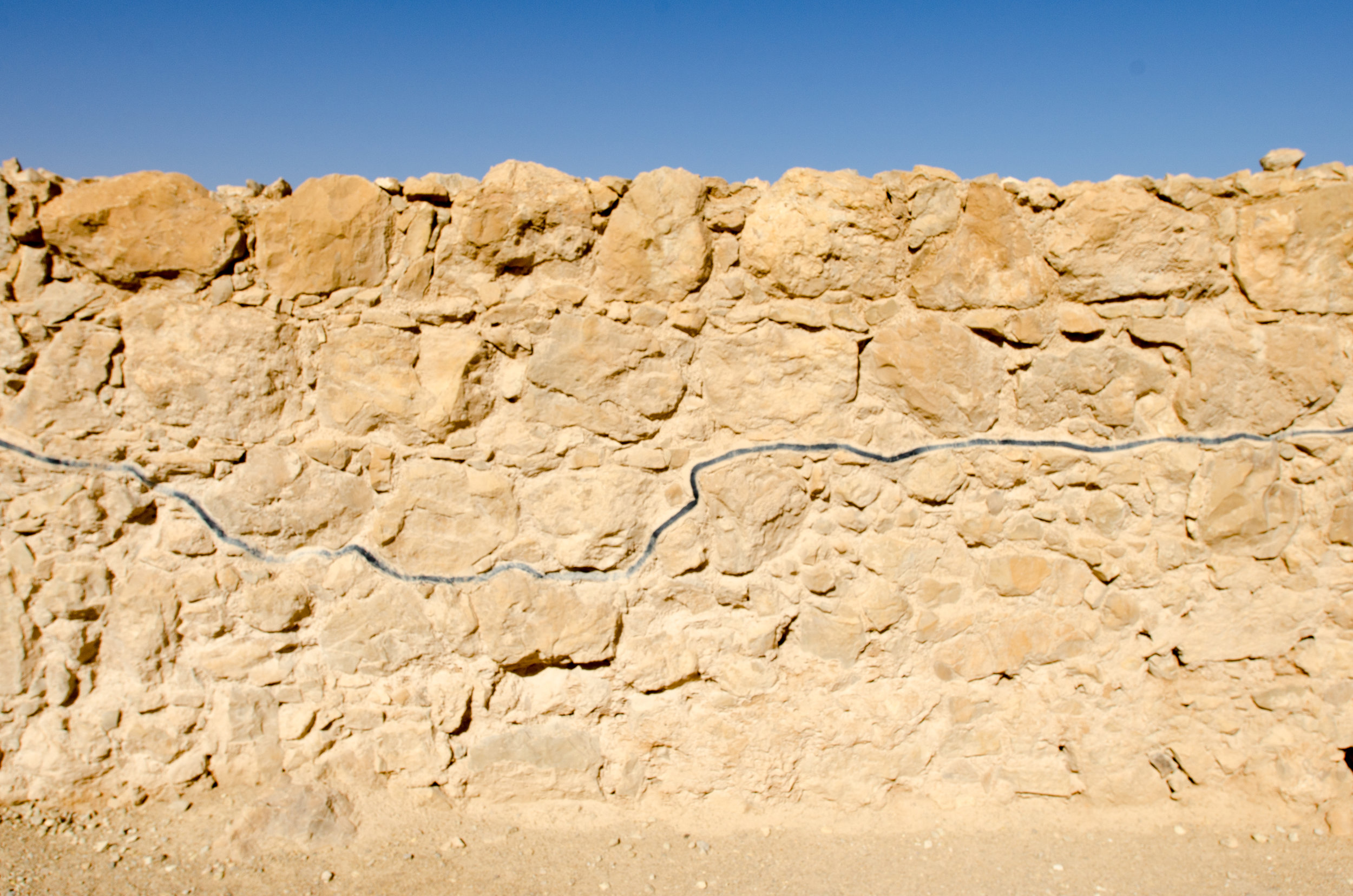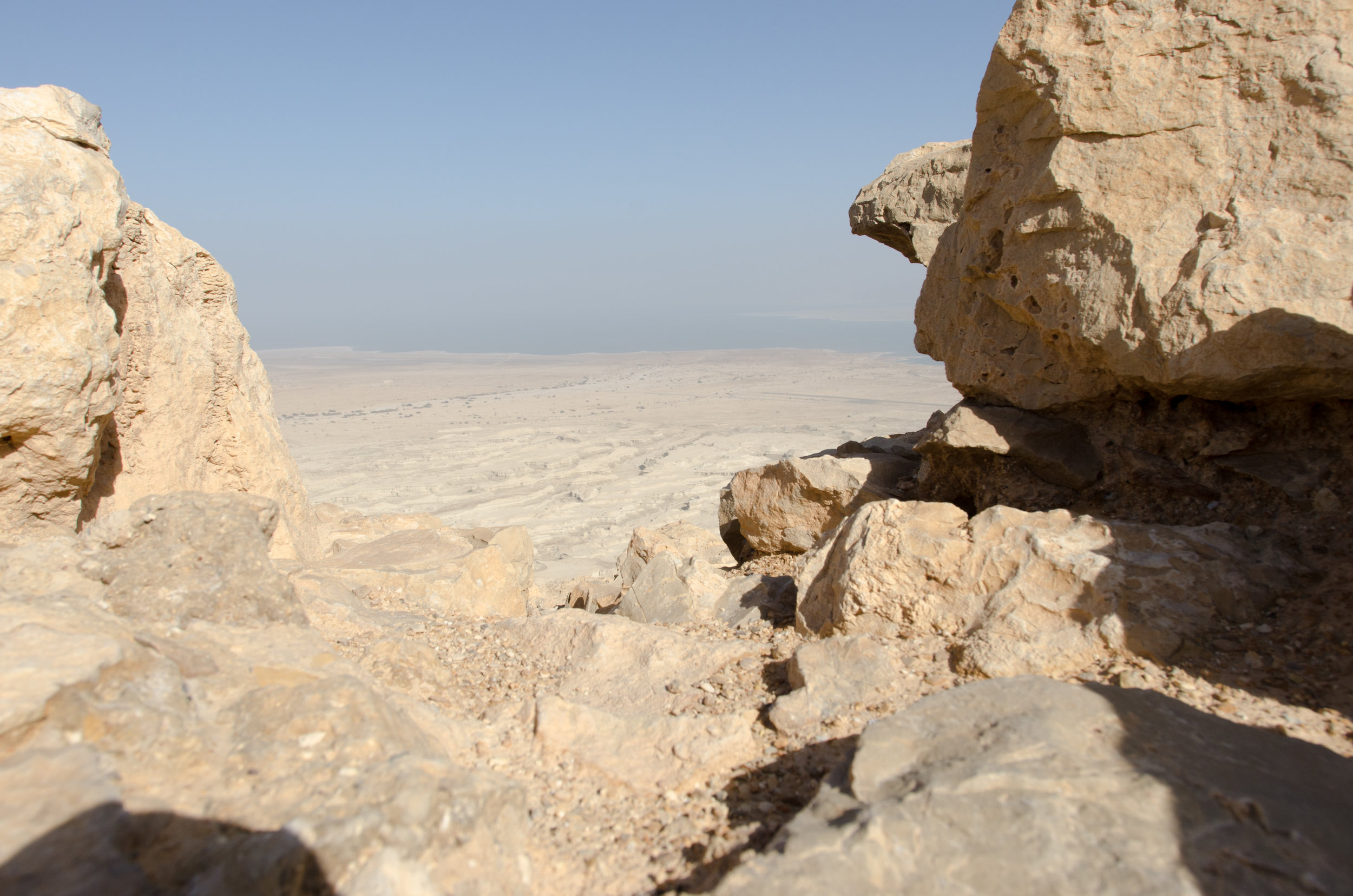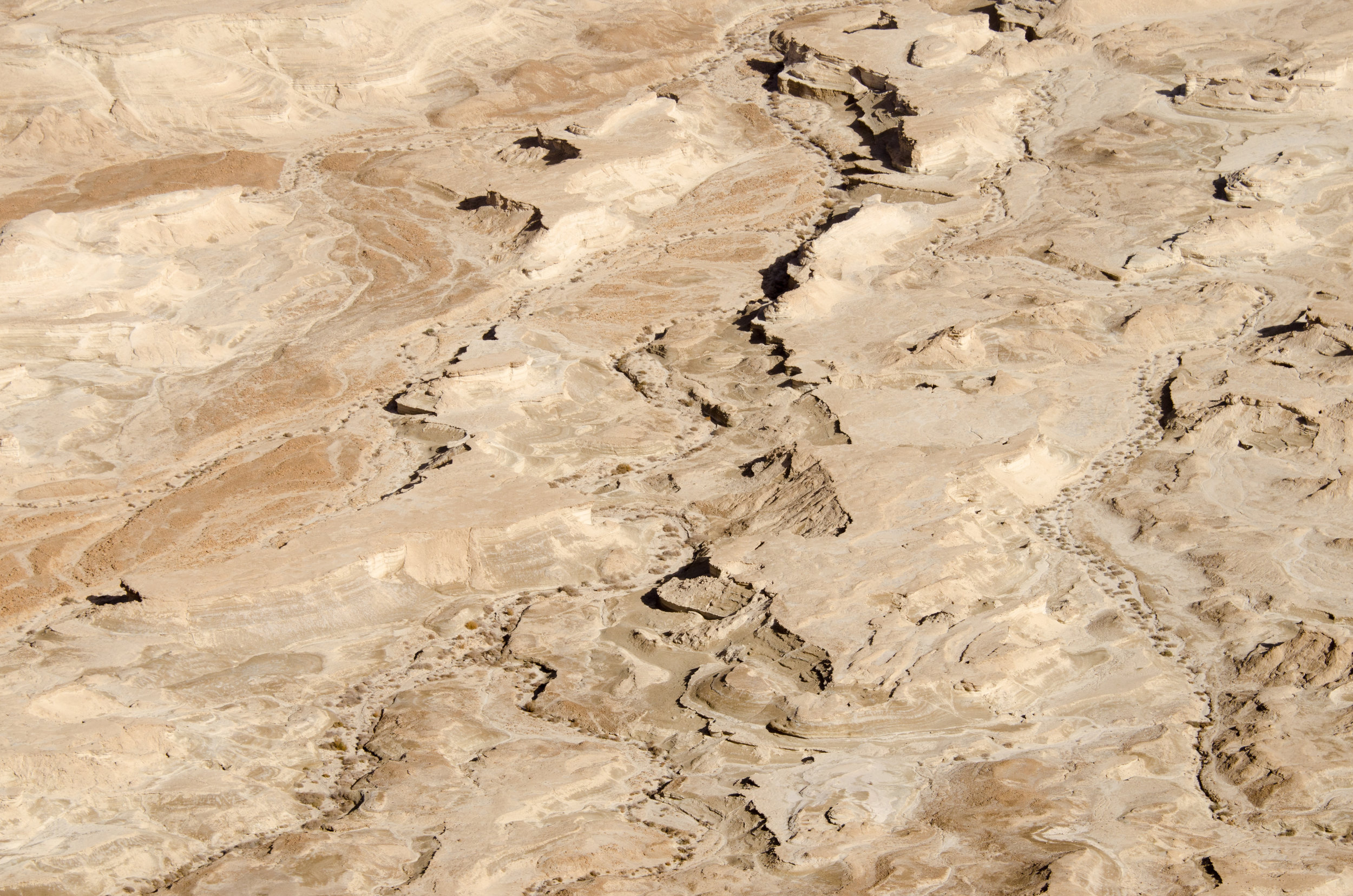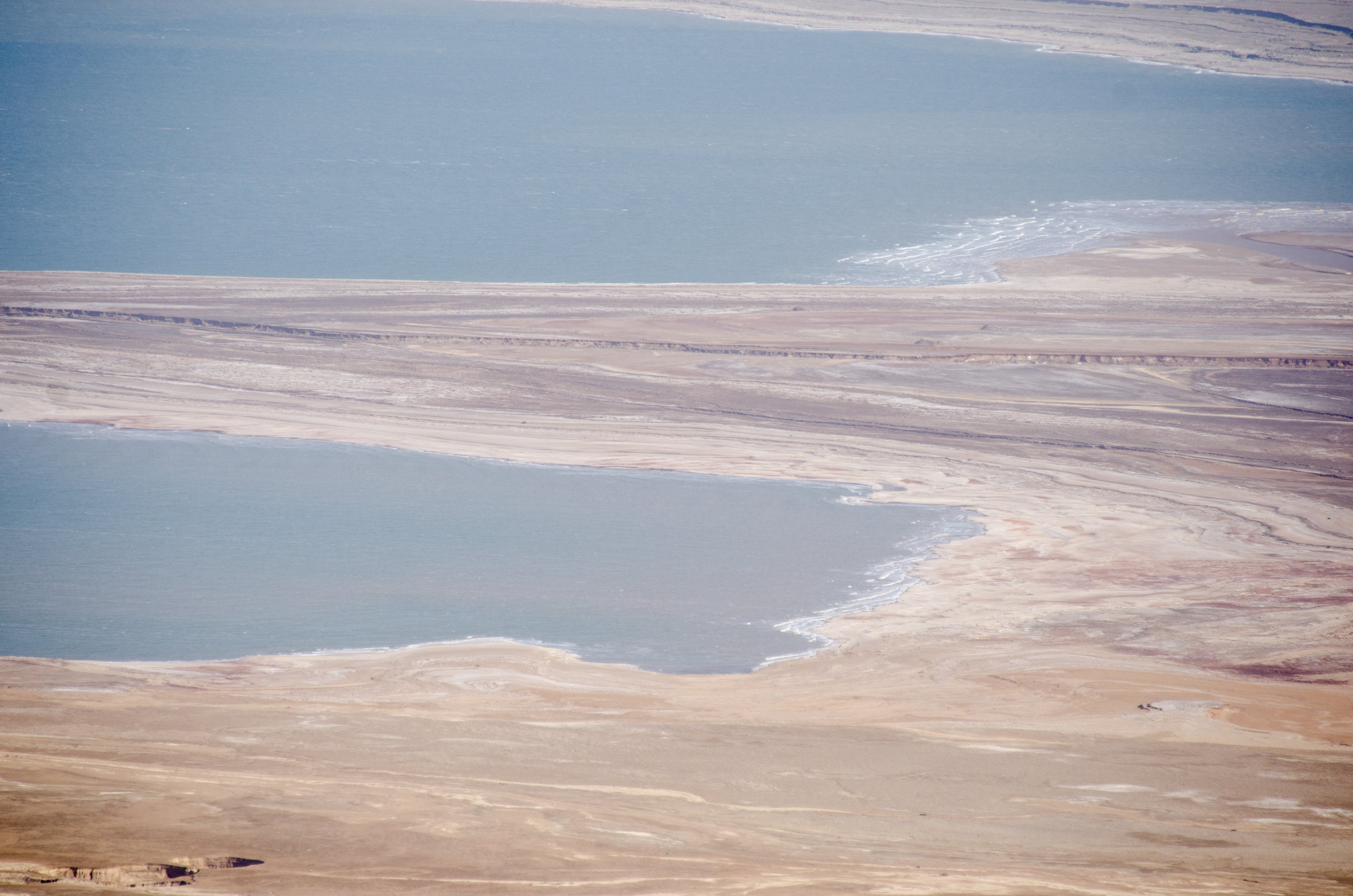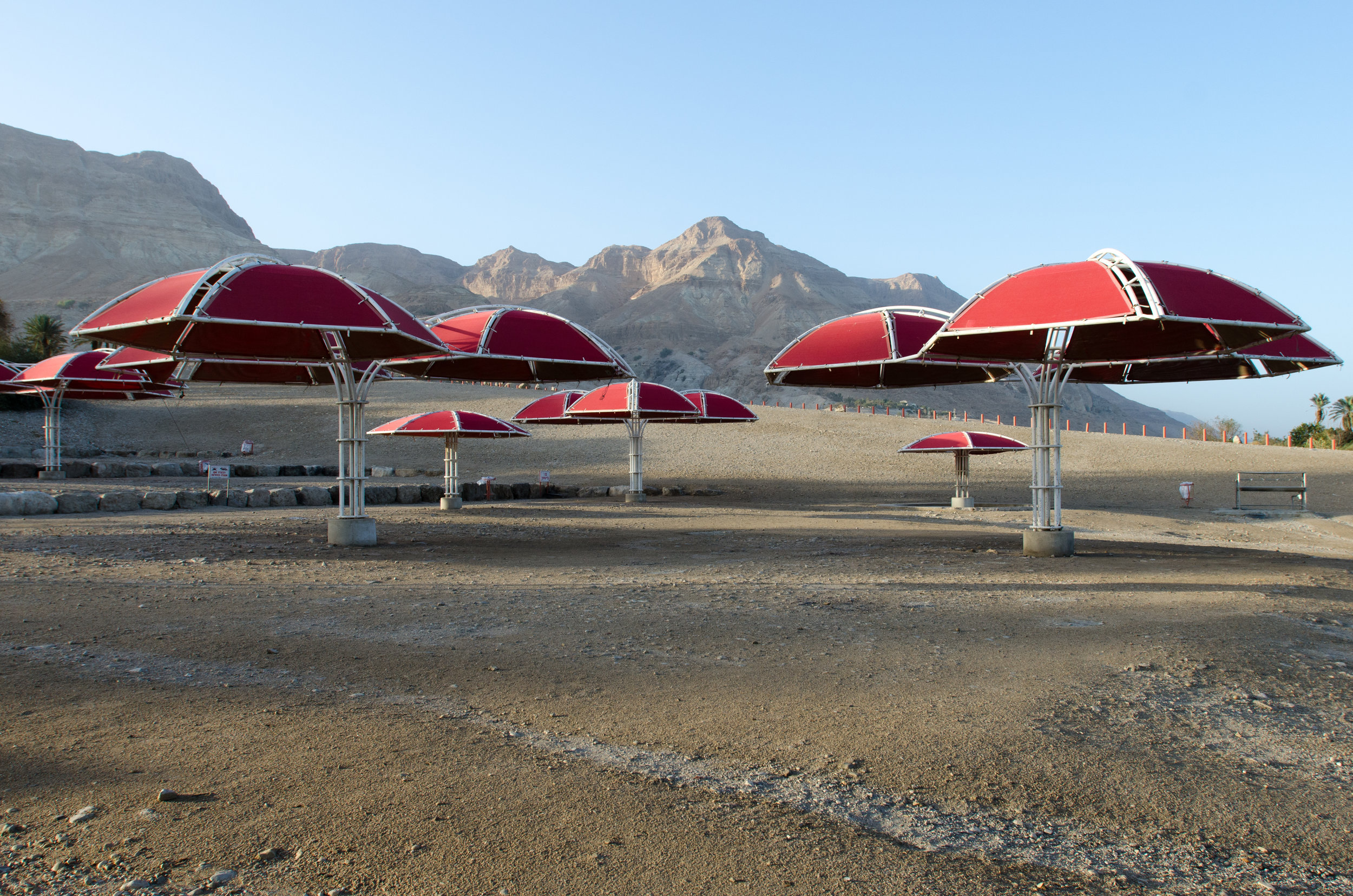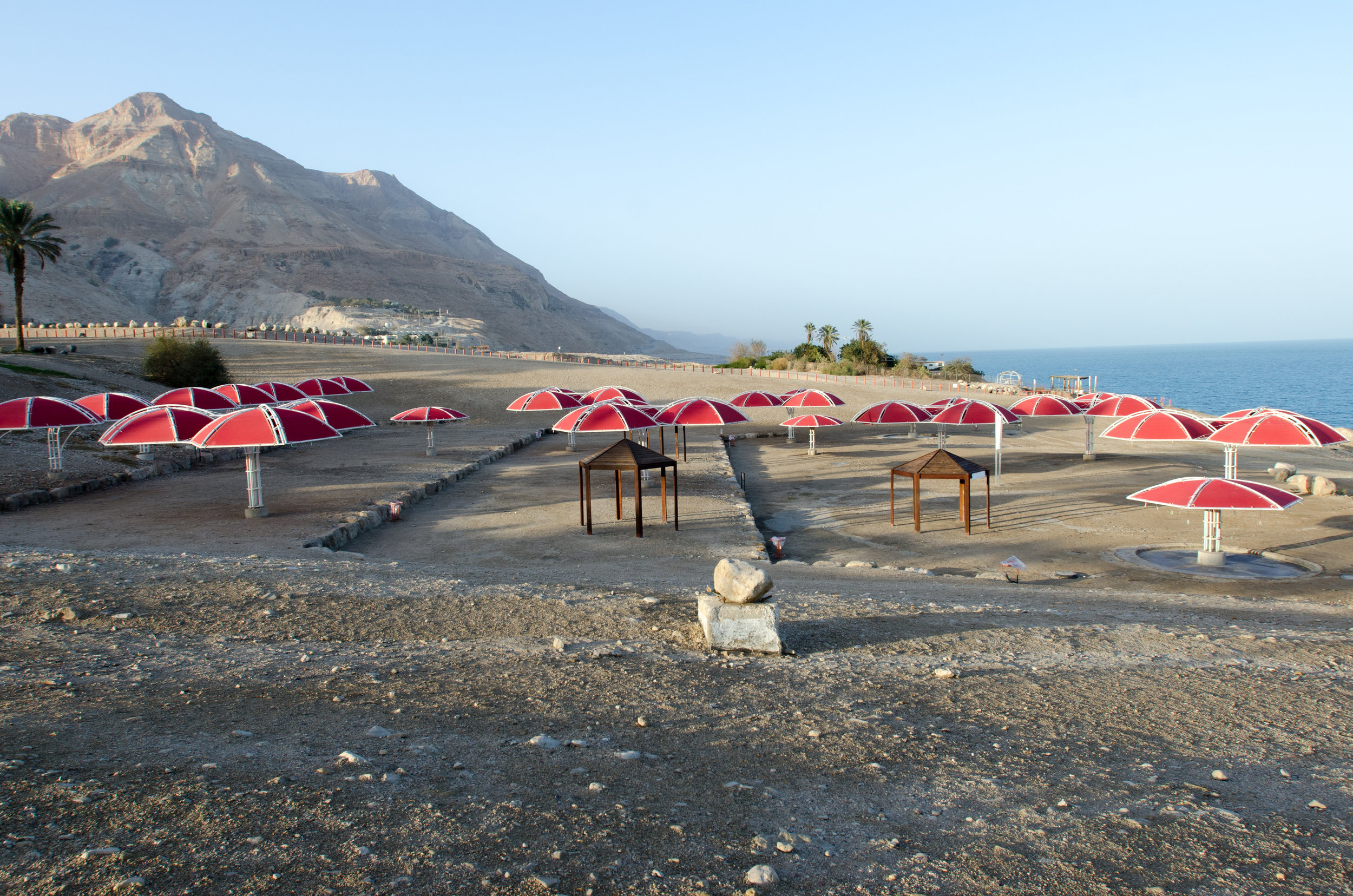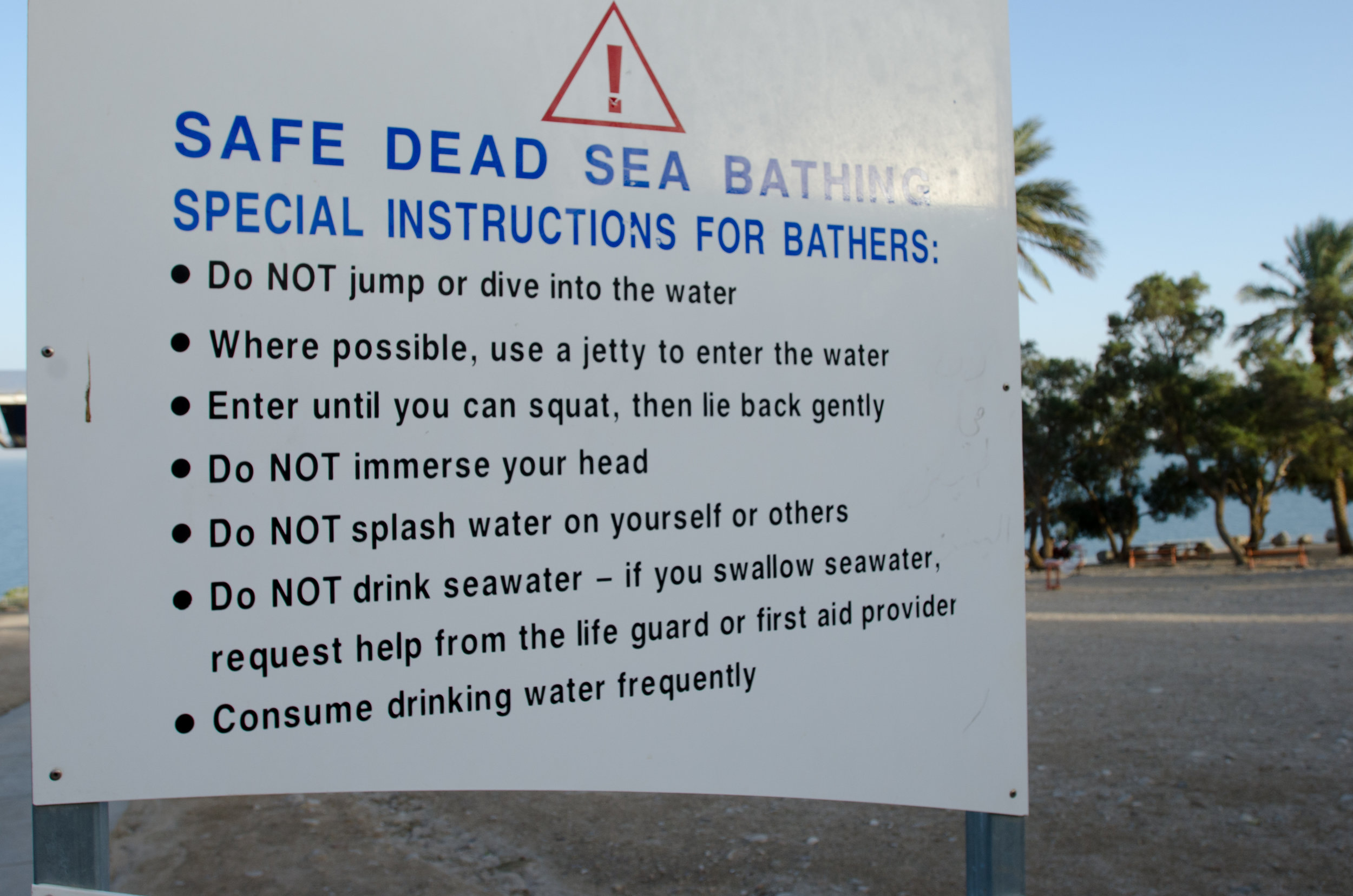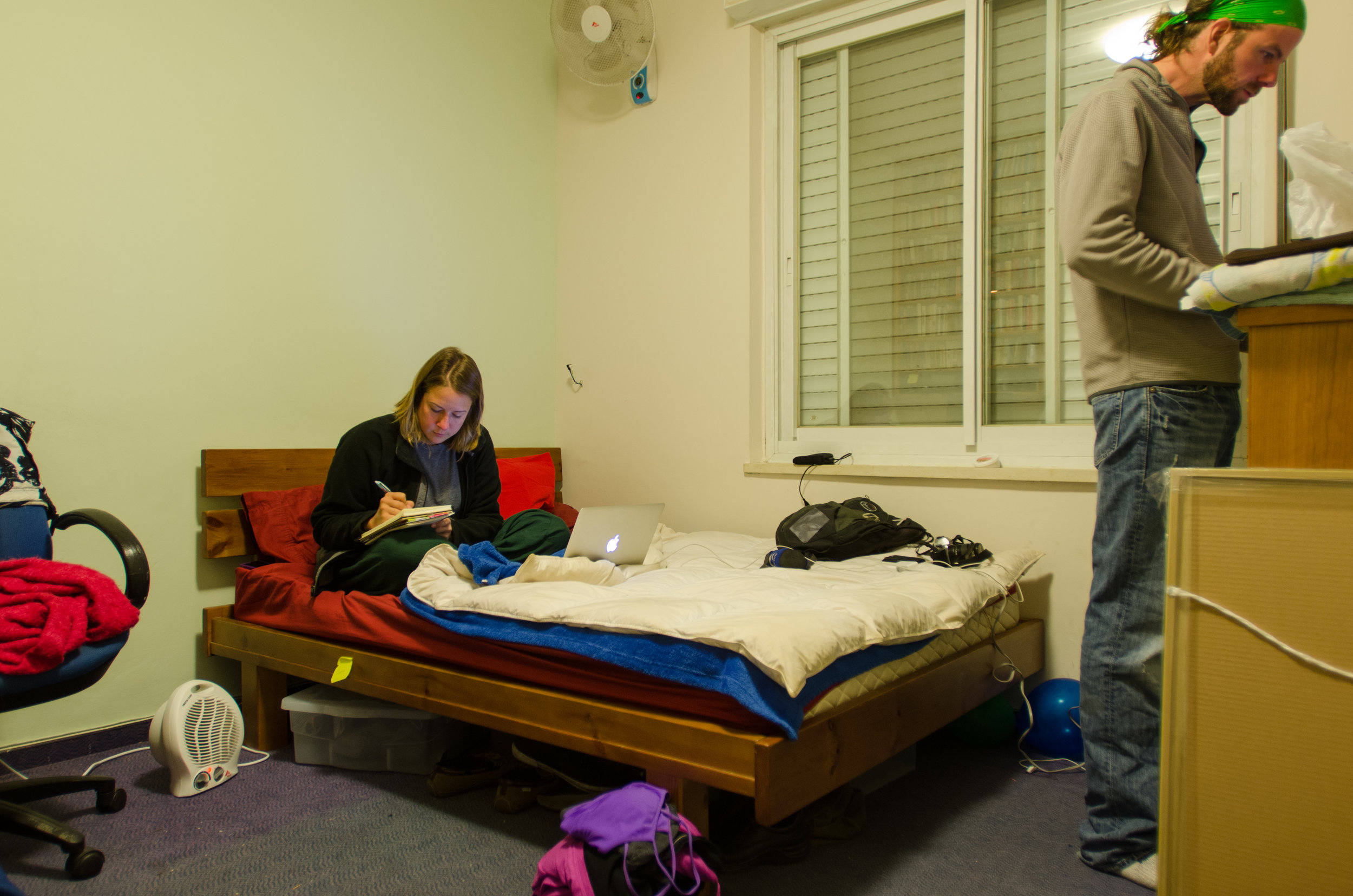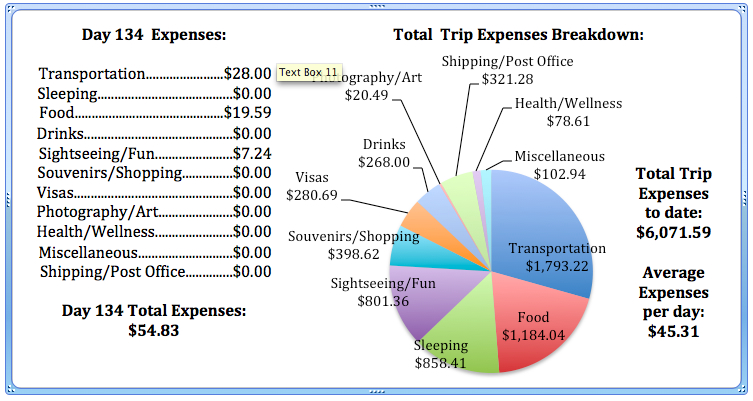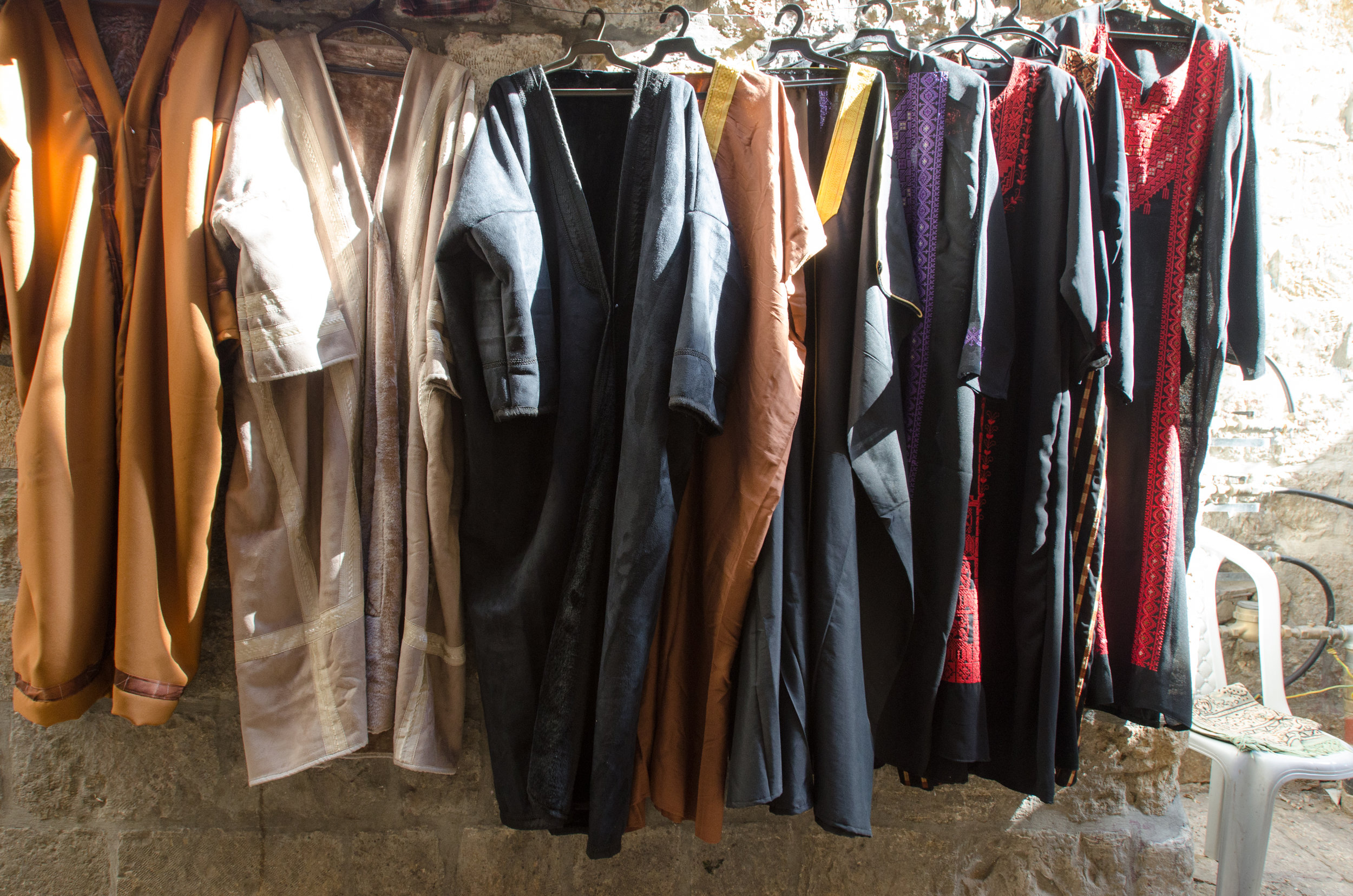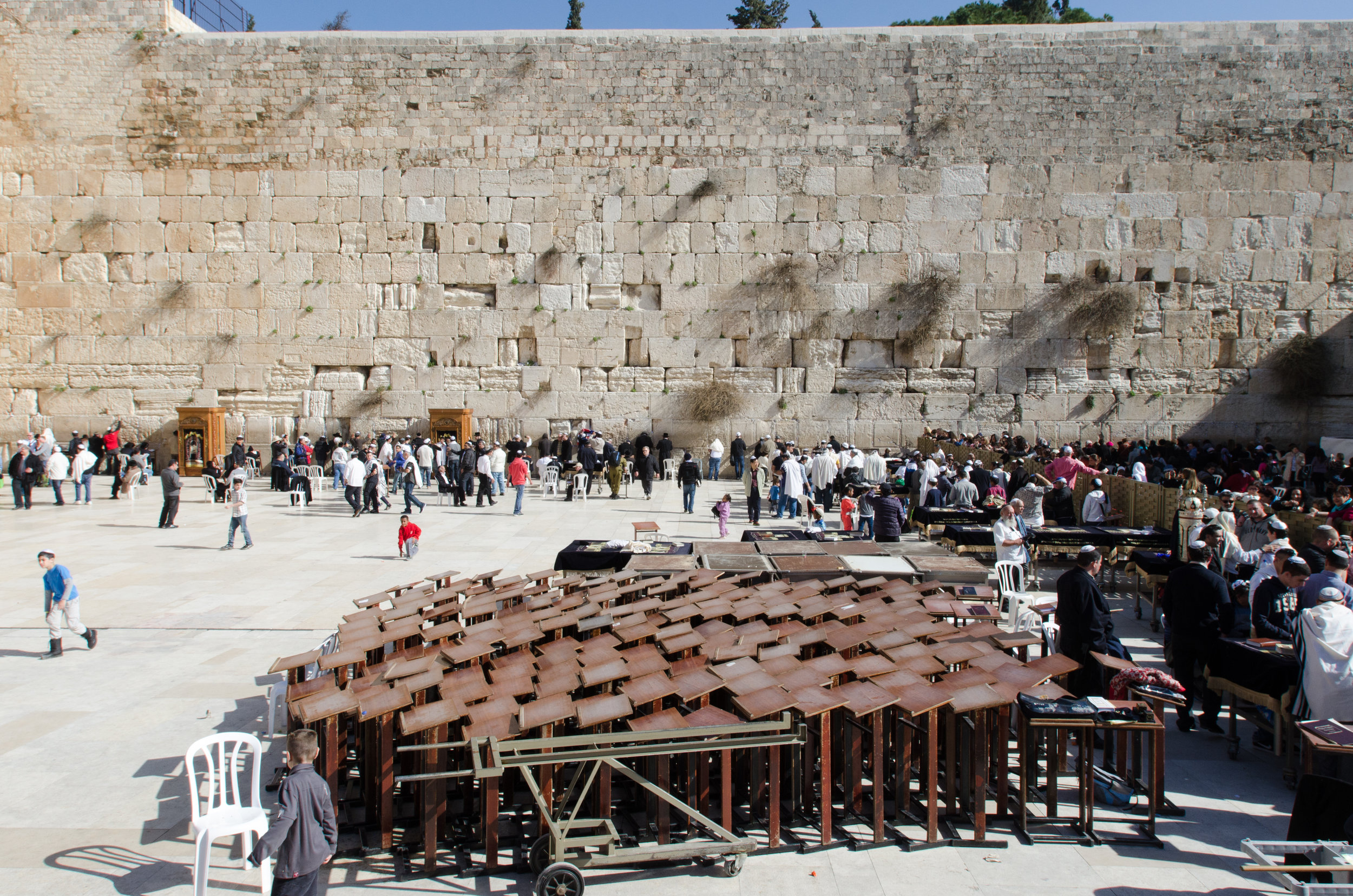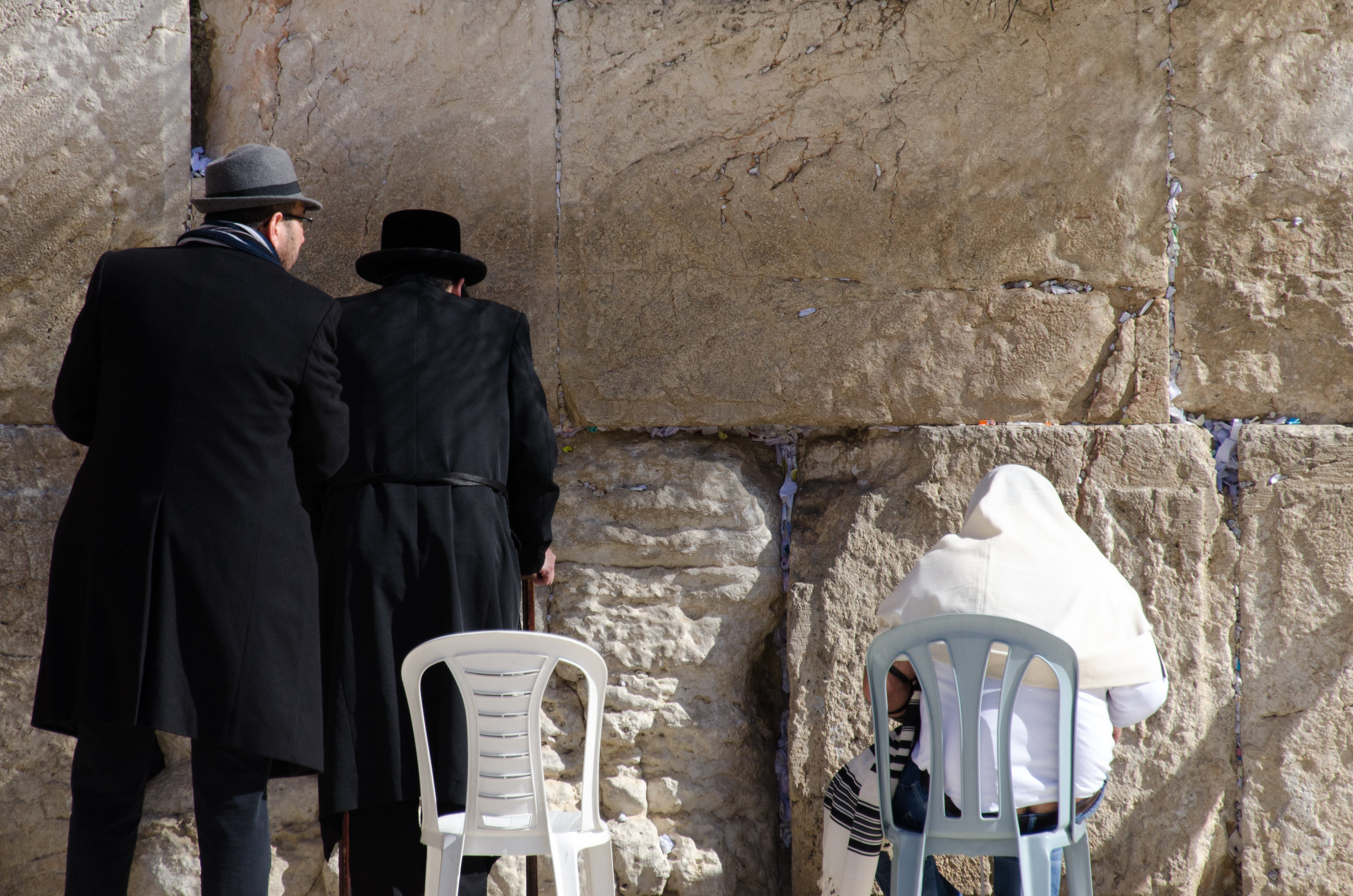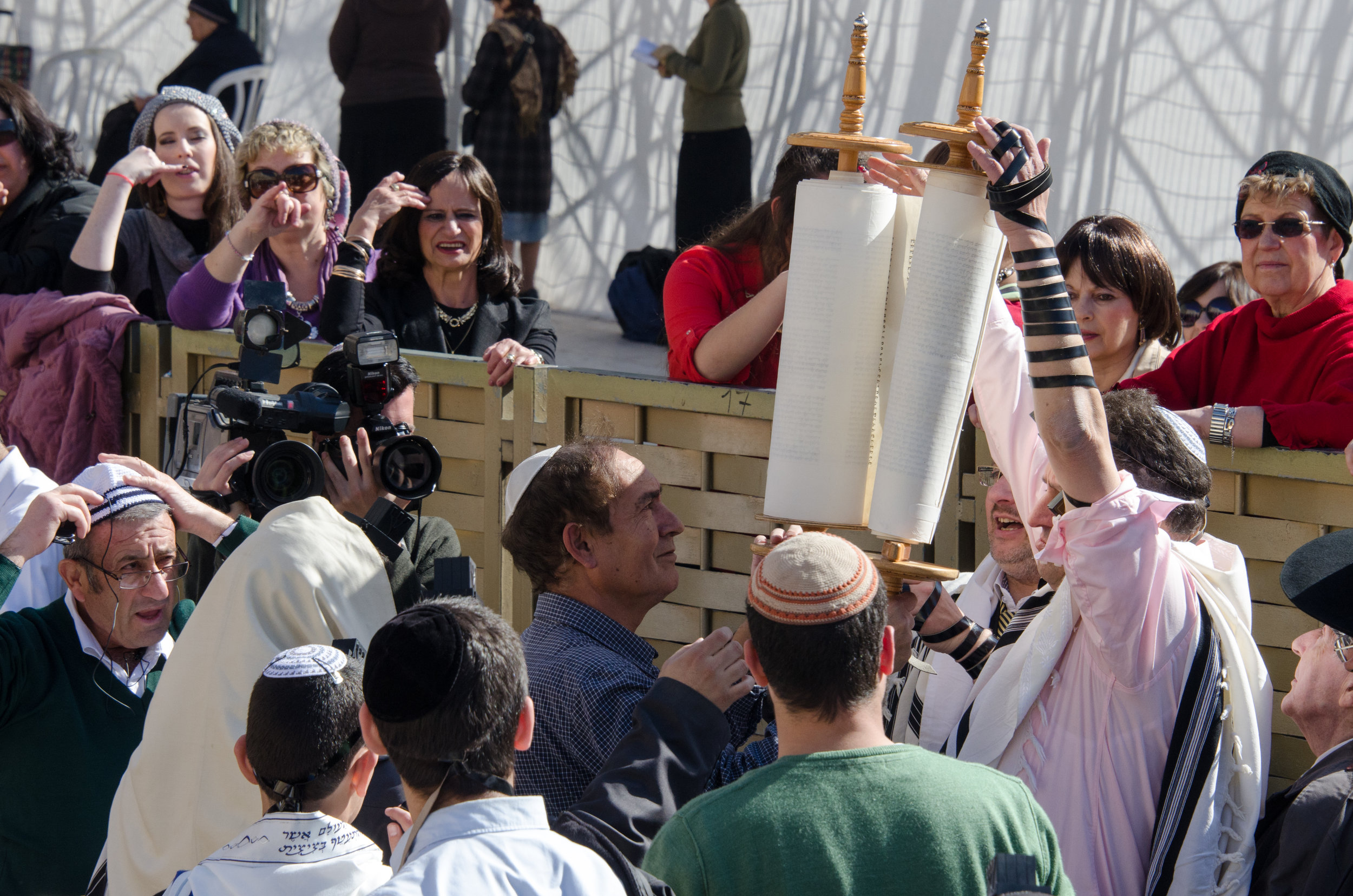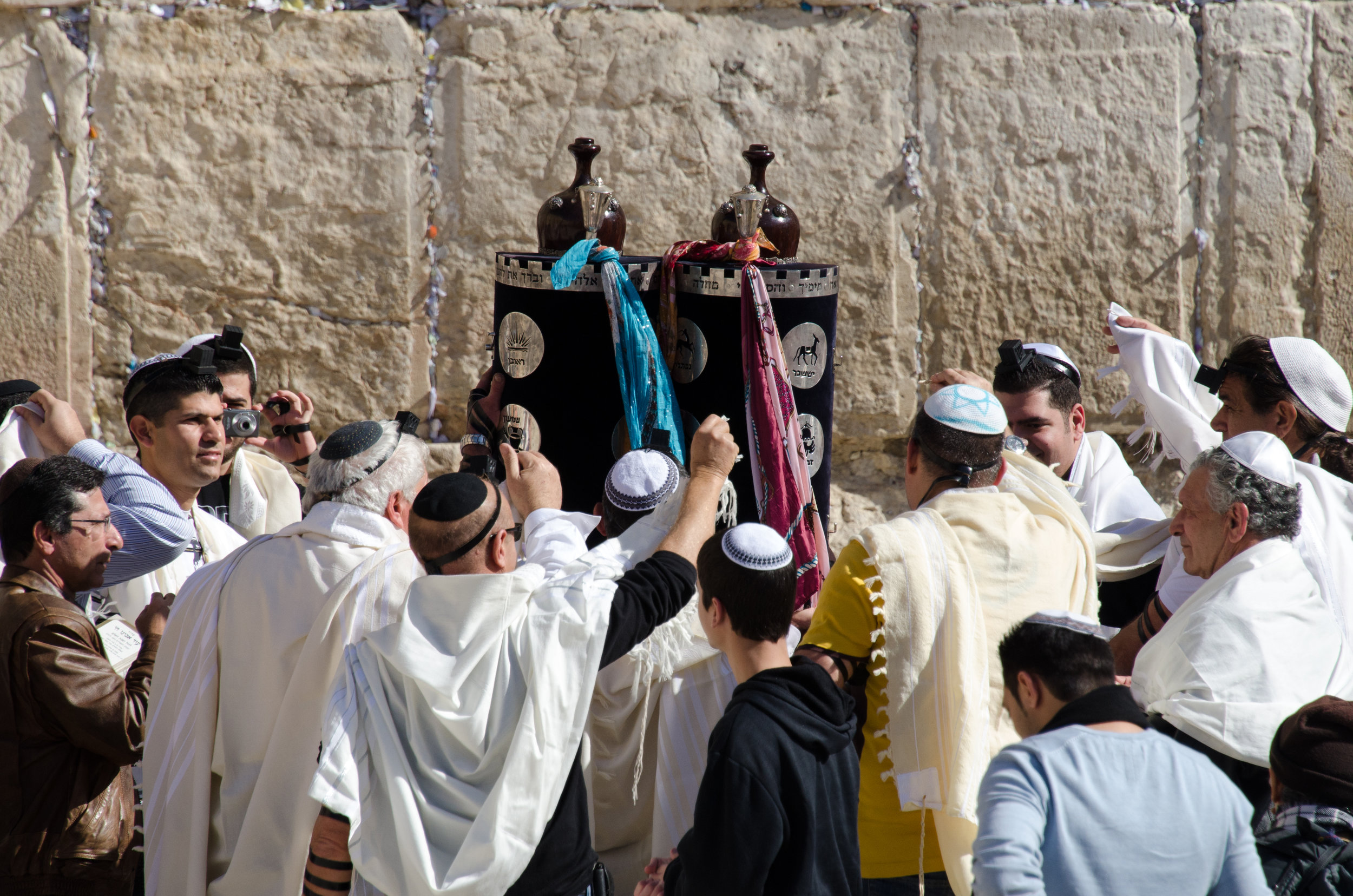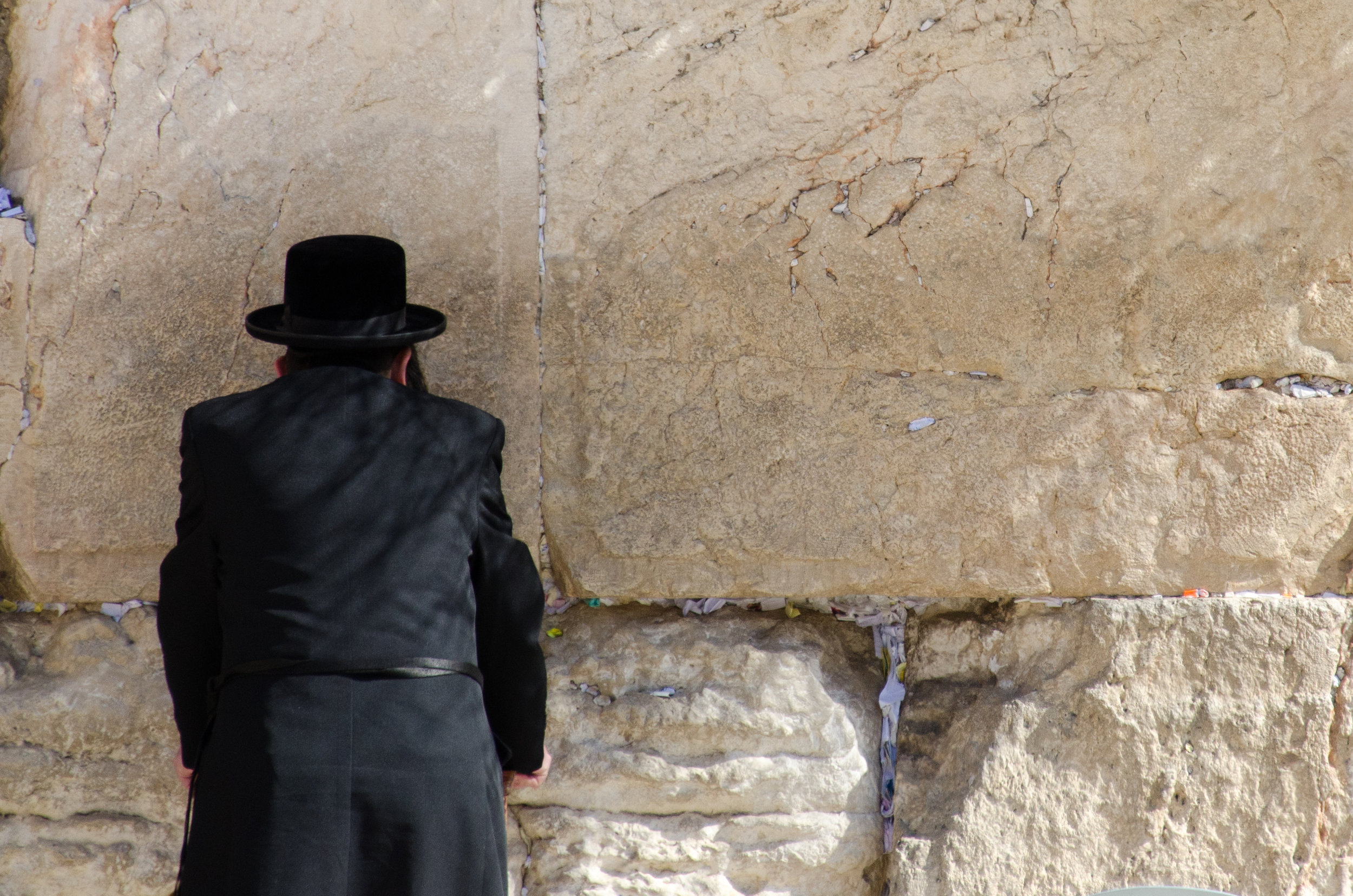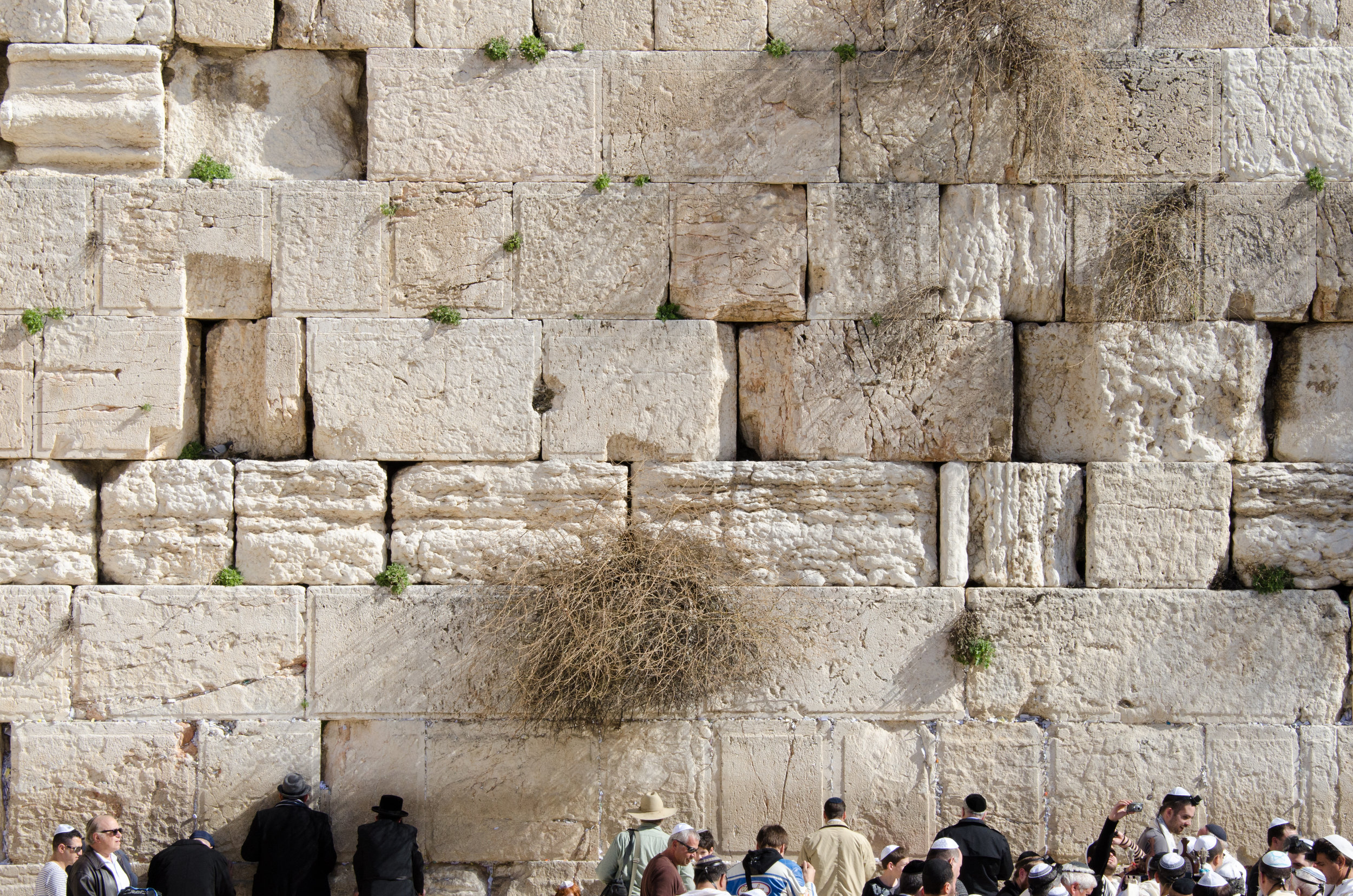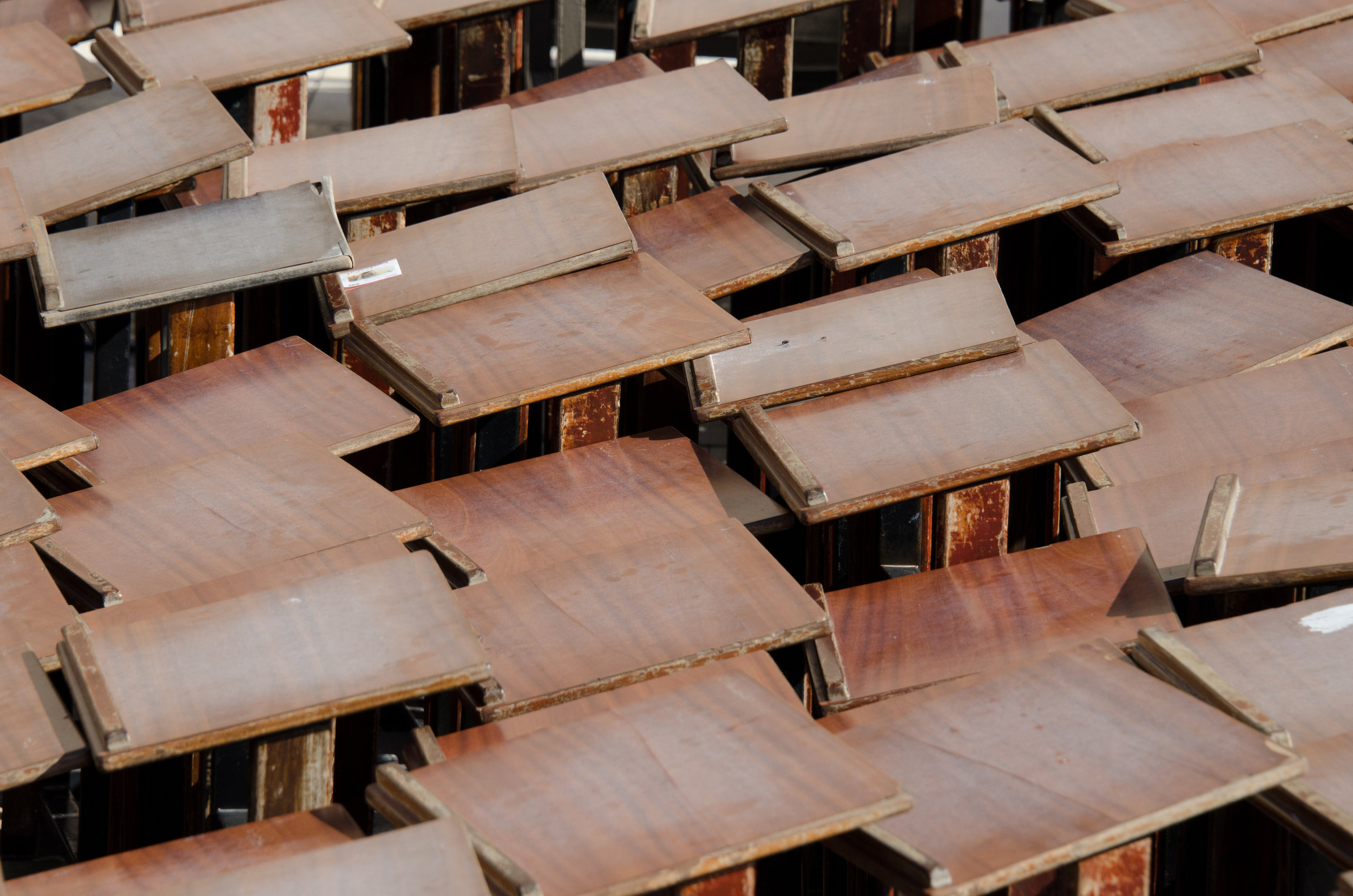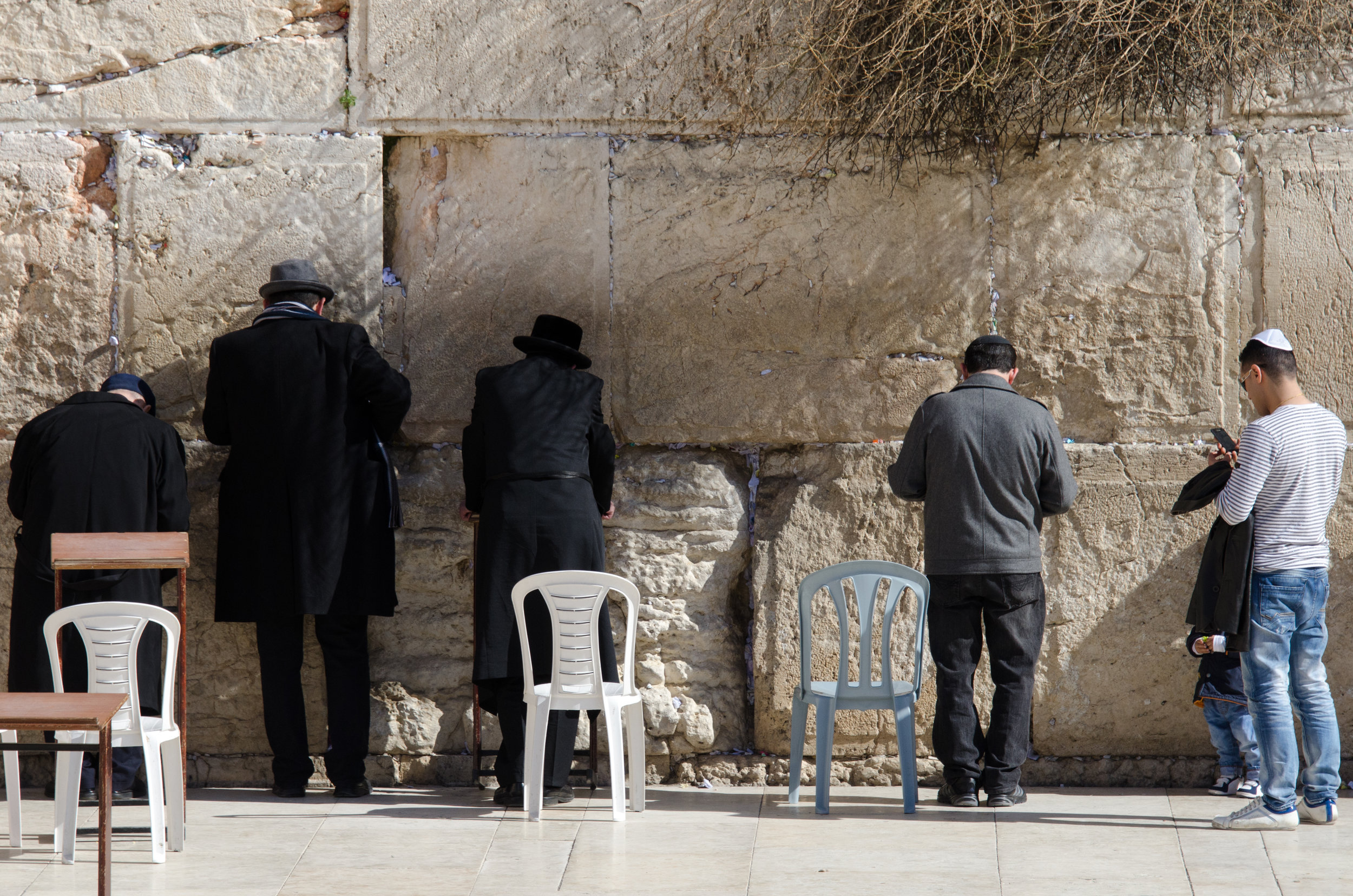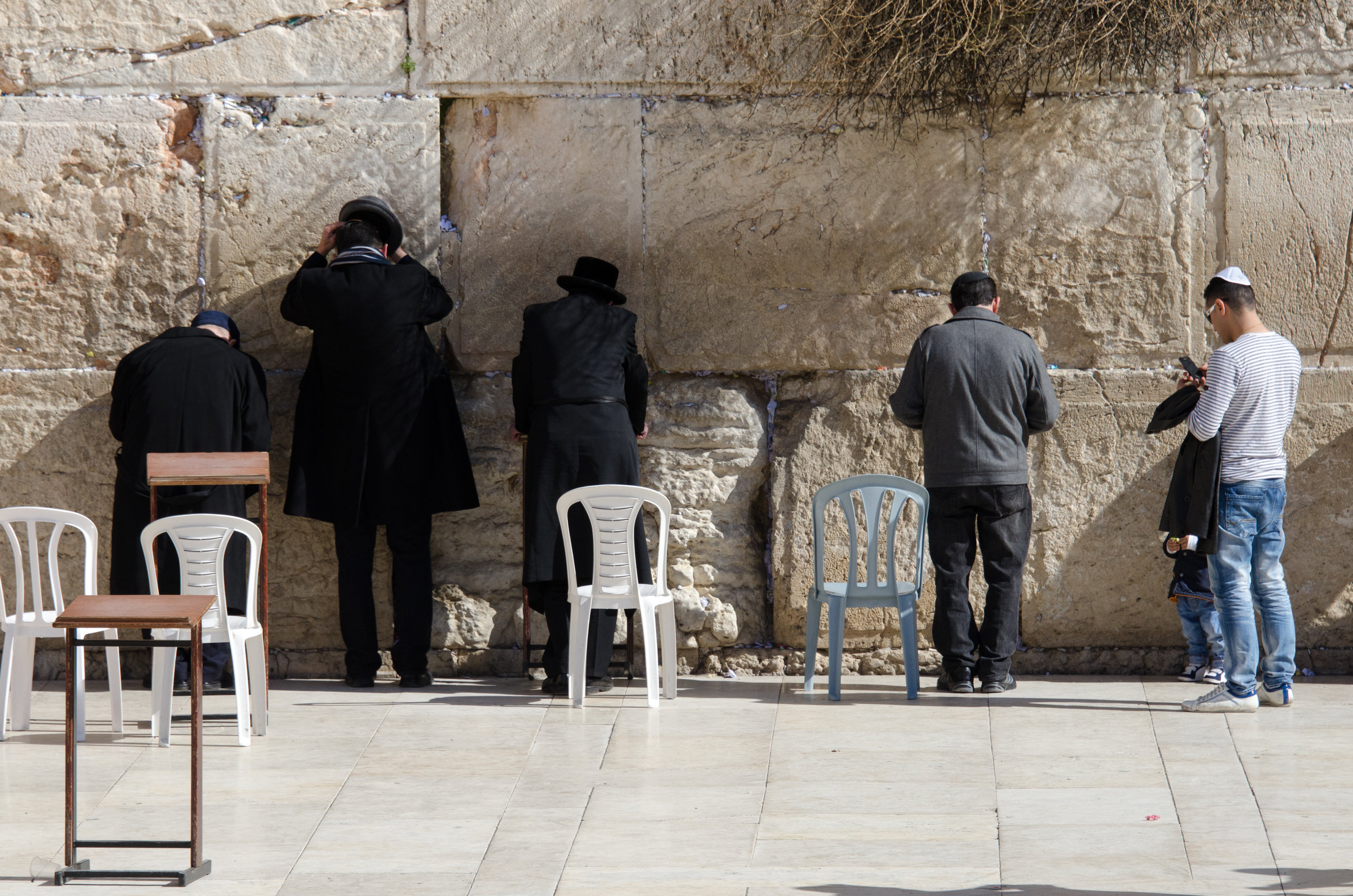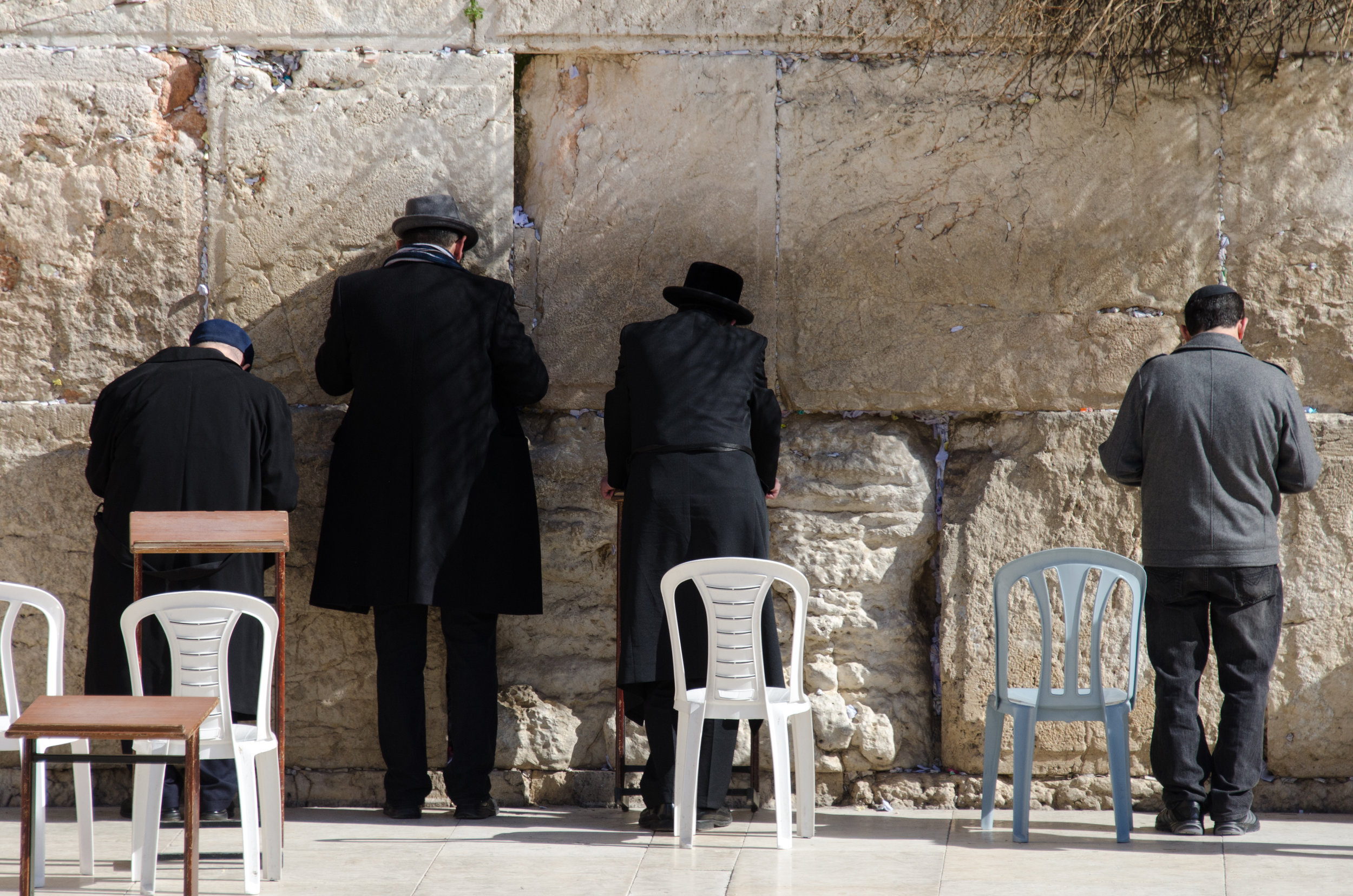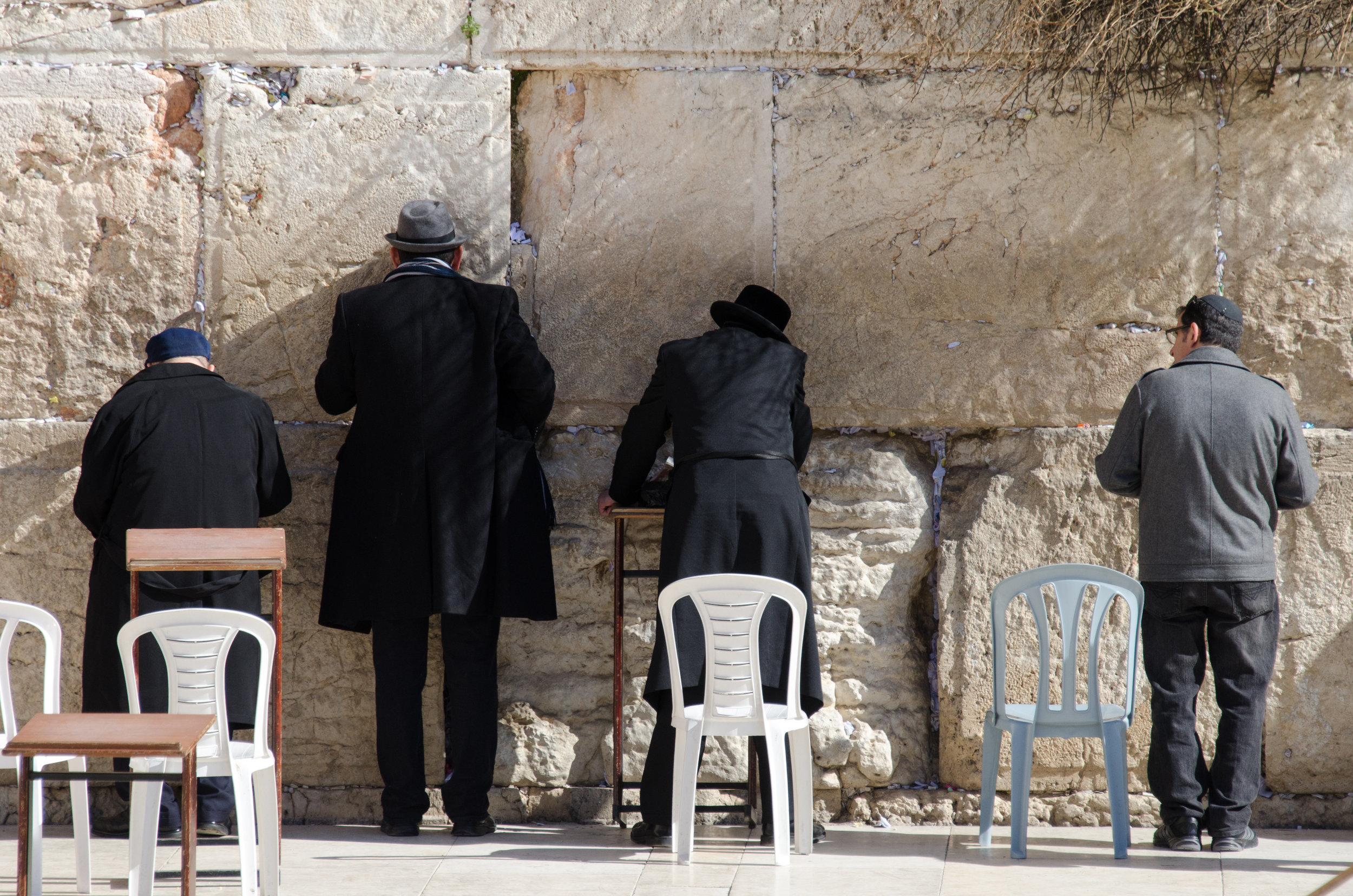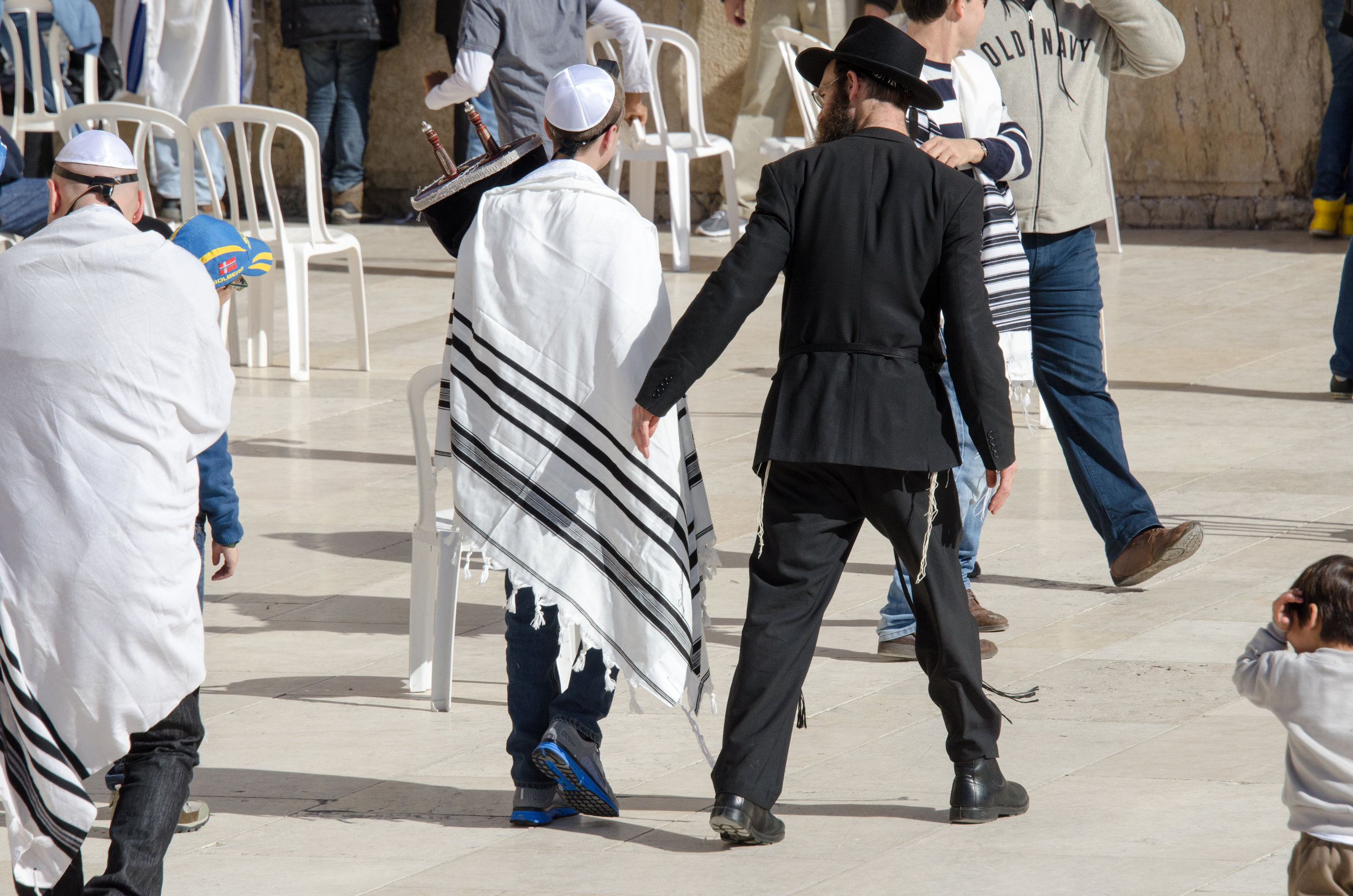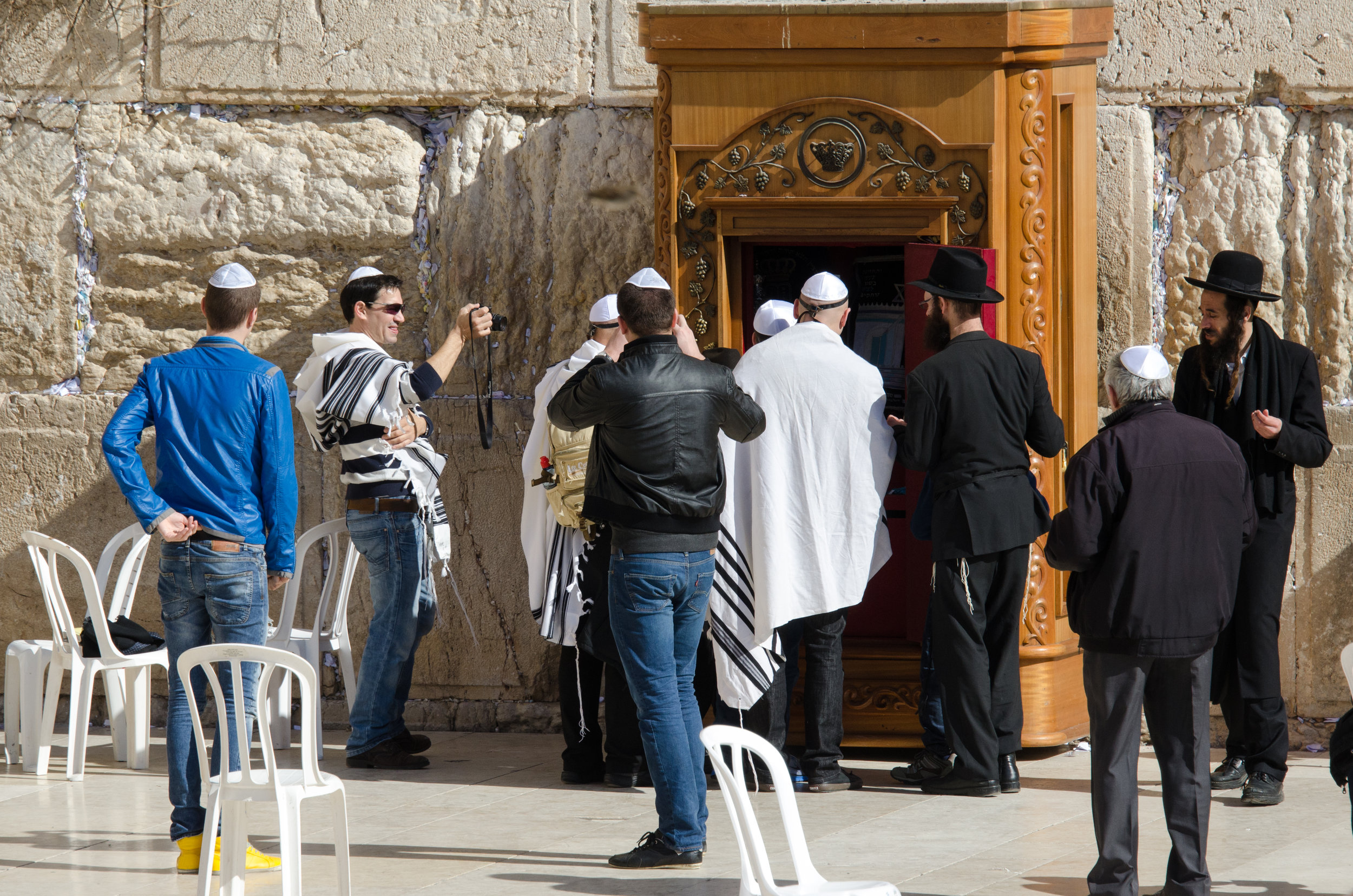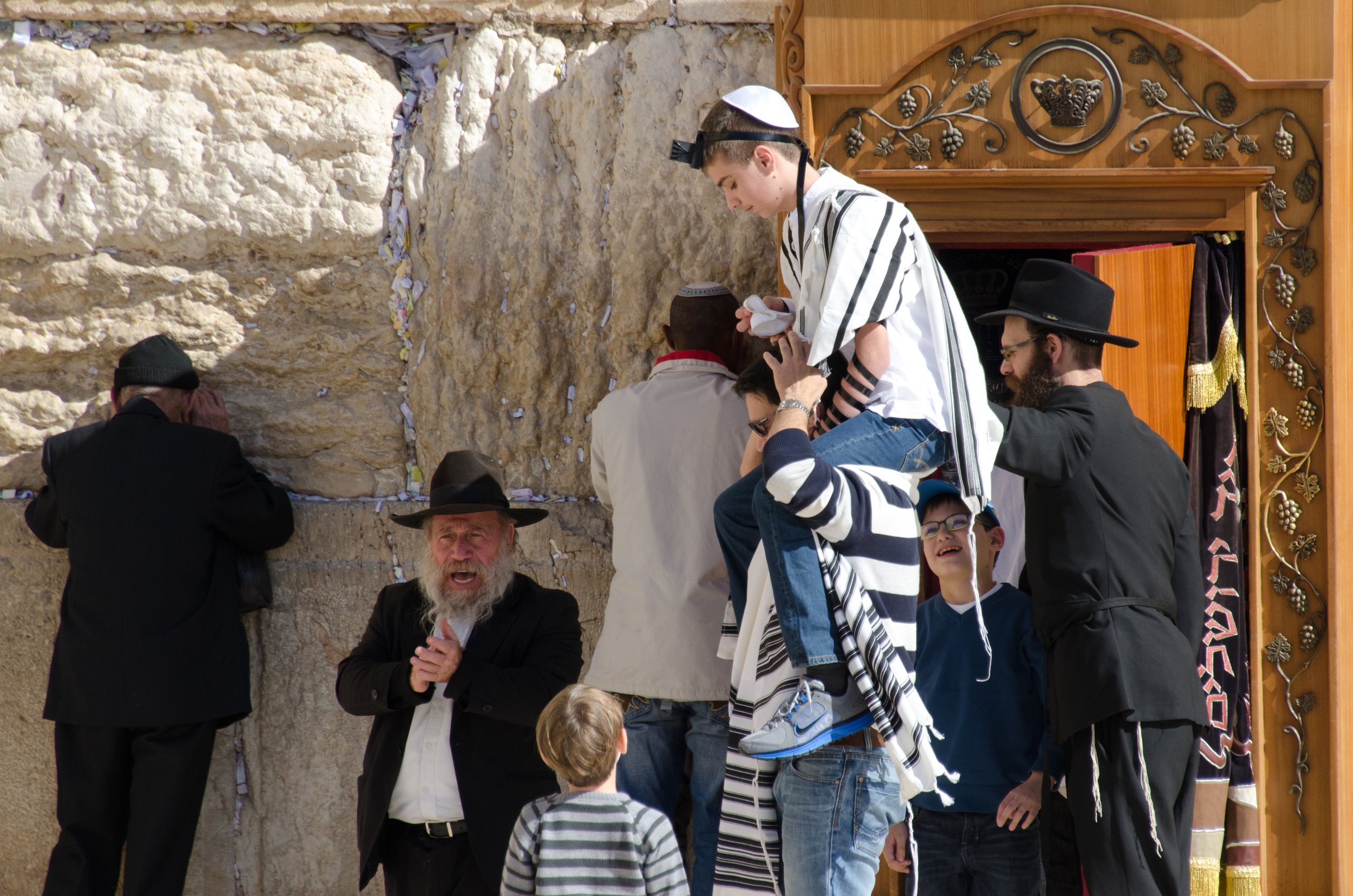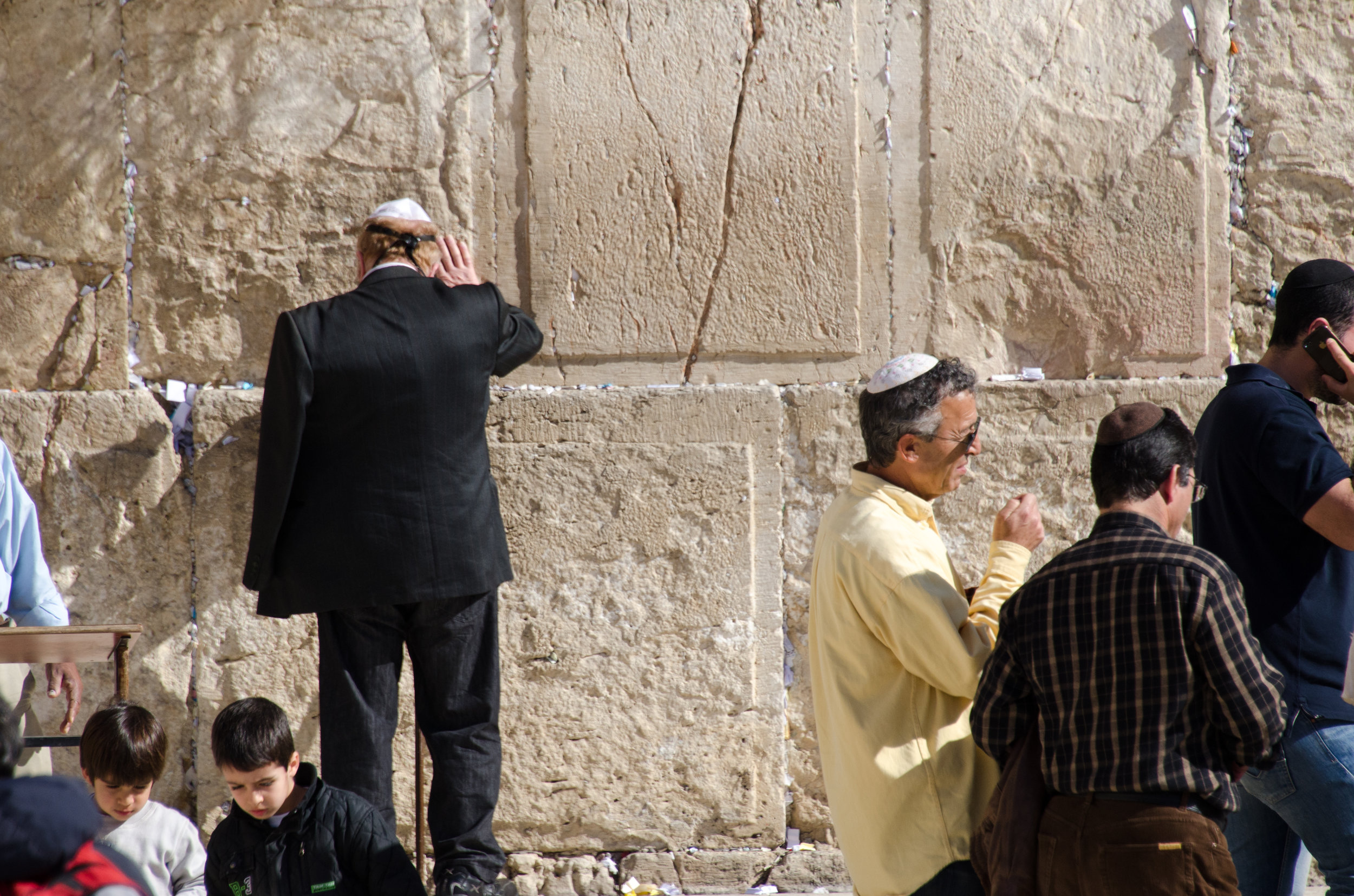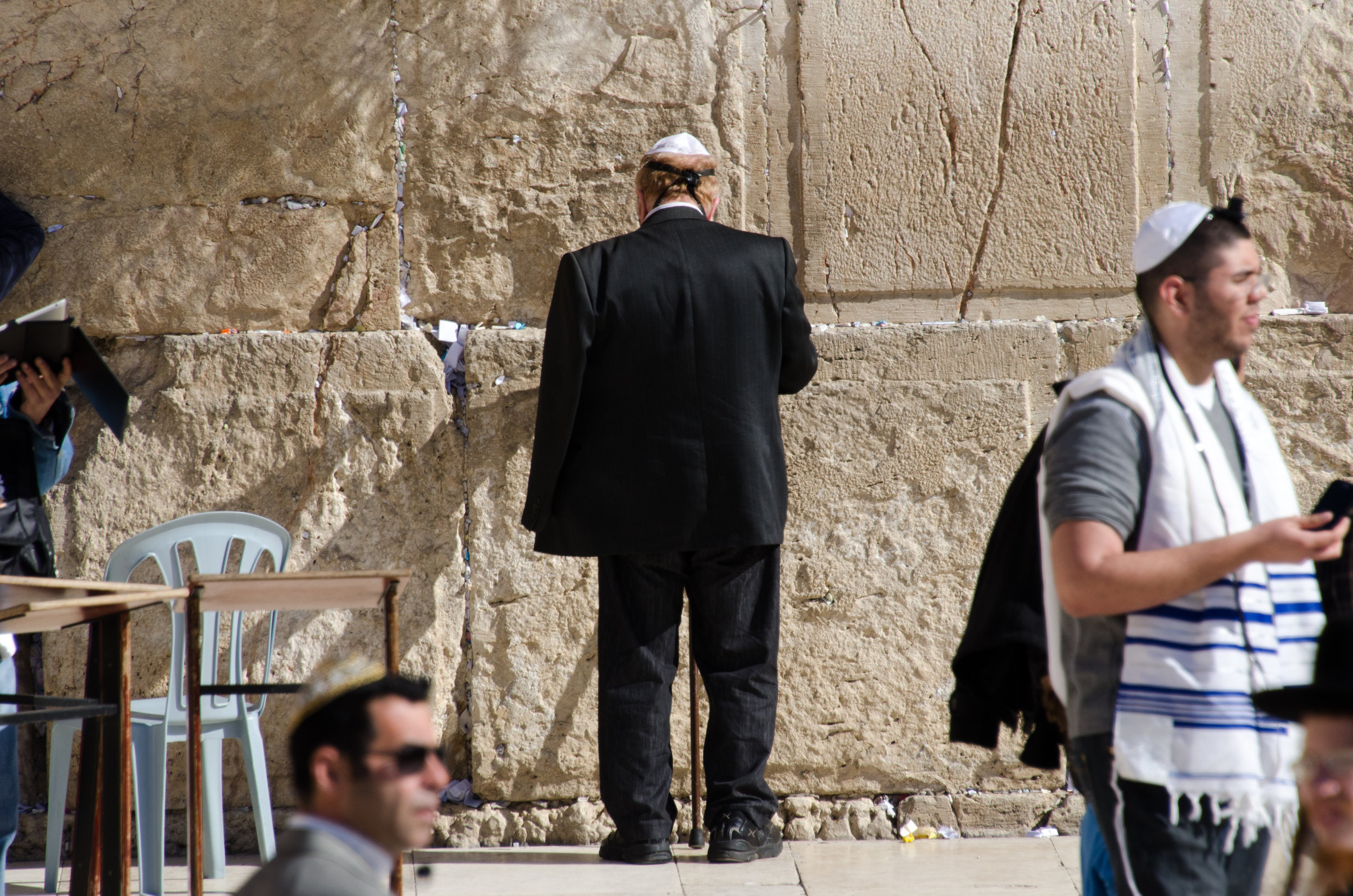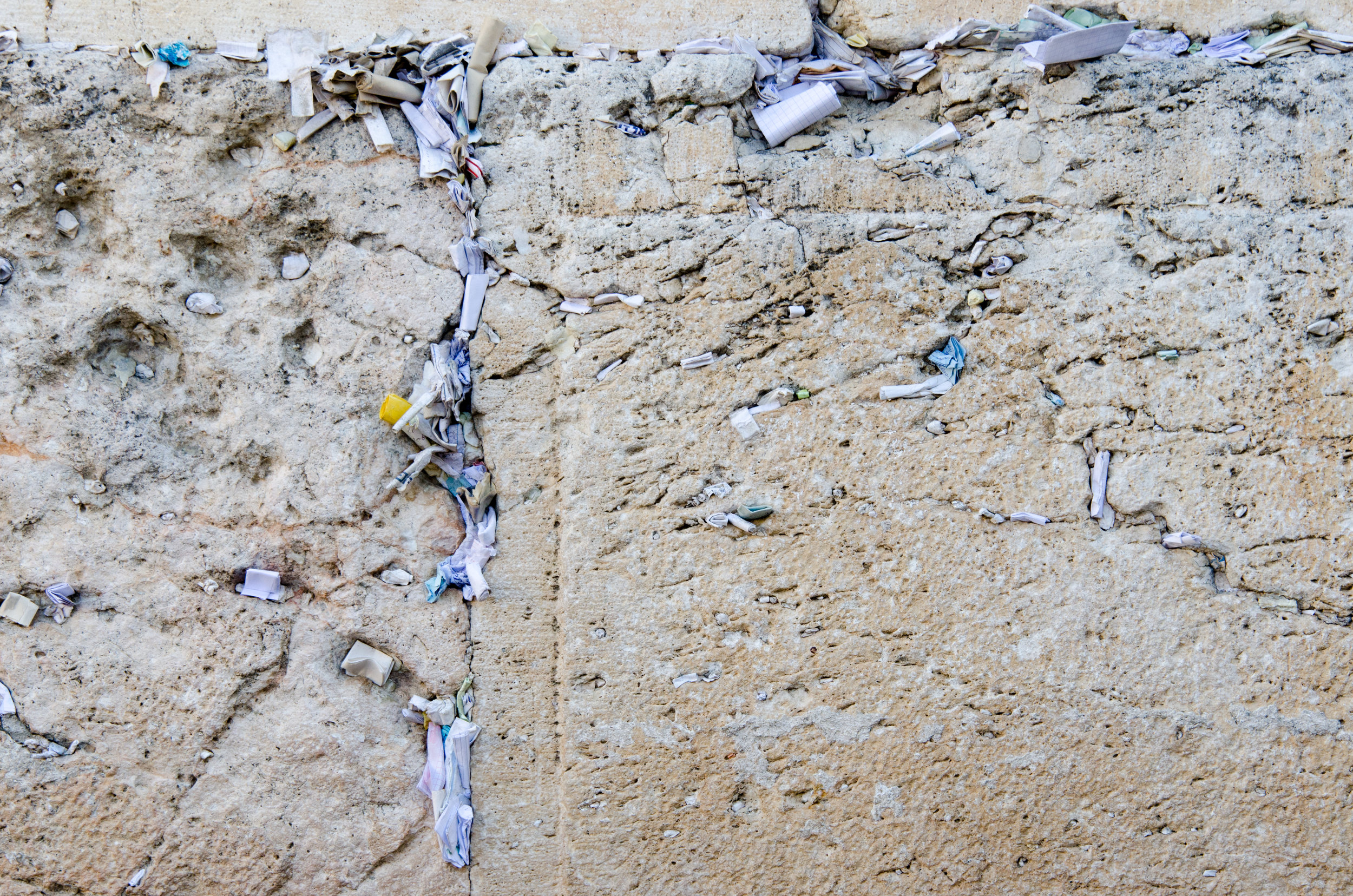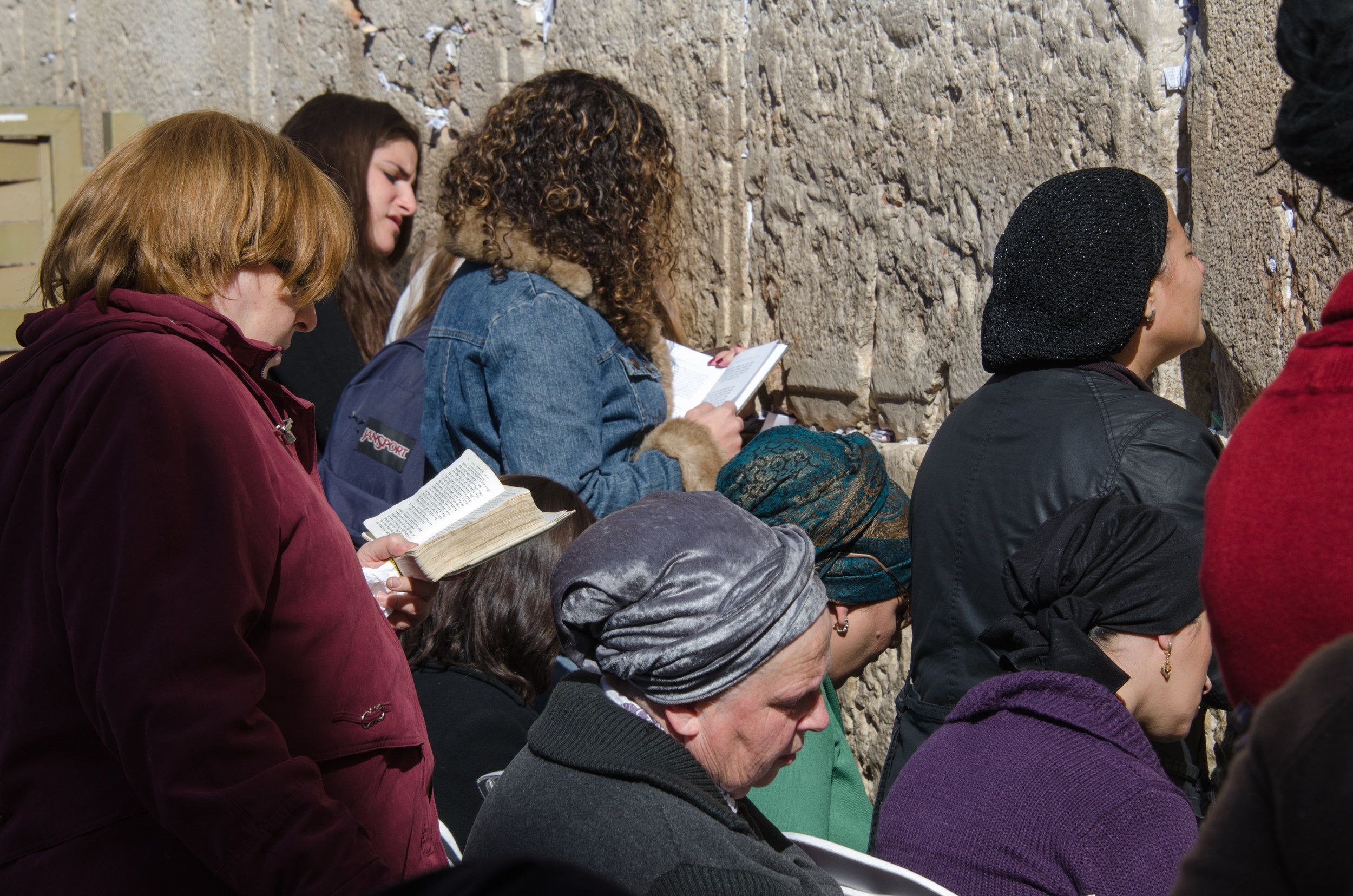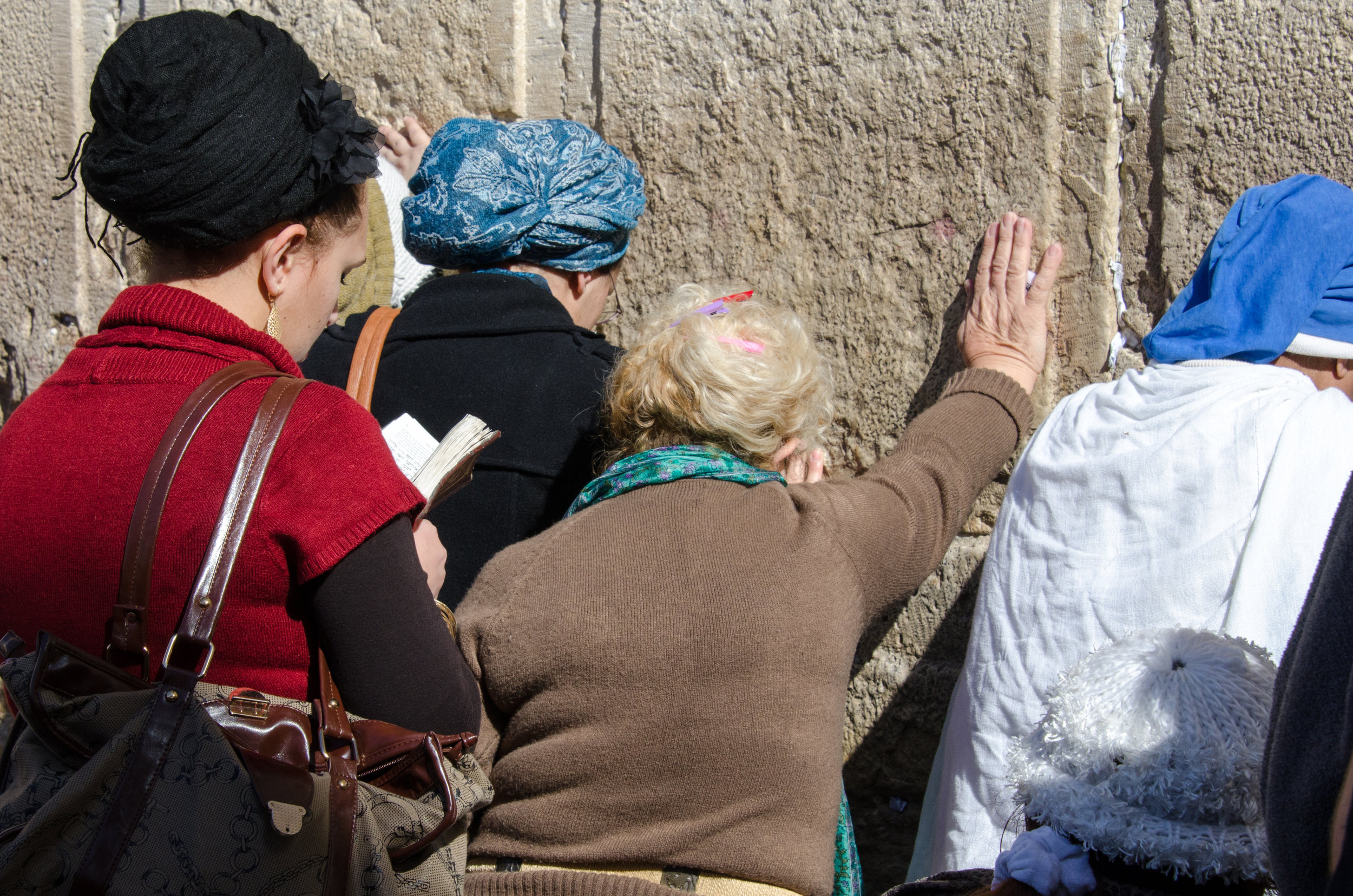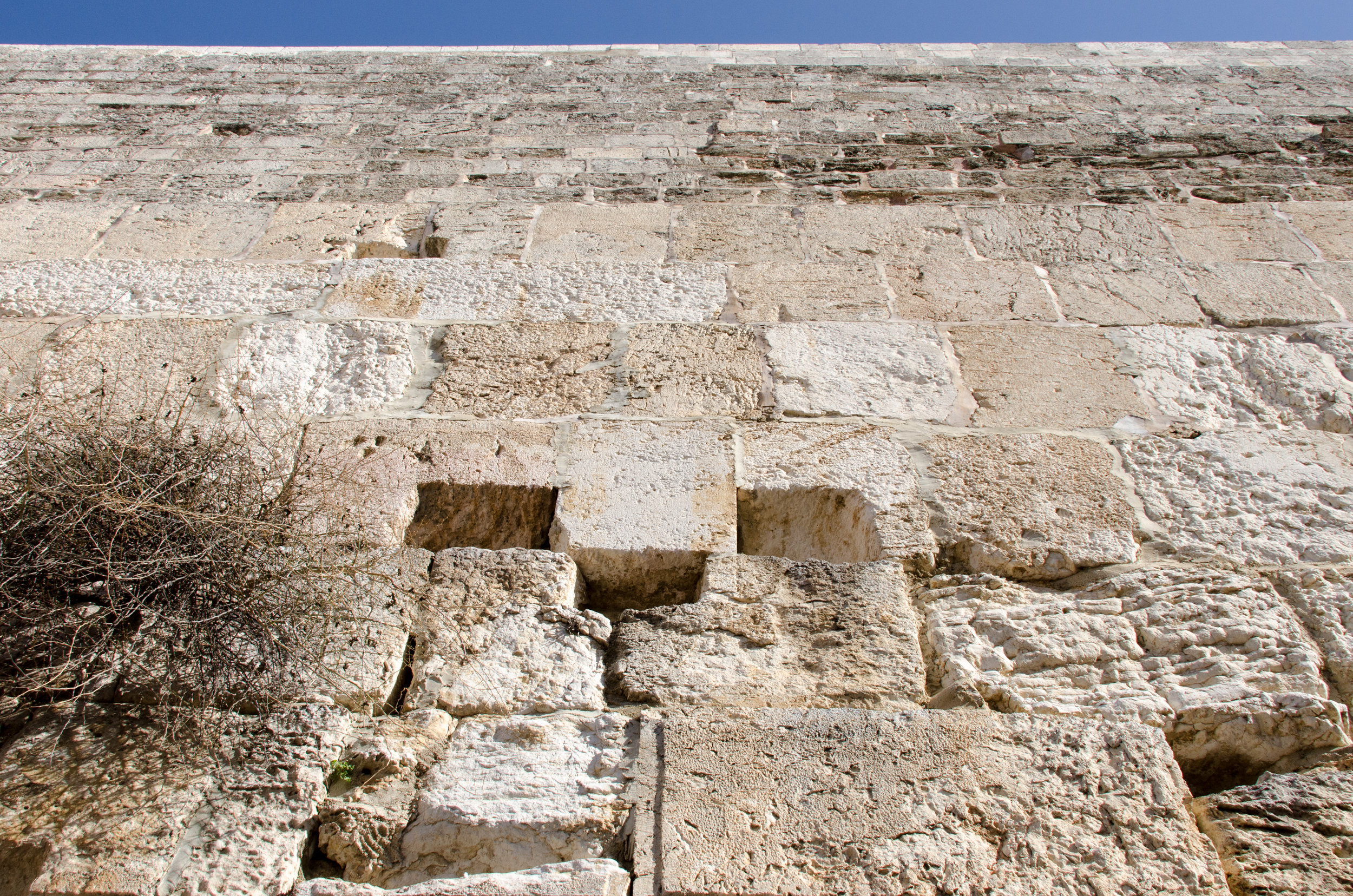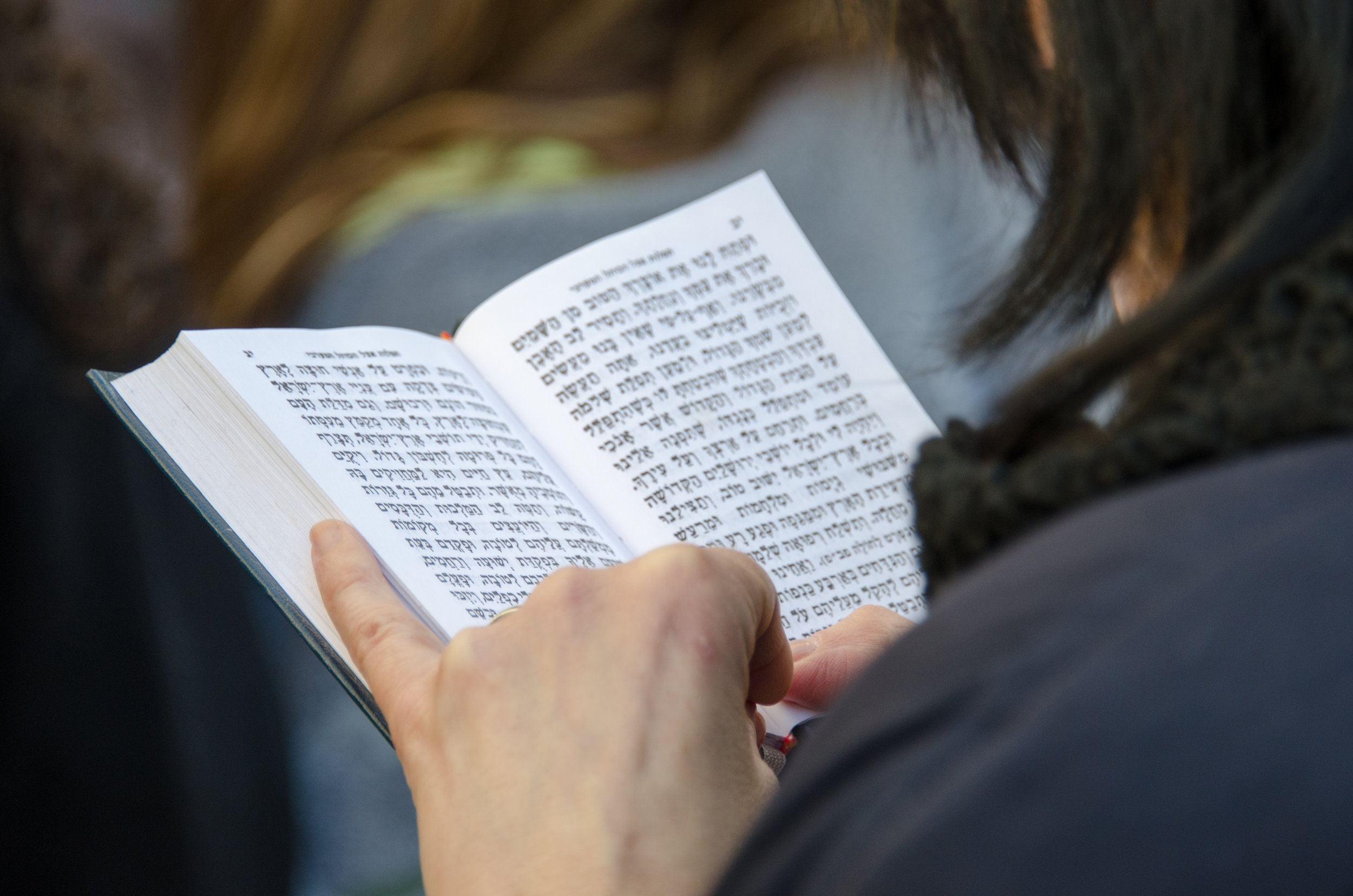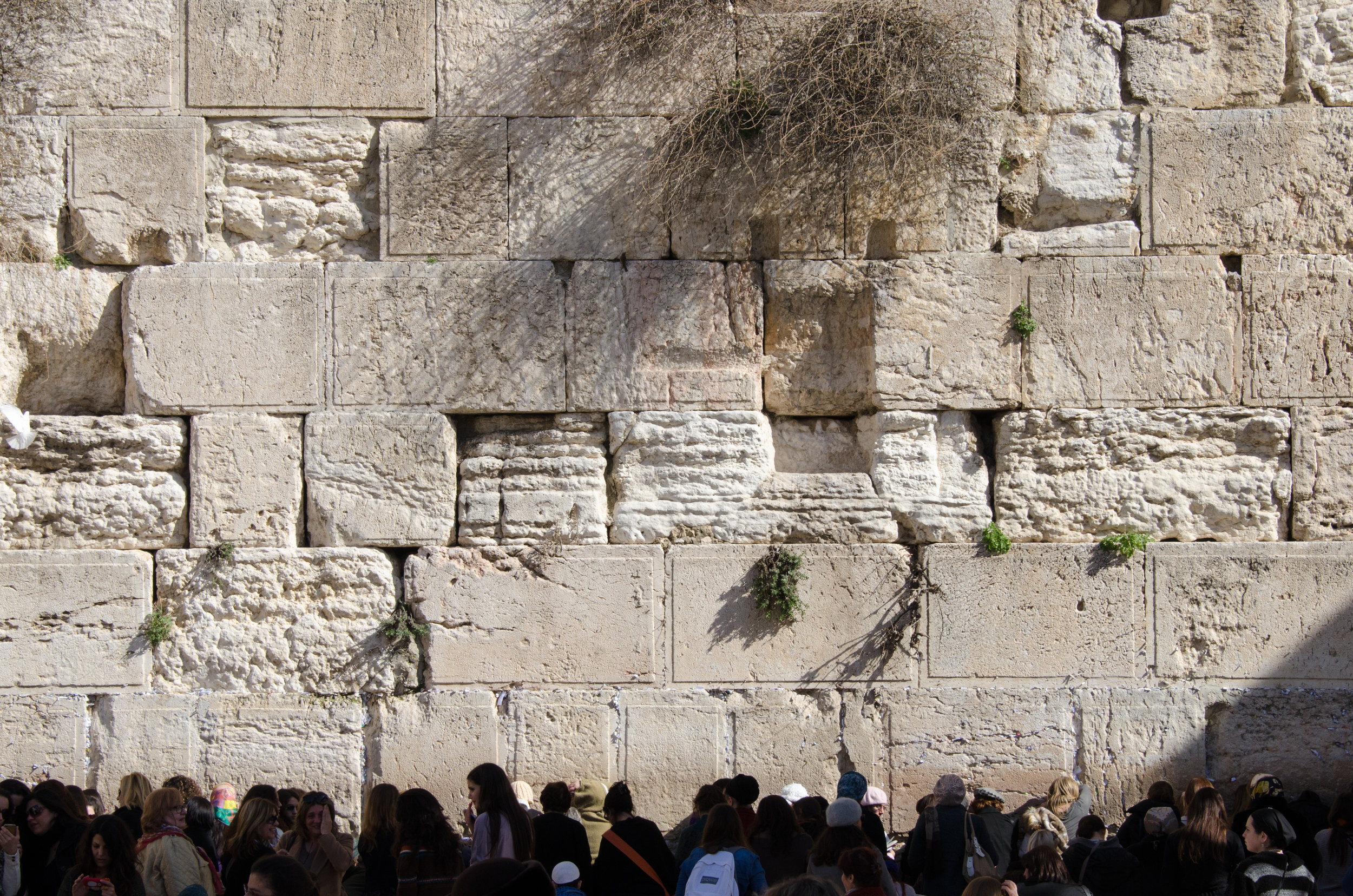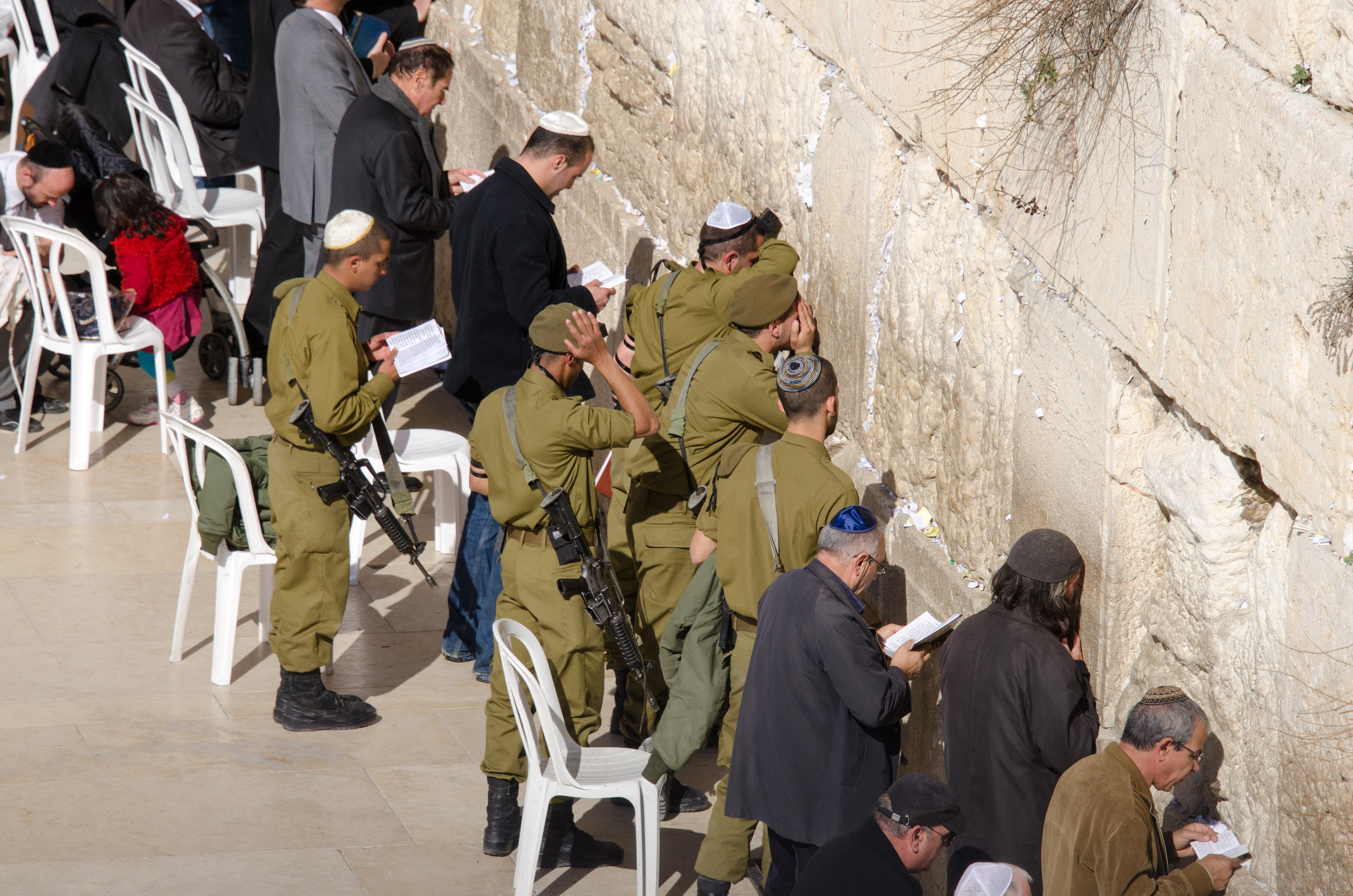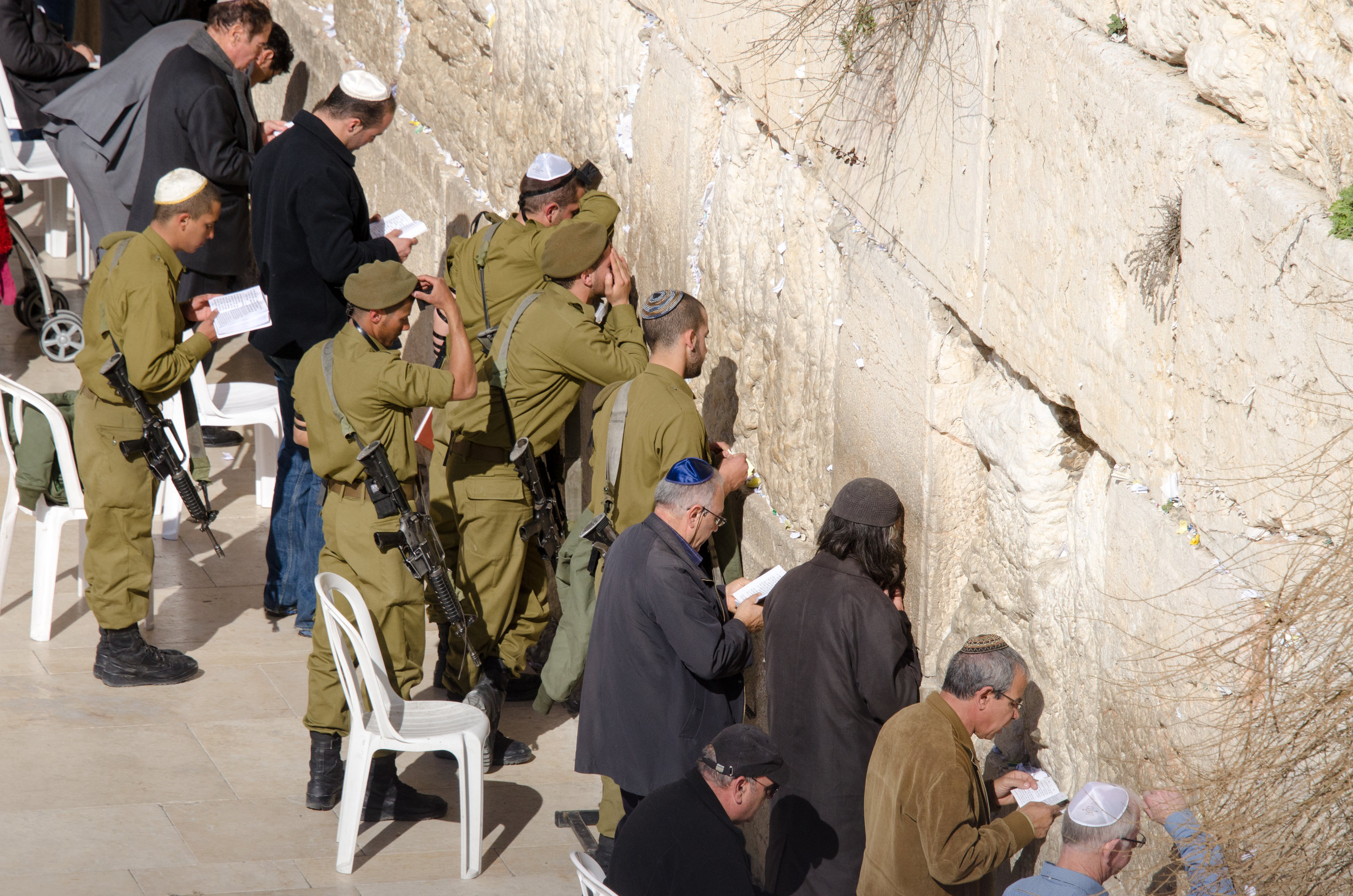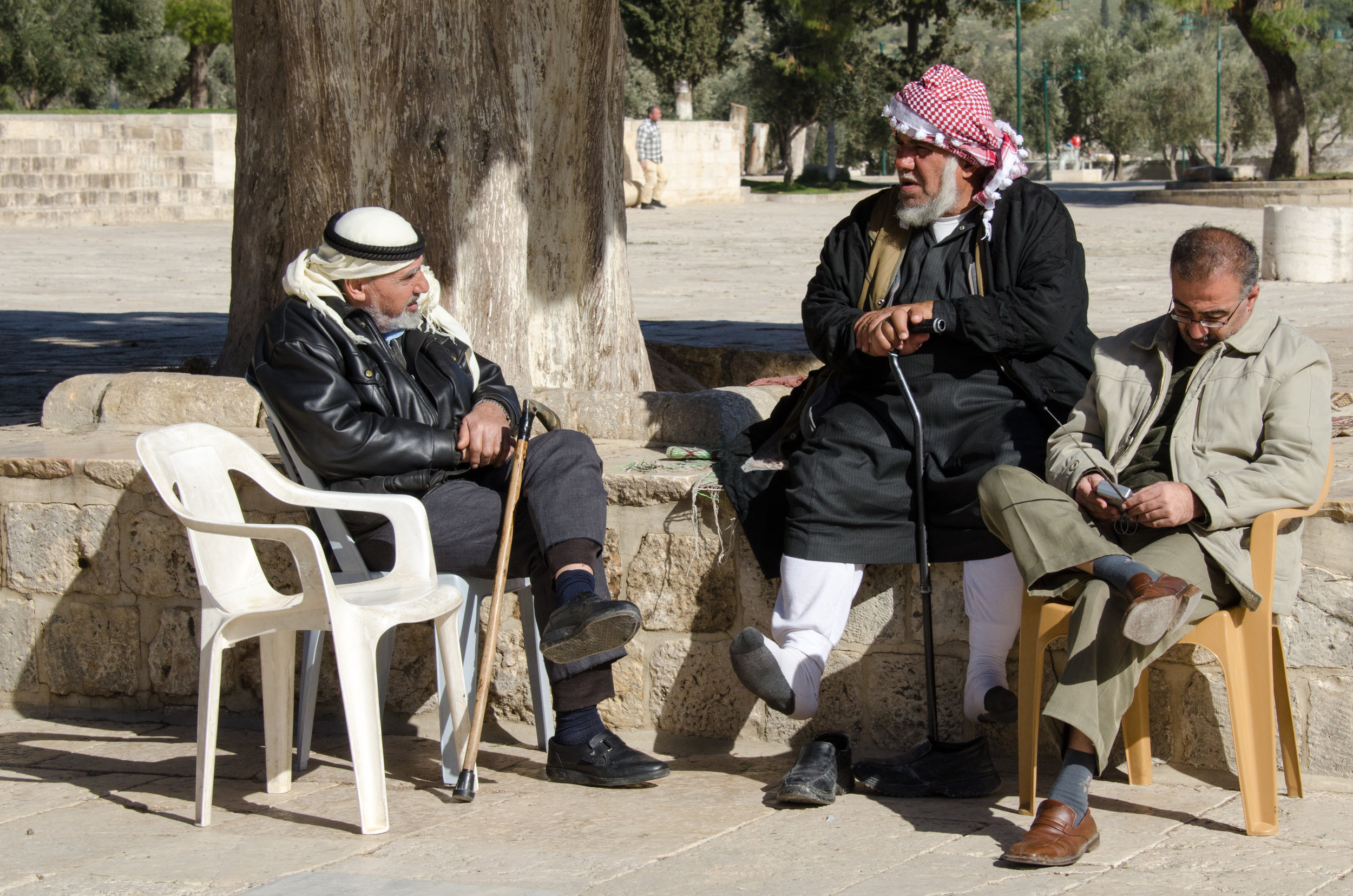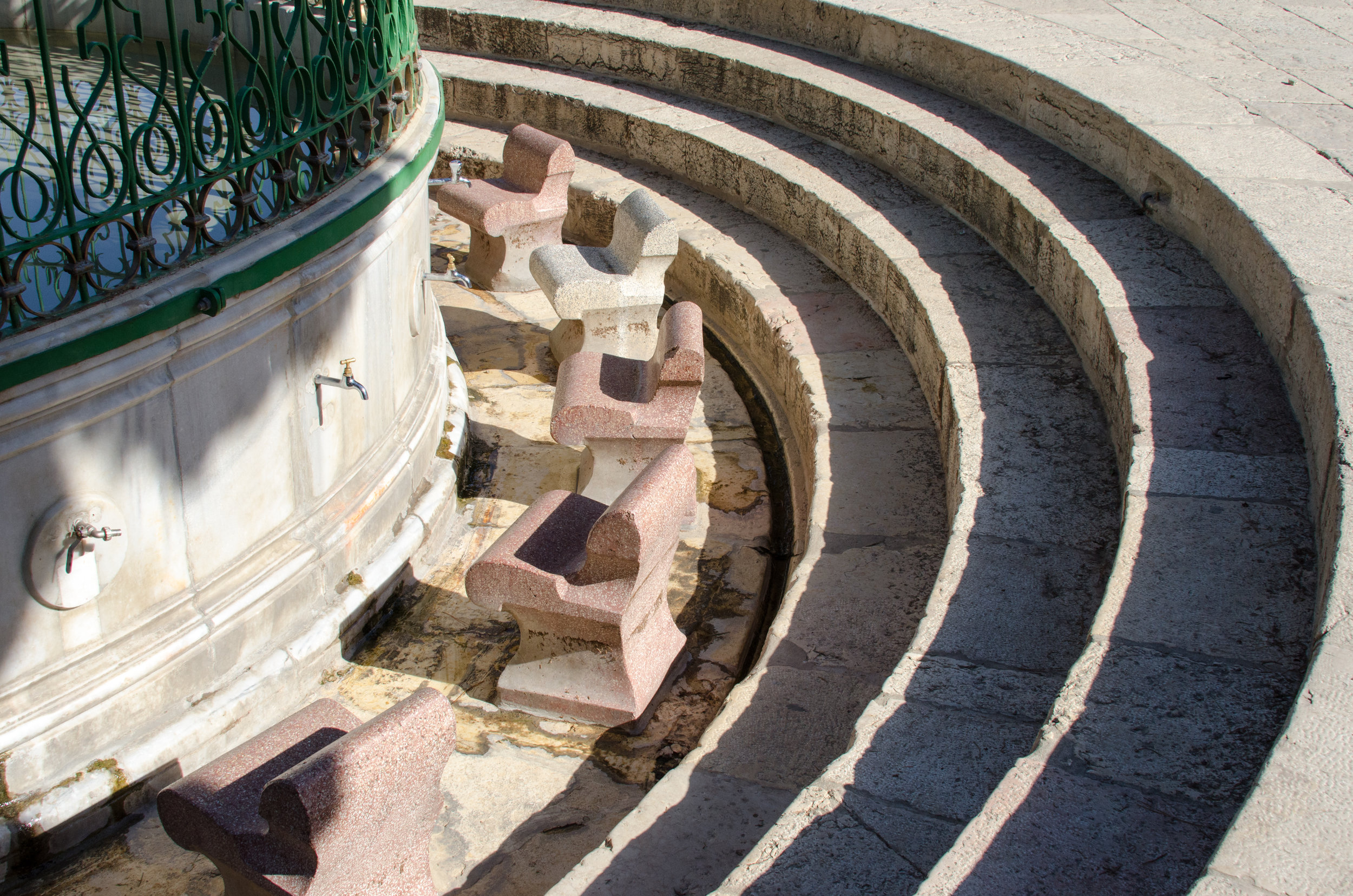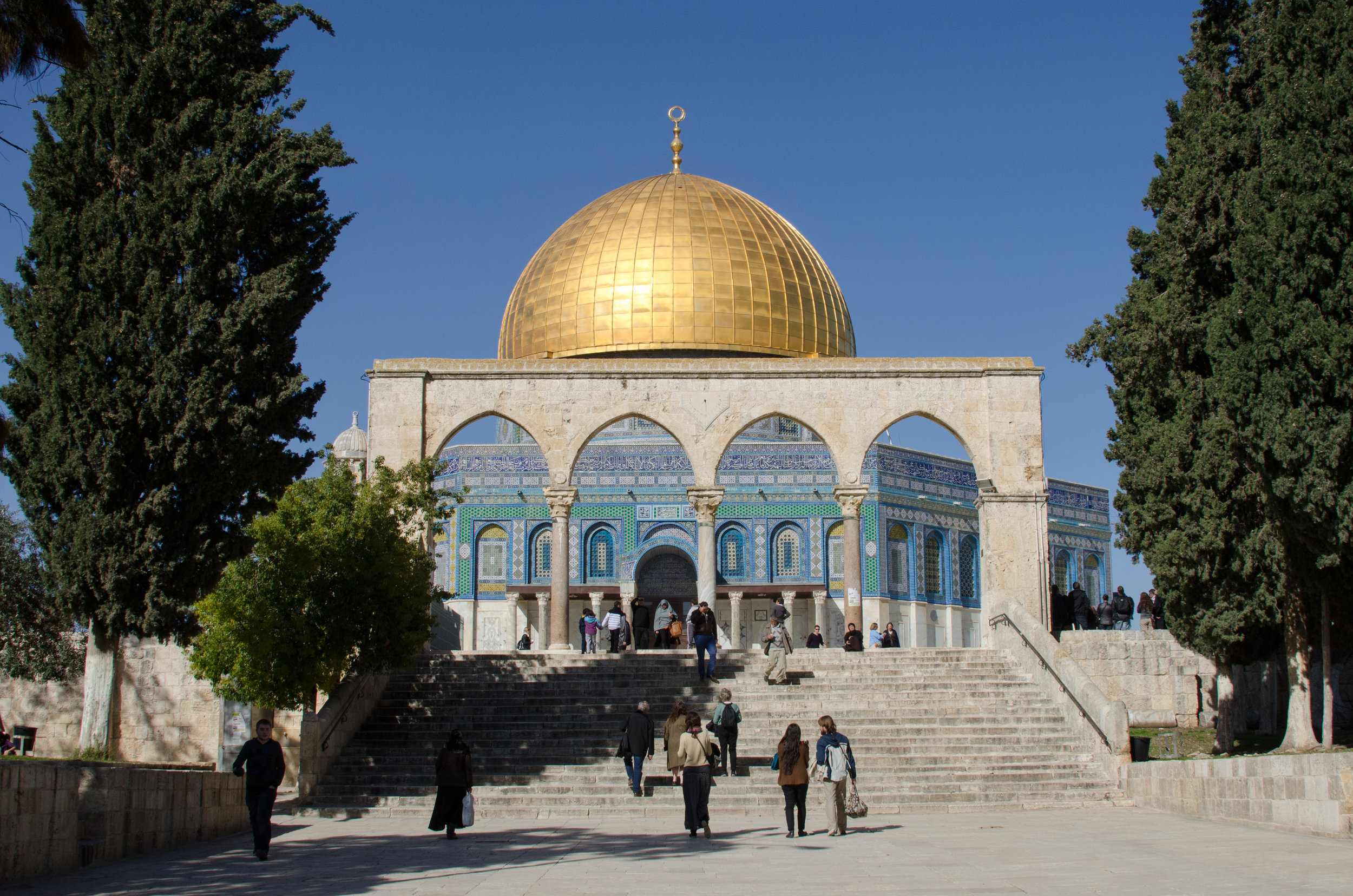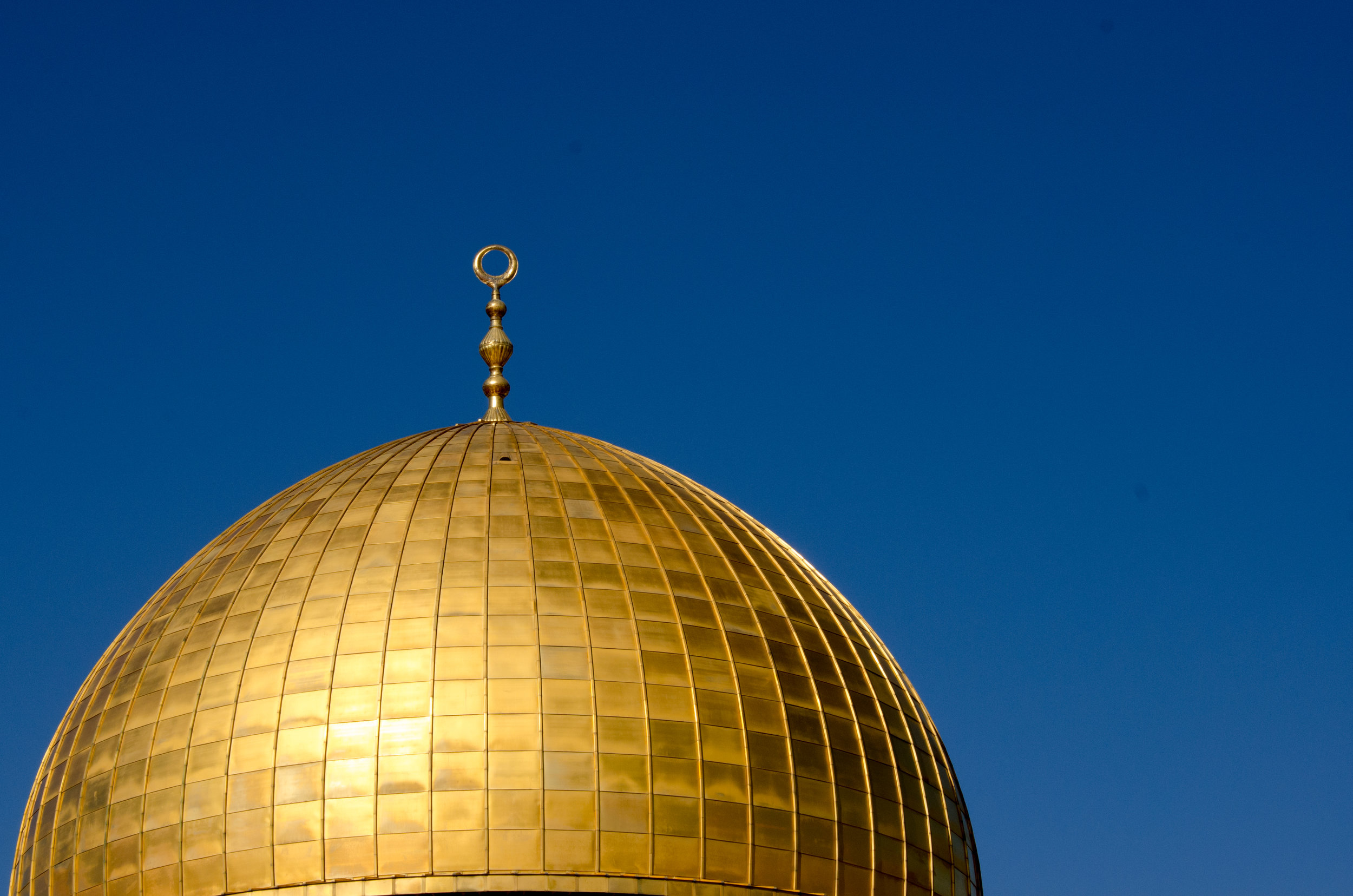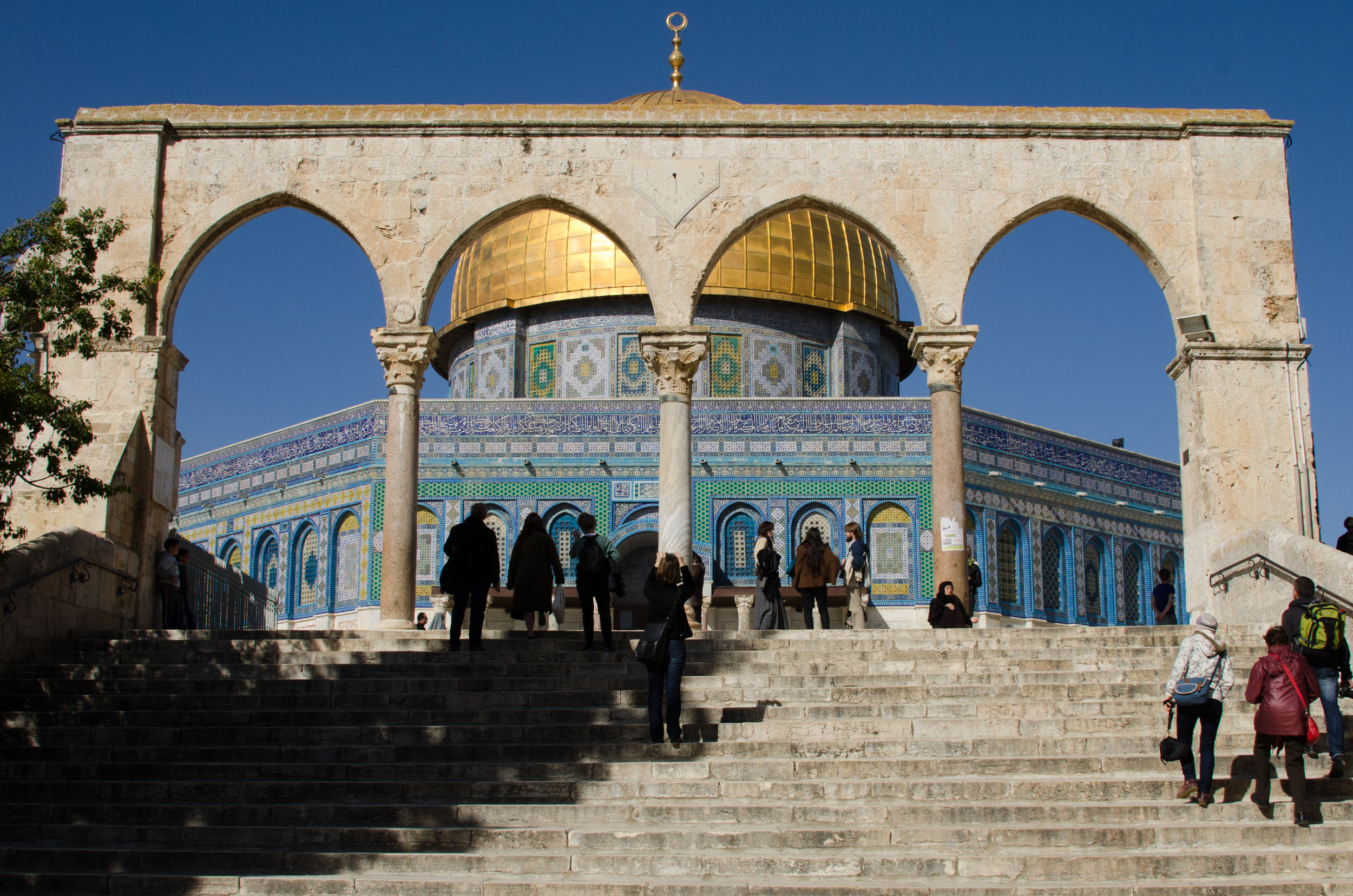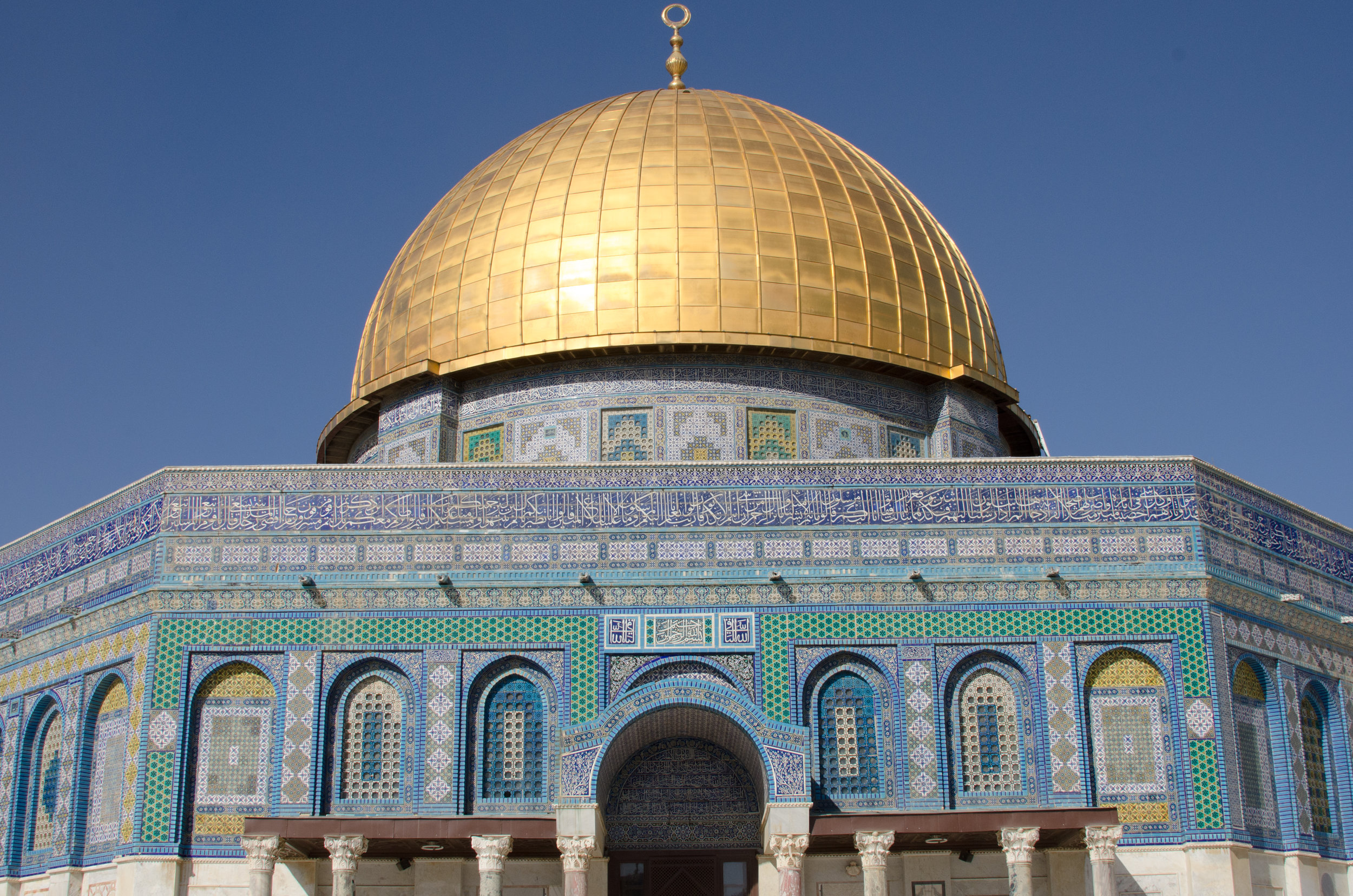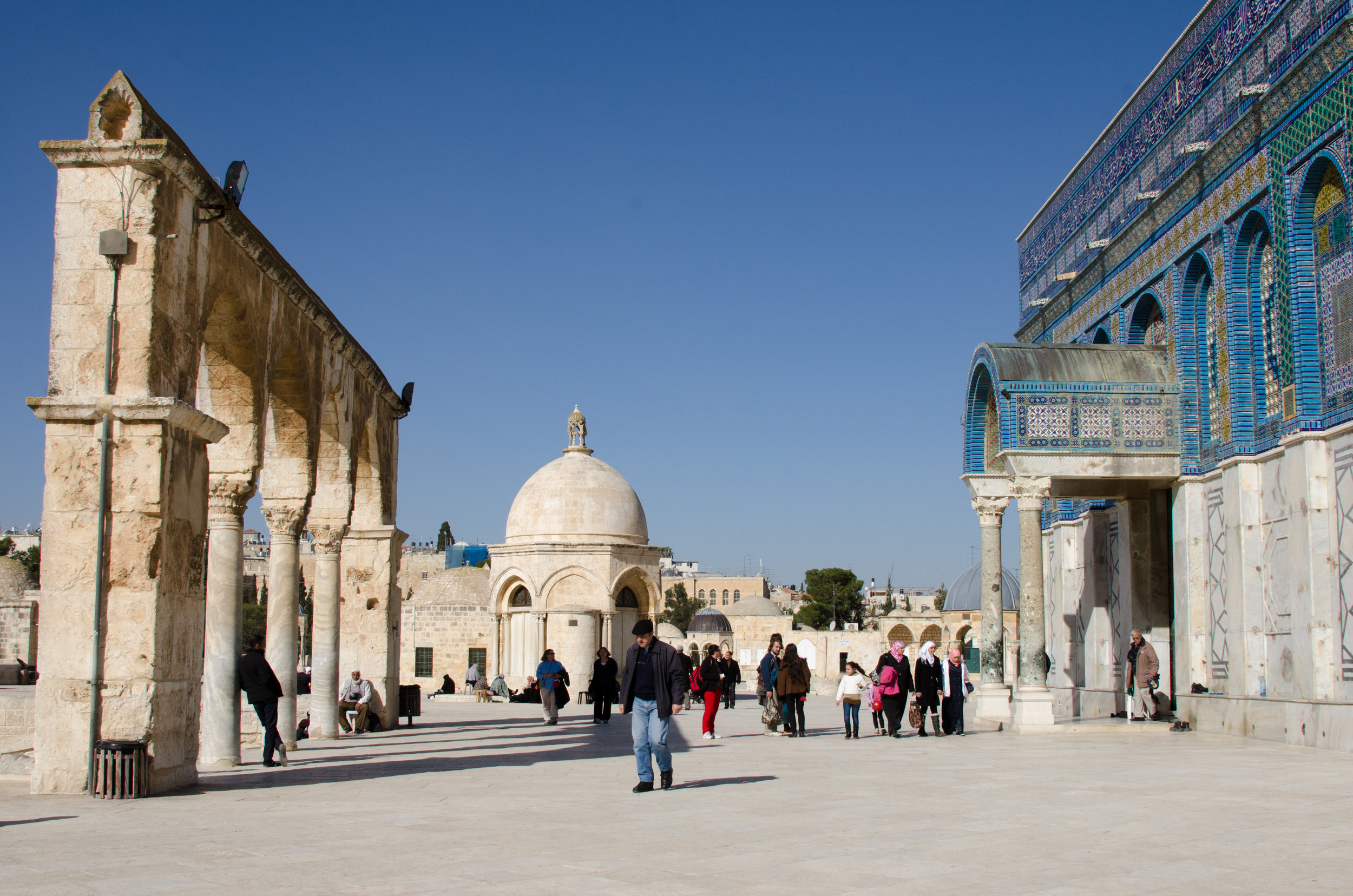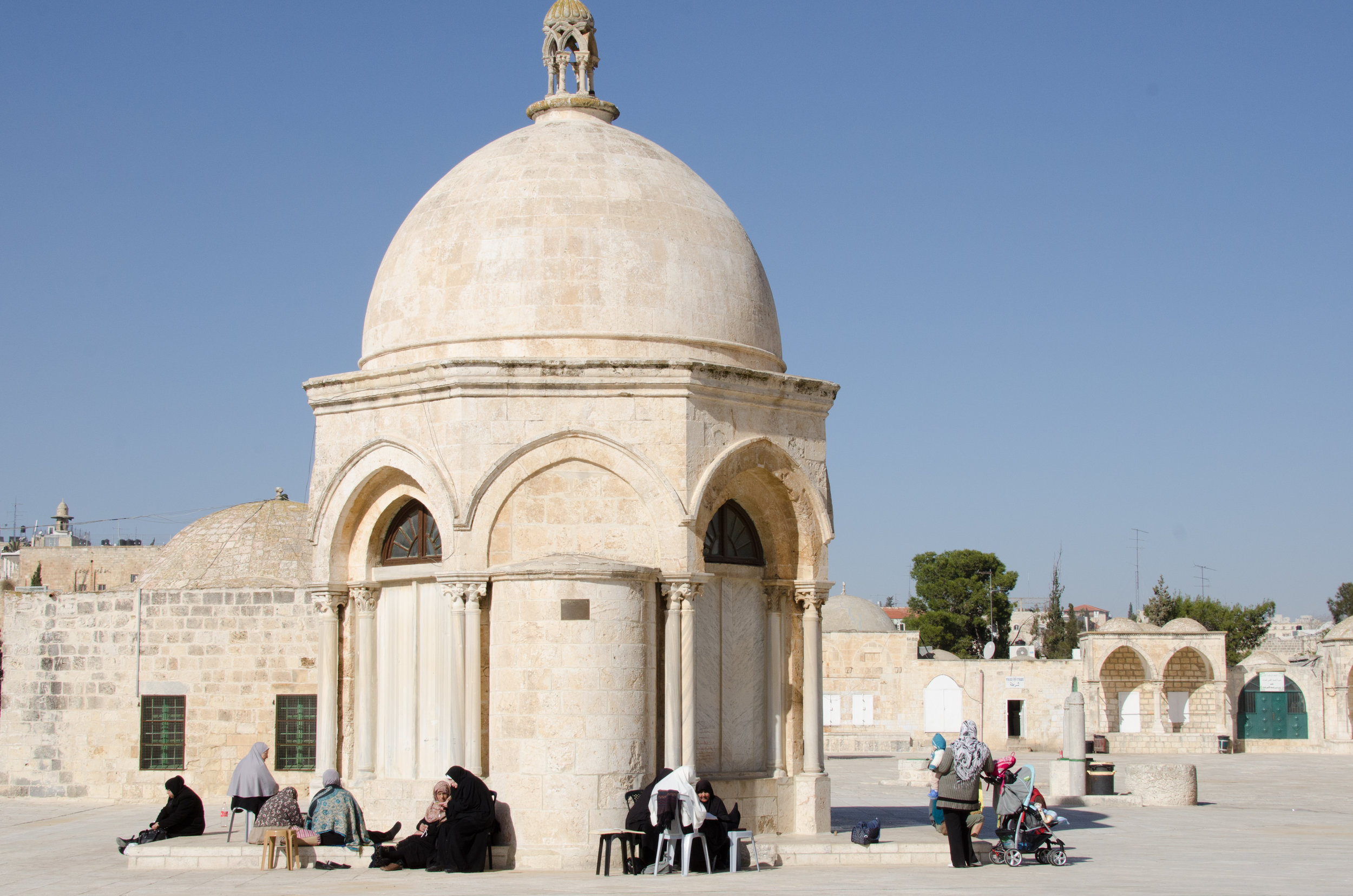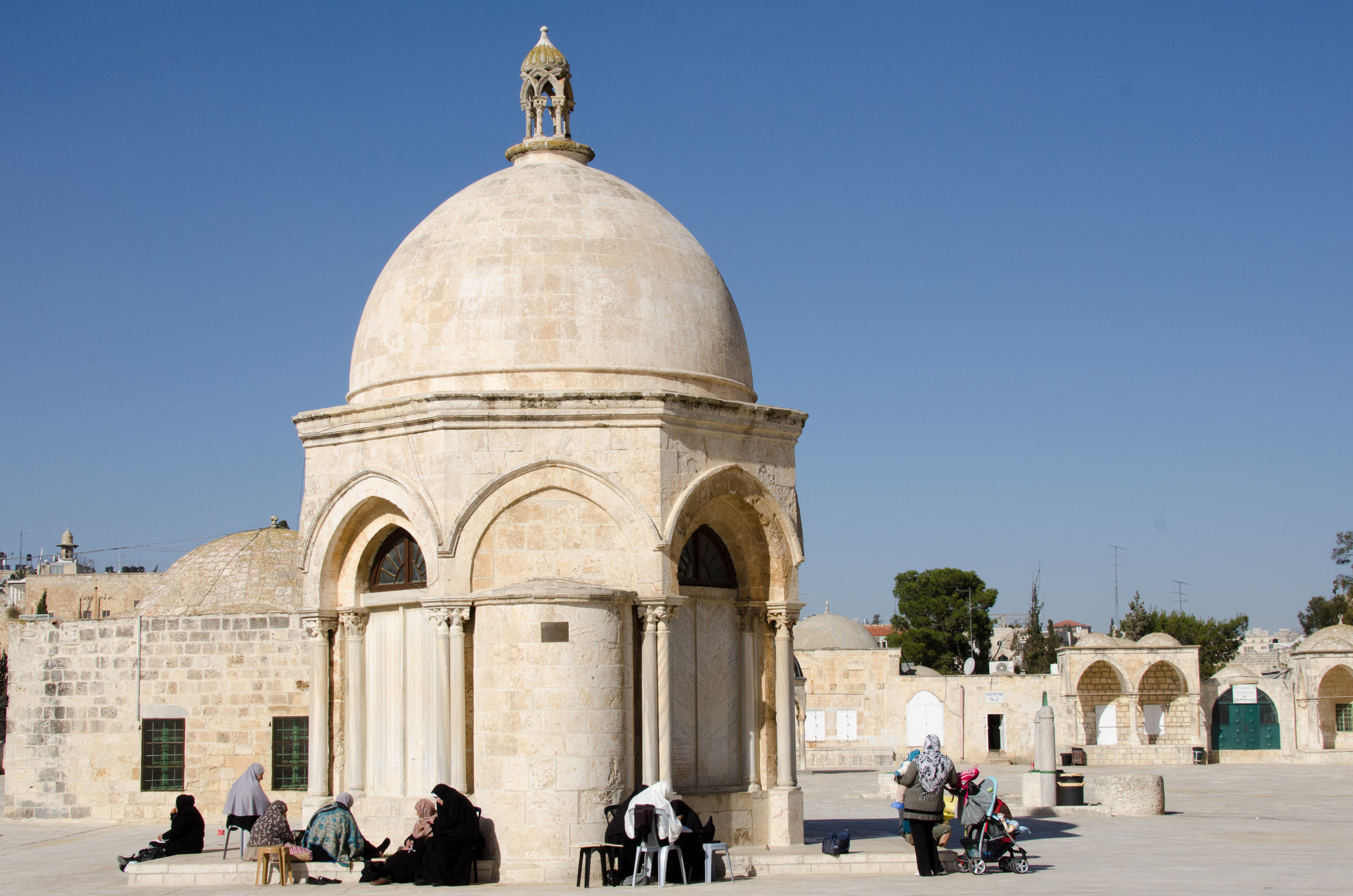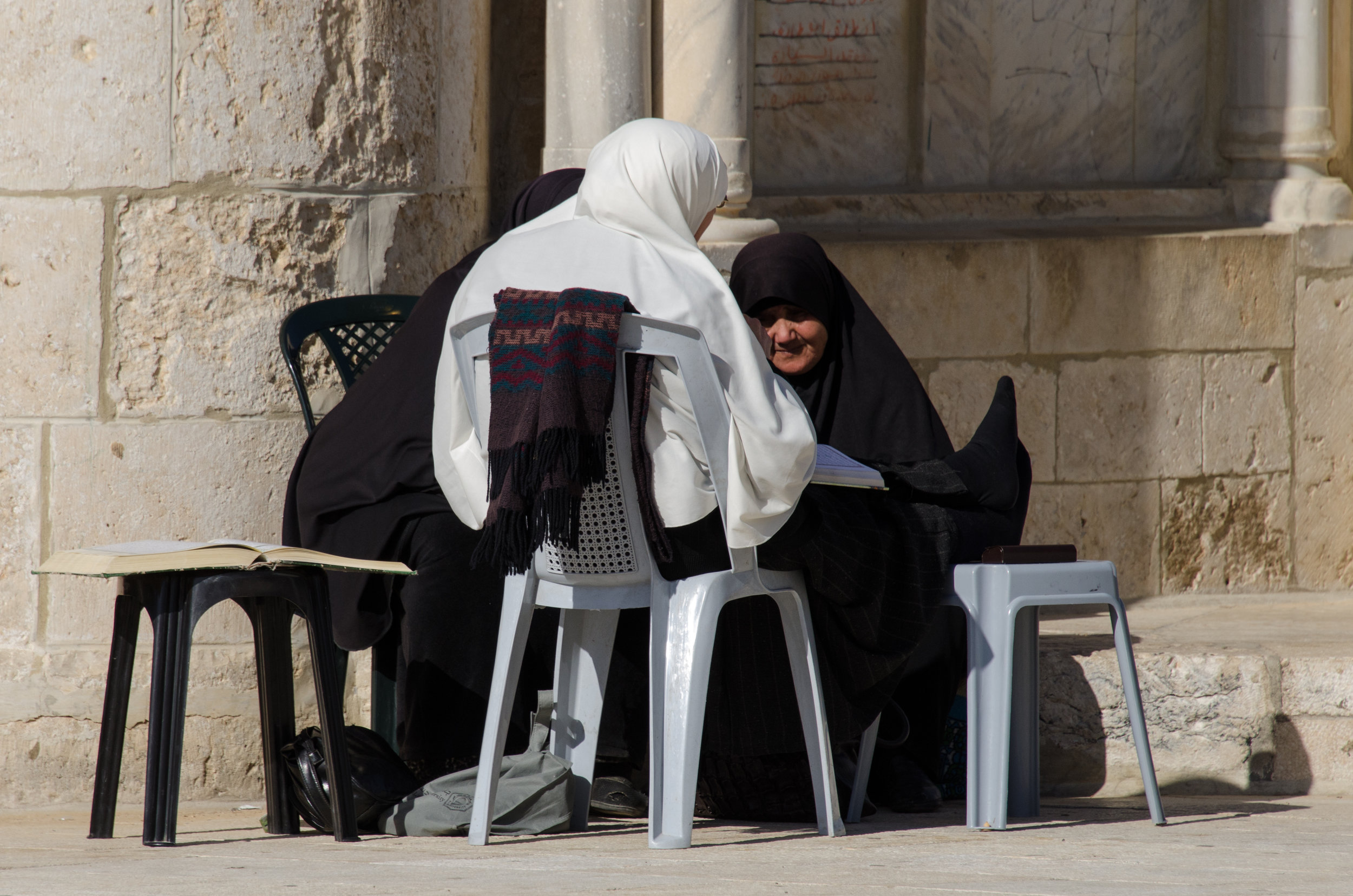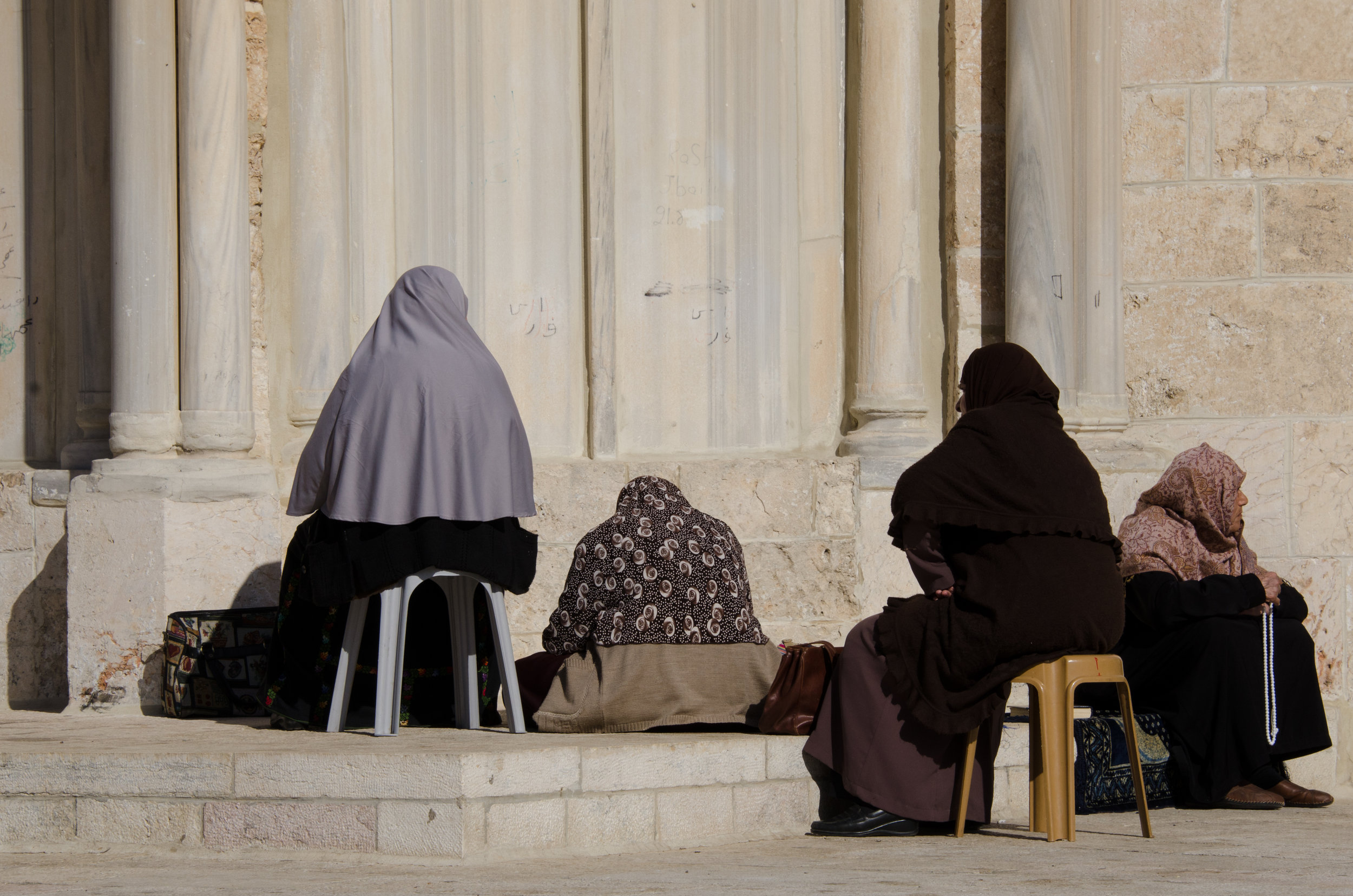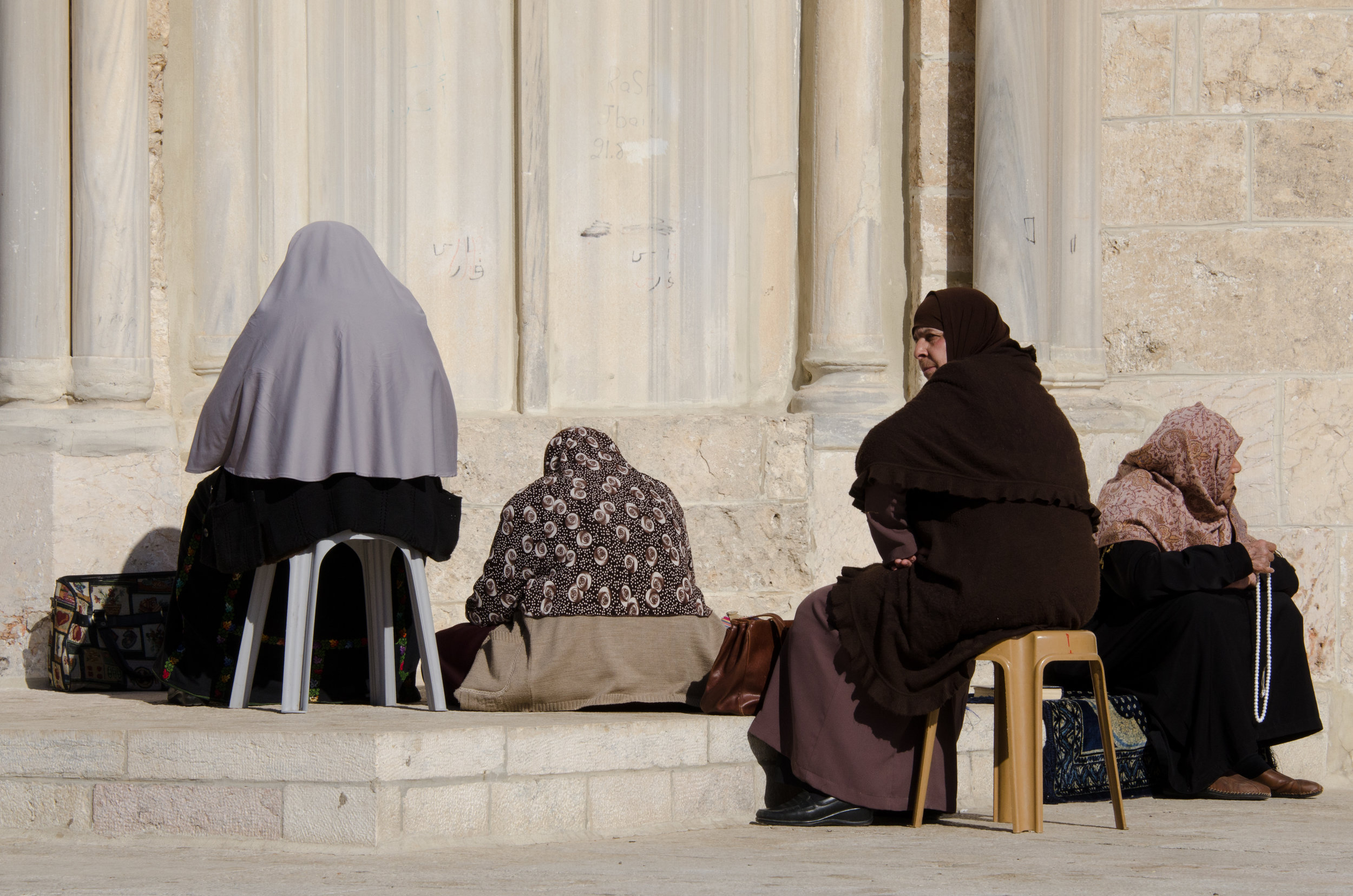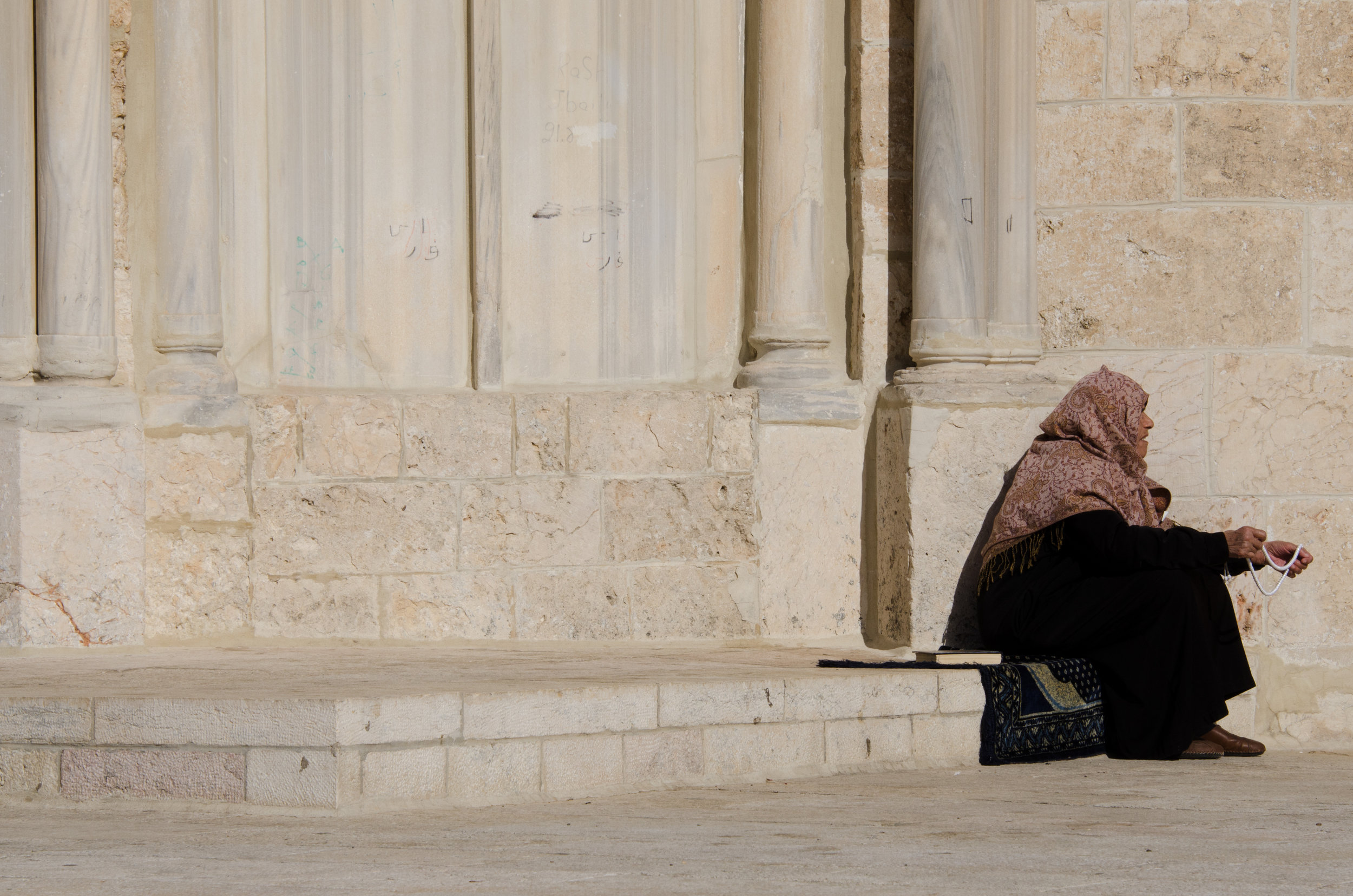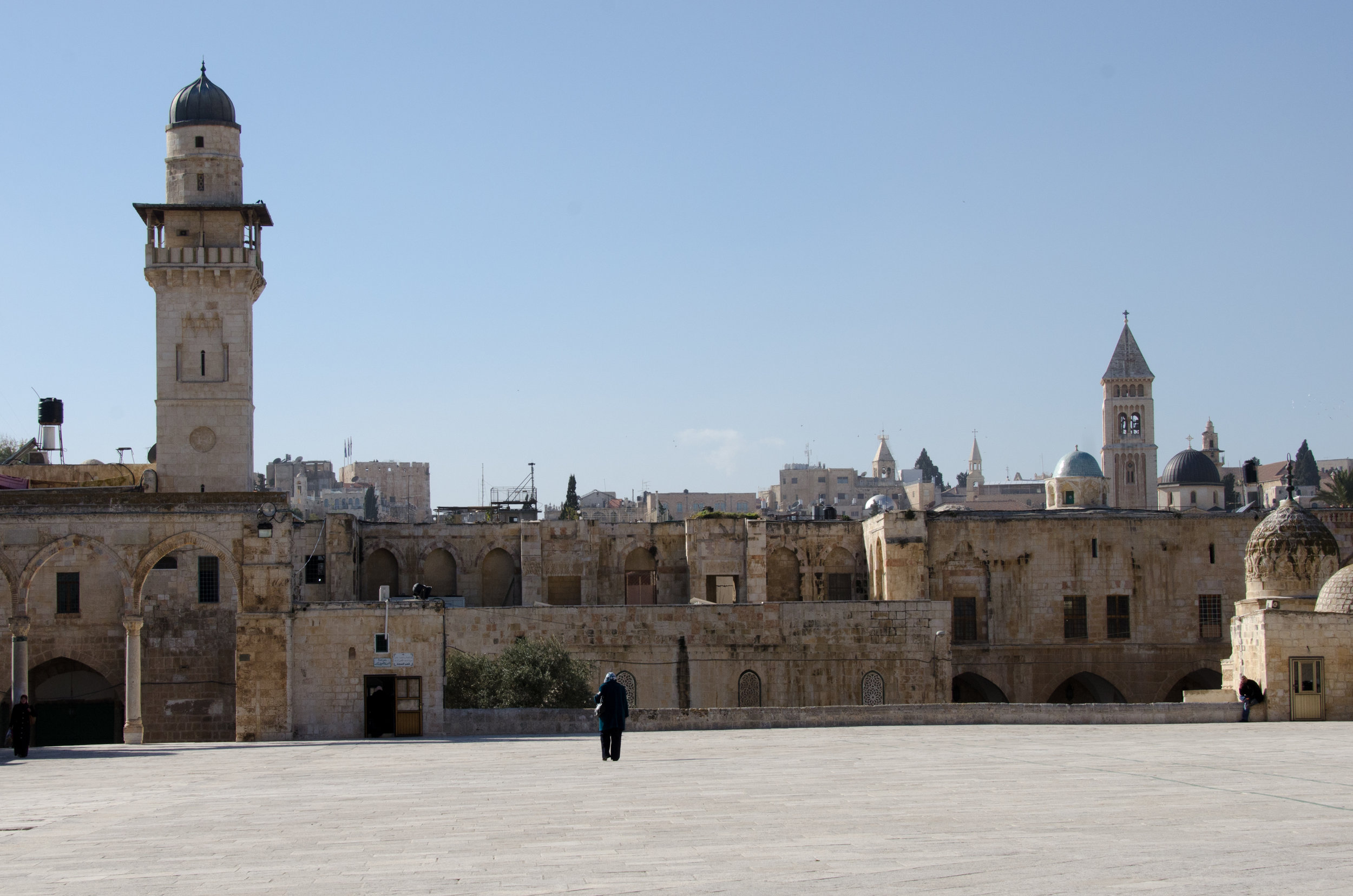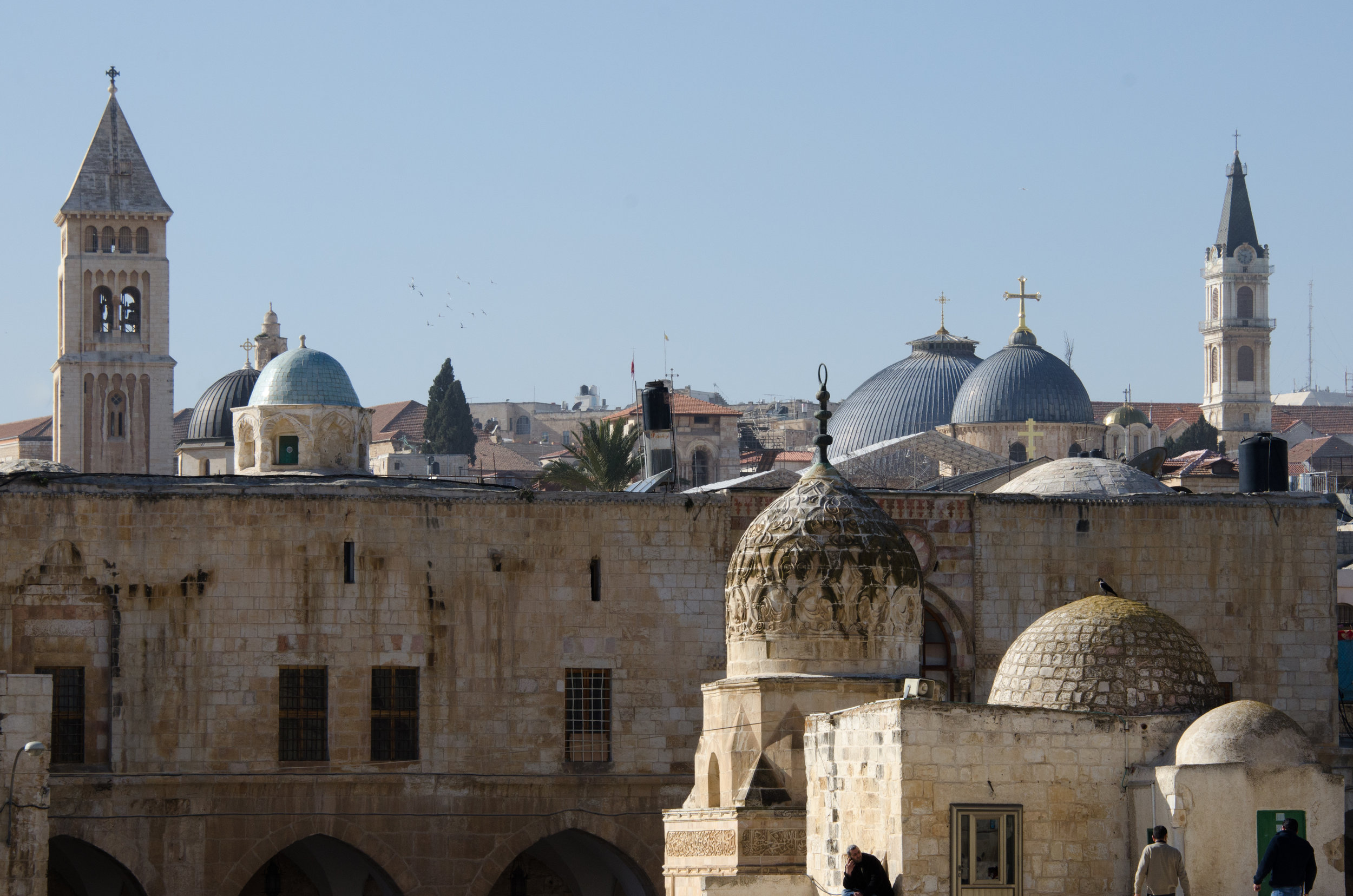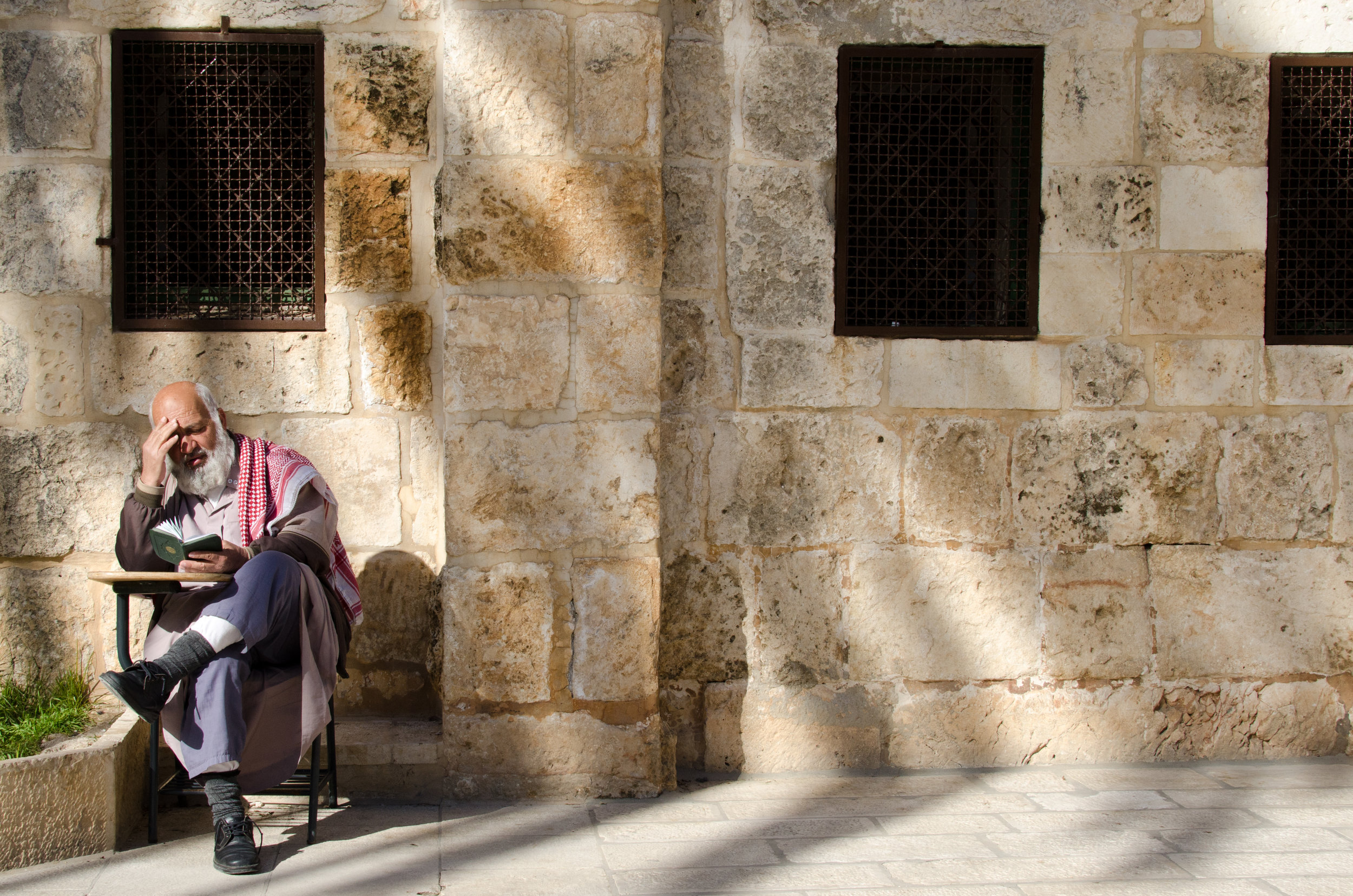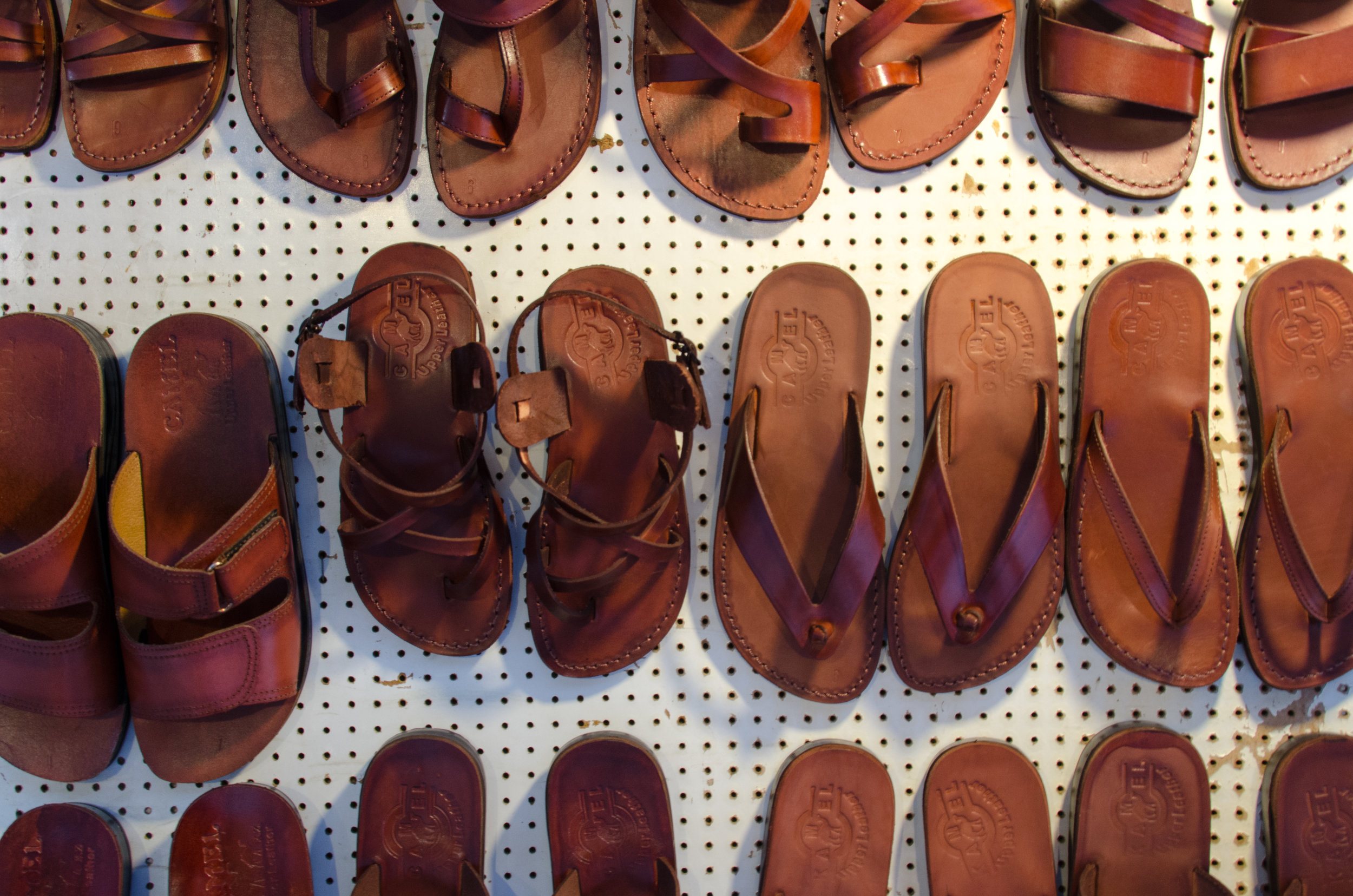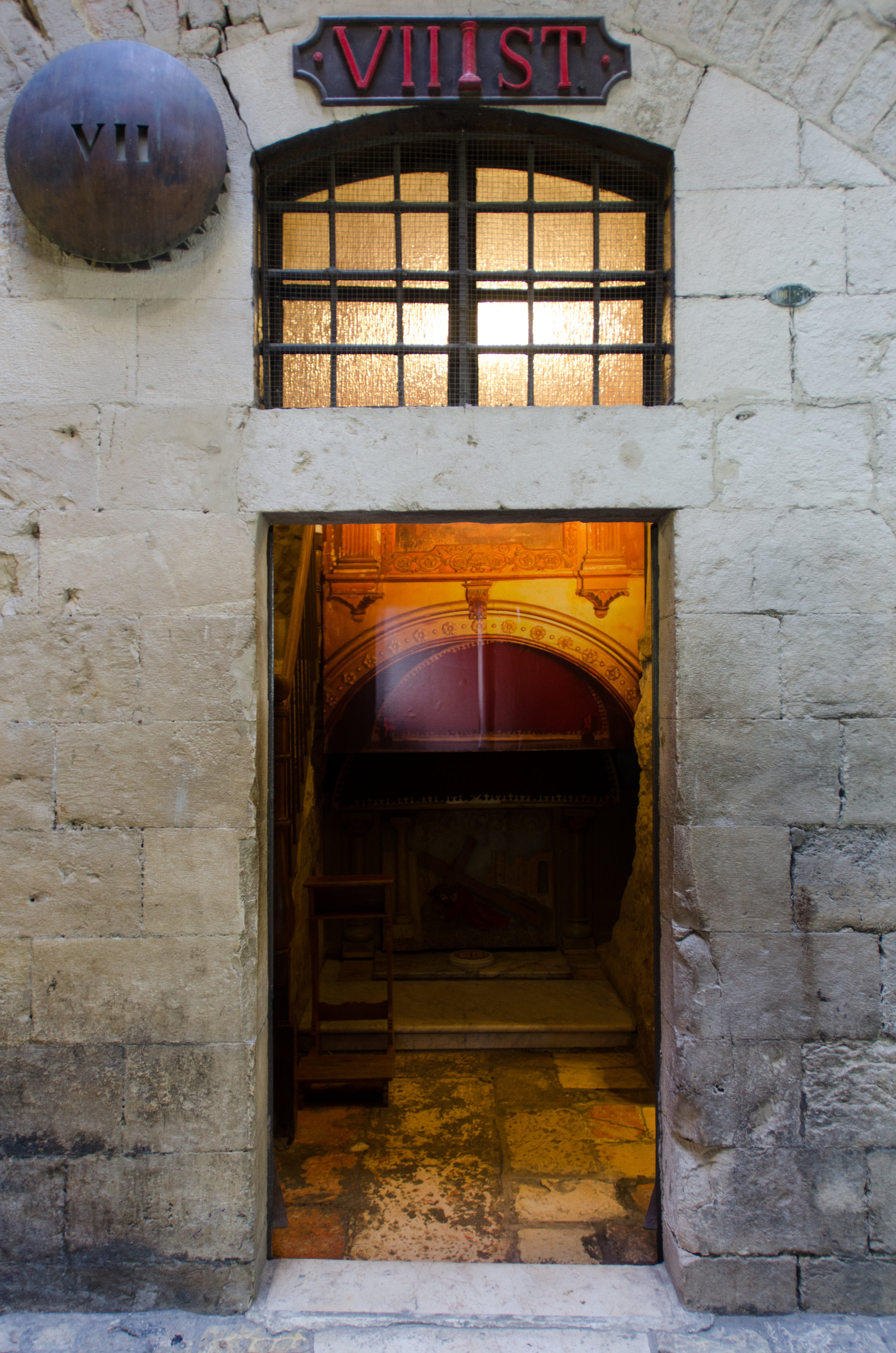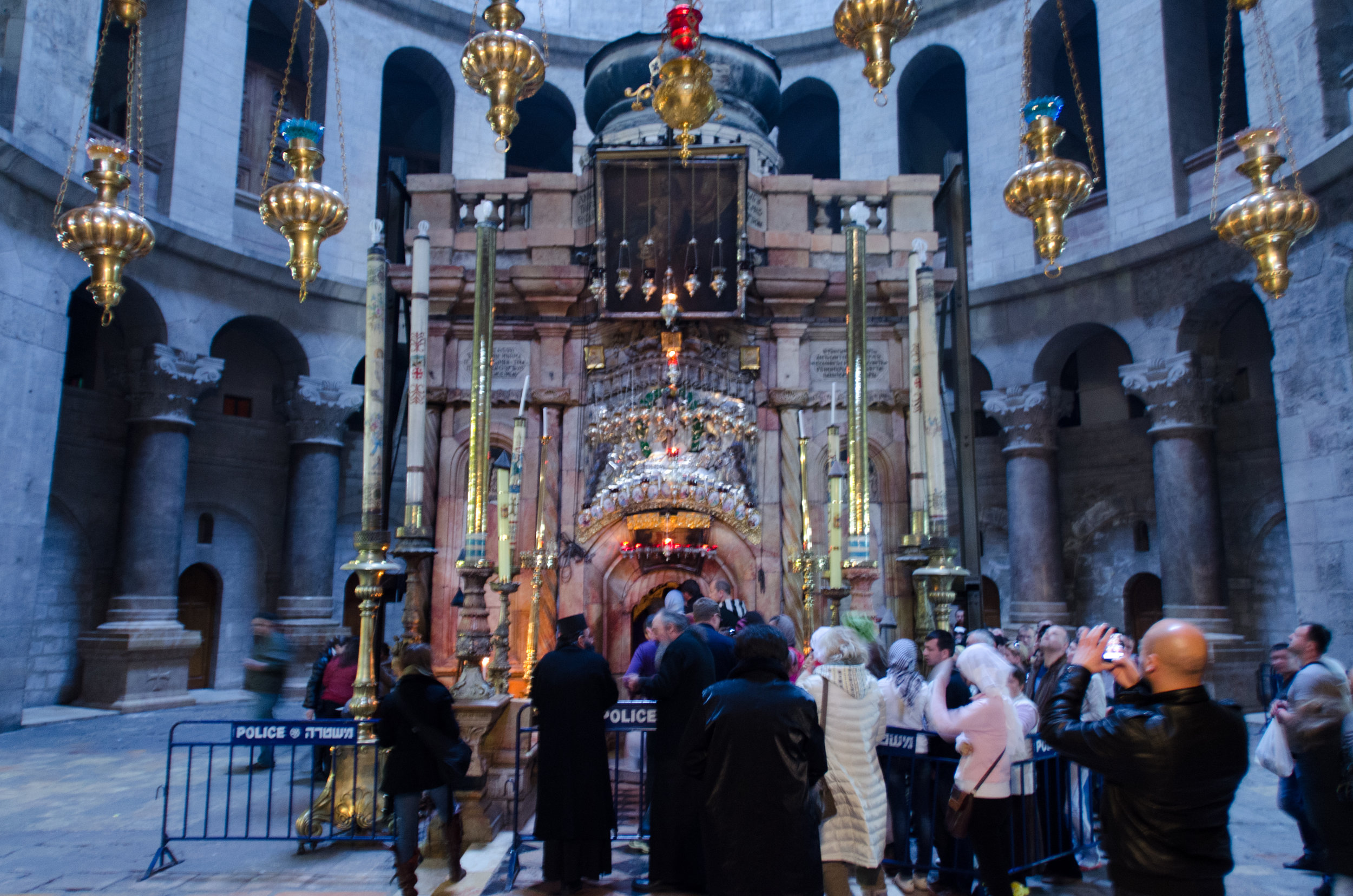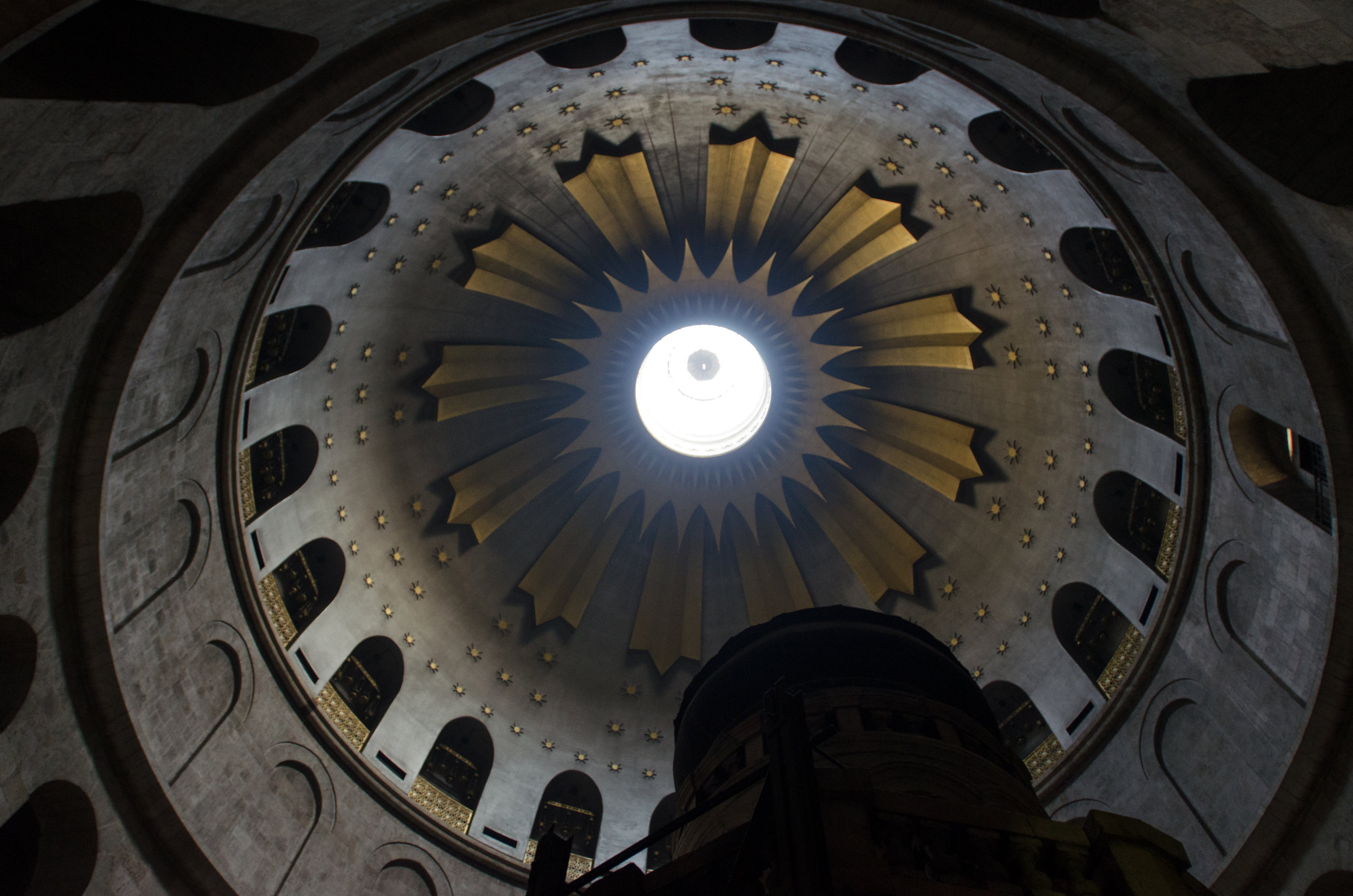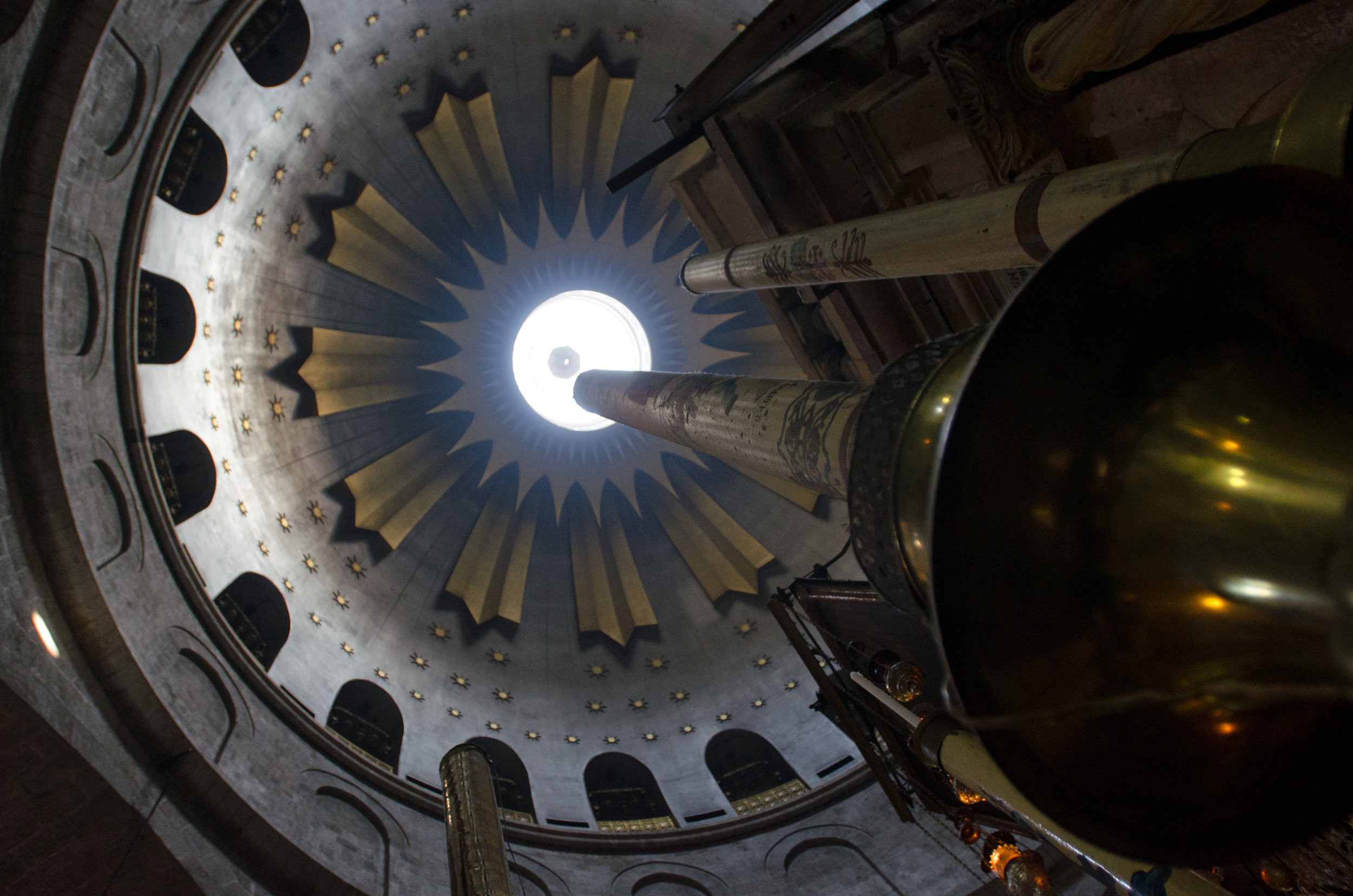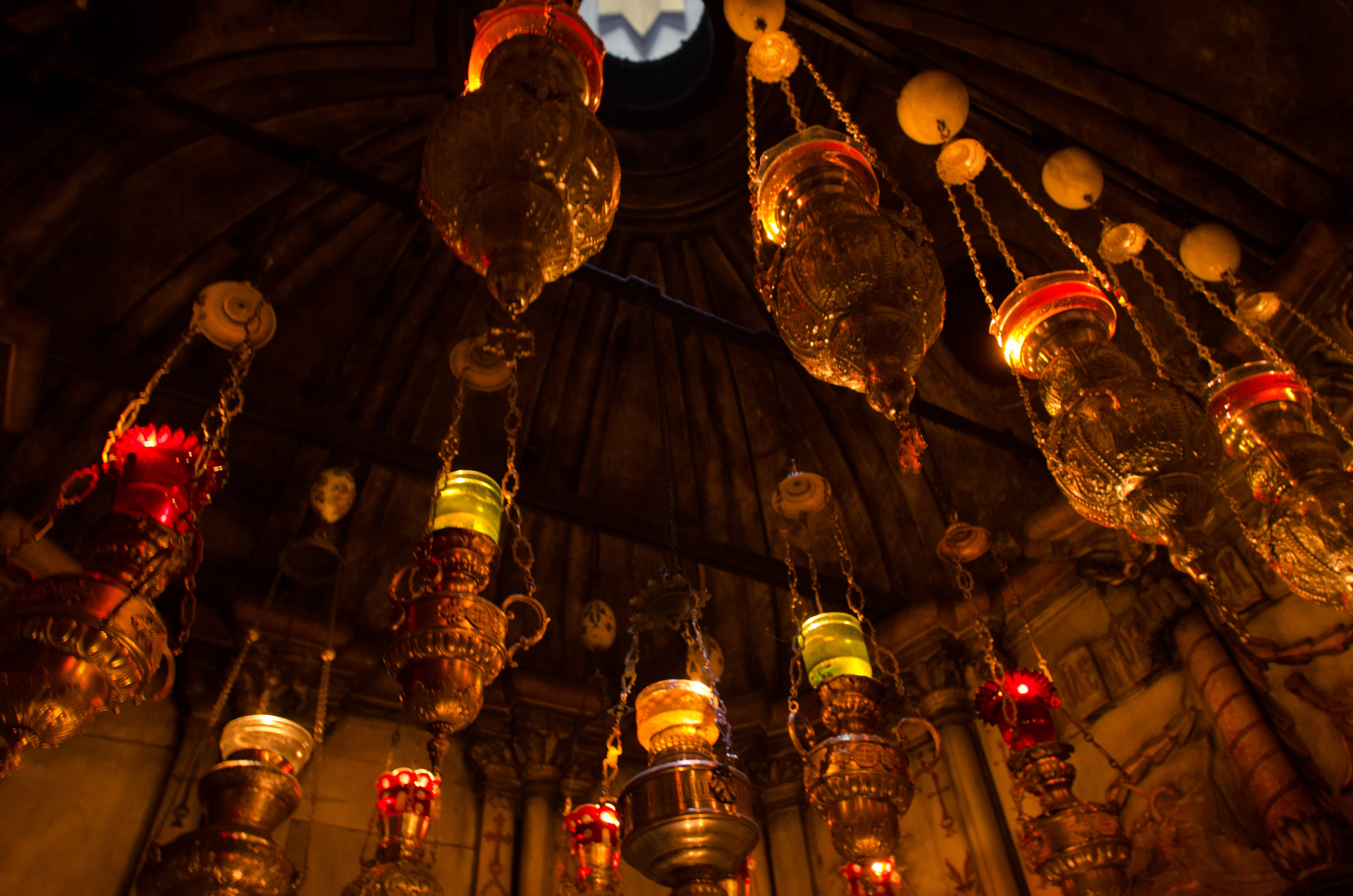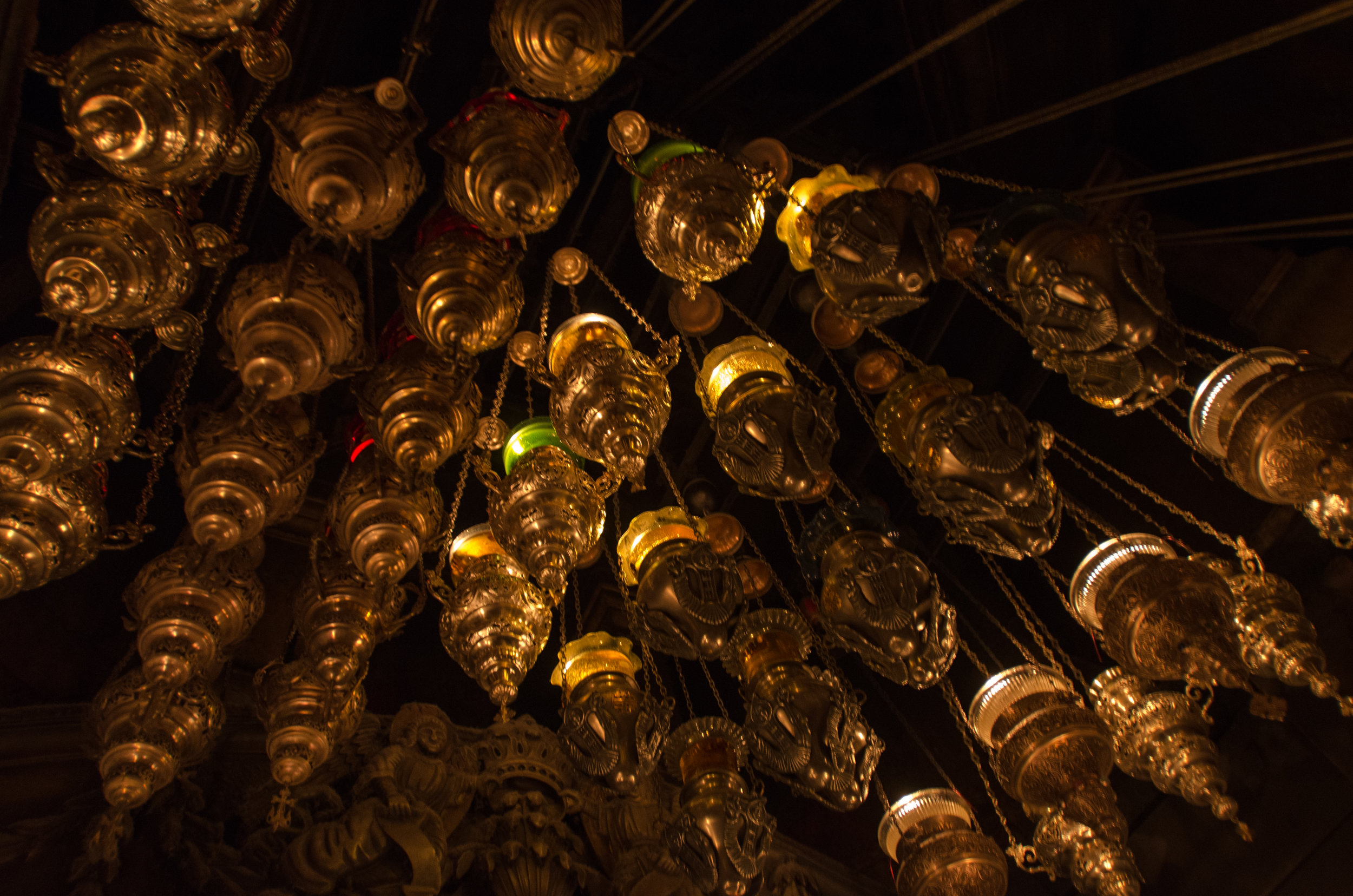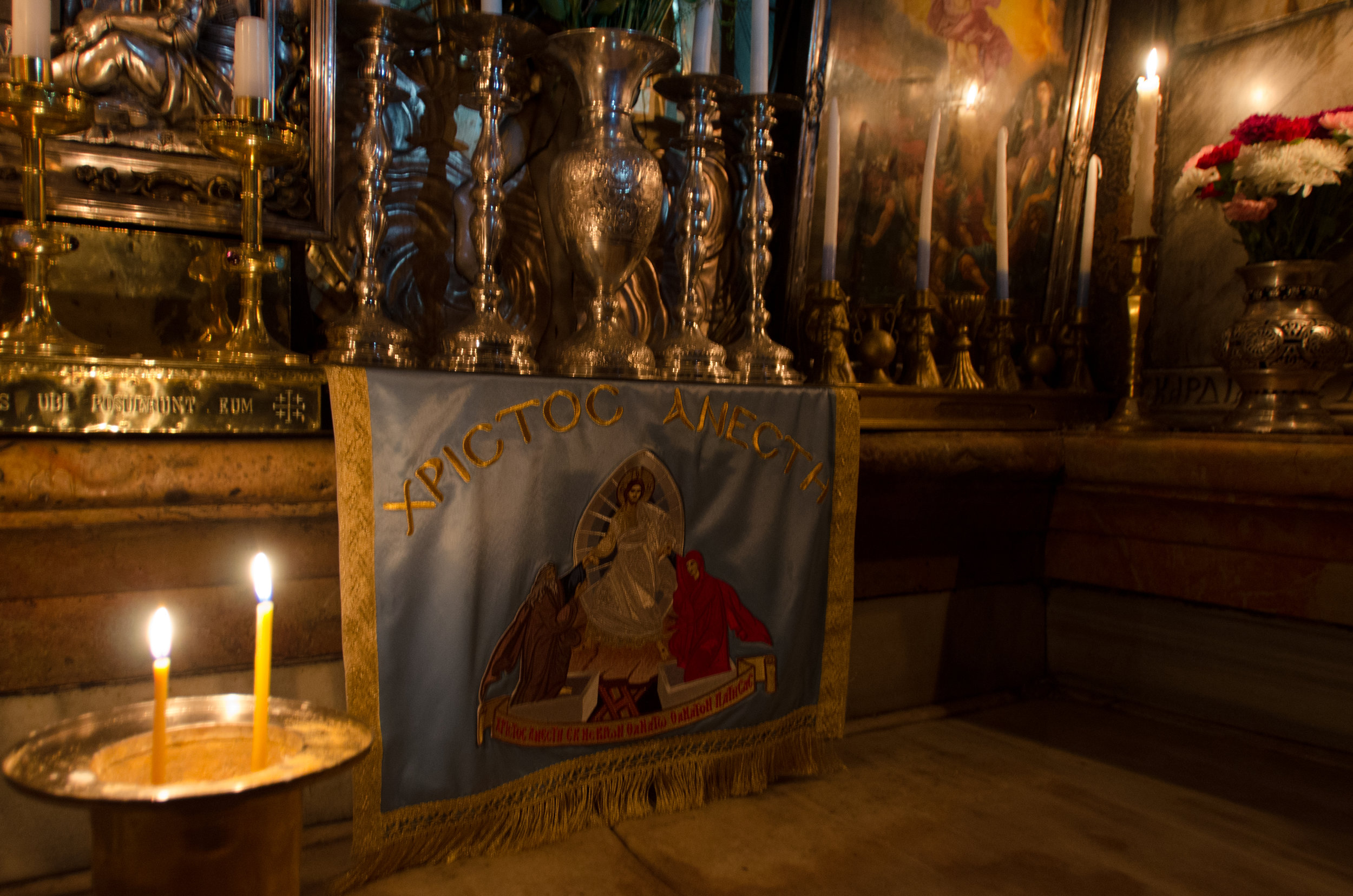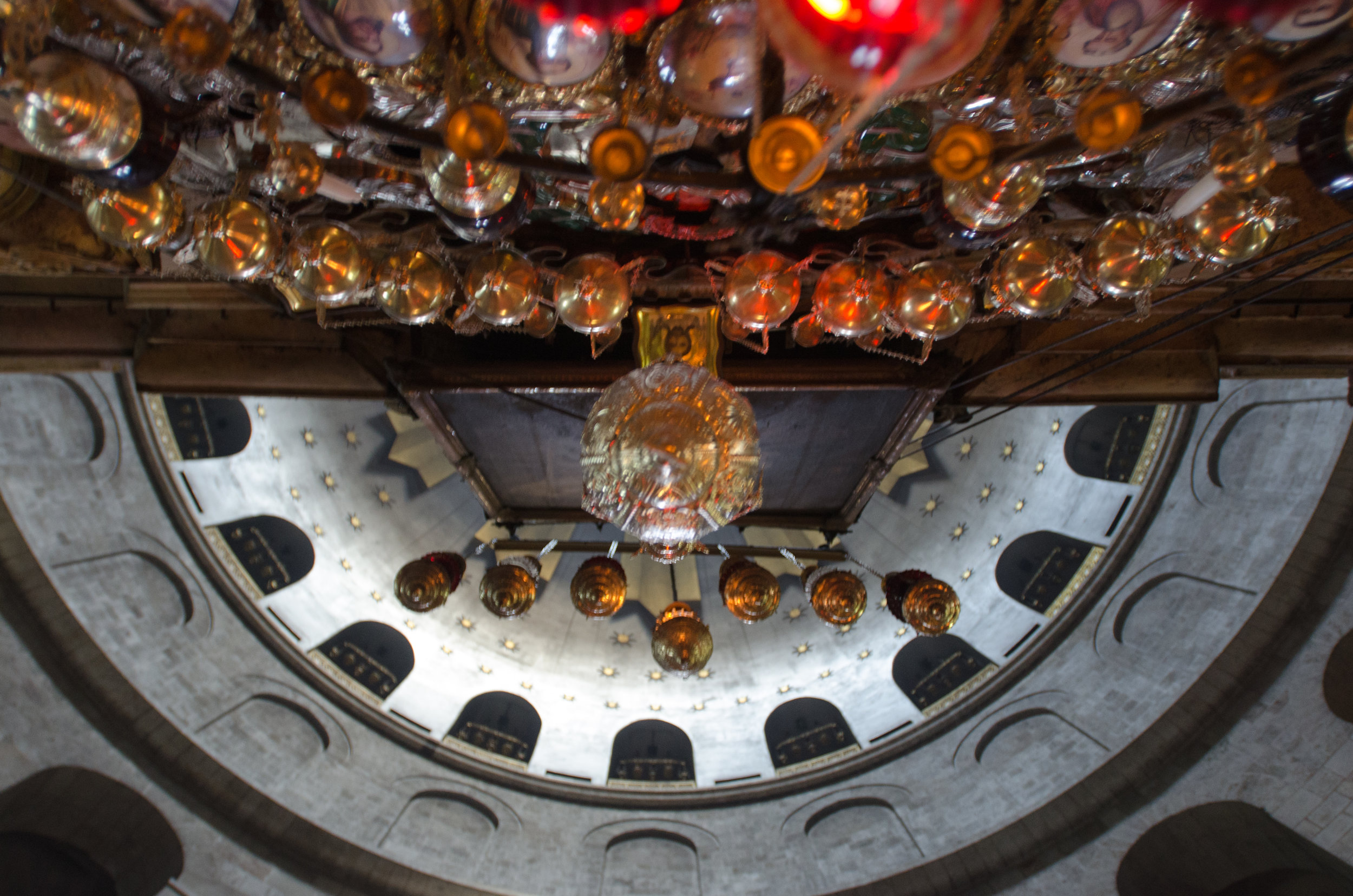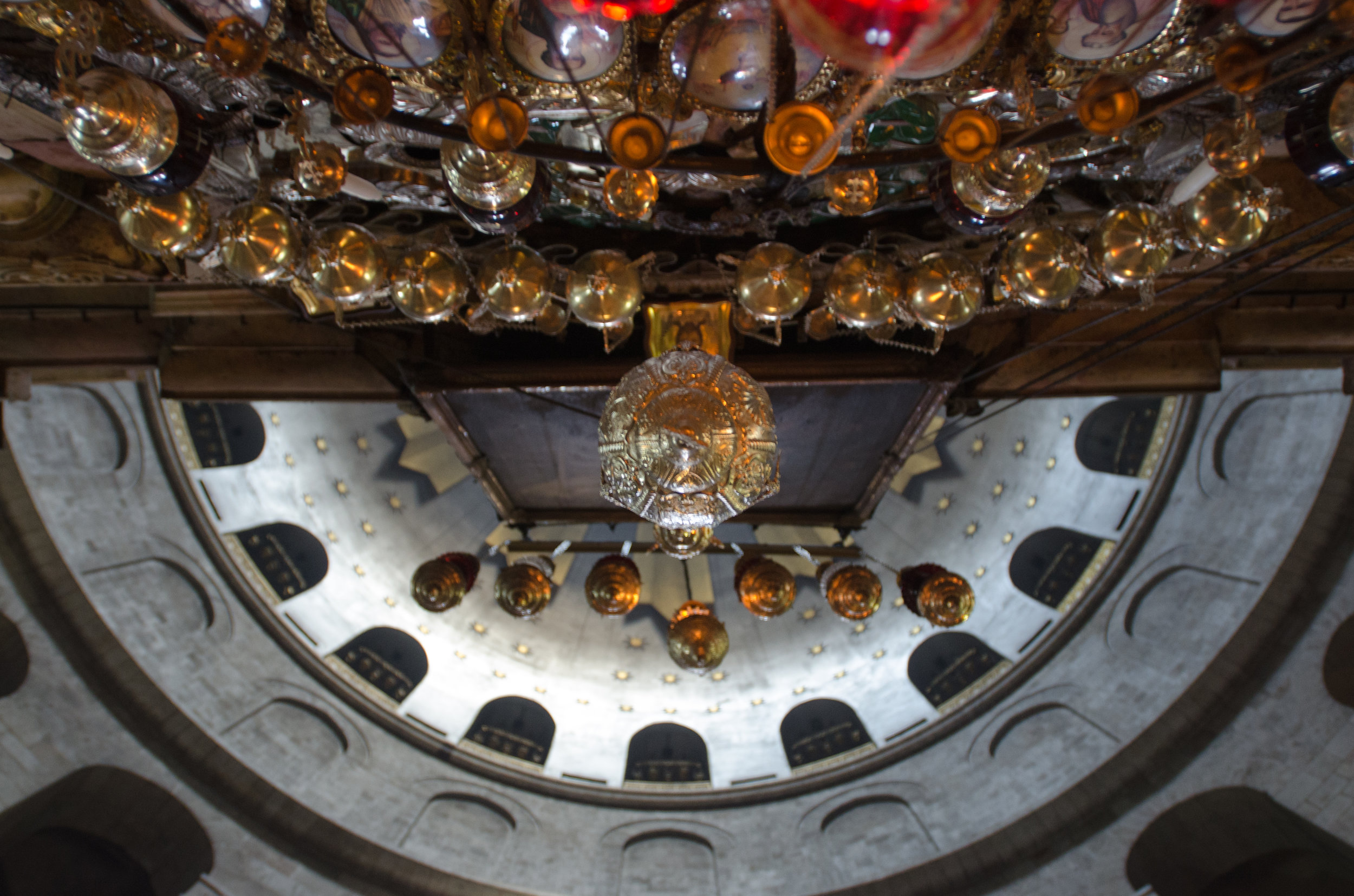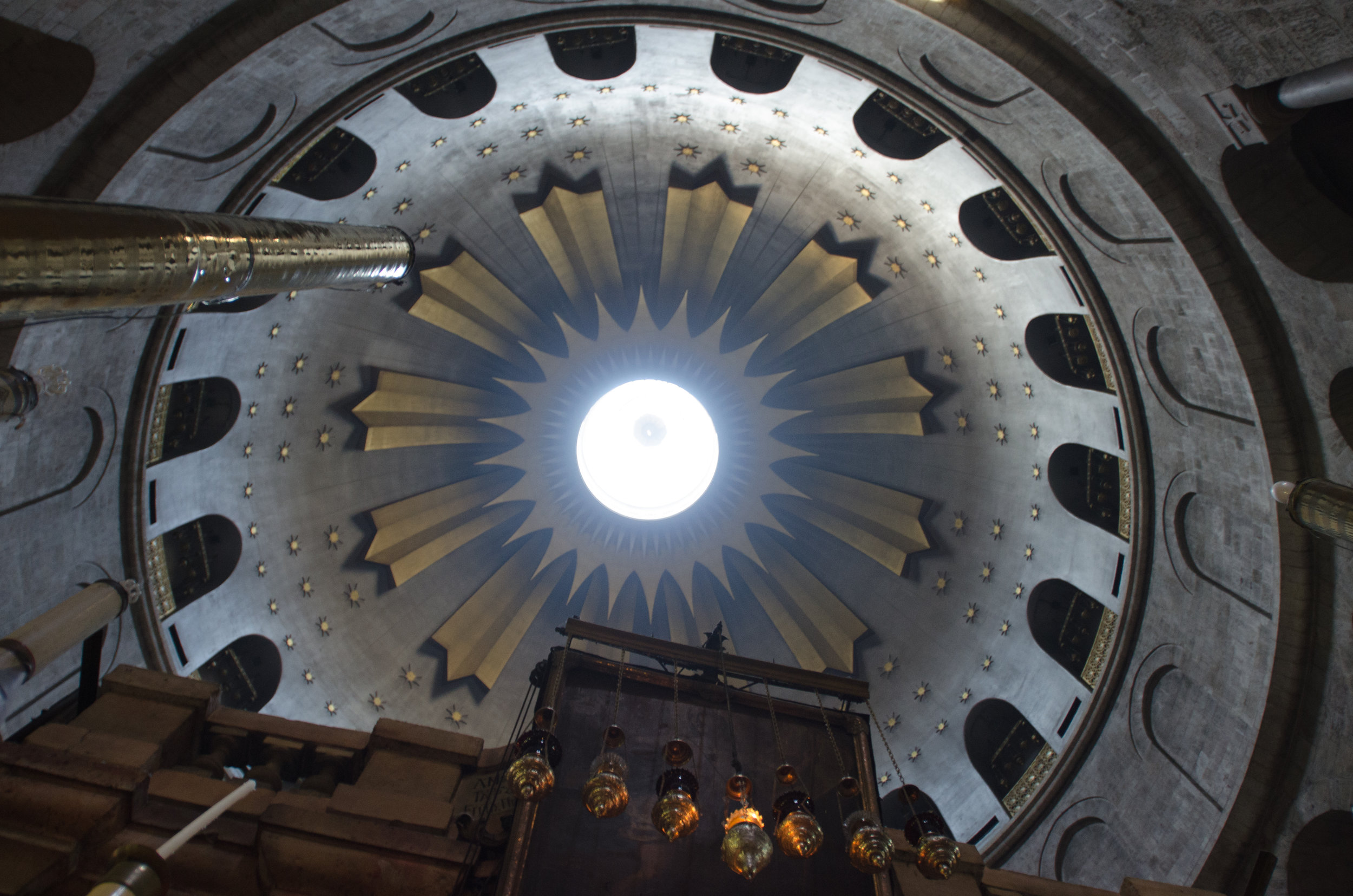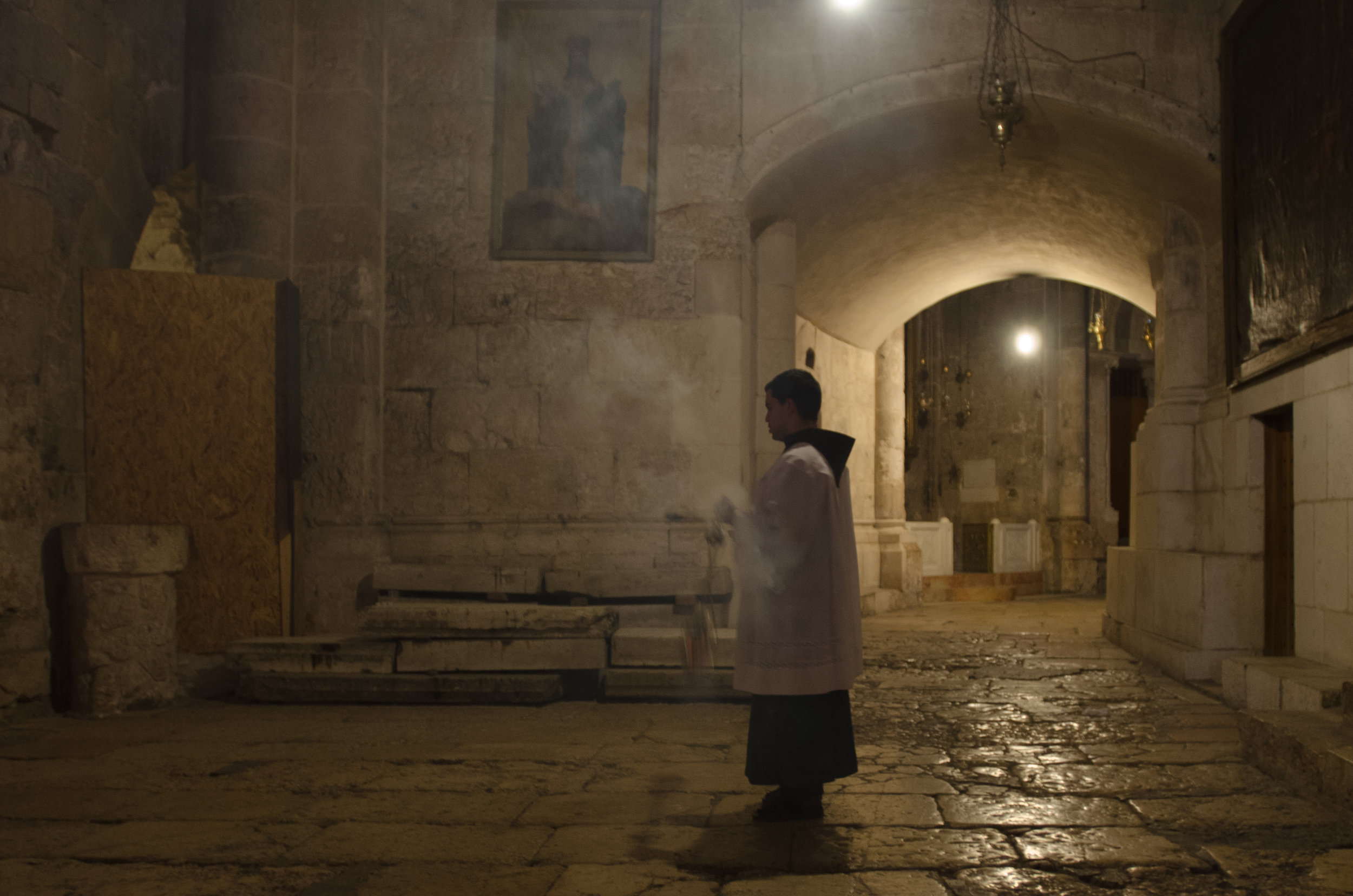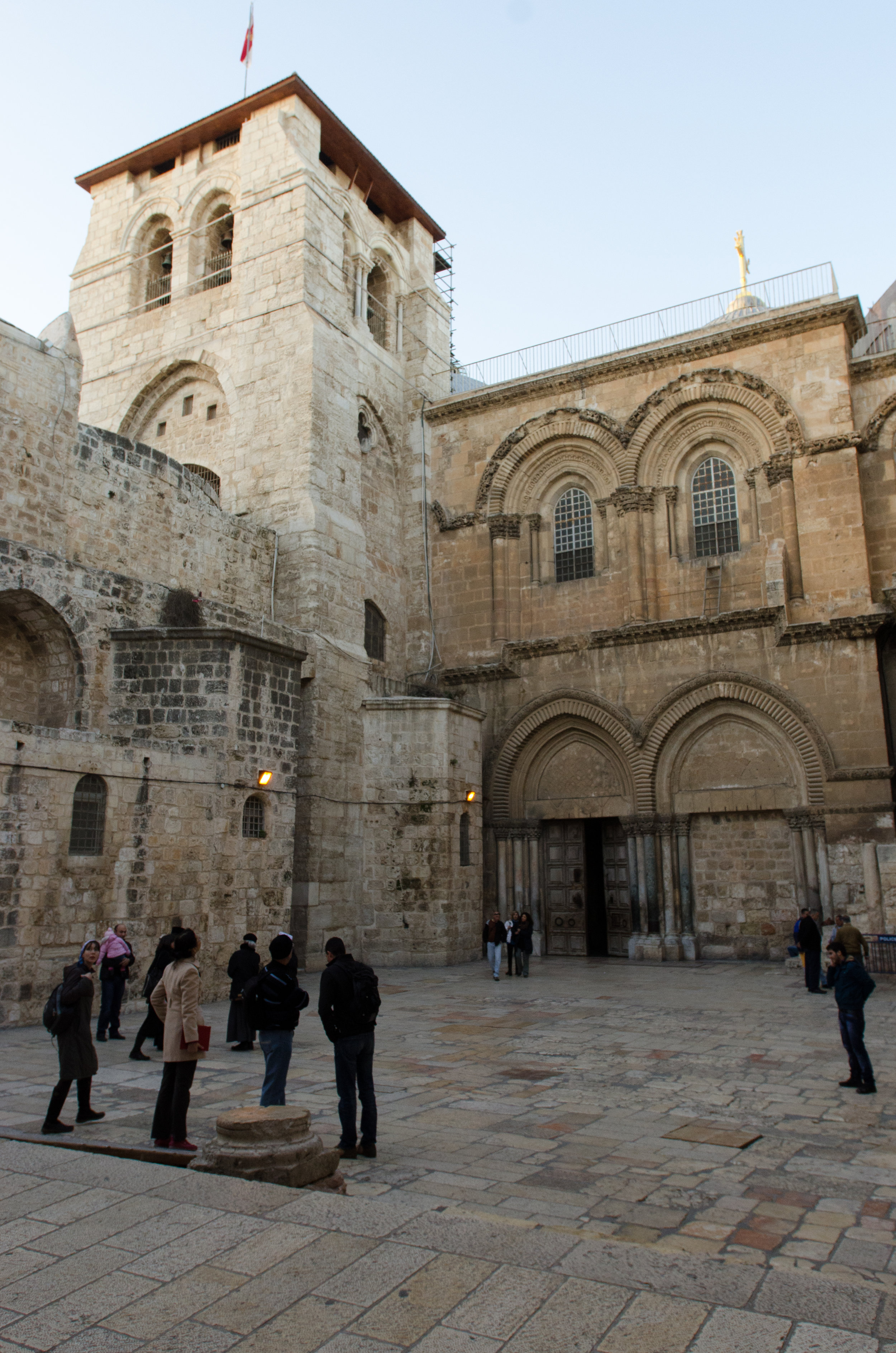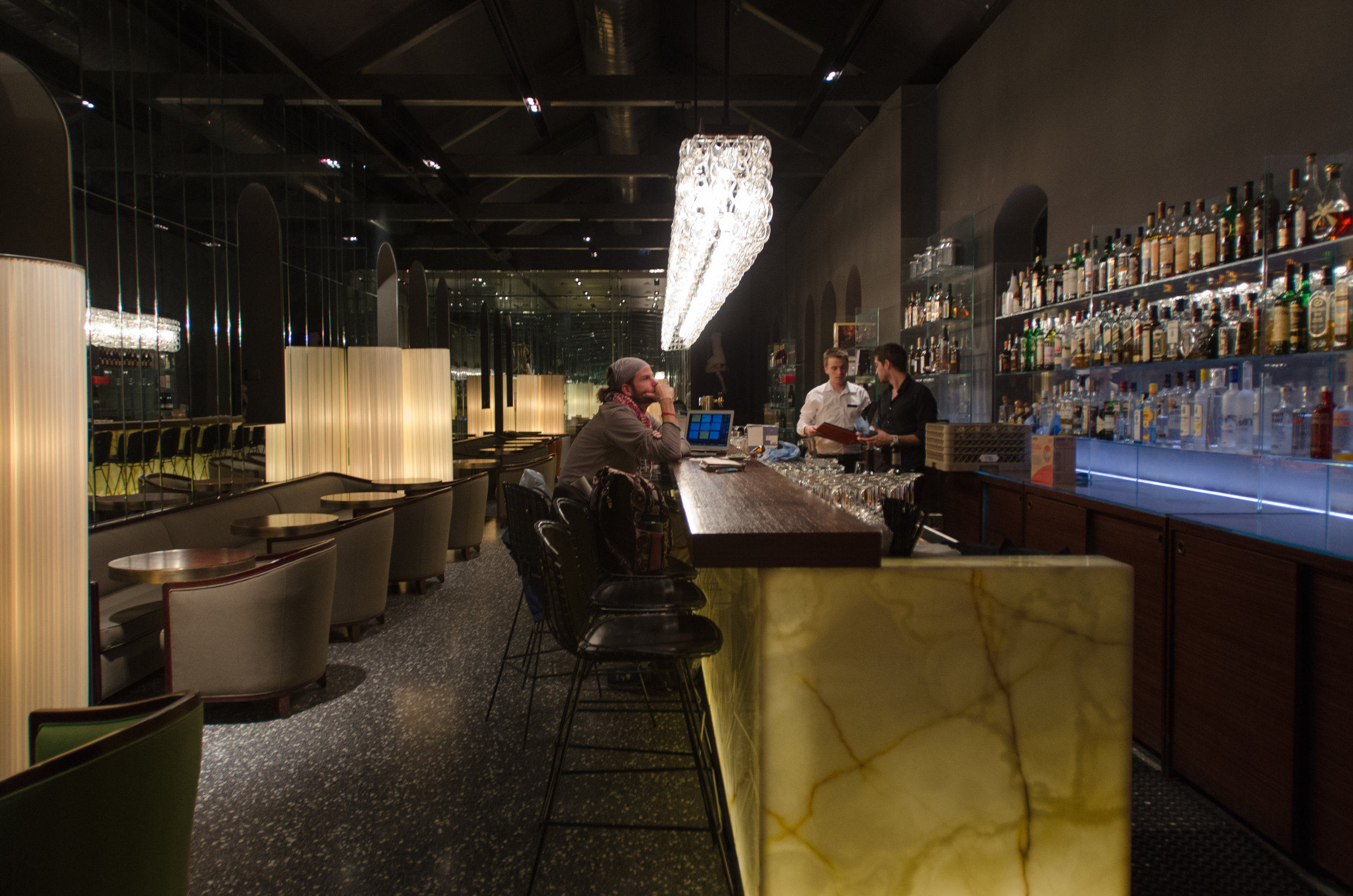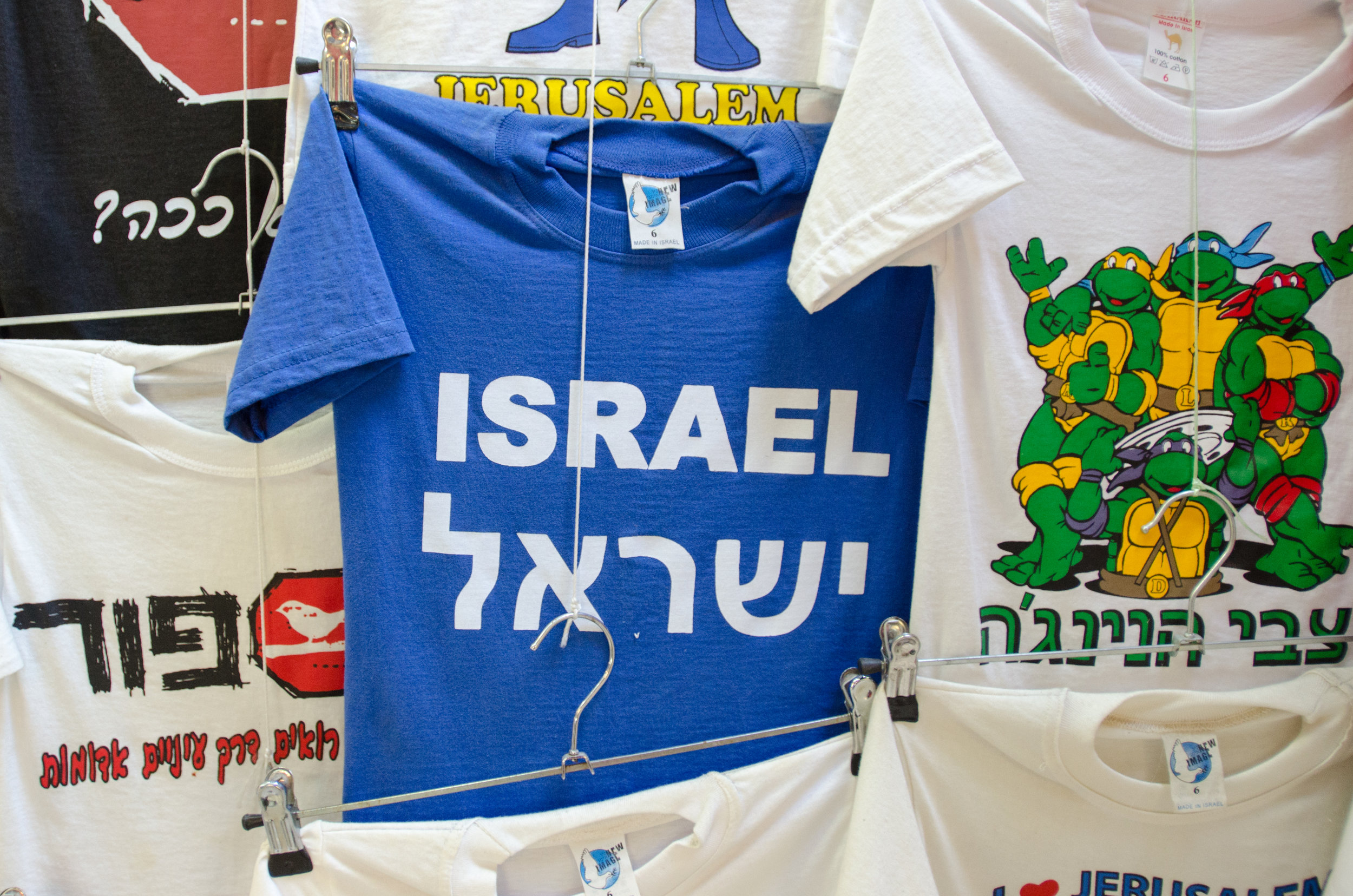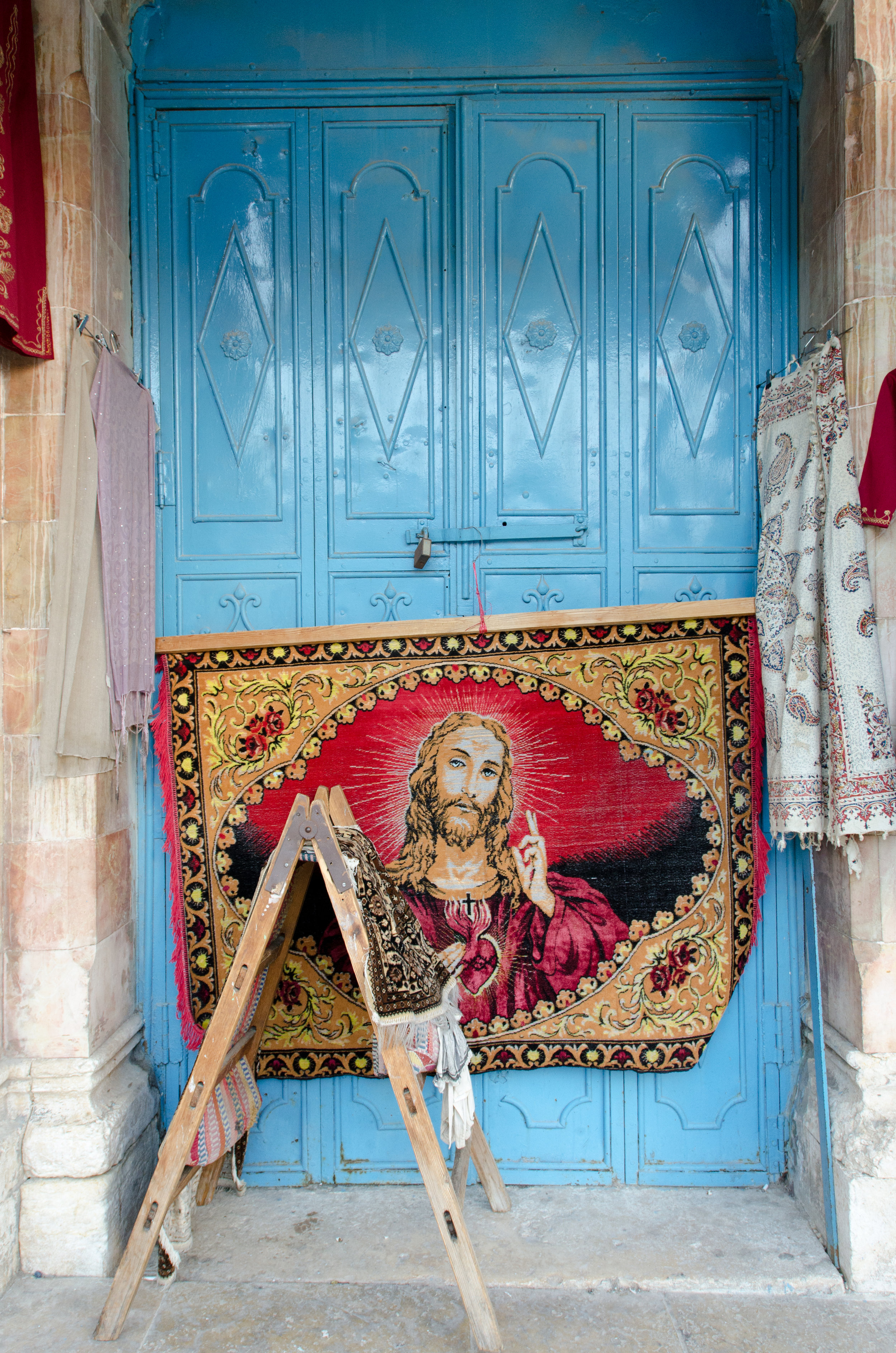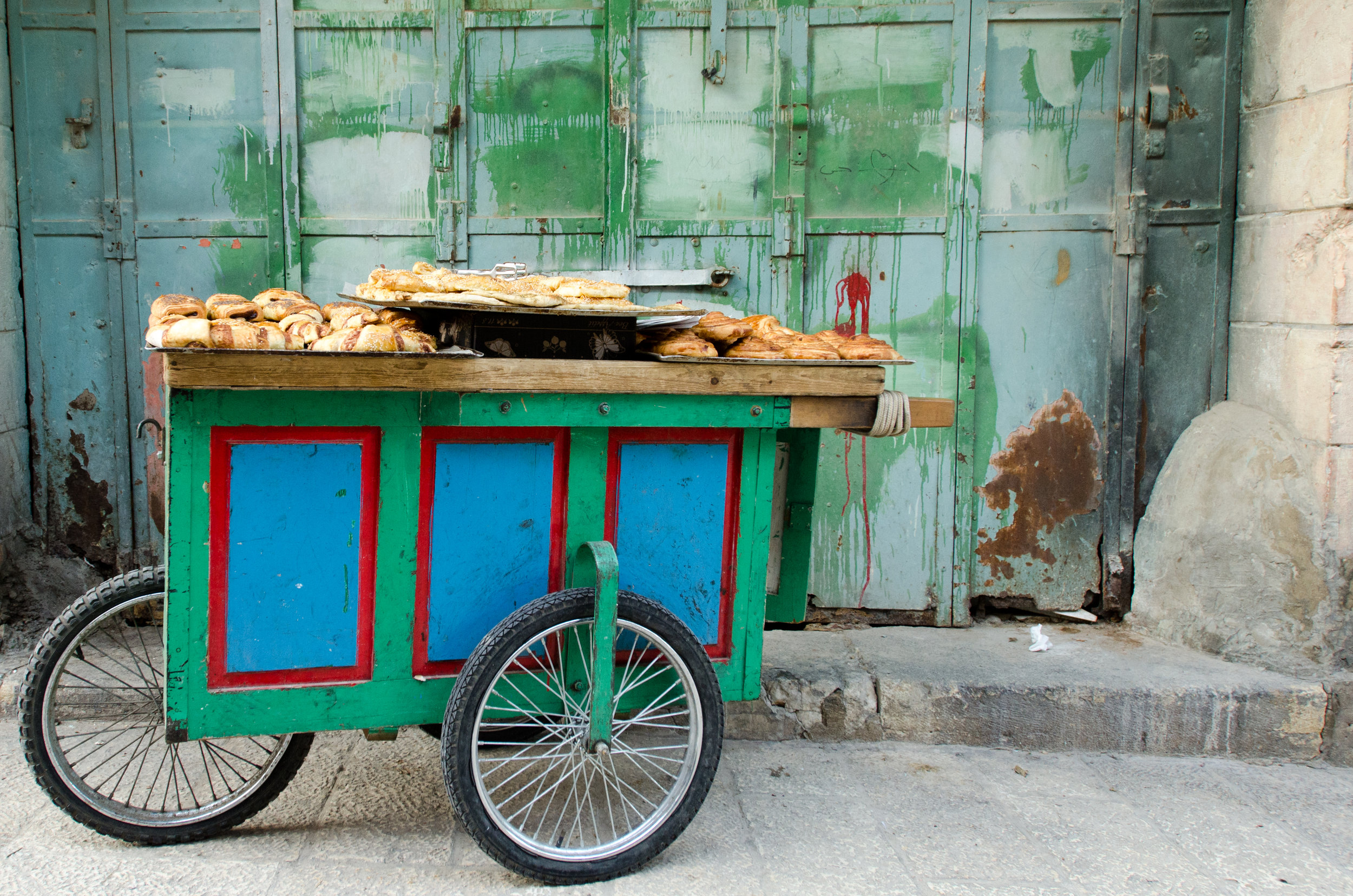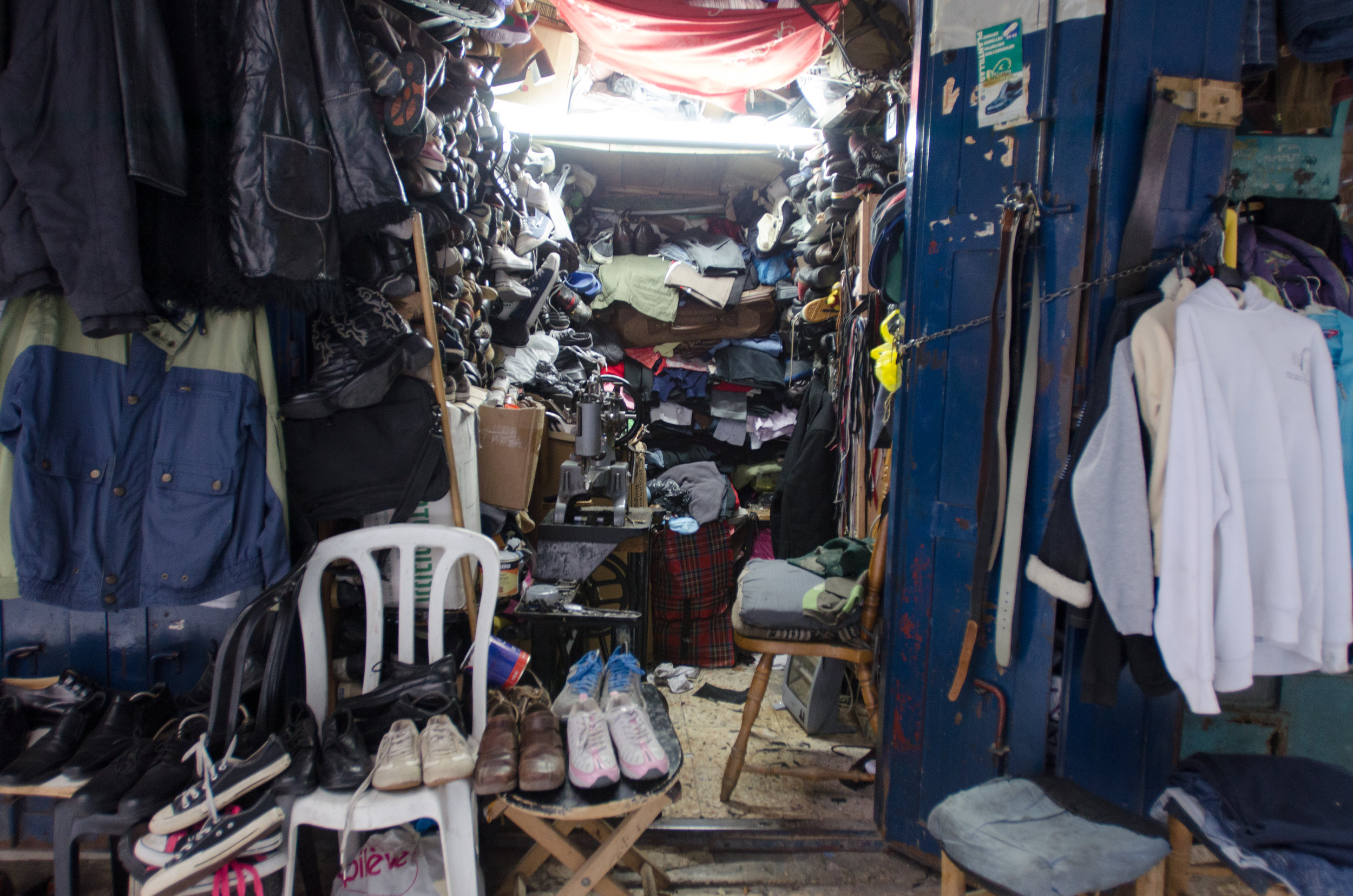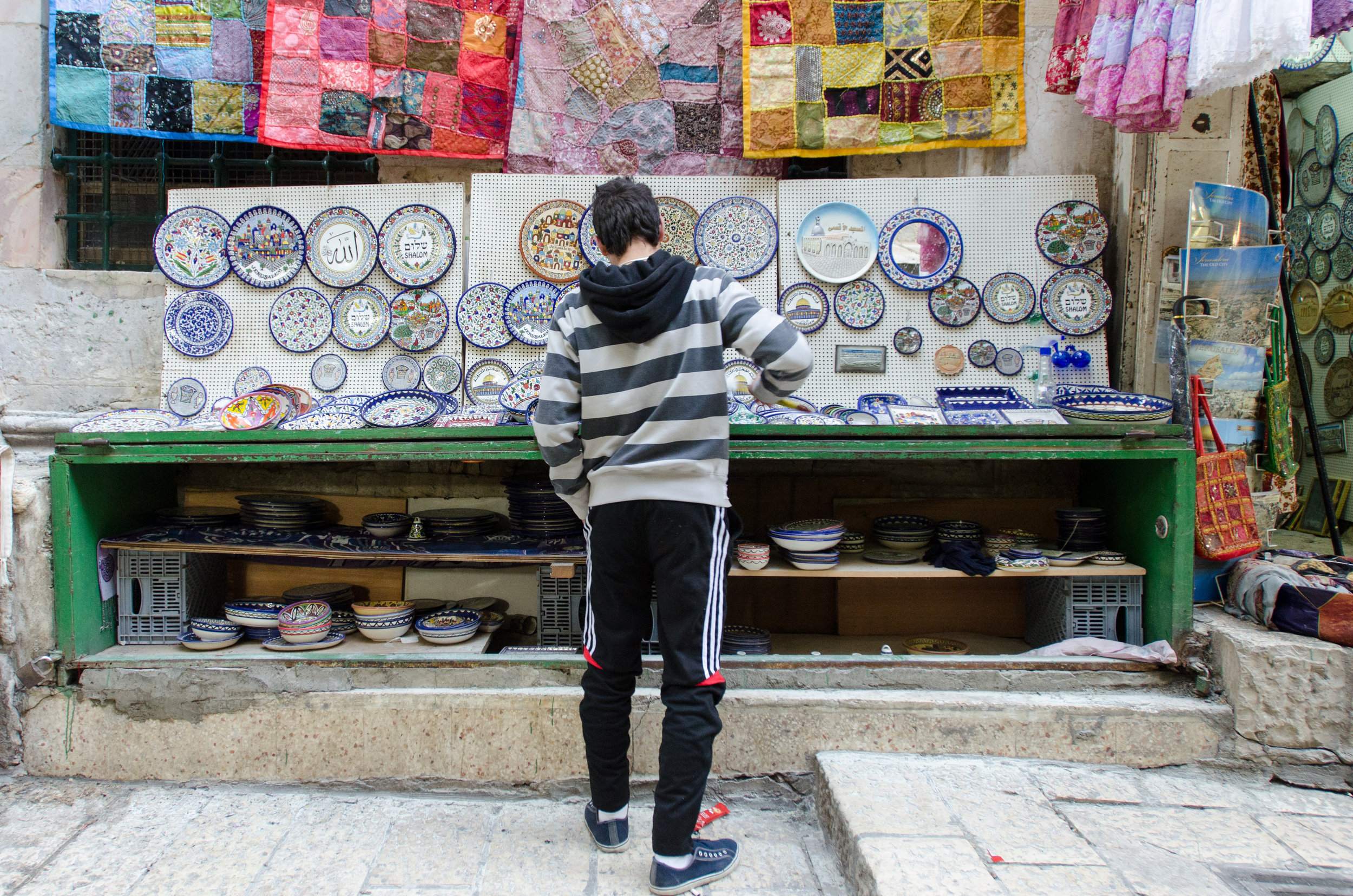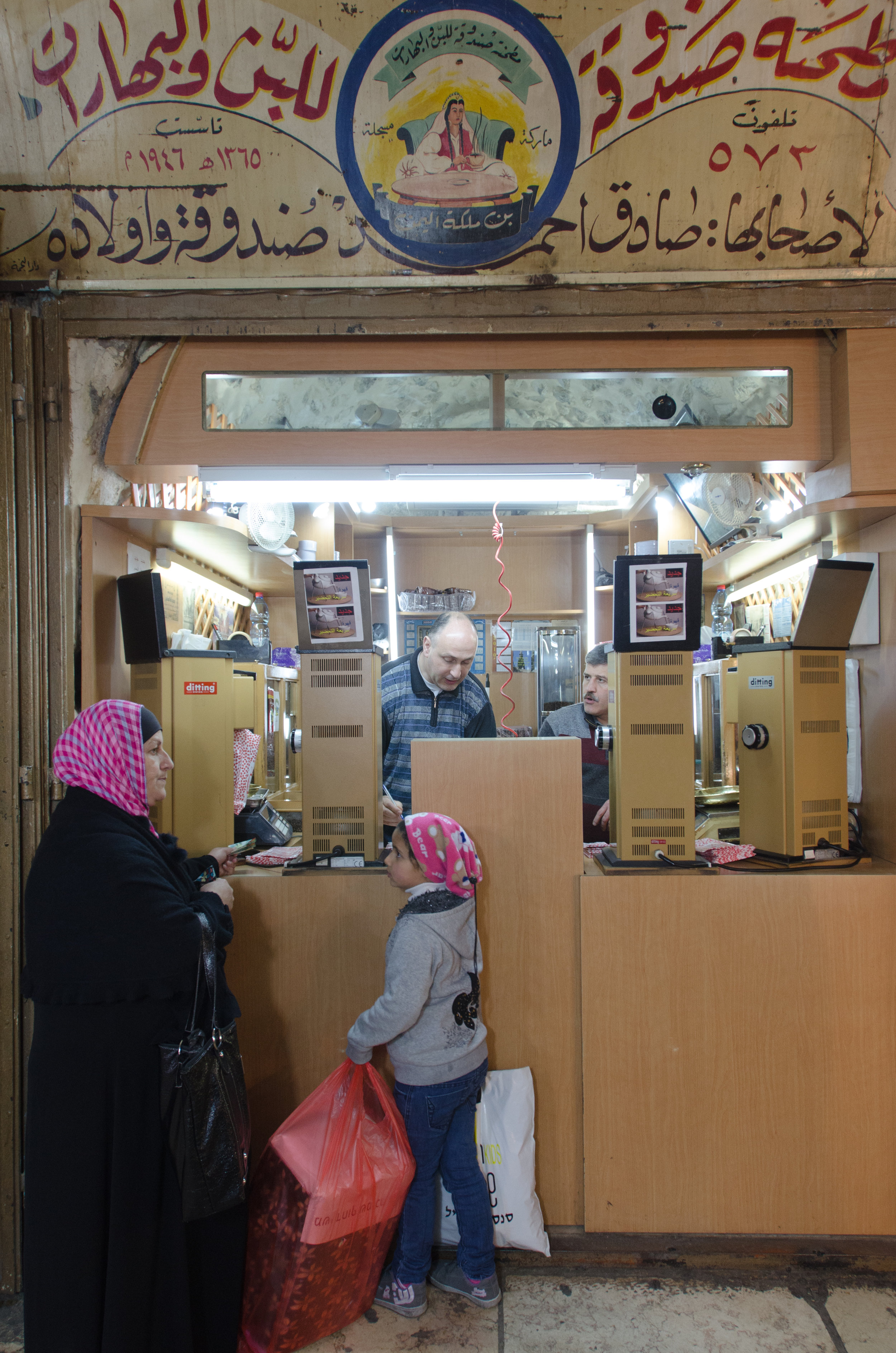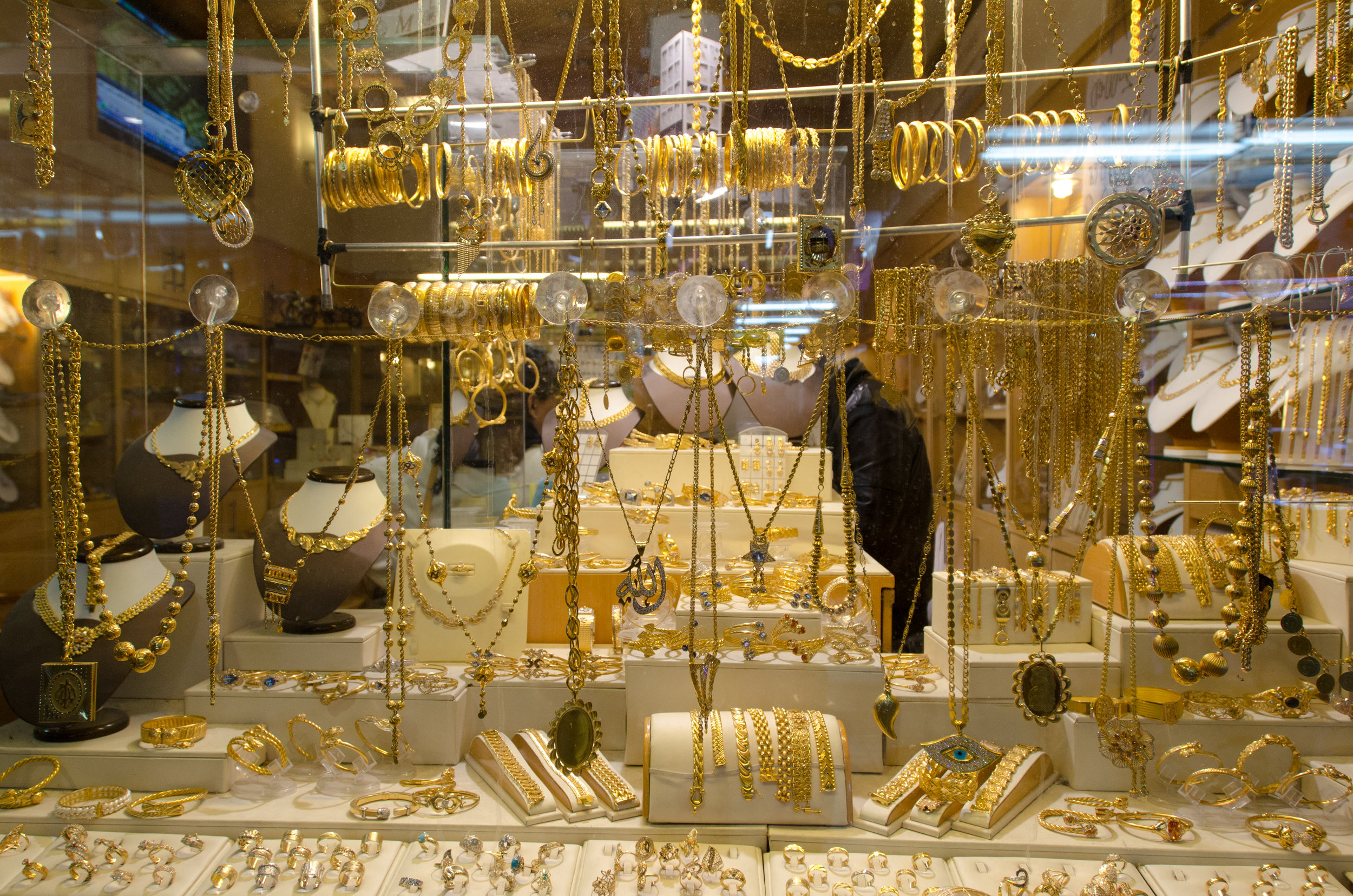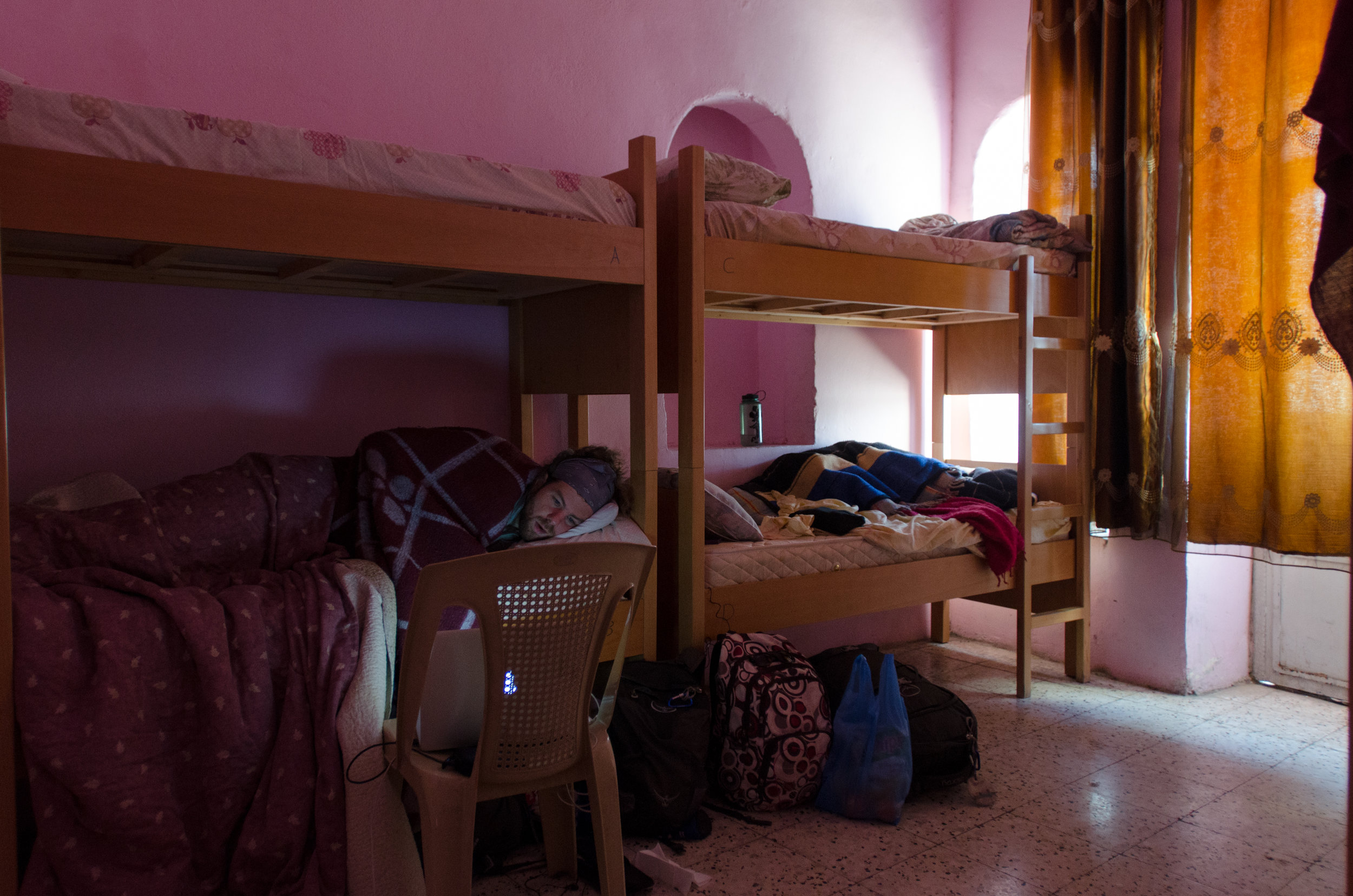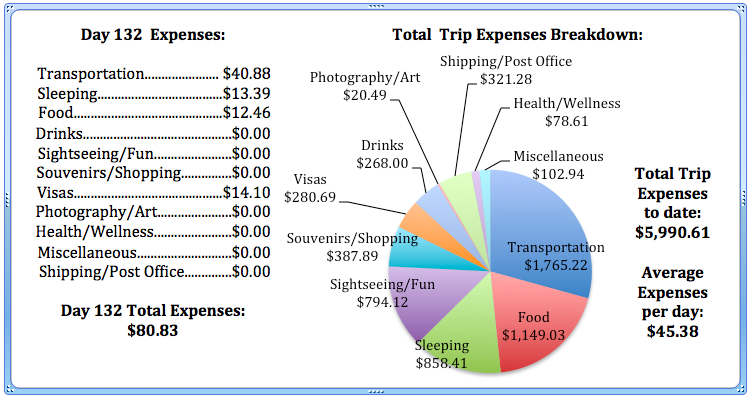Our flight wasn’t until midnight. So we bummed around Tel Aviv, did some laundry, was put to work by Anat, who was trying to wrap up a film project, went back to our favorite coffee shop, and shot lots of street art for today’s video. Because, let’s face it, street art is way more fun than laundry.
All in all, our day was rather uneventful… until we got to the airport. I balked a little bit at Anat’s suggestion to get to the airport three hours ahead of time. When we got there, and had to stand in the security line for questioning, I understood her time estimate.
Before you check in for your flight, before you put your bags through security, before you go through the usual airport security and passport control, you have to stand in a long line to take your turn being individually questioned by Israeli airport security.
“I swear it’s because they don’t want Jews to leave the country” a young American ‘Birthright’ girl told us as she stood in front of us in line. We chuckled and told her of the poor Australian we met entering Israel from Jordan who got held up at immigration because “he looked suspicious, like he was probably smuggling something back into the country…” She sighed. We all waited.
When it was our turn, we handed over our passports and as predicted, Andrew was asked for other forms of identification (his passport is nine years old, and he’s about 100 pounds lighter than he was back then). He handed it over. And then it got interesting:
Security: How do you know each other?
Andrew: She’s my girlfriend.
Security: Where is your home?
Andrew: (laughing) We don’t have one.
(I could have kicked him)
Security: You don’t have a home?
Andrew: No. We’ve been traveling for five months.
Security: And… sorry for the personal question, but how did you two meet?
me: Through a friend in Korea.
Security: Korea?
me: Yes, we were teaching there.
Security: You both were in Korea and that’s where you met?
Andrew: Yes.
Security: How long were you in Korea?
me: five years.
Andrew: eight years.
Security: And how long have you been dating?
me: umm… well, it’s almost March, I guess, so almost three years?
Andrew: Yea, a little over two and a half…
Security: (hesitating) And you’re traveling now?
Andrew: Yes.
Security: You were in Jordan?
me: Yes
Security: Where did you stay?
me: Hmm where did we stay? Oh right, Amman and Petra.
Security: Where did you get your necklace? (with my name in Arabic on it)
me: A friend gave it to me.
Security: Who?
me: My friend Erin…
Security: Where is Erin?
me: Well, she was in Egypt and now she’s in America.
Security: What does your friend do?
me: She was teaching in Egypt.
Security: But now she’s not in Egypt?
me: No, like I said, she’s in America.
Security: (hands back our passports) Ok, Thank you.
“Security” consisted of two girls that were around our age… and they would pause in between questioning trying to think of more things to ask or how they could dissect your answer to trip you up. Andrew and I were amused by the whole thing. This probably didn’t help matters. I actually had a hard time trying to keep a straight face throughout the interrogation. I mean, all they had to do was look in our passports to see the amount of visas from our years in Korea, and look at the stamps since we’ve left. And when she spotted my necklace? It took everything to not respond sarcastically “Erin, Do you know her?”
Bananas.
After our fifteen minutes of questioning, it was somewhat smooth sailing. That is, until the 14 year old sitting behind us on our red-eye to Belgium started kicking our seats. plural. At three in the morning, when you’re trying to fall asleep on a plane and you’re being constantly woken up by the little you-know-what behind you… You resort to the stare down. And then you motion for him to stop, only it doesn’t. And his parents do nothing. And when you land, and passport control flirts with you and then makes the family with the you-know-what 14 year old stand aside… You bite your tongue instead of flailing your arms around on the other side of the glass divider shouting “KARMA!” to the entire family waiting for entrance into the country.
